![]() Mingle together a few dapper penguins, Bart Bonte's creative ingenuity, and a continually elusive key and you'll wind up with Me and the Key 3, a point-and-click puzzle game made to unlock endless smiles, or at least 25 not-altogether-too-easy levels' worth of fun. If you know anything about Bonte, you know he has a way of taking a simple idea and turning it into gratifyingly addictive gameplay. In this case, the simple part is clicking on the key, the tricky part is solving the brainteasers that keep it hidden from view. For that, you need to poke around and experiment with what you see, figuring out how to reveal that coveted gold object. While most the time you'll just click, there are other times keyboard controls are needed. Despite initial appearances, there are quite a few head-scratchers below the surface. So, if at first you balk, "Aw, too simple," just keep going. Moreover, the charm and personality you've come to love in Me and the Key 1 and 2 is just as abundant the third time around, marking the ongoing quest for the key as one that will never grow old.
Mingle together a few dapper penguins, Bart Bonte's creative ingenuity, and a continually elusive key and you'll wind up with Me and the Key 3, a point-and-click puzzle game made to unlock endless smiles, or at least 25 not-altogether-too-easy levels' worth of fun. If you know anything about Bonte, you know he has a way of taking a simple idea and turning it into gratifyingly addictive gameplay. In this case, the simple part is clicking on the key, the tricky part is solving the brainteasers that keep it hidden from view. For that, you need to poke around and experiment with what you see, figuring out how to reveal that coveted gold object. While most the time you'll just click, there are other times keyboard controls are needed. Despite initial appearances, there are quite a few head-scratchers below the surface. So, if at first you balk, "Aw, too simple," just keep going. Moreover, the charm and personality you've come to love in Me and the Key 1 and 2 is just as abundant the third time around, marking the ongoing quest for the key as one that will never grow old.
September 2013 Archives
![]() ProGamix and Komix-Games put an eye-candy twist on a simple avoidance-based arcade game in Touch the Bubbles 4, where all you have to do is use your mouse to guide your cursor around levels exploding bubbles and avoiding hazards. It's essential a Fruit Ninja-like approach to the classic avoidance genre, all tarted up with some flashy visuals that make it feel like the gaming version of watching a lava lamp crossed with a pinball machine. Even with the inclusion of the lives system, which allows you to continue the level from the starting point but keep your level progress for a limited number of times, some players might find it both a bit too simple and easy, but some clever, gorgeous level design and the inclusion of Classic Mode, which removes lives altogether, still makes this an enjoyable coffee-break styled game for fans of bubble-wrap everywhere.
ProGamix and Komix-Games put an eye-candy twist on a simple avoidance-based arcade game in Touch the Bubbles 4, where all you have to do is use your mouse to guide your cursor around levels exploding bubbles and avoiding hazards. It's essential a Fruit Ninja-like approach to the classic avoidance genre, all tarted up with some flashy visuals that make it feel like the gaming version of watching a lava lamp crossed with a pinball machine. Even with the inclusion of the lives system, which allows you to continue the level from the starting point but keep your level progress for a limited number of times, some players might find it both a bit too simple and easy, but some clever, gorgeous level design and the inclusion of Classic Mode, which removes lives altogether, still makes this an enjoyable coffee-break styled game for fans of bubble-wrap everywhere.
![]() And out of the woodworks comes surprise updates! Just when you thought a few games were entering retirement, fantastic new content is added, forcing you to be all "Oh, guess I'll download it again!".
And out of the woodworks comes surprise updates! Just when you thought a few games were entering retirement, fantastic new content is added, forcing you to be all "Oh, guess I'll download it again!".
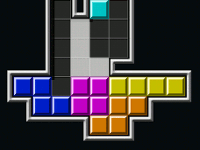 Simple puzzle game Neon Snap - Got an itch to shove some blocks into a confined space? Neon Snap is a straightforward puzzle game that hands you sets of tetrominos and challenges you to fit them in a grid, tangram style. Plenty of levels, several difficulty options, and versions for Android, iOS, Kindle and Samsung devices as well as a free PC download!
Simple puzzle game Neon Snap - Got an itch to shove some blocks into a confined space? Neon Snap is a straightforward puzzle game that hands you sets of tetrominos and challenges you to fit them in a grid, tangram style. Plenty of levels, several difficulty options, and versions for Android, iOS, Kindle and Samsung devices as well as a free PC download!
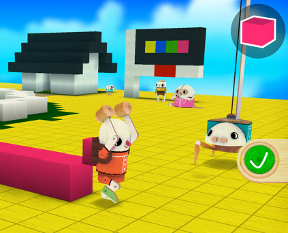 Toca builds on Android - One of the more imaginative building/creativity games on the mobile market, Toca Boca's Toca Builders has crossed from iOS territory into Androidville. Instead of giving you boring drawing tools or other cold, removed contraptions, this adorable game hands you half a dozen robots who each have different abilities. By driving them around, switching between them and using their skills to place and remove blocks, you can construct just about anything you can dream up!
Toca builds on Android - One of the more imaginative building/creativity games on the mobile market, Toca Boca's Toca Builders has crossed from iOS territory into Androidville. Instead of giving you boring drawing tools or other cold, removed contraptions, this adorable game hands you half a dozen robots who each have different abilities. By driving them around, switching between them and using their skills to place and remove blocks, you can construct just about anything you can dream up!
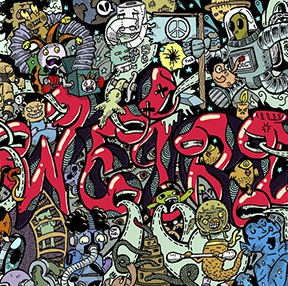 A little less hidden - A big update for the creative object hunting game Hidden Doodles, along with the alluring price of "free"! A hidden object game without all the story or adventure elements, Hidden Doodles drops you into level after level of crowded scenes filled with some amazingly creative drawings. Across 225 missions and several game modes, you'll sift through some strange art as you hunt for what you need in a sea of artwork and oddities!
A little less hidden - A big update for the creative object hunting game Hidden Doodles, along with the alluring price of "free"! A hidden object game without all the story or adventure elements, Hidden Doodles drops you into level after level of crowded scenes filled with some amazingly creative drawings. Across 225 missions and several game modes, you'll sift through some strange art as you hunt for what you need in a sea of artwork and oddities!
![]() From the combined talents of Irene Antushevich, Alexey Mamadin, Pavel Fedosov, and Nikolay Grechko comes Alice in Clumsy Land, a gorgeous fairytale of a physics puzzler based on the classic children's story of girls almost getting beheaded by megalomaniacal matriarchs. In each stage, the object is to deliver the an important object to each area's Wonderland citizen by clicking pieces of scenery to remove them. The watch will follow the natural path that physics and gravity dictate, and it's up to you to use other objects, like bouncy cushions, to get it into the character's hands. Each stage also has three optional stars to collect that may take a bit of extra thought and planning to nab. Some stages are also larger than others, and you'll have to click and drag to pan around the level.
From the combined talents of Irene Antushevich, Alexey Mamadin, Pavel Fedosov, and Nikolay Grechko comes Alice in Clumsy Land, a gorgeous fairytale of a physics puzzler based on the classic children's story of girls almost getting beheaded by megalomaniacal matriarchs. In each stage, the object is to deliver the an important object to each area's Wonderland citizen by clicking pieces of scenery to remove them. The watch will follow the natural path that physics and gravity dictate, and it's up to you to use other objects, like bouncy cushions, to get it into the character's hands. Each stage also has three optional stars to collect that may take a bit of extra thought and planning to nab. Some stages are also larger than others, and you'll have to click and drag to pan around the level.
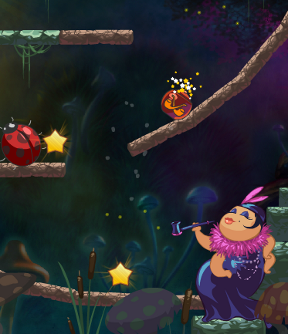 Obviously, looks don't count for everything, but dang Alice, you fine. With beautiful illustrated cutscenes and vibrant level design, Alice in Clumsy Land is a gorgeous little physics puzzle with a whole lot of charm. The gameplay itself is really nothing we haven't seen before, mainly being a variation on titles like Monsterland, Cut the Rope and more, but there's a lot to be said for executing a concept well, and Alice in Clumsy Land definitely does that. It introduces new elements as you go, even new areas and characters to work with, and the physics are both reliable and constant. The game is great at providing "false herrings" in its level setup, frequently giving you multiple objects to remove and manipulate when you really only need a fraction of them for success.
Obviously, looks don't count for everything, but dang Alice, you fine. With beautiful illustrated cutscenes and vibrant level design, Alice in Clumsy Land is a gorgeous little physics puzzle with a whole lot of charm. The gameplay itself is really nothing we haven't seen before, mainly being a variation on titles like Monsterland, Cut the Rope and more, but there's a lot to be said for executing a concept well, and Alice in Clumsy Land definitely does that. It introduces new elements as you go, even new areas and characters to work with, and the physics are both reliable and constant. The game is great at providing "false herrings" in its level setup, frequently giving you multiple objects to remove and manipulate when you really only need a fraction of them for success.
On the other hand, some players may find the challenge ramps up a bit too slowly to maintain interest, and not having every level fit on once screen, as some force you to drag the screen around to see everything, is a little frustrating. I'd rather take a slight downgrade in visuals on those larger, more complex stages to shrink everything to fit. The inclusion of certain objects that force you to act quickly, such as the gas bubbles that explode after a certain amount of time, also feel like they disrupt the relaxing "pick and plan" feel of the rest of the game, which might frustrate people looking for a more relaxed experience. But with an enormous amount of levels, characters, some genuinely challenging and clever level design, and a pretty face to boot, Alice in Clumsy Land is easily one of the better physics puzzles out there and will keep you busy for a long time.
![]() ChrisJeff's deliberately heinously challenging arcade game series is the sort of thing that should be hard to sell to people. "Hey, play this game! It'll make you want to hurl your computer into the fires of Mount Doom! It's super fun!" And yet we keep coming back for more, and so for those of us with finely tuned reflexes, the arrival of Space is Key Hell is good news indeed. The premise? Just hit the [spacebar] at the right moment to make your constantly moving square leap over any obstacles. Hit anything and explode into a shower of pixels, booting you back to the start of the tier (each level has three) you're trying to tackle.
ChrisJeff's deliberately heinously challenging arcade game series is the sort of thing that should be hard to sell to people. "Hey, play this game! It'll make you want to hurl your computer into the fires of Mount Doom! It's super fun!" And yet we keep coming back for more, and so for those of us with finely tuned reflexes, the arrival of Space is Key Hell is good news indeed. The premise? Just hit the [spacebar] at the right moment to make your constantly moving square leap over any obstacles. Hit anything and explode into a shower of pixels, booting you back to the start of the tier (each level has three) you're trying to tackle.
As you might surmise from the title, ChrisJeff has taken an already almost maliciously difficult game and ramped it up to something that has even stricter pixel-perfect requirements for success. It's only fifteen levels long (or 45 if you consider each individual tier its own level), but for most people this is not going to be something they fly through... especially once a new wrinkle is introduced. Even that new mechanic doesn't really change the formula, however, and it's hard to objectively judge whether this really is more difficult than the others, though the difficulty does spike much more quickly. Still as ever a game for the truly patient and determined, Space is Key Hell won't be for everyone, but is still as compulsively playable and sleekly designed as fans could ever wish. (Doesn't the text in that title banner make you think the game is being narrated by Austin Powers?)
![]() Welcome to the beginning of our coverage on interesting indie funding projects (Kickstarter, IndieGoGo), Steam Greenlight games, and news and previews!
Welcome to the beginning of our coverage on interesting indie funding projects (Kickstarter, IndieGoGo), Steam Greenlight games, and news and previews!
Platform: Windows
DRM: None
Developer: Ivan Zanotti
Genre: Horror Adventure
Planned Release: Unknown
Funding Asked: $500.00USD
Funding Ends: November 9th 2013
Ivan Zanotti's freeware indie horror game Imscared - A Pixelated Nightmare was a huge hit when it released last year. It's hard to really say why without completely ruining it, but it managed to be downright harrowing despite its simplistic visuals and presented a highly unique (and often unsettling) twist on the concept of a haunting. If you haven't played it, you really should, and if you have, then the IndieGoGo campaign for the Oculus Rift compatible re-release of Imscared, including all-new content and the ability to be played by those of us without Oculus Rift, should get you really excited.
The $500.00USD funding will cover both the Oculus Rift development kit and the addition of all new levels that will "lengthen the game and make it more unique". I'm not sure how you could make a game like this more unique, as it's already spawned its share of imitators of its clever approach to horror. There's even a possibility of seeing a Mac port! Right now, the information on the official IndieGoGo page is actually a little bit vague, and it's unclear as to whether this will be another freeware title, and you won't get much besides the creeps out of the little 19 second video. But the promise of new content for one of indie gaming's freakiest darlings is pretty tempting, so head on over to learn more... or play the original free version!
JayisGames.com IndieGoGo picks are selected based only on personal evaluation and perceived overall quality of the project. We assume no responsibility for failed projects or developer's inability to deliver. Donate with care! Contact dora AT jayisgames DOT com with INDIEGOGO in the subject line if you find a project you think we should know about!
![]() We've really flipped our lids this week. One game to make you go insane, one to make you do math, and one you might have played instead of doing math. If you play them in the right order, maybe you'll go Super Saiyan?
We've really flipped our lids this week. One game to make you go insane, one to make you do math, and one you might have played instead of doing math. If you play them in the right order, maybe you'll go Super Saiyan?
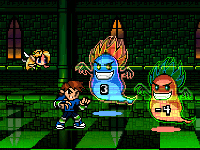 La Torre de Nozar (Windows, free) - More games need to use basic math as their central mechanic. La Torre de Nozar is a 2.5D beat-em-up that pits you against a bunch of ghosts. Instead of just punching your way out of things, though, you use math. Tapping the A, S and D keys allows you to add, subtract and divide, launching a short range attack that can hit ghosts and affect the sum written on their bellies. The goal is to make that number reach zero, all while gathering the diamonds that spew once a ghost is defeated. Give it a try, you'll be hooked immediately.
La Torre de Nozar (Windows, free) - More games need to use basic math as their central mechanic. La Torre de Nozar is a 2.5D beat-em-up that pits you against a bunch of ghosts. Instead of just punching your way out of things, though, you use math. Tapping the A, S and D keys allows you to add, subtract and divide, launching a short range attack that can hit ghosts and affect the sum written on their bellies. The goal is to make that number reach zero, all while gathering the diamonds that spew once a ghost is defeated. Give it a try, you'll be hooked immediately.
 Symbol (Win/Mac/Linux, free) - Your dose of insanity this week comes via Cicada Marionette, author of the equally bizarre Crypt Worlds. Symbol is the sort of game you don't want to talk about because you'll spoil something awesome. It takes place on a, um, world. It's pretty bleak and gray here, but there are a few buildings around, along with vast expanses of near-nothingness. Then there are a couple of items you can pick up, but are you supposed to? What's that vaguely human shape on the horizon? Why is that orb getting bigger? If you're up for feeling like you drank one too many tablespoons of cough syrup, Symbol is your thing.
Symbol (Win/Mac/Linux, free) - Your dose of insanity this week comes via Cicada Marionette, author of the equally bizarre Crypt Worlds. Symbol is the sort of game you don't want to talk about because you'll spoil something awesome. It takes place on a, um, world. It's pretty bleak and gray here, but there are a few buildings around, along with vast expanses of near-nothingness. Then there are a couple of items you can pick up, but are you supposed to? What's that vaguely human shape on the horizon? Why is that orb getting bigger? If you're up for feeling like you drank one too many tablespoons of cough syrup, Symbol is your thing.
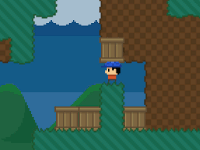 Block Dude X (Win/Mac, free) - On the lighter side of things, Block Dude X exists purely to tickle your nostalgia. Back in 2001, a sidescrolling puzzle game was released for TI-83 and TI-84 graphing calculators called Block Dude. Ten years later, an unofficial remake with new levels, new features, but the same dude with the same blocks. The original levels are included in this release, along with an optional art style that will remind you of those long days spent in math class. Go on, indulge yourself.
Block Dude X (Win/Mac, free) - On the lighter side of things, Block Dude X exists purely to tickle your nostalgia. Back in 2001, a sidescrolling puzzle game was released for TI-83 and TI-84 graphing calculators called Block Dude. Ten years later, an unofficial remake with new levels, new features, but the same dude with the same blocks. The original levels are included in this release, along with an optional art style that will remind you of those long days spent in math class. Go on, indulge yourself.
![]() A chieftain does what they have to do to take care of their people. They kill sabertooth tigers to protect them, they cross vast deserts in search of a more promising land and, yes, they'll even play match-3/strategy mobile hybrid games, just as you do in BonusXP's Cavemania. Lead your people through 75 levels toward victory where times will be peaceful and resources plentiful. And that's a whole lot better than killing a vicious Dilophosaur for your next meal.
A chieftain does what they have to do to take care of their people. They kill sabertooth tigers to protect them, they cross vast deserts in search of a more promising land and, yes, they'll even play match-3/strategy mobile hybrid games, just as you do in BonusXP's Cavemania. Lead your people through 75 levels toward victory where times will be peaceful and resources plentiful. And that's a whole lot better than killing a vicious Dilophosaur for your next meal.
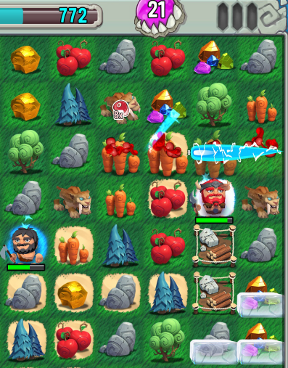 The game mechanics are intuitive: drag any non-building tile with another to swap their positions and create three or more in a row. Whatever kind of object was matched is added to your resources, which can then be used to construct buildings or add other tribe members to the board to aid you in your goals. And this is where the strategy portion of the game comes into play. All tribe members, including the chief, as well as the buildings and enemies, take up valuable space on the board. This can sometimes block you from making a match you may so desperately need.
The game mechanics are intuitive: drag any non-building tile with another to swap their positions and create three or more in a row. Whatever kind of object was matched is added to your resources, which can then be used to construct buildings or add other tribe members to the board to aid you in your goals. And this is where the strategy portion of the game comes into play. All tribe members, including the chief, as well as the buildings and enemies, take up valuable space on the board. This can sometimes block you from making a match you may so desperately need.
What Cavemania does well in its design is force you to look carefully at your goals and how your board is setup, a good quality in a turn-based strategy game. Of course, the random nature of the match-3 board can create a situation where no amount of planning will give you a victory, but with a three star reward system, you'll likely be replaying levels anyway. Cavemania is a free mobile app with non-intrusive in-app purchases that's sure to give you several afternoons of prehistoric fun.
NOTE: This game was played and reviewed on the Droid Razr. Game was available in the North American market at the time of publication, but may not be available in other territories. Please see individual app market pages for purchasing info.
![]() Epic Llama's turn-based strategy RPG Champions of Chaos 2 casts you as a pair of unlikely heroes out to join the rebel army and improve its reputation enough that neighbouring kingdoms pledge to your cause. Right after you raise these battle llamas. And upgrade your cheerleaders. And do the robot. With a heavy focus on grinding and strategy, Champions of Chaos 2 is a simple yet surprisingly engaging RPG with a lot to offer. Note that only two character classes are available for free. You must like the game on Facebook and approve it on Greenlight (or at least tell the game you did) to unlock two others, while the other five are only available if you purchase the premium edition.
Epic Llama's turn-based strategy RPG Champions of Chaos 2 casts you as a pair of unlikely heroes out to join the rebel army and improve its reputation enough that neighbouring kingdoms pledge to your cause. Right after you raise these battle llamas. And upgrade your cheerleaders. And do the robot. With a heavy focus on grinding and strategy, Champions of Chaos 2 is a simple yet surprisingly engaging RPG with a lot to offer. Note that only two character classes are available for free. You must like the game on Facebook and approve it on Greenlight (or at least tell the game you did) to unlock two others, while the other five are only available if you purchase the premium edition.
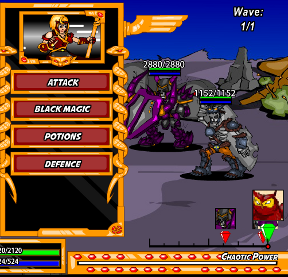 In each kingdom, you'll have to battle your way through a series of tough bouts to prove your worth to the area's ruler. Gameplay is relatively simple. Battles are turn-based, and when your character's turn comes up, you select the action you want them to execute from the menu that appears, and then click on whoever you want to perform said action on... whether it's a beneficial act on a party member or an explosion in a deserving enemy's face. Hit points and magic points are familiar, but you also have a Chaos bar that fills with every action, and will allow you to summon your character class' Totemic Beast when full. As your party gets stronger, you'll level up and learn new abilities, but that's not all. You can buy a combat llama to participate in Llamadrome battles to earn extra cash or special items, grind levels to get stronger to take on the city's heroes to build your reputation, and if you don't mind one-sided cheesecake, you can buy a pair of (increasingly) skimpy cheerleaders who confer various bonuses on you during battle. I dunno. I'm pretty sure the llama would have done a good job with the pom-pom and looked just as good in a shrinking bikini top too.
In each kingdom, you'll have to battle your way through a series of tough bouts to prove your worth to the area's ruler. Gameplay is relatively simple. Battles are turn-based, and when your character's turn comes up, you select the action you want them to execute from the menu that appears, and then click on whoever you want to perform said action on... whether it's a beneficial act on a party member or an explosion in a deserving enemy's face. Hit points and magic points are familiar, but you also have a Chaos bar that fills with every action, and will allow you to summon your character class' Totemic Beast when full. As your party gets stronger, you'll level up and learn new abilities, but that's not all. You can buy a combat llama to participate in Llamadrome battles to earn extra cash or special items, grind levels to get stronger to take on the city's heroes to build your reputation, and if you don't mind one-sided cheesecake, you can buy a pair of (increasingly) skimpy cheerleaders who confer various bonuses on you during battle. I dunno. I'm pretty sure the llama would have done a good job with the pom-pom and looked just as good in a shrinking bikini top too.
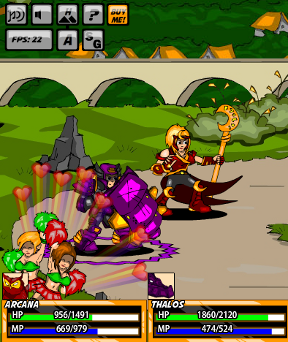 Analysis: In a weird way, Champions of Chaos 2 sort of reminds me a bit of the very first Final Fantasy, though sadly lacking in guys named Garland ready to knock you down. How difficult the game is largely comes down to the character classes you choose at the start of the game, and each of the available characters has a satisfying roster of unique skills and abilities that means changing your play style depending on who you have. Mages might have powerful magic abilities, for instance, but are weak enough physically that a party composed solely of them might have difficulties, while the Paladin can dish out melee damage but is primarily a support class that can protect and enhance the party in various ways. Of course, that's not to say there won't be a lot of grinding involved... because there will be a lot of it. But with two different possible endings for each character depending on your decisions and a lot of potential strategic combinations, you'll find a lot to sink your teeth into as well.
Analysis: In a weird way, Champions of Chaos 2 sort of reminds me a bit of the very first Final Fantasy, though sadly lacking in guys named Garland ready to knock you down. How difficult the game is largely comes down to the character classes you choose at the start of the game, and each of the available characters has a satisfying roster of unique skills and abilities that means changing your play style depending on who you have. Mages might have powerful magic abilities, for instance, but are weak enough physically that a party composed solely of them might have difficulties, while the Paladin can dish out melee damage but is primarily a support class that can protect and enhance the party in various ways. Of course, that's not to say there won't be a lot of grinding involved... because there will be a lot of it. But with two different possible endings for each character depending on your decisions and a lot of potential strategic combinations, you'll find a lot to sink your teeth into as well.
It can feel like the game is nagging you a bit, with so many characters locked unless you promote or pay. It's not that the game has premium content, it's that it has both premium content and requires you to like them on Facebook/approve on Steam Greenlight for the rest, which seems overboard. One or the other, Champions of Chaos 2. One or the other. Still, there's a lot of gameplay to be had in this free version, and that's nothing to sneeze at. Each of the five kingdoms has their own set of challenges, from party battles to the Llamadrome, and even unique heroes to fight in the tavern. The premium version, in addition to unlocking five more characters with unique attacks, strengths, and weaknesses, also offers what is essentially a "New Game +" mode, allowing you to play through again with your previous party against more powerful enemies and bosses with new attacks.
Champions of Chaos 2's emphasis on combat and the relatively straight-forward repetition of battles isn't a bad thing for players who like streamlined turn-based gaming, but it does mean you'll figure out pretty quickly whether or not it's your thing. It's clearly a labour of love, and the effort gone into everything from the presentation to the simple yet addictive and quirky gameplay is remarkable. If you're a fan of turn-based RPG style combat, llamas, big spells and bigger damage, then this is one snappy little arena fighter that's well worth a round or two. Be sure to vote for it on Steam Greenlight if you'd like to see it for sale through the service.
![]() From developer Thomas Bowker comes minimal puzzle game LYNE. Starting at one of the outlined start points, click and drag a path connecting shapes of the same color. You can't cross your path, or go over the same path twice. There are spaces that need to be hit multiple times, and these can be crossed by the same color as long as you enter and exit by different routes. If you need to backtrack, you can drag backwards along your path, or click a starting point to erase all of the lines of that color.
From developer Thomas Bowker comes minimal puzzle game LYNE. Starting at one of the outlined start points, click and drag a path connecting shapes of the same color. You can't cross your path, or go over the same path twice. There are spaces that need to be hit multiple times, and these can be crossed by the same color as long as you enter and exit by different routes. If you need to backtrack, you can drag backwards along your path, or click a starting point to erase all of the lines of that color.
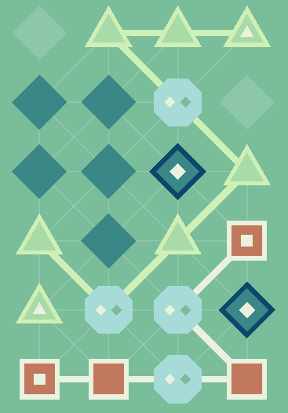 From the get go, LYNE exudes a very zen feel. The ambiance is calming, the layout simple and clean. Just the atmosphere you need to solve the tricky puzzles ahead. LYNE's biggest drawback is its confusing menu. The first two stages have a tutorial and a set number of levels to complete. The last three rounds are randomly generated puzzles sorted by difficulty that go on forever. You have to reload the game if you want to start again on a different difficulty level. Though it starts out simple, LYNE will have you thinking deeply in no time. The zen feeling of the game carries over into the scoring system, which in this case means there is none. If you're the type of gamer who prefers the challenge of getting a high score, LYNE might not be for you. But if you're in it for the challenge to your brain, dim the lights, find a quiet place, and get to solving.
From the get go, LYNE exudes a very zen feel. The ambiance is calming, the layout simple and clean. Just the atmosphere you need to solve the tricky puzzles ahead. LYNE's biggest drawback is its confusing menu. The first two stages have a tutorial and a set number of levels to complete. The last three rounds are randomly generated puzzles sorted by difficulty that go on forever. You have to reload the game if you want to start again on a different difficulty level. Though it starts out simple, LYNE will have you thinking deeply in no time. The zen feeling of the game carries over into the scoring system, which in this case means there is none. If you're the type of gamer who prefers the challenge of getting a high score, LYNE might not be for you. But if you're in it for the challenge to your brain, dim the lights, find a quiet place, and get to solving.
![]() Windows:
Windows:
Get the full version
![]() Mac OS X:
Mac OS X:
Get the full version
![]() Linux:
Linux:
Get the full version
![]() Have we got an oddball assortment for you this week, my dear less-than-three'd readers. Physics puzzles meets classic arcade action. A magical puzzle platformer where the snap of your fingers can change your surroundings. The story of two young people caught up in bad relationships and a perplexing gold-based economy. And who wouldn't want a magical bullet-barfing flying sea turtle?
Have we got an oddball assortment for you this week, my dear less-than-three'd readers. Physics puzzles meets classic arcade action. A magical puzzle platformer where the snap of your fingers can change your surroundings. The story of two young people caught up in bad relationships and a perplexing gold-based economy. And who wouldn't want a magical bullet-barfing flying sea turtle?
 Love in the Dumpster - AnotherKind took first place in the Jennifer Ann Group's Teen Dating Violence game design contest with this strange but interesting adventure game, and though the gameplay is a bit... strange... the message is clear. It deals with two young people, both in emotionally and mentally abusive relationships and unable to recognise it. It's not a cheerful topic, and some odd gameplay designs and stilted dialogue make this one a bit too clunky, but Love in a Dumpster's aim is to educate, and for some its story of two people unable to see the forest for the trees in a relationship where heartache doesn't come from fists will still resonate.
Love in the Dumpster - AnotherKind took first place in the Jennifer Ann Group's Teen Dating Violence game design contest with this strange but interesting adventure game, and though the gameplay is a bit... strange... the message is clear. It deals with two young people, both in emotionally and mentally abusive relationships and unable to recognise it. It's not a cheerful topic, and some odd gameplay designs and stilted dialogue make this one a bit too clunky, but Love in a Dumpster's aim is to educate, and for some its story of two people unable to see the forest for the trees in a relationship where heartache doesn't come from fists will still resonate. LittleBigMansion - It's just a prototype, but Krisjet Game Design's puzzle platformer about a magician who can swap the size of two objects with a snap of his fingers is so clever it's still more than worth playing. Click on two different objects to cause them to exchange sizes... meaning, you can click on a smaller object in the room and then on a large obstacle to shrink the obstacle and make the other object grow. The movement and jumping feels a bit finicky and sleepy, but it makes use of its concept in such neat ways you'll be crossing your fingers for a full game like us.
LittleBigMansion - It's just a prototype, but Krisjet Game Design's puzzle platformer about a magician who can swap the size of two objects with a snap of his fingers is so clever it's still more than worth playing. Click on two different objects to cause them to exchange sizes... meaning, you can click on a smaller object in the room and then on a large obstacle to shrink the obstacle and make the other object grow. The movement and jumping feels a bit finicky and sleepy, but it makes use of its concept in such neat ways you'll be crossing your fingers for a full game like us. Wild King - La Ventanita provides this clever twist on a classic scrolling arcade shooter. The twist isn't the magic flying turtle, or the snail with the revolver. It's that all projectiles, your bullets included, ricochet, and you need to use this to reach obstacles and enemies in places and directions you can't manually aim. It's on the slow side, but a great style and oddball premise make this one worth checking out.
Wild King - La Ventanita provides this clever twist on a classic scrolling arcade shooter. The twist isn't the magic flying turtle, or the snail with the revolver. It's that all projectiles, your bullets included, ricochet, and you need to use this to reach obstacles and enemies in places and directions you can't manually aim. It's on the slow side, but a great style and oddball premise make this one worth checking out. Puzzle Rescue Prime - YZIGames's Tetris-like physics puzzler looks sort of familiar, but it's still fun. Trace paths between three or more of the continuously falling shapes to remove them from the screen, using the cash that nets you to buy power-ups to help if you get into a sticky situation. The physics occasionally feel like they're getting in your way instead of just adding to the challenge, with some objects landing in such a way that an extra pixel's width means you can't connect them to their neighbours. But with an old school design and some toe-tappin' retro music, it's a fun little arcade treat to pass the time.
Puzzle Rescue Prime - YZIGames's Tetris-like physics puzzler looks sort of familiar, but it's still fun. Trace paths between three or more of the continuously falling shapes to remove them from the screen, using the cash that nets you to buy power-ups to help if you get into a sticky situation. The physics occasionally feel like they're getting in your way instead of just adding to the challenge, with some objects landing in such a way that an extra pixel's width means you can't connect them to their neighbours. But with an old school design and some toe-tappin' retro music, it's a fun little arcade treat to pass the time.
![]() Michael Lutz's piece of Twine-crafted interactive fiction horror piece My Father's Long, Long Legs (hosted here with generous permission) might just be one of the finest, most cleverly executed pieces of freaky fiction I've ever read. Best enjoyed with the lights out and the sound up (and headphones on, if you're rockin' 'em), it tells the story of a girl whose father one day suddenly comes home from work and begins digging a hole in the dirt-floored basement of their house. Day after day he spends every free moment down there, coming up only to eat, use the bathroom, and work... and once his factory closes, he stops coming up at all. But maybe that's for the best, since as the years drag by, he begins to resemble less and less the man she once knew... and something less than human. Just click the bolded text to choose how you want to advance through the story. Note that in some cases, the game may appear to stop without giving you a choice, but this is just for effect... just wait a moment for the next bit of text to appear.
Michael Lutz's piece of Twine-crafted interactive fiction horror piece My Father's Long, Long Legs (hosted here with generous permission) might just be one of the finest, most cleverly executed pieces of freaky fiction I've ever read. Best enjoyed with the lights out and the sound up (and headphones on, if you're rockin' 'em), it tells the story of a girl whose father one day suddenly comes home from work and begins digging a hole in the dirt-floored basement of their house. Day after day he spends every free moment down there, coming up only to eat, use the bathroom, and work... and once his factory closes, he stops coming up at all. But maybe that's for the best, since as the years drag by, he begins to resemble less and less the man she once knew... and something less than human. Just click the bolded text to choose how you want to advance through the story. Note that in some cases, the game may appear to stop without giving you a choice, but this is just for effect... just wait a moment for the next bit of text to appear.
This is the sort of thing that typically starts internet slap-fights over what is and isn't a game (yawn), so as much as I loved it, it was initially bound for Link Dump Friday. Then I remembered it's my job to bring you guys interesting, clever, fun things. Then I also remembered I get to do whatever I want, and once I had gone mad with power and refused everyone access to the water cooler and ordered John Bardinelli to work under his desk, I got to work on this. Because through the use of some genuinely brilliant tricks with lighting and sound, Michael Lutz has crafted one of the most elegantly creepy experiences on the internet. The end sequence, the game's only "puzzle", is tense and nightmarish. It's well written, intensely atmospheric, even claustrophobic at times, and frightening without ever resorting to cheap scares and gore. It has the feel of the sort of horror story best read in the midnight hours during wintertime, and while some players won't like the relative ambiguity of the ending, the wonderful way it's executed makes this a chilling, bite-sized example of unknowable horror. Hopefully we see a lot more from Lutz in the future.
![]() Undead Labs' State of Decay blends zombie apocalypse action adventuring with a survival simulation and RPG elements. As the game begins, you and your pal Ed have just returned from a two week long fishing trip, only to discover that apparently that's just enough time for the world as you know it to end. When the opportunity to join a small struggling group of survivors presents itself, it's the only option you have to stay alive... but how long can you last, and is help even coming? In this atmospheric story-driven post-apocalyptic game, you'll gather unique survivors, train your abilities, scavenge for supplies, and fortify your stronghold against zombies and even other survivors. But be careful... supplies are scarce and finite, and if the morale of your group begins to turn against you, there's no guarantee you'll make it to see rescue. Please note that this game is currently only supported with a wired XBox 360 or other compatible third party controller. Mouse and keyboard support is coming... though I was able to use it to play the game as of this writing with some patience and experimentation.
Undead Labs' State of Decay blends zombie apocalypse action adventuring with a survival simulation and RPG elements. As the game begins, you and your pal Ed have just returned from a two week long fishing trip, only to discover that apparently that's just enough time for the world as you know it to end. When the opportunity to join a small struggling group of survivors presents itself, it's the only option you have to stay alive... but how long can you last, and is help even coming? In this atmospheric story-driven post-apocalyptic game, you'll gather unique survivors, train your abilities, scavenge for supplies, and fortify your stronghold against zombies and even other survivors. But be careful... supplies are scarce and finite, and if the morale of your group begins to turn against you, there's no guarantee you'll make it to see rescue. Please note that this game is currently only supported with a wired XBox 360 or other compatible third party controller. Mouse and keyboard support is coming... though I was able to use it to play the game as of this writing with some patience and experimentation.
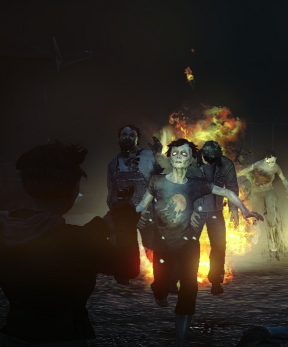 A lot about State of Decay will seem pretty standard initially. You've got a health bar, which naturally decreases with damage, and a stamina bar, which decreases with attacks and running and slowly regenerates over time. Perhaps more important, however, are your character's traits and skills. A character with the Powerhouse trait, for instance, is much stronger physically than another, while someone who is Eagle-Eyed is better with ranged weapons. Skills like Cardio and Melee become more efficient and useful the more you use them and level up. Though initially you can only play as Marcus, as you explore and complete missions, you'll unlock new characters with distinct personalities and abilities you can swap between. In some cases, you'll need to change characters, since certain story-related missions are best handled by a specific person.
A lot about State of Decay will seem pretty standard initially. You've got a health bar, which naturally decreases with damage, and a stamina bar, which decreases with attacks and running and slowly regenerates over time. Perhaps more important, however, are your character's traits and skills. A character with the Powerhouse trait, for instance, is much stronger physically than another, while someone who is Eagle-Eyed is better with ranged weapons. Skills like Cardio and Melee become more efficient and useful the more you use them and level up. Though initially you can only play as Marcus, as you explore and complete missions, you'll unlock new characters with distinct personalities and abilities you can swap between. In some cases, you'll need to change characters, since certain story-related missions are best handled by a specific person.
These people, and other survivors you'll gather, are the core of your community, but unlike most simulations you can't just order them around as you see fit. Influence is treated as currency in the game, and while actions such as ordering a new facility built or establishing a new outpost, and even taking things from the community storage, costs you a certain amount of Influence, you can gain it back by successfully completing missions, returning with supplies (food, medicine, fuel, etc), and more. If you have enough Influence, you can even convince other characters to come and explore with you. You'll need to grow and expand your community if you want to survive long term... building gardens, infirmaries, repair shops and more take people and supplies, and are essential to your well being. Especially since supplies are finite... you won't find items magically restocked or destroyed cars respawned, so think carefully what you use and how you use it.
Just make sure to keep morale high, and remember that even when you stop playing the game is still going. State of Decay is a persistent world, and time will pass in it and the world will evolve even when you're not playing. Ignore the game for a few days when your community had a single sick person and you could come back to find a full-blown epidemic with zombies beating down your barricades. Make sure everything is supplied and safe, however, and you could find more things repaired and improved when you return. Note that the longer you are away from the game, the more this progression slows, so you don't have to worry about checking in every single day if you don't feel like it.
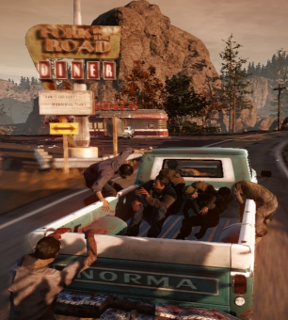 Zombies, naturally, are a big part of the game. In small groups, they're not too dangerous, and as long as you destroy the head they won't be getting back up. Large hordes are far more deadly, and you don't want one beating down the gates of your compound or on your tail while you're fleeing on foot carrying a heavy bag of supplies. Though in general they're attracted to noise and sight, which means breaking windows or driving a car around can be a bad idea if you're trying to stay low, the day and night cycles can have a big impact on how well they see. Nighttime, for instance, can be a pain for you to find your way around in the dark, but can allow you to sneak past zombies more easily... provided your flashlight doesn't attract them. Figuring out how to distract them or even just ditch them as you climb over fences and duck into the underbrush is essential... though when it comes to cleaning out infestations and dealing with what lurks inside, you won't have much choice but to get your hands dirty.
Zombies, naturally, are a big part of the game. In small groups, they're not too dangerous, and as long as you destroy the head they won't be getting back up. Large hordes are far more deadly, and you don't want one beating down the gates of your compound or on your tail while you're fleeing on foot carrying a heavy bag of supplies. Though in general they're attracted to noise and sight, which means breaking windows or driving a car around can be a bad idea if you're trying to stay low, the day and night cycles can have a big impact on how well they see. Nighttime, for instance, can be a pain for you to find your way around in the dark, but can allow you to sneak past zombies more easily... provided your flashlight doesn't attract them. Figuring out how to distract them or even just ditch them as you climb over fences and duck into the underbrush is essential... though when it comes to cleaning out infestations and dealing with what lurks inside, you won't have much choice but to get your hands dirty.
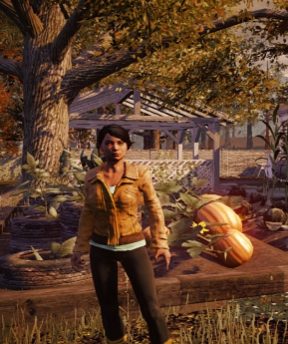 Analysis: In a lot of ways, State of Decay is basically what I was hoping Dead Island would be. The characters are more defined, the plot is more grounded (... relatively speaking for a game about the dead rising...), and the focus on survival feels more important than bludgeoning things to smears on the ground. With everything from weapons and ammo to medicine and vehicles being in limited supply, you're forced to pace yourself and play intelligently... which for a lot of us probably goes against our first instinct in an open-world game. Some characters are more interesting and fleshed out than others, and it makes me wish you could interact with them a bit more beyond simply ordering them around. Letting you simply chat with people would have gone a long way towards making you more invested in everyone's survival, making everyone feel less like expendable bodies and more like people you care about, though the little conversations that happen between characters on missions and exploration are a nice touch.
Analysis: In a lot of ways, State of Decay is basically what I was hoping Dead Island would be. The characters are more defined, the plot is more grounded (... relatively speaking for a game about the dead rising...), and the focus on survival feels more important than bludgeoning things to smears on the ground. With everything from weapons and ammo to medicine and vehicles being in limited supply, you're forced to pace yourself and play intelligently... which for a lot of us probably goes against our first instinct in an open-world game. Some characters are more interesting and fleshed out than others, and it makes me wish you could interact with them a bit more beyond simply ordering them around. Letting you simply chat with people would have gone a long way towards making you more invested in everyone's survival, making everyone feel less like expendable bodies and more like people you care about, though the little conversations that happen between characters on missions and exploration are a nice touch.
The fact that your newfound compound is incapable of making anything but the most basic decisions without you can start to grate after a while... waaaaah, find us food! Find us medicine! This person is bringing us down, take them out for some therapeutic skull crushing! Some autonomy would be nice, even if you had to assign it to them, just so you don't start feeling like the world's most underpaid babysitter. There's just not much else to do beyond catering to your compound through missions. This is where the lack of choice sort of stings too, since the linearity of events means you don't get to play as anything other than a fine, upstanding pillar of the community and leader. It's more Grand Theft Auto than it is Mass Effect, in other words, and for some players, that'll suit them just fine. Personally, I've always felt a horde of flesh-hungry beasts would have significantly livened up all of Niko's dates and provided that extra element of excitement to a night of darts and drinking with Roman.
It takes a little while for State of Decay to really get going, and the initial "tutorial" area doesn't really showcase everything that makes the game shine. While a lot of your time is going to be spent gathering supplies and survivors, more exciting events like zombie sieges do a lot to spice things up, forcing you to scramble to keep your barriers up with undead batter down the walls and you pick them off one by one. Establishing trust with your neighbours is also important and funnily enough, nobody seems to appreciate being accidentally set on fire even if you're trying to help, so watch those molotovs. Once new zombie types start being introduced, the game gets considerably more difficult, and more interesting. The game does a good job of doling out new things bit by bit, just enough to keep you following its trail of breadcrumbs and keeping it from getting stale. The main missions tend to be vastly more entertaining than the side missions, sadly, largely because those sidequests are so repetitive and bare-bones. Go here, kill those. Go there, get that thing. Come back, mollycoddle some idiot who's feeling a little sad about the end of the world.
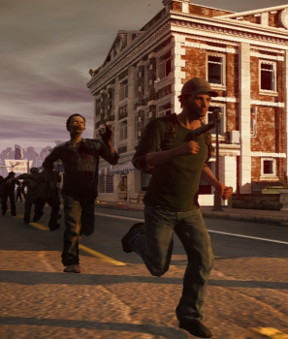 At the moment, however, the biggest frustration with State of Decay is that it's essentially a straight port from the XBox, and thus its keyboard and mouse control is only sort of functional. While a lot of the controls are standard ([WASD] for movement, [E] to interact, etc etc etc), many of the actions are bound all over the board and more than a little unintuitive to figure out, especially with the game constantly spitting XBox controller buttons at you. It's sort of baffling that even an "early access" title would arrive on PC without better PC support, and not everyone has a compatible controller or wants to (or is able to) spend money on one just to play one specific game. It is, fortunately, the developer's number one priority to implement, so if keyboard and mouse support is a dealbreaker for you, you might want to wait a while. Hopefully, the somewhat sluggish controls and reactions will be improved too, though I'd trade it for the ability to zoom a camera in and out. With the fixed over the shoulder perspective, it's too easy to get an entire facefull of blinding foliage when you're trying to sneak, also making it to get hung up on terrain or certain obstacles you can't see.
At the moment, however, the biggest frustration with State of Decay is that it's essentially a straight port from the XBox, and thus its keyboard and mouse control is only sort of functional. While a lot of the controls are standard ([WASD] for movement, [E] to interact, etc etc etc), many of the actions are bound all over the board and more than a little unintuitive to figure out, especially with the game constantly spitting XBox controller buttons at you. It's sort of baffling that even an "early access" title would arrive on PC without better PC support, and not everyone has a compatible controller or wants to (or is able to) spend money on one just to play one specific game. It is, fortunately, the developer's number one priority to implement, so if keyboard and mouse support is a dealbreaker for you, you might want to wait a while. Hopefully, the somewhat sluggish controls and reactions will be improved too, though I'd trade it for the ability to zoom a camera in and out. With the fixed over the shoulder perspective, it's too easy to get an entire facefull of blinding foliage when you're trying to sneak, also making it to get hung up on terrain or certain obstacles you can't see.
Visually, the game is gorgeous, despite a lack of any real expression of character faces. The town you find yourself stranded in tends more towards a quiet, scenic Greenvale-esque vibe than a thriving metropolis, but the gorgeous scenery and design makes up for it. There's a lot to explore, from outposts to establish to neighbours to find a befriend, and every inch of it is beautiful. If you're hoping for any sort of multiplayer, well, don't. You're not going to get that, but there is more DLC on the way, such as a sandbox mode that will take you to an entirely new town to survive for as long as you can... provided you can fix up an RV and find people willing to come with you. Though some aspects are more compelling than others, as an open-world story-driven zombie action adventure, State of Decay is still both a ton of fun and a lot more intelligent than many other zombie games ever even try to be. Though it suffers from repetition and, in this early access stage, it's fair share of glitches, it offers a unique and interesting twist on the zombie genre in a world that feels dangerous and alive. Or... undead. You know. Whichever.
![]() Windows:
Windows:
Get the full version
![]() Mac OS X:
Mac OS X:
Not available.
Try Boot Camp or Parallels or CrossOver Games.
![]() There's nothing wrong with being a square. Unless you turn everything else into squares, including the entire planet. Then you're one mean quadrilateral. Red Ball 4 Volume 3 is the final chapter of the epic Red Ball physics platforming games by Evgeniy Fedoseev, in which a solitary hero stands (or rather, bounces) against the forces of angled evil. Red Ball has reached the lair of the square opressors and now it's time to defeat the big boss and liberate the other balls. To do this, use the [arrow] keys and roll around, jump on enemies and negotiate obstacles.
There's nothing wrong with being a square. Unless you turn everything else into squares, including the entire planet. Then you're one mean quadrilateral. Red Ball 4 Volume 3 is the final chapter of the epic Red Ball physics platforming games by Evgeniy Fedoseev, in which a solitary hero stands (or rather, bounces) against the forces of angled evil. Red Ball has reached the lair of the square opressors and now it's time to defeat the big boss and liberate the other balls. To do this, use the [arrow] keys and roll around, jump on enemies and negotiate obstacles.
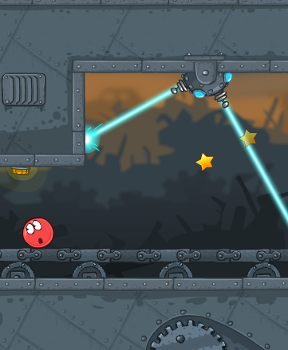 Don't let the cute graphics fool you, this platformer requires decent skills. Since the tone is sombre, as opposed to the happy atmosphere in Volume 2, the gameplay is altered accordingly. It's a lot less puzzle-y, choosing instead to rely on fast-paced action and quick reflexes. The grim industrial surroundings are the perfect backdrop for the introduction of many new elements, such as lasers, bombs and giant metal presses, all of which will kill you in a heartbeat. To counterbalance this, checkpoints are very nicely placed, allowing a smooth play without undue shouting at the screen. The controls are largely unchanged, which means you can keep a firm grasp on Red Ball and direct it exactly where you want it. Volume 3 is a very enjoyable game with one sad little flaw: with only fifteen short levels, it can be finished in no time at all (boss fight included). It's a good thing there are all the achievements to collect, though, so there's an excuse to play it at least once more.
Don't let the cute graphics fool you, this platformer requires decent skills. Since the tone is sombre, as opposed to the happy atmosphere in Volume 2, the gameplay is altered accordingly. It's a lot less puzzle-y, choosing instead to rely on fast-paced action and quick reflexes. The grim industrial surroundings are the perfect backdrop for the introduction of many new elements, such as lasers, bombs and giant metal presses, all of which will kill you in a heartbeat. To counterbalance this, checkpoints are very nicely placed, allowing a smooth play without undue shouting at the screen. The controls are largely unchanged, which means you can keep a firm grasp on Red Ball and direct it exactly where you want it. Volume 3 is a very enjoyable game with one sad little flaw: with only fifteen short levels, it can be finished in no time at all (boss fight included). It's a good thing there are all the achievements to collect, though, so there's an excuse to play it at least once more.
![]() First we managed a skyscraper in Tiny Tower. Then we tried our hand at air traffic control in Pocket Planes. Now NimbleBit is turning us into train magnates with their newest simulation game, Pocket Trains!
First we managed a skyscraper in Tiny Tower. Then we tried our hand at air traffic control in Pocket Planes. Now NimbleBit is turning us into train magnates with their newest simulation game, Pocket Trains!
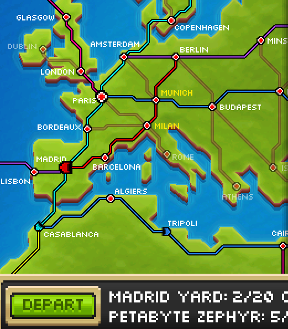 Gameplay is easy to pick up, especially for fans of Pocket Planes. You start with a few engines, cars, and cities, and build your empire bit by bit as you earn coins and make deliveries. There are extra challenges and special cargo that help you advance as well. In Pocket Trains each bit of track is "owned" by a single railroad, and it costs coins to claim tracks or change who owns it. This means you'll be dropping cars off a lot so you can get that hayride car from Minsk to Rome, and it means you get to create a brightly colored map of train routes just as gorgeous as the ones in every subway station. You also have to refuel your trains, which happens automatically as they idle in the stations.
Gameplay is easy to pick up, especially for fans of Pocket Planes. You start with a few engines, cars, and cities, and build your empire bit by bit as you earn coins and make deliveries. There are extra challenges and special cargo that help you advance as well. In Pocket Trains each bit of track is "owned" by a single railroad, and it costs coins to claim tracks or change who owns it. This means you'll be dropping cars off a lot so you can get that hayride car from Minsk to Rome, and it means you get to create a brightly colored map of train routes just as gorgeous as the ones in every subway station. You also have to refuel your trains, which happens automatically as they idle in the stations.
As usual with NimbleBit's games, Pocket Planes' strength is in how well it scales. Prices increase at roughly the same rate as your income and you only see train parts that are appropriate for your level, meaning that it's nearly impossible to encounter a bottleneck where you need that new, shiny engine but it would take two weeks to earn the coins for it. You can speed things up in a variety of ways by buying Bux, but there are so many ways to earn Bux that there's no reason to spend real-life money for them if you don't want to. "Balance" would be the name of the game, if the game weren't already called Pocket Trains. There are a few features (Bitbook, social elements like Pocket Planes' flight crews) that don't exist in Pocket Trains (yet) but the game is so polished and shiny and funny that it's hard to even miss them.
Now if you'll excuse me, I have a train to catch, just as soon as I'm done deciding what cargo goes in it.
NOTE: This game was played and reviewed on the LG Optimus L9. Game was available in the North American market at the time of publication, but may not be available in other territories. Please see individual app market pages for purchasing info.
![]() When Francis Bacon famously said that knowledge is power, he probably didn't mean that knowing trivia answers would grant you magic powers. But that's how things work in Quiz RPG: World of Mystic Wiz, a trivia game for Android similar to Puzzle and Dragons that blends elements of roleplaying and card games. You play as a brand new magician who's taking an apprenticeship under one of the world's best wizards. She may be eccentric, but Wiz gets the job done, and she's taken a liking to you.
When Francis Bacon famously said that knowledge is power, he probably didn't mean that knowing trivia answers would grant you magic powers. But that's how things work in Quiz RPG: World of Mystic Wiz, a trivia game for Android similar to Puzzle and Dragons that blends elements of roleplaying and card games. You play as a brand new magician who's taking an apprenticeship under one of the world's best wizards. She may be eccentric, but Wiz gets the job done, and she's taken a liking to you.
The basic game mechanic is simple: you have five cards, each one representing one of the spirits that make magic work. Each spirit — both the ones you control and the ones you fight against — has an element attached to it. 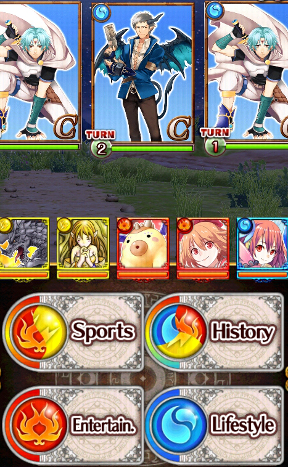 (In the game of elemental rock-paper-scissors, Thunder beats Water beats Fire beats Thunder.) In order to make your spirits attack, you need to answer trivia questions. A correct answer means all the cards of the same element as the question will attack. Answer quickly enough, or answer enough questions correctly, and you can activate your spirits' special abilities. These abilities let you do damage to all opponents without using a turn, or heal yourself, or do extra damage, or any number of other things. As you advance in the game, you can combine cards to improve them: something you'll definitely need when the enemies get tough.
(In the game of elemental rock-paper-scissors, Thunder beats Water beats Fire beats Thunder.) In order to make your spirits attack, you need to answer trivia questions. A correct answer means all the cards of the same element as the question will attack. Answer quickly enough, or answer enough questions correctly, and you can activate your spirits' special abilities. These abilities let you do damage to all opponents without using a turn, or heal yourself, or do extra damage, or any number of other things. As you advance in the game, you can combine cards to improve them: something you'll definitely need when the enemies get tough.
The universe of Mystic Wiz is a deep one, full of quests and interesting characters and an overarching mystery for your character to solve. There's even a tournament where you can compete against other players for prestige and prizes. Just as there's an element of strategy to choosing your cards, there's a strategy to choosing your questions. Do you choose the category that you know well, and do less damage? Or do you pick the one you're weakest in that can do the most damage? There's quite a variety of questions as well: some are very easy and some are very hard, but most fall in between. With over 15,000 questions in the pool, there's enough trivia to last even the most hardcore of us quite a while.
The English version of the game isn't without its flaws, though: the notifications are still in Japanese, and some of the sorting questions lack a scale. (Do I sort the temperatures from high to low, or low to high? Do I start with the oldest, or the newest?) Neither of these are game-breakers, however, as the notifications aren't essential to gameplay and the sorting questions don't harm you if you get them wrong. The rest of the game is absolutely solid, and really quite addictive. Also there's a talking cat who mews if you poke her, so that alone makes it worth a look.
NOTE: This game was played and reviewed on the LG Optimus L9. Game was available in the North American market at the time of publication, but may not be available in other territories. Please see individual app market pages for purchasing info.
![]() [New free browser version as of 09/25/13!]
[New free browser version as of 09/25/13!]
Help Me Fly by Funtomic is a combination logic game and a shape-fitting tangram-style puzzle game available in your browser or on your iOS or Android. If that sounds like too steep of a learning curve, take solace in the fact that Help Me Fly is designed for casual players in mind, providing heaps of challenge with 60 well-designed puzzles that will give your brain a good but fair workout!
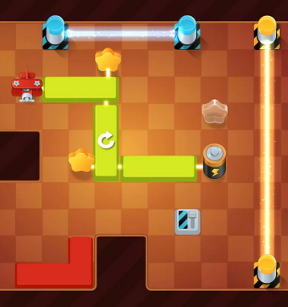 Toy planes just aren't made the way they were used to. This particular one seems to have a shoddy electrical system. You'll need to connect it to a battery to get it airborne again. Tap and drag to move blocks around the screen, moving them to create an unbroken connection that spans the grid from plane to battery. When you're all done, hit the "go" button and send the plane flying. Make sure you connect to the star outlines as well, you'll need those to progress through the game. Later levels introduce switches and barriers and other creative challenges that up the challenge without upping the complexity.
Toy planes just aren't made the way they were used to. This particular one seems to have a shoddy electrical system. You'll need to connect it to a battery to get it airborne again. Tap and drag to move blocks around the screen, moving them to create an unbroken connection that spans the grid from plane to battery. When you're all done, hit the "go" button and send the plane flying. Make sure you connect to the star outlines as well, you'll need those to progress through the game. Later levels introduce switches and barriers and other creative challenges that up the challenge without upping the complexity.
Help Me Fly has a flawless interface with artwork that simply shines. It's completely free from ads, in-app purchases and other ridiculous gimmicks modern mobile games seem compelled to include. It's just straight-up gaming goodness. The high level of difficulty is well-hidden by the cartoonish artwork. You wouldn't expect a game that looks this cute to be this challenging. This chiefly comes from having to gather nearly every star in each world before you can move to the next. You're not on a timer, however, so there's no reason to rush. Just sit back, stare at the shapes, then see how you can make them all fit together.
NOTE: This game was played and reviewed on the Nexus 4. Game was available in the North American market at the time of publication, but may not be available in other territories. Please see individual app market pages for purchasing info.
![]() The theme of Ludum Dare 27 was "10 Seconds" and though the participants of the game jam were given much longer than that to craft their works (25920 times that, to be precise) and though the period of judging always seems to last to a point where many begin to forget that there was ever a time when Ludum Dare entries weren't being judged, the results are finally in: In first place for the 72 hour event is NXTWPN10, a quirky Unity arcade shooter by Graebor!
The theme of Ludum Dare 27 was "10 Seconds" and though the participants of the game jam were given much longer than that to craft their works (25920 times that, to be precise) and though the period of judging always seems to last to a point where many begin to forget that there was ever a time when Ludum Dare entries weren't being judged, the results are finally in: In first place for the 72 hour event is NXTWPN10, a quirky Unity arcade shooter by Graebor!
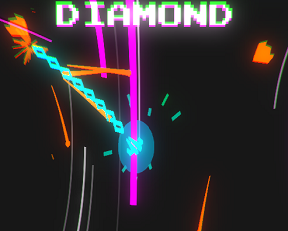 The rules are simple: Use the [WASD] or [arrow] keys to move your ship, and the mouse to aim and fire your weapon, blasting baddies and avoiding damage. The trick is, every 10 seconds, a new round starts, granting you a new weapon and a new wave to fight. Clear the enemies before the timer runs out to convert any remaining time into healing, or just try to survive the whole 10 seconds. Bonuses are given for going an entire round without shooting, or without getting hit. An explosive combination of color and creativity, no one can say that NXTWPN10's visual distortions and pumping soundtrack isn't meant to be a little disorienting. But the impressively varied weapons and mindless joy provided, once you get into the rhythm, make it a worthy winner and a perfect candidate for expansion.
The rules are simple: Use the [WASD] or [arrow] keys to move your ship, and the mouse to aim and fire your weapon, blasting baddies and avoiding damage. The trick is, every 10 seconds, a new round starts, granting you a new weapon and a new wave to fight. Clear the enemies before the timer runs out to convert any remaining time into healing, or just try to survive the whole 10 seconds. Bonuses are given for going an entire round without shooting, or without getting hit. An explosive combination of color and creativity, no one can say that NXTWPN10's visual distortions and pumping soundtrack isn't meant to be a little disorienting. But the impressively varied weapons and mindless joy provided, once you get into the rhythm, make it a worthy winner and a perfect candidate for expansion.
![]() Welcome to the beginning of our coverage on interesting indie funding projects (Kickstarter, IndieGoGo), Steam Greenlight games, and news and previews!
Welcome to the beginning of our coverage on interesting indie funding projects (Kickstarter, IndieGoGo), Steam Greenlight games, and news and previews!
Platform: Windows, Mac, Linux
DRM: None
Developer: Nick Yonge
Genre: Action Adventure
Planned Release: February 13th 2014
Funding Asked: $5800.00CAD
Funding Ends: October 16th, 2013
"Thomas Was Alone meets Analogue: A Hate Story meets System Shock"? Hmmmm. Typically when a game is described as being "Some Popular Thing meets Some Other Popular Thing", I make my Marge Simpson noise, though bias-generating comparisons aside, Nick Yonge's (krangGAMES) Kickstarter for his upcoming story-driven action adventure game Emerald still looks pretty swank. Trapped inside a dead ship with no functioning systems, you have to explore the massive hulk in zero gravity as you decide which support systems to reactivate to determine your survival, and slowly piece together the story of who you are, your mission, and what went wrong. Sound intriguing? You bet your gradually depleting oxygen it does.
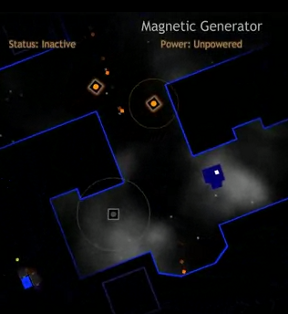 The game plans to be geared towards an exploratory experience, with just as much focus on finding scraps and secrets pertaining to the story as reactivating the ship you're stuck inside. The concept of figuring out what's happened and why, as well as the aesthetic in some ways, reminds me a bit of Yonge's earlier game Prior. Story-centric games that rely on the player discovering and piecing together that story can be tricky to do, since unless you railroad your player on a specific route, you can't predict what they'll encounter and, perhaps more importantly for coherence's sake, in what order they'll encounter it. But Yonge has already proven himself more than capable of telling compelling stories in bits and pieces, and Emerald's promise that every bit of text will have meaning could allow you to craft a story around yourself rather than following a specific breadcrumb trail to a neatly packaged conclusion.
The game plans to be geared towards an exploratory experience, with just as much focus on finding scraps and secrets pertaining to the story as reactivating the ship you're stuck inside. The concept of figuring out what's happened and why, as well as the aesthetic in some ways, reminds me a bit of Yonge's earlier game Prior. Story-centric games that rely on the player discovering and piecing together that story can be tricky to do, since unless you railroad your player on a specific route, you can't predict what they'll encounter and, perhaps more importantly for coherence's sake, in what order they'll encounter it. But Yonge has already proven himself more than capable of telling compelling stories in bits and pieces, and Emerald's promise that every bit of text will have meaning could allow you to craft a story around yourself rather than following a specific breadcrumb trail to a neatly packaged conclusion.
Of course, experiencing flashbacks and story is all well and good, but you need a game to tie all that together, right? Fortunately, Emerald looks like it will more than satisfy in that regard as well, tasking you with finding and figuring out how to repair what systems you need, avoiding hazards, and even tracking down a ton of secrets scattered throughout the ship, in addition to deciding what you're going to do with the information you uncover. Throw in a melancholy atmosphere and simple yet evocative visuals and you could have the recipe for a genuinely captivating experience. If this sounds good to you, head on over to the official Kickstarter page to learn more, or play Yonge's free games to get a taste of his game designing talents... trust us, he's got them in spades, and this could be something special all on its own. No comparisons needed!
JayisGames.com Kickstarter picks are selected based only on personal evaluation and perceived overall quality of the project. We assume no responsibility for failed projects or developer's inability to deliver. Donate with care! Contact dora AT jayisgames DOT com with KICKSTARTER in the subject line if you find a project you think we should know about!
![]() One of the things I like most about escape games is that many of them can generally be counted on to put you in a good mood, and Detarame Factory's relentlessly adorable Anision definitely fits the bill. You find yourself trapped in a room for unknown reasons, likely lured by the promise of cuddling the ridiculously fluffy alpaca, and despite the fact that there is a bunny on the couch, a lightning bug in a terrarium, and a frog playing defense, you must resist the temptation to stay in this colourful, cute place forever and ever and find a way out. Just click to interact when the cursor changes, and click the arrows at the edges of the screen to navigate the room. You can also click on items in your inventory to view them up close, which is handy since some items can be manipulated this way to reveal their true purpose!
One of the things I like most about escape games is that many of them can generally be counted on to put you in a good mood, and Detarame Factory's relentlessly adorable Anision definitely fits the bill. You find yourself trapped in a room for unknown reasons, likely lured by the promise of cuddling the ridiculously fluffy alpaca, and despite the fact that there is a bunny on the couch, a lightning bug in a terrarium, and a frog playing defense, you must resist the temptation to stay in this colourful, cute place forever and ever and find a way out. Just click to interact when the cursor changes, and click the arrows at the edges of the screen to navigate the room. You can also click on items in your inventory to view them up close, which is handy since some items can be manipulated this way to reveal their true purpose!
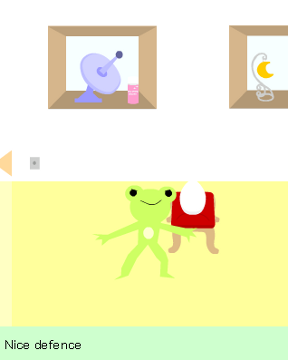 Anision is one of those games that's just an all around joy to play, packed with silly scenes and funny animations on top of its lovely design. For the most part, it's a very logical sort of experience... have a thing without a battery, so find a battery to go in it, for example. Many of the puzzles rely on finding and correctly interpreting clues in the area, so Anision is less about brutal difficulty and more about simple observation... though some of them are very subtle compared to others, making Anision far more clever than its simply sweet aesthetic implies. The changing cursor means there's no pixel hunting, and the clean visuals generally clearly indicate things you can interact with anyway, so you don't have to resort to slowly waggling your cursor over every inch of the screen looking for that magic hidden sweet spot. Anision is about as perfect a coffee break sized escape game can get, and it will give you just enough challenge in ways you won't expect to make it well worth your time.
Anision is one of those games that's just an all around joy to play, packed with silly scenes and funny animations on top of its lovely design. For the most part, it's a very logical sort of experience... have a thing without a battery, so find a battery to go in it, for example. Many of the puzzles rely on finding and correctly interpreting clues in the area, so Anision is less about brutal difficulty and more about simple observation... though some of them are very subtle compared to others, making Anision far more clever than its simply sweet aesthetic implies. The changing cursor means there's no pixel hunting, and the clean visuals generally clearly indicate things you can interact with anyway, so you don't have to resort to slowly waggling your cursor over every inch of the screen looking for that magic hidden sweet spot. Anision is about as perfect a coffee break sized escape game can get, and it will give you just enough challenge in ways you won't expect to make it well worth your time.
![]() Don't run with scissors. Look both ways before crossing the street. We've all been given safety tips throughout our lives, and adhered to them just because. But have you ever wondered what it would be like to break those rules just once, and try on that moose hat during hunting season? Spoiler alert, you die, and it's one of the many ways to die in Dumb Ways to Die, a hilarious if gruesome educational game based on a Metro Trains Melbourne viral marketing campaign.
Don't run with scissors. Look both ways before crossing the street. We've all been given safety tips throughout our lives, and adhered to them just because. But have you ever wondered what it would be like to break those rules just once, and try on that moose hat during hunting season? Spoiler alert, you die, and it's one of the many ways to die in Dumb Ways to Die, a hilarious if gruesome educational game based on a Metro Trains Melbourne viral marketing campaign.
 Ideally, in real life, you try to avoid things that will kill you, and Dumb Ways to Die asks you to prevent the deaths of its characters through a series of fast-paced WarioWare-style minigames. Tap the screen to swat the wasps, wipe the screen to put mustard on the hot dog for your pet rattlesnake, and tilt your device to keep the glue-consumer from tipping over, but by all means, make sure you finish your task before time runs out. If you screw up or run out of time, you lose a life; three lives gone, and it's game over.
Ideally, in real life, you try to avoid things that will kill you, and Dumb Ways to Die asks you to prevent the deaths of its characters through a series of fast-paced WarioWare-style minigames. Tap the screen to swat the wasps, wipe the screen to put mustard on the hot dog for your pet rattlesnake, and tilt your device to keep the glue-consumer from tipping over, but by all means, make sure you finish your task before time runs out. If you screw up or run out of time, you lose a life; three lives gone, and it's game over.
The minigames pick up in speed after every few rounds completed, so you've got to keep your fingers alert to stay alive for as long as you can. There aren't too many minigames included, but the variety between them and the gradual increases in difficulty make them easily replayable. You're given 100 points for every round you complete, although humorous bonuses and penalties are assigned at random as you play. If you score high enough, you can unlock extra characters that appear in your train station home. The bizarre randomness of the death scenarios might deviate a bit from the campaign's initial purpose (promoting safety around train tracks... here, just watch the video), but it lends itself well to a silly and entertaining game.
NOTE: This game was played and reviewed on the iPhone 4. Game was available in the North American market at the time of publication, but may not be available in other territories. Please see individual app market pages for purchasing info.
![]() From the early morning Crossword Puzzle, to the Rubik's Cube on your desk, to the Match-3 games that keep us up way past our bed times, the challenge of a good puzzle can make everything else seem a bit less, well, challenging. This week in The Vault we have a nice selection of puzzle games from our archives, sure to provide variety, quality, and just plain fun.
From the early morning Crossword Puzzle, to the Rubik's Cube on your desk, to the Match-3 games that keep us up way past our bed times, the challenge of a good puzzle can make everything else seem a bit less, well, challenging. This week in The Vault we have a nice selection of puzzle games from our archives, sure to provide variety, quality, and just plain fun.
 LightForce Games - It may seem like a minor thing compared to to preservationists and conservationists in the physical realm, but, darn it, it feels good when JiG is able to host games that would otherwise be lost to the the swirling mists of the internet. Case in point: Helen and Nick Kouvaris' LightForce Games website disappeared years ago, almost taking with it their collection of arcade-puzzle works. Certainly, many of them are clones of similarly-abandoned DOS games, but they're high quality clones, with solid programming and presentation that might never have made it online in any other form. From the collapsing cheer of Poux, to the stacking shifts of Blix, to the rolling recreation of Q, LightForce Games brought us some classics, and I'm glad we can keep them around to share.
LightForce Games - It may seem like a minor thing compared to to preservationists and conservationists in the physical realm, but, darn it, it feels good when JiG is able to host games that would otherwise be lost to the the swirling mists of the internet. Case in point: Helen and Nick Kouvaris' LightForce Games website disappeared years ago, almost taking with it their collection of arcade-puzzle works. Certainly, many of them are clones of similarly-abandoned DOS games, but they're high quality clones, with solid programming and presentation that might never have made it online in any other form. From the collapsing cheer of Poux, to the stacking shifts of Blix, to the rolling recreation of Q, LightForce Games brought us some classics, and I'm glad we can keep them around to share. Legend of the Golden Mask - For a genre so prolific in downloadable titles, it's surprising we don't get more hidden object-minigame combos developed for in-browser play. Legend of the Golden Mask, a 2009 work by Candystand, though is a glorious exception. The production values are high, the story is intriguing, and its decidedly South American visuals and music make it a stand-out. We may never know for certain why all those amateur-adventurers about to head to the jungles of the Amazon always seem to start by scouring their messy rooms for a bicycle pump, Magic 8-Ball, violin case and a pickle, but hey, I guess that's what you sign up for when you come along for the ride.
Legend of the Golden Mask - For a genre so prolific in downloadable titles, it's surprising we don't get more hidden object-minigame combos developed for in-browser play. Legend of the Golden Mask, a 2009 work by Candystand, though is a glorious exception. The production values are high, the story is intriguing, and its decidedly South American visuals and music make it a stand-out. We may never know for certain why all those amateur-adventurers about to head to the jungles of the Amazon always seem to start by scouring their messy rooms for a bicycle pump, Magic 8-Ball, violin case and a pickle, but hey, I guess that's what you sign up for when you come along for the ride. Goldburger to Go - Oh ZOOM! You were great! I mean, stories, games, science experiments, and finally being able to decrypt the Ubbi-Dubbi language used by the female contingent of the playground? Very choice. Plus, PBS has seen fit to keep the program's tie-in games available on its website, including this choice chain-reaction puzzler from 2005. Sussing out the correct settings on the overly-complicated Rube Goldburger device probably won't prove too much of a challenge for those above the 7-12 year old target demographic, but it's an engaging, creative work that, after all, was created thanks to the support of Viewers Like You!
Goldburger to Go - Oh ZOOM! You were great! I mean, stories, games, science experiments, and finally being able to decrypt the Ubbi-Dubbi language used by the female contingent of the playground? Very choice. Plus, PBS has seen fit to keep the program's tie-in games available on its website, including this choice chain-reaction puzzler from 2005. Sussing out the correct settings on the overly-complicated Rube Goldburger device probably won't prove too much of a challenge for those above the 7-12 year old target demographic, but it's an engaging, creative work that, after all, was created thanks to the support of Viewers Like You!
While we welcome any comments about this weekly feature here, we do ask that if you need any help with the individual games, please post your questions on that game's review page. Well, what are you waiting for? Get out there and rediscover some awesome!
![]() Myformerselves' indie RPG adventure game Gingiva is... uh... it's somethin'. In a surreal world, you, Gingiva, a turnkey-headed factory automaton girl like any other, find yourself sentenced to confinement and the lash when your work begins to slip. You could languish in your cell with nothing but serpentine feline ghosts for company, daydreaming or bemoaning... or you could escape. And what's outside those walls is unlike anything you've ever imagined. But everything comes with a price, especially in this strange world, and you're not going to be let go easily.
Myformerselves' indie RPG adventure game Gingiva is... uh... it's somethin'. In a surreal world, you, Gingiva, a turnkey-headed factory automaton girl like any other, find yourself sentenced to confinement and the lash when your work begins to slip. You could languish in your cell with nothing but serpentine feline ghosts for company, daydreaming or bemoaning... or you could escape. And what's outside those walls is unlike anything you've ever imagined. But everything comes with a price, especially in this strange world, and you're not going to be let go easily.
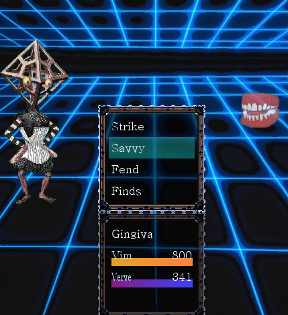 Use the [arrow] keys to move, the [spacebar] to interact, and [ESC] or [X] to open the menu when available. You can save whenever you like. Because this world is... different... you'll want to explore and examine everything you can, and talk to every... thing. If you see any floating pieces of paper, make sure to nab them up, since those are items you can use. Battles, when they occur, play out like classic turn-based RPGs, albeit with Gingiva's own unique flavour. "Strike" is your basic attack, "Savvy" are your special abilities, "Fend" is to block, and "Finds" allows you to use any items you discover. Vim and Verve take the place of hitpoints and magic points. Win, and you'll gain experience and level up. Holding [Z] outside of battle will cause Gingiva to wind her head, gradually restoring a bit of her Vim and Verve.
Use the [arrow] keys to move, the [spacebar] to interact, and [ESC] or [X] to open the menu when available. You can save whenever you like. Because this world is... different... you'll want to explore and examine everything you can, and talk to every... thing. If you see any floating pieces of paper, make sure to nab them up, since those are items you can use. Battles, when they occur, play out like classic turn-based RPGs, albeit with Gingiva's own unique flavour. "Strike" is your basic attack, "Savvy" are your special abilities, "Fend" is to block, and "Finds" allows you to use any items you discover. Vim and Verve take the place of hitpoints and magic points. Win, and you'll gain experience and level up. Holding [Z] outside of battle will cause Gingiva to wind her head, gradually restoring a bit of her Vim and Verve.
 Analysis: Gingiva is one of those games really best left to experience before explanation, and I'm not just saying that because typing up a description of everything you'll see and encounter in the game would leave my family in fear for my mental health. Its striking otherworldly design and oddly lyrical writing are best suited for the sort of player who doesn't mind a deliberately disorienting setting and premise, and a whole lot of words on my part would ruin that. As confusing as it all may seem at first, however, Gingiva actually tells a fascinating dystopian tale you'll be driven to know more about even if it feels like some of the commentary and symbolism is beating you around the head. It's a bit of a shame, then, that it feels like the combat distracts from the rest of it. It's not bad by any means, it's just exceedingly standard, and in a game that's anything but, it's normalcy that sticks out like a sore thumb and begins to drag. It's a little like OFF in that way... hard not to feel mildly resentful about all the fisticuffs when all you want to do is learn more about the story and setting and all this back-and-forth pummeling is just getting in your way.
Analysis: Gingiva is one of those games really best left to experience before explanation, and I'm not just saying that because typing up a description of everything you'll see and encounter in the game would leave my family in fear for my mental health. Its striking otherworldly design and oddly lyrical writing are best suited for the sort of player who doesn't mind a deliberately disorienting setting and premise, and a whole lot of words on my part would ruin that. As confusing as it all may seem at first, however, Gingiva actually tells a fascinating dystopian tale you'll be driven to know more about even if it feels like some of the commentary and symbolism is beating you around the head. It's a bit of a shame, then, that it feels like the combat distracts from the rest of it. It's not bad by any means, it's just exceedingly standard, and in a game that's anything but, it's normalcy that sticks out like a sore thumb and begins to drag. It's a little like OFF in that way... hard not to feel mildly resentful about all the fisticuffs when all you want to do is learn more about the story and setting and all this back-and-forth pummeling is just getting in your way.
Gingiva offers multiple endings (some decidedly more compelling than others) depending on the paths you take and your decisions, and if Gingiva's unique style and setting is your bag, you'll be hooked from the get-go. From a mechanical standpoint, however, the game isn't without its hiccups. Movement feels clunky and slow, and exists from areas aren't always indicated visually, leaving you to wander around some large areas bumping against the edges of the screen like the world's saddest Roomba. Some of the area backgrounds are also so busy visually that the pale, thin text can be hard to read. It's weird. It's gorgeous. It's freaky and disorienting. Whether too much so is something best left to personal choice, but with a gorgeous and unique style and atmosphere, Gingivia is unlike any RPG you've ever seen.
![]() Windows:
Windows:
Get the free full version
![]() Mac OS X:
Mac OS X:
Not available.
Try Boot Camp or Parallels or CrossOver Games.
![]() If you're an action RPG fan and you love zombies, Ant Karlov's latest installment in the hit Zombotron series is proof that the universe loves you and wants you to be happy. In Zombotron 2: Time Machine, your escape from this undead-ridden planet is foiled by your ship's lack of fuel, so you have no other choice but to pick up your gun and head back into the depths until you find some. Should be easy, right? But you should know by now that nothing in the Zombotron universe is that simple, and you'll have to jump through more than a few hoops if you want to get home... and even do a favour or two.
If you're an action RPG fan and you love zombies, Ant Karlov's latest installment in the hit Zombotron series is proof that the universe loves you and wants you to be happy. In Zombotron 2: Time Machine, your escape from this undead-ridden planet is foiled by your ship's lack of fuel, so you have no other choice but to pick up your gun and head back into the depths until you find some. Should be easy, right? But you should know by now that nothing in the Zombotron universe is that simple, and you'll have to jump through more than a few hoops if you want to get home... and even do a favour or two.
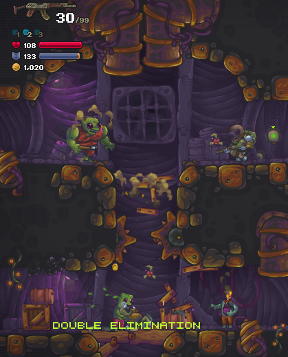 As before, [WASD] moves and jumps while the mouse aims and shoots, and hitting [R] reloads your current weapon while [E] interacts with doors and switches. If you haven't played any of the Zombotron games, you might be wondering what sets this series about from the zombie shooters everyone and their dog is coding these days, and the answer is simply variety. And also fun. See, with tons of physics objects in the world to play with, most set up with care and design to allow you to play around, you've also got tons of ways to deal with the zombies that come after you. Crush them by luring them beneath crates. Push trolleys of explosives around to leave deadly traps you can trigger with a bullet. Blast the wooden platforms beneath them away to drop them down onto their own kind. Throw in some Metroidvania-esque permanent stat upgrades hidden throughout the game, the ability to buy and upgrade ammo and equipment, and you have an absolute winner.
As before, [WASD] moves and jumps while the mouse aims and shoots, and hitting [R] reloads your current weapon while [E] interacts with doors and switches. If you haven't played any of the Zombotron games, you might be wondering what sets this series about from the zombie shooters everyone and their dog is coding these days, and the answer is simply variety. And also fun. See, with tons of physics objects in the world to play with, most set up with care and design to allow you to play around, you've also got tons of ways to deal with the zombies that come after you. Crush them by luring them beneath crates. Push trolleys of explosives around to leave deadly traps you can trigger with a bullet. Blast the wooden platforms beneath them away to drop them down onto their own kind. Throw in some Metroidvania-esque permanent stat upgrades hidden throughout the game, the ability to buy and upgrade ammo and equipment, and you have an absolute winner.
Zombotron 2: Time Machine isn't largely different from its predecessor, right now to the cludgy controls. It looks and plays exactly the same, but somehow still manages to feel more ambitious. Right away, stages are bigger and more complex, with a lot more going on in them and even more treasure to find. The bigger focus on story this time is a bit of a surprise, though the stiff dialogue at times fails to make much sense. But does that detract from the experience? Not really. Zombotron 2: Time Machine is still an absolute blast, and the more elaborate levels will have you roaming through every nook and cranny searching for upgrades. Add in some new characters and enemies and even a few big machines, and it's the perfect way to spend your free time.
![]() Welcome to the beginning of our coverage on interesting indie funding projects (Kickstarter, IndieGoGo), Steam Greenlight games, and news and previews!
Welcome to the beginning of our coverage on interesting indie funding projects (Kickstarter, IndieGoGo), Steam Greenlight games, and news and previews!
Platform: Windows, Mac, Linux
DRM: None
Developer: Jay Ziebarth
Genre: Point-and-Click Adventure
Planned Release: June 2014
Funding Asked: $15,000.00USD
Funding Ends: October 19th, 2013
With some impressive facial hair and an even more impressive paunch, Jay "Zeebarf" Ziebarth's Reemus doesn't look like your typical hero, and yet he's been saving his bizarro fantasy world through point-and-click adventure games for years now with the help of his sidekick Liam. See, Reemus wants to prove medieval pest extermination is just as valid a heroic path as any other... and after five years and six great games, we're inclined to agree. So you can forgive us if we're just a little bit excited to hear about the Kickstarter project for the upcoming The Ballads of Reemus 2.
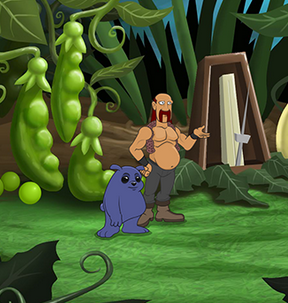 This time around, Reemus is dealing with some competition that he worries is going to put him out of business... right up until he discovers an invasion of the no-doubt cuddly "Death Slugs" that puts the kingdom in peril, forcing him to save the day. If this sounds a bit familiar to you, it's because The Ballads of Reemus 2 plans to revisit the storyline from the free games (The Several Journeys of Reemus), but don't worry... it's not going to be a simple remake. You can expect, on top of the usual bells and whistles like fancy improved visuals and such, changes to the storyline, new puzzles, and more. But maybe the biggest change is that the game won't be available in Flash, but will rather be on the VISIONAIRE adventure game engine.
This time around, Reemus is dealing with some competition that he worries is going to put him out of business... right up until he discovers an invasion of the no-doubt cuddly "Death Slugs" that puts the kingdom in peril, forcing him to save the day. If this sounds a bit familiar to you, it's because The Ballads of Reemus 2 plans to revisit the storyline from the free games (The Several Journeys of Reemus), but don't worry... it's not going to be a simple remake. You can expect, on top of the usual bells and whistles like fancy improved visuals and such, changes to the storyline, new puzzles, and more. But maybe the biggest change is that the game won't be available in Flash, but will rather be on the VISIONAIRE adventure game engine.
The Ballads of Reemus marked the exterminator's first foray into the world of premium games, and after so many years of quality free entertainment from a talented developer like Jay Ziebarth, it's great to see him continuing to improve and reach new people. A minimum donation of $15.00USD will net you a copy of the game when it releases next year, but any amount is a great way to thank Jay for so many great free games and help fund the next batch. You can learn more and play the (currently PC only) prototype over on the official Kickstarter page, or play the original free Reemus games to get acquainted.
JayisGames.com Kickstarter picks are selected based only on personal evaluation and perceived overall quality of the project. We assume no responsibility for failed projects or developer's inability to deliver. Donate with care! Contact dora AT jayisgames DOT com with KICKSTARTER in the subject line if you find a project you think we should know about!
![]() When you've got tentacles, bleedin' through your walls, who ya gonna call?!... well, Jeff. See, Jeff and his coworkers are part of a sort of supernatural cleanup force, called in to deal with all the sorts of paranormal nastiness you and I can't handle. But he's no Dean or Sam... just a regular guy putting in his nine to five. So at the start of Cameron Kunzleman's linear interactive narrative/adventure game Catachresis, Jeff doesn't really think much is out of the ordinary at the job he's been called into. After all, cryptic writing, the moans of the nether... it's all just a paycheck to him. Nothing he can't handle... right?
When you've got tentacles, bleedin' through your walls, who ya gonna call?!... well, Jeff. See, Jeff and his coworkers are part of a sort of supernatural cleanup force, called in to deal with all the sorts of paranormal nastiness you and I can't handle. But he's no Dean or Sam... just a regular guy putting in his nine to five. So at the start of Cameron Kunzleman's linear interactive narrative/adventure game Catachresis, Jeff doesn't really think much is out of the ordinary at the job he's been called into. After all, cryptic writing, the moans of the nether... it's all just a paycheck to him. Nothing he can't handle... right?
Use the left and right [arrow] keys to move, press the up [arrow] to interact and advance text, and the down [arrow] when available to turn on and off the light. You can hit [S] to save your game, and [L] to load your last save. With no puzzles to speak off, it's almost tending more towards a piece of interactive art than anything else. With its clever writing and engaging premise, Catachresis feels like what could be the start of a really great, full-fledged adventure game if it were fleshed out more and stripped of some of the pointlessly long walking sequences. The concept of a regular Joe whose dayjob is dealing with this (and the accompanying paperwork) is refreshing after all the "YOU ARE THE CHOSEN ONE" Buffy-style premises in most media.
Catachresis has some simple yet effective atmosphere, and a great balance between dry humour and some genuinely chilling moments in its writing. If not for all that Cthulhu-cursed drawn-out walking, especially in the latter half of the game, it would be about the perfect little short-story style experience. There are definitely times when it feels drawn out for a perceived cinematic effect in a way that actually winds up a little frustrating and tedious instead. Some players will find it too slow, and others may feel that the latter half's more surreal, Lovecraft/Twin Peaksian tone is a bit much to take or doesn't quite fit with the rest of the setup. Your mileage will vary. For my part, Catachresis is an engaging slow boil of a story that pairs impressive characterisation with the sort of horror you don't see enough of these days... chilling, imaginative, large in scope... and completely without jump scares of any kind. Hopefully we see more of it.
![]() A stick figure is only made up of a few lines, but it's easy to recognize as an image of a person. Likewise, Scott MacLean of Green-Eyed Games has turned a simple sliding block puzzle into a game about flowers, just by arranging colored tiles in a certain way. The rules of Petals are as simple as the idea behind it: click any empty space to pull colored tiles toward it. The goal is to combine like-colored tiles. The more you can combine at once, the more points you score. But if a click would combine two or more tiles of different colors, then nothing will move. The one exception to this rule is that if you can make a flower by surrounding a tile with tiles of all one color, you can collapse it all at once regardless of the color of the flower's center. You get big points for that, too.
A stick figure is only made up of a few lines, but it's easy to recognize as an image of a person. Likewise, Scott MacLean of Green-Eyed Games has turned a simple sliding block puzzle into a game about flowers, just by arranging colored tiles in a certain way. The rules of Petals are as simple as the idea behind it: click any empty space to pull colored tiles toward it. The goal is to combine like-colored tiles. The more you can combine at once, the more points you score. But if a click would combine two or more tiles of different colors, then nothing will move. The one exception to this rule is that if you can make a flower by surrounding a tile with tiles of all one color, you can collapse it all at once regardless of the color of the flower's center. You get big points for that, too.
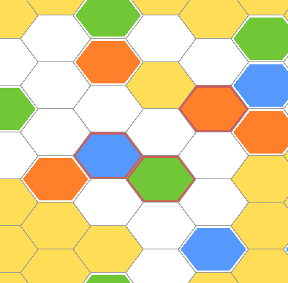 That's all there is to it. There's no boss to fight, no powerups, and not even a timer, and that's just how it should be. The two game modes ("Puzzle" for solvable levels with move limits, and "Influx," where you play as long as you have moves left) and the ability to switch between a grid of squares and a grid of hexagons ensures Petals' replay value, and you can change the difficulty level in the settings if you're looking for a bigger challenge. It's a great way to spend a few minutes quietly stretching your mind, and you don't even have to water it.
That's all there is to it. There's no boss to fight, no powerups, and not even a timer, and that's just how it should be. The two game modes ("Puzzle" for solvable levels with move limits, and "Influx," where you play as long as you have moves left) and the ability to switch between a grid of squares and a grid of hexagons ensures Petals' replay value, and you can change the difficulty level in the settings if you're looking for a bigger challenge. It's a great way to spend a few minutes quietly stretching your mind, and you don't even have to water it.
NOTE: This game was played and reviewed on the LG Optimus L9. Game was available in the North American market at the time of publication, but may not be available in other territories. Please see individual app market pages for purchasing info.
![]() Sometimes you just feel like clobbering some demons. But swords are so Middle Ages, and axes are cool, but make such a mess, so you decide to try a bow for a change. And then you're off to rid the world of some underworld overlords in Barons Gate, an action RPG by Dragosha Games. On your heroic journey, you'll use the [arrow] keys to move, left click to pick up items and shoot, and [E] and [Q] to switch between weapons.
Sometimes you just feel like clobbering some demons. But swords are so Middle Ages, and axes are cool, but make such a mess, so you decide to try a bow for a change. And then you're off to rid the world of some underworld overlords in Barons Gate, an action RPG by Dragosha Games. On your heroic journey, you'll use the [arrow] keys to move, left click to pick up items and shoot, and [E] and [Q] to switch between weapons.
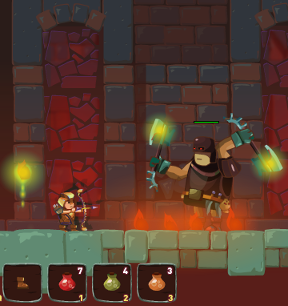 Each time you finish a stage, you'll be brought back to the camp, where you can buy everything from better bows to potions and armour. Money is obtained by killing bad guys and opening chests, but you'll have to wait a good while before being able to buy the ultimate demon-defeating bling. Using the bow might actually take some getting used to – as easy as it is to just point and shoot, most enemies will still take more damage if you aim for the head. Also, switches that open doors or move platforms are often out of the little hero's reach, so he'll have to shoot at them. This can gets tricky, since some of them are actually off-screen, so you'll have to aim carefully: the farther your cursor is from the hero, the stronger and higher the arrow will fly. But worry not, this is the only gameplay aspect which isn't completely straightforward; everything else plays like a good old hack-and-slash or, in this case, shoot-and-shoot-some-more.
Each time you finish a stage, you'll be brought back to the camp, where you can buy everything from better bows to potions and armour. Money is obtained by killing bad guys and opening chests, but you'll have to wait a good while before being able to buy the ultimate demon-defeating bling. Using the bow might actually take some getting used to – as easy as it is to just point and shoot, most enemies will still take more damage if you aim for the head. Also, switches that open doors or move platforms are often out of the little hero's reach, so he'll have to shoot at them. This can gets tricky, since some of them are actually off-screen, so you'll have to aim carefully: the farther your cursor is from the hero, the stronger and higher the arrow will fly. But worry not, this is the only gameplay aspect which isn't completely straightforward; everything else plays like a good old hack-and-slash or, in this case, shoot-and-shoot-some-more.
Barons Gate isn't perfect, so it's possible to come across a glitch or two. This is especially true of enemies, who can get uncomfortably stuck to a wall or between boxes. But, ghouls' aversion to architecture aside, the mechanics tend to do what it says on the tin. As for the graphics, the game looks very pretty indeed. Each level has its own striking palette of background colours, which add vibrancy to the otherwise sombre dungeons. The levels are populated with a decent number of different enemies, though they won't pose a huge challenge in the normal difficulty. Heroic mode is a different story, with ever-spawning baddies as far as the eye can see, which can get a tad overwhelming. But Barons Gate is addictive enough to make you want to press on, so shine your helmet, sharpen your arrows and show 'em who's boss.
![]() Isn't it about time you had a good old fashioned quest? Spud's Quest by Chris Davis is a retro-styled platform adventure that draws inspiration from classic games such as The Legend of Zelda and the Dizzy series. It takes place in a fantasy world complete with items to find that unlock new areas, a sprawling map with non-linear pathways, and plenty of characters to interact with. A metroidvania, if you will, and a frightfully good one at that!
Isn't it about time you had a good old fashioned quest? Spud's Quest by Chris Davis is a retro-styled platform adventure that draws inspiration from classic games such as The Legend of Zelda and the Dizzy series. It takes place in a fantasy world complete with items to find that unlock new areas, a sprawling map with non-linear pathways, and plenty of characters to interact with. A metroidvania, if you will, and a frightfully good one at that!
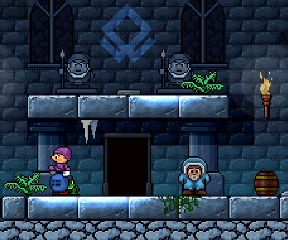 You play the roles of Spud and Prince Charming, the former a round little hero and the latter a real prince that has been cursed by an evil wizard and turned into a frog. The story follows the pair as they travel through the kingdom to uncover ancient stones that can banish evil and remove the curse. Which, incidentally, has turned the king and queen into frogs, as well.
You play the roles of Spud and Prince Charming, the former a round little hero and the latter a real prince that has been cursed by an evil wizard and turned into a frog. The story follows the pair as they travel through the kingdom to uncover ancient stones that can banish evil and remove the curse. Which, incidentally, has turned the king and queen into frogs, as well.
Your basic actions allow you to walk, jump, hang onto ledges, talk to characters, and pick up/use a (very) small inventory of items. Everything you'll need to get started in this vast pixel world. Later you'll unlock even more abilities that let you do things like push/pull objects and swim. Prince Charming plays a little more than a side role in Spud's Quest, as well. You can switch characters with the press of a button to send the Prince off on his own, allowing him to manipulate some simple environmental objects to allow Spud to pass through.
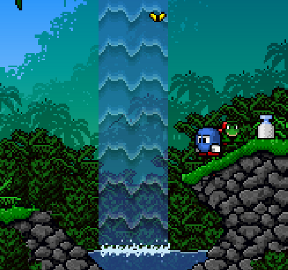 Analysis: Spud's Quest screams "old school" from every stationary screen. Beyond drawing inspiration from classic games and looking like a retro title, it perfectly captures the feeling of excitement and exploration those old games conveyed so well. The world in front of you seems like it's filled with secrets, many of which are dangling right in front of your eyes. In order to capture them, you'll have to find a new item, open a hidden path, solve a puzzle, or just get really good at jumping from platform edges.
Analysis: Spud's Quest screams "old school" from every stationary screen. Beyond drawing inspiration from classic games and looking like a retro title, it perfectly captures the feeling of excitement and exploration those old games conveyed so well. The world in front of you seems like it's filled with secrets, many of which are dangling right in front of your eyes. In order to capture them, you'll have to find a new item, open a hidden path, solve a puzzle, or just get really good at jumping from platform edges.
The inventory limitation in Spud's Quest is occasionally frustrating. You can only hold a handful of items at a time, and if you try to pick up something else you must first drop an existing item. This forces you to be thoughtful and thorough, but on the other hand, it can create a lot of backtracking to re-collect old items you sat down. It's not a game breaker or anything like that, just something that'll make you grumble "aw maaaaan".
Spud's Quest is a love letter to the best of the retro metroidvanias out there. It's instantly enjoyable but provides plenty of challenge and exploration with just the right dose of humor. Go on, jump in. That frog's not gonna turn itself back into a prince, you know.
![]() Windows:
Windows:
Download the demo
Get the full version
![]() [UPDATED VERSION] Bigloop's Escape from 26 isn't just a gorgeous escape game... it has one of those rare premises that's just the right amount of creepy mixed with surreal wonder to make it compelling. You wake up in a golden cage with the number 26 on it, in a tiny house and yard that seems to have everything you need... but even more than figuring out where you are and why, finding a way out becomes increasingly pressing as you soon realise that whoever is supposed to be tending these cages hasn't come by in quite some time, and with supplies dwindling and the place falling into disrepair, things are looking grim.
[UPDATED VERSION] Bigloop's Escape from 26 isn't just a gorgeous escape game... it has one of those rare premises that's just the right amount of creepy mixed with surreal wonder to make it compelling. You wake up in a golden cage with the number 26 on it, in a tiny house and yard that seems to have everything you need... but even more than figuring out where you are and why, finding a way out becomes increasingly pressing as you soon realise that whoever is supposed to be tending these cages hasn't come by in quite some time, and with supplies dwindling and the place falling into disrepair, things are looking grim.
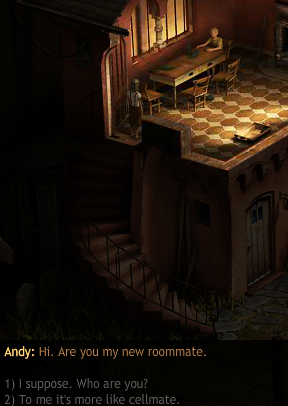 Just click to walk around and interact with things, and your cursor will change to let you know what you can do as you mouse over objects and people. You're not alone in your not-so-gilded cage, but your new "roommate" doesn't seem interested or capable of helping you out, and you'll soon discover you're not the first occupant. It's a wonderful premise, and Escape from 26 has great atmosphere on top, with a wonderful "dollhouse" look to its detailed visuals and a haunting soundtrack. Though some hotspots are small, the game's user-friendly and logical design makes playing smooth and simple.
Just click to walk around and interact with things, and your cursor will change to let you know what you can do as you mouse over objects and people. You're not alone in your not-so-gilded cage, but your new "roommate" doesn't seem interested or capable of helping you out, and you'll soon discover you're not the first occupant. It's a wonderful premise, and Escape from 26 has great atmosphere on top, with a wonderful "dollhouse" look to its detailed visuals and a haunting soundtrack. Though some hotspots are small, the game's user-friendly and logical design makes playing smooth and simple.
The downside is that Escape from 26 suffers from feeling a bit rushed. The "big reveal" makes no sense and is explained poorly in a wall of text with nothing to back it up, and tacking on an abrupt ending to a game that's already on the short side. It's a concept that would have made for a fantastic Twilight Zone episode, and some better writing with more clues and explanations to back it up would have made it stellar. The other issues are, comparatively, minor, like the slow walking speed and two of the game's handful of puzzles basically consisting of housework. (Where's the dialogue option for "How about you give me the key and I don't PUNCH YOU IN THE SOUL.") Still, while it lasts, Escape from 26 is a surprisingly captivating experience and the concept has such enormous potential that I would dearly love to see the development team come back to it again. They clearly have a massive amount of talent, and though it isn't perfect, Escape from 26 is one of the loveliest little escape/adventure games to surface in a while, with a clever premise to boot.
![]() Nothing like a little nostalgia to start the weekend! Be warned, though. This nostalgia comes with a price. That price is your sanity. Because the games are difficult. But that's good. Go play.
Nothing like a little nostalgia to start the weekend! Be warned, though. This nostalgia comes with a price. That price is your sanity. Because the games are difficult. But that's good. Go play.
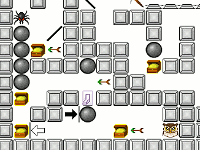 elarel (Win/Mac, free) - Time to torture yourself with pure logic! You have discovered a cave filled with treasure and decided the best thing to do was dive in and collect it all. Problem is there are all sorts of things in the way, such as fences, spiders, conveyor belts, gravity shifters, and other enemies. One part Boulder Dash with a touch of Sokoban, elarel is 22 levels (with 11 user-made levels) of extra-challenging and extra-satisfying puzzle solving.
elarel (Win/Mac, free) - Time to torture yourself with pure logic! You have discovered a cave filled with treasure and decided the best thing to do was dive in and collect it all. Problem is there are all sorts of things in the way, such as fences, spiders, conveyor belts, gravity shifters, and other enemies. One part Boulder Dash with a touch of Sokoban, elarel is 22 levels (with 11 user-made levels) of extra-challenging and extra-satisfying puzzle solving.
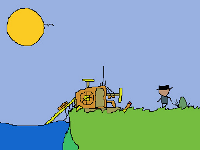 Jerry Clouds (Win/Mac/Linux, free) - Pick up potion, carry to cloud machine, pump some water, repeat. Then... wait for nightfall. Then... NO SPOILERS. A very short and simple game that's more of an oddity than a riveting interactive experience. It's still entertaining, though! Note that the download link is only for Windows. Mac and Linux users should play the Jerry Clouds browser version.
Jerry Clouds (Win/Mac/Linux, free) - Pick up potion, carry to cloud machine, pump some water, repeat. Then... wait for nightfall. Then... NO SPOILERS. A very short and simple game that's more of an oddity than a riveting interactive experience. It's still entertaining, though! Note that the download link is only for Windows. Mac and Linux users should play the Jerry Clouds browser version.
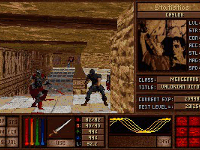 Amulets and Armor (Win/Mac/Linux, free) - Remember first person CRPGs from the '90s? That's what Amulets and Armor is, and it's great! First released in 1997, the game was met with little fanfare. Now a new version has been worked on, making the game easier to play on modern computers with a handful of bug fixes and a native Windows version! Read more about the story behind the game, then start playing, because it's good. Mac and Linux users should download the DOS version of the game and run it using the free DOSBox software.
Amulets and Armor (Win/Mac/Linux, free) - Remember first person CRPGs from the '90s? That's what Amulets and Armor is, and it's great! First released in 1997, the game was met with little fanfare. Now a new version has been worked on, making the game easier to play on modern computers with a handful of bug fixes and a native Windows version! Read more about the story behind the game, then start playing, because it's good. Mac and Linux users should download the DOS version of the game and run it using the free DOSBox software.
![]() Hexage's mobile action RPG Reaper, coming soon to iOS and other devices, is one of those little casual games that just seems to get it. It's easy to pick up whenever you have time, stunning to behold, fast-paced, and, most importantly, fun... the perfect fit for a game that goes in your pocket. Reaper is sort of free, though you can only play to character level ten (which is a good chunk of time) before you have to pay to unlock the rest. $2.99USD gets you the full version, but pay a little more as a one time purchase and you can get extra items, a new game mode, and more quests. You play a lone, miserable swordsman (I don't mean you're unhappy, I mean you're literally an unpleasant person) in a magical world caught between conflict when your sword for hire winds up forcing you into the action. Hack and slash your way through beautiful battles with colourful foes, upgrade your equipment, and more in this easily addictive little game.
Hexage's mobile action RPG Reaper, coming soon to iOS and other devices, is one of those little casual games that just seems to get it. It's easy to pick up whenever you have time, stunning to behold, fast-paced, and, most importantly, fun... the perfect fit for a game that goes in your pocket. Reaper is sort of free, though you can only play to character level ten (which is a good chunk of time) before you have to pay to unlock the rest. $2.99USD gets you the full version, but pay a little more as a one time purchase and you can get extra items, a new game mode, and more quests. You play a lone, miserable swordsman (I don't mean you're unhappy, I mean you're literally an unpleasant person) in a magical world caught between conflict when your sword for hire winds up forcing you into the action. Hack and slash your way through beautiful battles with colourful foes, upgrade your equipment, and more in this easily addictive little game.
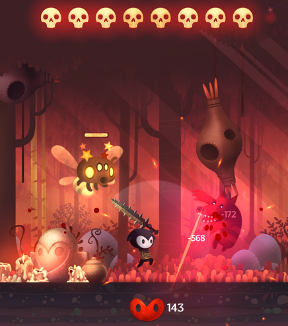 Reaper will walk you through the controls when you start, but they're fairly simple. Tapping on the far left side of the screen will make Reaper go left, and tapping to the right of that will make him/her go right, while tapping the right side of the screen allows you to jump/double-jump. You'll automatically attack nearby enemies, which generates Rage in the form of skulls at the top of the screen, and you can then execute special attacks with various gestures, such as a forward dash, uppercut, and more. The game does have a story, and even a fairly well-written one with an interesting world at its core. But since it's relegated to tiny text at the bottom of the screen with just as tiny character portraits and nothing more, it's hard to really get that invested in it. Which is fine, because taken purely as a hack-and-slash game, Reaper is a winner too. The controls are a snap, the visuals are gorgeous and the action satisfying to dive into and pull off.
Reaper will walk you through the controls when you start, but they're fairly simple. Tapping on the far left side of the screen will make Reaper go left, and tapping to the right of that will make him/her go right, while tapping the right side of the screen allows you to jump/double-jump. You'll automatically attack nearby enemies, which generates Rage in the form of skulls at the top of the screen, and you can then execute special attacks with various gestures, such as a forward dash, uppercut, and more. The game does have a story, and even a fairly well-written one with an interesting world at its core. But since it's relegated to tiny text at the bottom of the screen with just as tiny character portraits and nothing more, it's hard to really get that invested in it. Which is fine, because taken purely as a hack-and-slash game, Reaper is a winner too. The controls are a snap, the visuals are gorgeous and the action satisfying to dive into and pull off.
If I had a complaint, it would be that running after the bizarrely bouncy gold is annoying, and it feels like more often enemies simply swarm you with numbers in the beginning rather than anything that would require a specific strategy. It takes a while for Reaper's difficulty to ramp up, and despite its comparatively simple control scheme, it still manages to provide some of the most engaging and climatic battles you'll see in a mobile RPG. This is what mobile gaming should be... the type of game you can pick up for a few minutes whenever you want, and won't want to put down for far longer. Reaper might not have a lot of bells and whistles when it comes to the gameplay, which is all brawling all the time in a way that makes the story feel almost irrelevant, but it's crafted with love and delivers a fun, fast-paced experience that will challenge your reflexes and keep you coming back for more again and again.
NOTE: This game was played and reviewed on the HTC One S. Game was available in the North American market at the time of publication, but may not be available in other territories. Please see individual app market pages for purchasing info.
![]() Last year you began your saga with Heroes Rise: The Prodigy and now Zachary Sergi and Choice of Games present the next step with Heroes Rise: The Hero Project, a interactive fiction/RPG game where your choices determine your fate in a rich, complex world. If you still have your original save file, you can continue from the end of the first chapter with your stats and relationships in check, or start anew. Don't worry if you haven't played the original, the game does a good job of keeping you up to date as it walks you through the character creation process, though it glosses over a lot. With stats that keep track of public opinion, your relationships, health and powers and more, everything you do has a consequence. From the way people perceive you, to potential romances, unexpected events, battles and beyond, The Hero Project is all about giving you the freedom of choice to succeed... or fail.
Last year you began your saga with Heroes Rise: The Prodigy and now Zachary Sergi and Choice of Games present the next step with Heroes Rise: The Hero Project, a interactive fiction/RPG game where your choices determine your fate in a rich, complex world. If you still have your original save file, you can continue from the end of the first chapter with your stats and relationships in check, or start anew. Don't worry if you haven't played the original, the game does a good job of keeping you up to date as it walks you through the character creation process, though it glosses over a lot. With stats that keep track of public opinion, your relationships, health and powers and more, everything you do has a consequence. From the way people perceive you, to potential romances, unexpected events, battles and beyond, The Hero Project is all about giving you the freedom of choice to succeed... or fail.
As the game begins, following the events of The Prodigy, you find yourself once again struggling to juggle what little remains of your personal, private life with trying to regain the favour you lost and outrun the vivid nightmares you've been having. With few high profile missions coming your way, rent due, and Unemployment Checks not cutting it, you decide to sign up for The Hero Project... a reality TV show designed to find the heroes best suited for forming The American Protectorate. And really, what better way to find the best heroes for the job than a sleazy TV program complete with backstabbing, trials, and alliances? Or maybe that's exactly what you like? You'll get your chance to find out and play the game how you want, but just because you're in show business now doesn't mean the rest of the world is standing still, and an entirely new threat, more deadly even than the rising anti-powered opinions, is about to come into play...
And, again, The Hero Project continues Choice of Games's tradition of allowing for all the inclusive customisation other games sorely lack, from allowing you to choose the sexuality of your character and even a more fluid gender option than man or woman, which is something you rarely see. All of it is very well written and thought out, buoyed by a new cast of interesting heroes and villains to get to know, but it does feel a bit less personally relevant than the origin-centric story of the first game, which may lose some appeal with certain players. Especially when the game jumps forward months at a time. Like its predecessor, The Hero Project is very text-heavy, and you can go pages without making a choice at all, much less one that feels like it has any weight beyond the cosmetic. But it's a lengthy game with a lot of surprises and action, as well as perhaps a greater emphasis on character and even political relationships that before. The Hero Project is a worthy successor that may lack the personal appeal of the original, but expands its world and cast of characters in ways that make for an exciting read.
![]() Terry Cavanagh's Naya's Quest is a bit of an unexpected breed... something like an isometric adventure game crossed with a puzzle platformer with a post-apocalyptic story at its heart. You play as Naya, a young girl who travels to an abandoned town after meeting a monk who claims he left something behind there that may be of use to her. There are a few different control options to choose from, but most of them are variations on using the [arrow] keys to change the direction Naya's facing and move her forward, with [Z] or the [spacebar] to jump forward in the direction you're facing, allowing you to cross small gaps or hop up on short platforms. To discuss the rest of the game is actually a minor spoiler as to what the monk has left Naya, so if you'd rather find out for yourself, stop reading now, but this wouldn't be much of a review if it didn't review the game's mechanics and gameplay, and so...
Terry Cavanagh's Naya's Quest is a bit of an unexpected breed... something like an isometric adventure game crossed with a puzzle platformer with a post-apocalyptic story at its heart. You play as Naya, a young girl who travels to an abandoned town after meeting a monk who claims he left something behind there that may be of use to her. There are a few different control options to choose from, but most of them are variations on using the [arrow] keys to change the direction Naya's facing and move her forward, with [Z] or the [spacebar] to jump forward in the direction you're facing, allowing you to cross small gaps or hop up on short platforms. To discuss the rest of the game is actually a minor spoiler as to what the monk has left Naya, so if you'd rather find out for yourself, stop reading now, but this wouldn't be much of a review if it didn't review the game's mechanics and gameplay, and so...
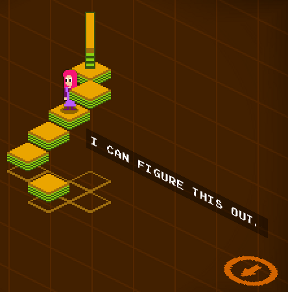 The monk's gift is a machine that, when activated with [X], reduces the level to a cross-section of the world around you, and once you leave the town with it, the game begins in earnest. See, although it may look like most everything is on the same level, more or less, layouts are designed to play on your perspective. Floors that look like a single straight unbroken run can actually be composed of different pieces in different alignments on the grid that makes up your isometric world, which means that pitfalls can be hidden anywhere, to say nothing of how challenging navigation can become. The device's cross-section ability allows you to break up what you see into chunks that, with the help of a grid below them, can help you to figure out the true lay of the land. Fall into the abyss, and you'll lose one of your three lives. Each room allows you to try three times to complete it, and if your lives run out, you can either go back to the last save square you passed, or restart from the beginning of the last room you successfully completed.
The monk's gift is a machine that, when activated with [X], reduces the level to a cross-section of the world around you, and once you leave the town with it, the game begins in earnest. See, although it may look like most everything is on the same level, more or less, layouts are designed to play on your perspective. Floors that look like a single straight unbroken run can actually be composed of different pieces in different alignments on the grid that makes up your isometric world, which means that pitfalls can be hidden anywhere, to say nothing of how challenging navigation can become. The device's cross-section ability allows you to break up what you see into chunks that, with the help of a grid below them, can help you to figure out the true lay of the land. Fall into the abyss, and you'll lose one of your three lives. Each room allows you to try three times to complete it, and if your lives run out, you can either go back to the last save square you passed, or restart from the beginning of the last room you successfully completed.
The lives system is, largely, the biggest problem with the game since it doesn't provide anything to the experience beyond frustration. It's such a clever, challenging concept of a puzzle that this arbitrary slap on the wrist feels jarringly out of place, and could lead to a few rage quits when someone might otherwise be inclined to plug away at it contentedly. It's a fabulous concept that might take you a while to wrap your brain around, but is well worth the effort... though the ending feels more than a little abrupt.
Though the narrative is sparse, revealed in bits and pieces as you play through the game's three sets of levels, it's a tantalizing little mystery that compels you forward... though perhaps not quite as much as the increasingly fiendish level design. Some stages were so deceptively simple looking and yet so clever in their solutions that I had to laugh in delight. The care that's gone into the level design is clear, and once the new twists start being introduced in later levels, you'll find the challenge ramping up in surprising ways. Suffice it to say, Naya's Quest has more than one trick up its sleeve, and is easily one of the most delightfully difficult puzzle games to come around in a long, long time. It's not easy to reconcile the fact that your eyes are lying to you, but it's even harder to innovate, and Terry Cavanagh continues to establish himself as a creator who finds as much joy in creativity and experimentation as we do in enjoying the fruits of his labours. Even when they give me a headache.
Naya's Quest is also available to play on Terry Cavanagh's official site!
![]() A young woman. A shady research facility. A psychotic AI. Useful cubes. A lot of turrets that shoot lasers. While the basic formula of The Telekinetic Incident will be familiar to anyone who's played Portal, Matthew Fearrington has managed to take the basic recipe and come up with an original puzzle platform game that pays homage to the Portal series while presenting a unique set of challenges.
A young woman. A shady research facility. A psychotic AI. Useful cubes. A lot of turrets that shoot lasers. While the basic formula of The Telekinetic Incident will be familiar to anyone who's played Portal, Matthew Fearrington has managed to take the basic recipe and come up with an original puzzle platform game that pays homage to the Portal series while presenting a unique set of challenges.
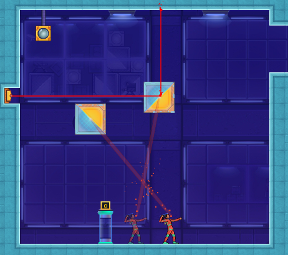 In the game, you play as a clone of Sarah Walker, and you've been given telekinetic abilities by Ifrit Incorporated. Navigating the laboratory is easy: use [WAD] to move and jump. Not only can you move objects around by clicking and dragging, but you can stop time in a small area around your cursor by right-clicking or holding [E], and create shields around yourself by holding [S]. Oh, and sometimes you have an ally, who you also have to get to an exit door. You can't control him... all you can do is keep him from getting killed.
In the game, you play as a clone of Sarah Walker, and you've been given telekinetic abilities by Ifrit Incorporated. Navigating the laboratory is easy: use [WAD] to move and jump. Not only can you move objects around by clicking and dragging, but you can stop time in a small area around your cursor by right-clicking or holding [E], and create shields around yourself by holding [S]. Oh, and sometimes you have an ally, who you also have to get to an exit door. You can't control him... all you can do is keep him from getting killed.
What really makes the game challenging, however, is that Sarah's clone can make clones of herself, and these clones will continue doing whatever they were doing when Sarah returns to her own body. The existence of the cloning tubes means you can make stairways out of shields, hold cubes up in just the right place to redirect lasers, and do a whole bunch of other things that probably violate some law of spacetime or other. Can you uncover all the trophies and find the story behind Ifrit Incorporated? One thing is for sure, you can never have enough clones...
![]() Here's the thing about Strata, a beautiful mobile puzzle game created by Graveck: it can be tough to wrap your head around. On the surface it seems simple enough, as all you have to do is swipe to lay fabric-like strips of color. Once you sit down and see even the simplest of puzzles, though, you'll realize how the game creates a nightmare out of order and sequence. Not the bad kind of nightmare, of course. The good kind that makes you want to sit and stare until you figure everything out.
Here's the thing about Strata, a beautiful mobile puzzle game created by Graveck: it can be tough to wrap your head around. On the surface it seems simple enough, as all you have to do is swipe to lay fabric-like strips of color. Once you sit down and see even the simplest of puzzles, though, you'll realize how the game creates a nightmare out of order and sequence. Not the bad kind of nightmare, of course. The good kind that makes you want to sit and stare until you figure everything out.
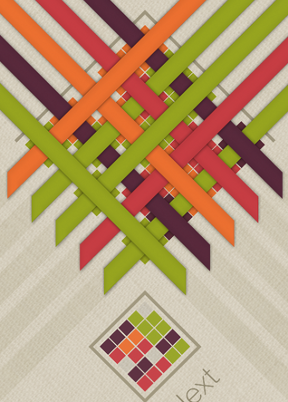 Levels in Strata feature a slanted grid with one or more cells shaded with different colors. The bottom of the screen shows you what kind of color strips you can use, each one corresponding to blocks on the grid. By swiping the edges of the grid you can draw these lines one at a time. In order to complete the level, you need to cover each square with the same color of fabric. Fabric always covers the entire grid, and only the topmost piece counts as "touching" the square below. The challenge is figuring out which pieces to lay first so the last move you make sets everything to completion.
Levels in Strata feature a slanted grid with one or more cells shaded with different colors. The bottom of the screen shows you what kind of color strips you can use, each one corresponding to blocks on the grid. By swiping the edges of the grid you can draw these lines one at a time. In order to complete the level, you need to cover each square with the same color of fabric. Fabric always covers the entire grid, and only the topmost piece counts as "touching" the square below. The challenge is figuring out which pieces to lay first so the last move you make sets everything to completion.
The description is pretty simple, but Strata very quickly shows you what it's capable of doing. Massive grids with multiple colors quickly becomes an exercise in pattern recognition and logistics. It's never difficult to figure out the solution, however. It's just a matter of learning the tricks and utilizing them in the proper order. There's a quick restart button and the ability to undo moves one at a time, but apart from that, it's just you and a bunch of strips of fabric. Good luck!
NOTE: This game was played and reviewed on the iPad 3. Game was available in the North American market at the time of publication, but may not be available in other territories. Please see individual app market pages for purchasing info.
![]() Dancing, bakeries, rude people, and life, the universe, and (literally) everything star in this week's Link Dump Friday featuring webtoys, action, interactive fiction, and elusive little green men who like to hide all around you.
Dancing, bakeries, rude people, and life, the universe, and (literally) everything star in this week's Link Dump Friday featuring webtoys, action, interactive fiction, and elusive little green men who like to hide all around you.
 The Last Tango - The number of dances I know directly correlates to how obnoxiously catchy the accompanying songs are, so not to brag or anything, but I'm pretty sweet at Gangnam Style and Caramelldansen. (IS TOO A DANCE) Otherwise? That's it. If I had to dance for my life like the two super-spies in Barking Dog Interactive's clever game of timing and reflexes, I probably wouldn't last very long. As hazards appear onscreen, it's up to you to figure out the correct dance move to execute in time to avoid it. Simple, yet swanky and tricky. Not bad for a game originally made in 48 hours!
The Last Tango - The number of dances I know directly correlates to how obnoxiously catchy the accompanying songs are, so not to brag or anything, but I'm pretty sweet at Gangnam Style and Caramelldansen. (IS TOO A DANCE) Otherwise? That's it. If I had to dance for my life like the two super-spies in Barking Dog Interactive's clever game of timing and reflexes, I probably wouldn't last very long. As hazards appear onscreen, it's up to you to figure out the correct dance move to execute in time to avoid it. Simple, yet swanky and tricky. Not bad for a game originally made in 48 hours! Nested - It may be from the same hands that sculpted Cookie Clicker, but this little webtoy is very different indeed. Just click to expand each option and explore, discovering the different things that make up our universe. ... sort of. See, it's deliberately more than a little weird, and there are tons of silly secrets to uncover, making this something you can spend quite some time obsessively playing around with.
Nested - It may be from the same hands that sculpted Cookie Clicker, but this little webtoy is very different indeed. Just click to expand each option and explore, discovering the different things that make up our universe. ... sort of. See, it's deliberately more than a little weird, and there are tons of silly secrets to uncover, making this something you can spend quite some time obsessively playing around with. Magi Story - Whether Bryce Mainville's Twine tale is a "game" is a topic of debate for people more label-oriented by myself, but it is clever. Fair warning... contains offensive language and racism, but less as a message and more as a point about the people in the world around us. What do you do when everyone seems to want something from you without giving anything in return? A unique presentation and engaging writing make this one a winner.
Magi Story - Whether Bryce Mainville's Twine tale is a "game" is a topic of debate for people more label-oriented by myself, but it is clever. Fair warning... contains offensive language and racism, but less as a message and more as a point about the people in the world around us. What do you do when everyone seems to want something from you without giving anything in return? A unique presentation and engaging writing make this one a winner. Find the Escape-Men 62: In the Bakery - Before I was sucked up by the whirligig of indie games journalism, I used to run a bakery, and I can honestly say I was never once locked inside. Locked out, sure, especially at 3AM in the middle of winter because the universe hates me, but never in. Probably because my landlord wasn't no1game and didn't expect me to pay my rent in escape game puzzles and little green men.
Find the Escape-Men 62: In the Bakery - Before I was sucked up by the whirligig of indie games journalism, I used to run a bakery, and I can honestly say I was never once locked inside. Locked out, sure, especially at 3AM in the middle of winter because the universe hates me, but never in. Probably because my landlord wasn't no1game and didn't expect me to pay my rent in escape game puzzles and little green men.
![]() Ironclad Tactics is a turn-based strategy game created by Zachtronics, the studio behind The Codex of Alchemical Engineering and SpaceChem. Set in an alternate-history post-U.S. Civil War era, the game pits you against the Confederates as you march your way across the country, one town and one battle at a time. There's a twist, however: steampunk technology is a thing, meaning your infantry units will have to take on ironclad contraptions and well-equipped automatons in addition to gunslingers and musket wielders. It makes for a really entertaining setting, but you'll feel bad for those squishy human soldiers.
Ironclad Tactics is a turn-based strategy game created by Zachtronics, the studio behind The Codex of Alchemical Engineering and SpaceChem. Set in an alternate-history post-U.S. Civil War era, the game pits you against the Confederates as you march your way across the country, one town and one battle at a time. There's a twist, however: steampunk technology is a thing, meaning your infantry units will have to take on ironclad contraptions and well-equipped automatons in addition to gunslingers and musket wielders. It makes for a really entertaining setting, but you'll feel bad for those squishy human soldiers.
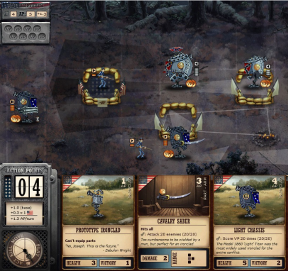 Ironclad Tactics uses cards to represent everything you can do. At the top is a 9x4 grid where opposing forces meet in battle. Below is your hand, a scant five cards that are drawn randomly from the deck you create. Cards come in a number of types from around half a dozen factions, ranging from combat units to tactical actions, equipment for certain machines, and even extra things like hats and a cat. Both of which serve a purpose, of course. Each turn you earn action points that can be used to place cards. Your goal is to march your forces across the field to deliver tokens behind enemy lines. The objectives vary between levels, but the basic idea remains the same: protect your front, hold key positions on the battlefield, and keep a good balance between offensive and defensive playing styles. It's much easier to write it out than it is to actually accomplish, which is one of the many things that makes this game so intriguing.
Ironclad Tactics uses cards to represent everything you can do. At the top is a 9x4 grid where opposing forces meet in battle. Below is your hand, a scant five cards that are drawn randomly from the deck you create. Cards come in a number of types from around half a dozen factions, ranging from combat units to tactical actions, equipment for certain machines, and even extra things like hats and a cat. Both of which serve a purpose, of course. Each turn you earn action points that can be used to place cards. Your goal is to march your forces across the field to deliver tokens behind enemy lines. The objectives vary between levels, but the basic idea remains the same: protect your front, hold key positions on the battlefield, and keep a good balance between offensive and defensive playing styles. It's much easier to write it out than it is to actually accomplish, which is one of the many things that makes this game so intriguing.
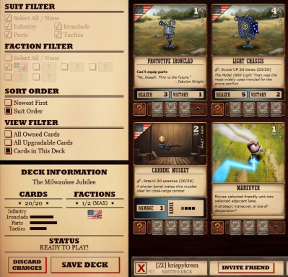 Analysis: Ironclad Tactics isn't as foreboding of a game as KOHCTPYKTOP: Engineer of the People or Bureau of Steam Engineering. It's surprisingly easy to learn, but the tactical depth is practically bottomless. The game twists your objectives around so you never slip into complacency. Just when you think you've got things figured out, the next level throws you up against half a dozen ironclads and says "ok, now just stay alive for a few minutes". No problem, game. No problem.
Analysis: Ironclad Tactics isn't as foreboding of a game as KOHCTPYKTOP: Engineer of the People or Bureau of Steam Engineering. It's surprisingly easy to learn, but the tactical depth is practically bottomless. The game twists your objectives around so you never slip into complacency. Just when you think you've got things figured out, the next level throws you up against half a dozen ironclads and says "ok, now just stay alive for a few minutes". No problem, game. No problem.
Story mode is full-featured and takes you through a journey across the continent, complete with comic-style cutscenes that push the story along. Co-o allows you and some friends to join forces against the Confederates, and many stages have competitive skirmish modes or puzzle modes you can play to unlock additional cards. Plenty of alternative strategic action to indulge yourself in, all in the name of upgrading your cards so you can face the challenges that lie ahead.
Ironclad Tactics hits a sweet middleground for the Zachtronics team. It isn't the kind of game you have to earn the equivalent of a PhD in just to complete, but it's not something you can pick up and blaze through without breaking a sweat, either. The depth of strategy and the undeniably addictive act of collecting and upgrading cards will keep you thoroughly hooked until you see things through to the end.
![]() Windows:
Windows:
Get the full version (official website)
Get the full version (via Steam)
![]() Mac OS X:
Mac OS X:
Get the full version (official website)
Get the full version (via Steam)
![]() Linux:
Linux:
Get the full version (official website)
Get the full version (via Steam)
![]() Escape games need some challenge to necessitate an "escape" rather than a mere "leaving", but the promise of cagey puzzles isn't enough to lure us inside in the first place, and locked doors alone won't keep us hanging around. That trick requires more appealing methods, such as an intriguing premise or stunning surrounding or, as in Yona Yona Games' Kagome, a charming character: the little blue bird. Here, your goal is both your freedom as well as that of your feathered friend. A sprinkling of puzzles bars the way: simple enough to overcome by logic even as a smattering of misdirection forces just enough diligent thinking to make that door key well-earned.
Escape games need some challenge to necessitate an "escape" rather than a mere "leaving", but the promise of cagey puzzles isn't enough to lure us inside in the first place, and locked doors alone won't keep us hanging around. That trick requires more appealing methods, such as an intriguing premise or stunning surrounding or, as in Yona Yona Games' Kagome, a charming character: the little blue bird. Here, your goal is both your freedom as well as that of your feathered friend. A sprinkling of puzzles bars the way: simple enough to overcome by logic even as a smattering of misdirection forces just enough diligent thinking to make that door key well-earned.
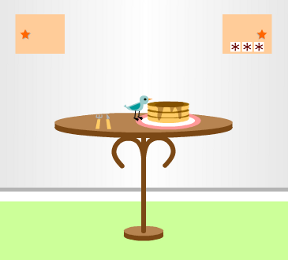 Play is standard fare for the genre, although some amusing details and a clean design make up for any shortfalls. Namely, the untranslated narrative could spark disappointment if not a sort of fomo for those who can't read Japanese. Because of a stagnate cursor, try to be mindful where you click. I'm not agreeing it's a pixel hunt, only that haphazard clicking just anywhere on an item is unlikely to turn up needed clues. There's no save feature but can be replayed quickly if you want to catch both endings. In Japan, Kagome is a child's singing game somewhat like Ring-Around-the-Rosie and this room escape has a similar jubilant sing songy spirit, which should lighten yours.
Play is standard fare for the genre, although some amusing details and a clean design make up for any shortfalls. Namely, the untranslated narrative could spark disappointment if not a sort of fomo for those who can't read Japanese. Because of a stagnate cursor, try to be mindful where you click. I'm not agreeing it's a pixel hunt, only that haphazard clicking just anywhere on an item is unlikely to turn up needed clues. There's no save feature but can be replayed quickly if you want to catch both endings. In Japan, Kagome is a child's singing game somewhat like Ring-Around-the-Rosie and this room escape has a similar jubilant sing songy spirit, which should lighten yours.
![]() I don't know why it is that something bad inevitably takes place when you send a small crew to space and cram them together in a ship for months on end. But a lot of great sci-fi stories wouldn't exist without that premise, and now we've got another one to add to the list. A narrative-driven exploration game, Captain Robert by Galen Koehne takes place on a space ship where something mysterious is going on. It's up to you to figure out what happened to your crew and get out alive.
I don't know why it is that something bad inevitably takes place when you send a small crew to space and cram them together in a ship for months on end. But a lot of great sci-fi stories wouldn't exist without that premise, and now we've got another one to add to the list. A narrative-driven exploration game, Captain Robert by Galen Koehne takes place on a space ship where something mysterious is going on. It's up to you to figure out what happened to your crew and get out alive.
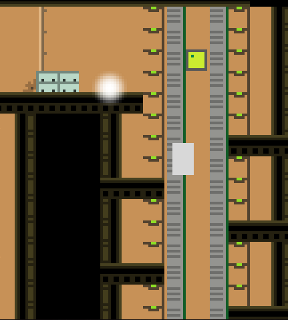 Use the [arrow] keys to move, and the [x] key to advance through text, open doors, or otherwise interact with the world. You'll find different keycards around the ship. Watch the upper left hand corner of the screen to keep track of what color doors you can currently access. Once you discover the gravity override, press the [c] button to toggle low gravity. The gameplay itself isn't difficult, but it is satisfying to slowly gain access to the whole ship while piecing together the mysterious happenings. Every new tidbit of information you glean only serves to make you keep going to find out more. You get a pretty clear picture of what happened by the end of the game, though the ending itself is open to interpretation. However tempted you might be, don't get out that Sharpie and draw a face on Captain Robert. You'll thank me later. Yes, he looks like a big white rectangle, but the game was made in only 48 hours for the most recent Ludum Dare competition, so don't let it bother you. Just get going and explore your ship.
Use the [arrow] keys to move, and the [x] key to advance through text, open doors, or otherwise interact with the world. You'll find different keycards around the ship. Watch the upper left hand corner of the screen to keep track of what color doors you can currently access. Once you discover the gravity override, press the [c] button to toggle low gravity. The gameplay itself isn't difficult, but it is satisfying to slowly gain access to the whole ship while piecing together the mysterious happenings. Every new tidbit of information you glean only serves to make you keep going to find out more. You get a pretty clear picture of what happened by the end of the game, though the ending itself is open to interpretation. However tempted you might be, don't get out that Sharpie and draw a face on Captain Robert. You'll thank me later. Yes, he looks like a big white rectangle, but the game was made in only 48 hours for the most recent Ludum Dare competition, so don't let it bother you. Just get going and explore your ship.
![]() Got your shiny iOS device charged up and ready to go? You're going to need a few hours and a lot of battery power to handle this game. Infinity Blade III from Chair Entertainment concludes the trilogy of combat games with some serious style. It keeps the nigh-on perfect basic formula the same, introducing a few bonuses, tweaking some inventory and item features, and dropping on a whole host of new foes to face off against. It's big, bad, and oh so pretty to look at, making Infinity Blade III feel like a full-fledged PC game packed into your iPhone.
Got your shiny iOS device charged up and ready to go? You're going to need a few hours and a lot of battery power to handle this game. Infinity Blade III from Chair Entertainment concludes the trilogy of combat games with some serious style. It keeps the nigh-on perfect basic formula the same, introducing a few bonuses, tweaking some inventory and item features, and dropping on a whole host of new foes to face off against. It's big, bad, and oh so pretty to look at, making Infinity Blade III feel like a full-fledged PC game packed into your iPhone.
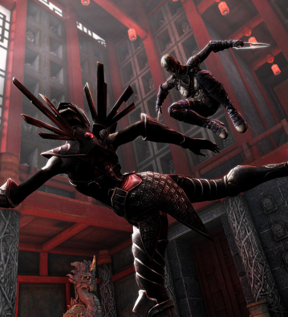 Infinity Blade III opens things up a bit as compared to the strict Infinity Blade II. You aren't confined to a single assault on one tower, for example. Instead you get to roam an entire world map, taking on massive creatures (and a dragon!) one by one. The story pushes forward in a straight line, so the feeling of freedom is largely an illusion. It does create new non-combat possibilities for the game, including a blacksmith who can upgrade your weapons and a hideout where you can kick back and sip a cup of tea. Not really that last part, but you get the picture.
Infinity Blade III opens things up a bit as compared to the strict Infinity Blade II. You aren't confined to a single assault on one tower, for example. Instead you get to roam an entire world map, taking on massive creatures (and a dragon!) one by one. The story pushes forward in a straight line, so the feeling of freedom is largely an illusion. It does create new non-combat possibilities for the game, including a blacksmith who can upgrade your weapons and a hideout where you can kick back and sip a cup of tea. Not really that last part, but you get the picture.
Infinity Blade III does a good job balancing quiet storytelling with intense combat. Taking on giant foes is still the game's bread and butter, and battles themselves are largely identical to the previous games. By tapping and swiping the screen you can dodge and parry attacks so your pretty little head stays on your shoulders. Attacking is handled the same way, but you can't just smash your palm on the screen and obtain victory. You have to watch your opponent, memorize his moves, and pick the precise moment when you unleash your fury. It's extremely satisfying and visceral.
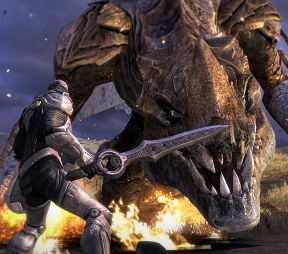 Outside of combat you get to tally up your XP and work with all sorts of fantastic items. Weapons come in three attack varieties, allowing you to pick blades that suit your playing style (i.e. fast and light, heavy and slow, middle of the road). You can brew potions and forge gems, which is new to the series, but it really doesn't add all that much to the game. A new skill system lets you drop points into stats to keep your character constantly improving as he or she levels up, giving Infinity Blade III more of an RPG feel.
Outside of combat you get to tally up your XP and work with all sorts of fantastic items. Weapons come in three attack varieties, allowing you to pick blades that suit your playing style (i.e. fast and light, heavy and slow, middle of the road). You can brew potions and forge gems, which is new to the series, but it really doesn't add all that much to the game. A new skill system lets you drop points into stats to keep your character constantly improving as he or she levels up, giving Infinity Blade III more of an RPG feel.
Analysis: Infinity Blade quickly established itself as one of the powerhouses of mobile gaming. Subsequent releases have done nothing but raise the standards in terms of playability, graphics, and overall wow-factor. The third in the series doesn't make as big of a leap as the second game did, but there's only so much you can change without ruining what makes the series so enjoyable.
A few fixes here and there, some additional weapons, extra RPG-style stat tweaking, and more open gameplay. Really, Infinity Blade III didn't have to reinvent itself in order to impress. The visuals alone are enough to make you float over to your iOS device like a cartoon character who sniffed a pie on a windowsill. When you add in the always-epic combat and the addictive item management, you've got a recipe for an honestly engaging game.
NOTE: This game was played and reviewed on the iPad 3. Game was available in the North American market at the time of publication, but may not be available in other territories. Please see individual app market pages for purchasing info.
![]() You knew it'd happen, and almost by surprise it appeared! Rovio's Angry Birds Star Wars II has been unleashed, packing in over 30 playable characters from the Star Wars universe along with a somewhat unconventional tie-in with real-world toys. At its core, this new Angry Birds game is still Angry Birds, which means you know it'll look good, play well, and offer a lot of entertainment for a relatively small price tag.
You knew it'd happen, and almost by surprise it appeared! Rovio's Angry Birds Star Wars II has been unleashed, packing in over 30 playable characters from the Star Wars universe along with a somewhat unconventional tie-in with real-world toys. At its core, this new Angry Birds game is still Angry Birds, which means you know it'll look good, play well, and offer a lot of entertainment for a relatively small price tag.
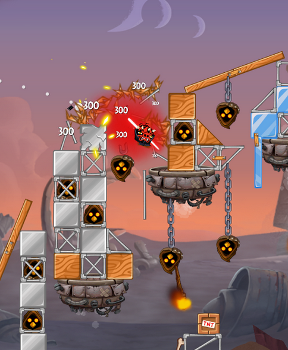 Angry Birds Star Wars II works just like any other Angry Birds game. You start with a few birds on the left, ready to be fired from a slingshot. Tap and pull back to choose the firing angle, then release to send the bird flying. Characters have special abilities you can unleash, such as pulling out the ole lightsaber to tear apart the rickety pig structures. Part of the fun is finding new and efficient ways to knock out all of the pigs. Another part is doing it as bird versions of popular Star Wars characters!
Angry Birds Star Wars II works just like any other Angry Birds game. You start with a few birds on the left, ready to be fired from a slingshot. Tap and pull back to choose the firing angle, then release to send the bird flying. Characters have special abilities you can unleash, such as pulling out the ole lightsaber to tear apart the rickety pig structures. Part of the fun is finding new and efficient ways to knock out all of the pigs. Another part is doing it as bird versions of popular Star Wars characters!
The thing about Angry Birds Star Wars II is that you can tell it's just showed up for the paycheck. The marketing talks about joining the Pork Side, which is kind of funny seeing as how that's what the game seems to have done itself. Angry Birds Star Wars II is almost exactly like its predecessors. The only talking point is the 30 new characters, which admittedly is kind of entertaining, but ultimately there just for the tie-ins. Unlocking those characters is an exercise in in-app purchases and buying Telepod toys, physical figurines you bring home and "scan" into the game. A bit excessive, but seeing as how almost half of Rovio's 2012 revenue came from the sale of physical goods, it was inevitable something like this happened at some point.
Once you look past the income vs. innovation tug of war, you'll still have a great time with Angry Birds Star Wars II. It's Angry Birds, after all, and integrating Star Wars settings and characters is a treat no matter how you cut it. The base price tag is low, it's a universal app, and you can unlock a lot of content through regular play, allowing you to keep your wallet closed unless you just can't stand to live without that Darth Maul Telepod.
NOTE: This game was played and reviewed on the Nexus 4. Game was available in the North American market at the time of publication, but may not be available in other territories. Please see individual app market pages for purchasing info.
![]() Hey, I think we should have some bonding time. Luckily, Sokobond by Alan Hazelden and Harry Lee is a puzzle game that gives you just that. The goal of each level is to bond all of the atoms together to make one molecule, by controlling one atom that guides the rest into position. However, when the rest of the atoms are trapped in a Sokoban-style maze, you've got to get your electrons in order in order to bring everything together!
Hey, I think we should have some bonding time. Luckily, Sokobond by Alan Hazelden and Harry Lee is a puzzle game that gives you just that. The goal of each level is to bond all of the atoms together to make one molecule, by controlling one atom that guides the rest into position. However, when the rest of the atoms are trapped in a Sokoban-style maze, you've got to get your electrons in order in order to bring everything together!
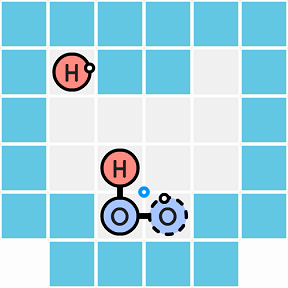 One of the nice things about Sokobond is that you don't have to have any chemistry experience in order to play; you just need to focus on the number of valence electrons each atom has (that's how many loose electrons are floating around the atom, waiting to make a bond with something else). Hydrogen always has one valence electron, Oxygen always has two, Nitrogen has three, and Carbon has four. You control the atom with the dotted outline with the [arrow] keys. When you move into a square next to another atom, a bond will form between the two of you (assuming you both have a valence electron to spare), and you'll move together as a group. When you connect all of the atoms in one molecule with no electrons left over, you've beaten the level.
One of the nice things about Sokobond is that you don't have to have any chemistry experience in order to play; you just need to focus on the number of valence electrons each atom has (that's how many loose electrons are floating around the atom, waiting to make a bond with something else). Hydrogen always has one valence electron, Oxygen always has two, Nitrogen has three, and Carbon has four. You control the atom with the dotted outline with the [arrow] keys. When you move into a square next to another atom, a bond will form between the two of you (assuming you both have a valence electron to spare), and you'll move together as a group. When you connect all of the atoms in one molecule with no electrons left over, you've beaten the level.
The tricky bit comes in when you're asked to create the molecules in a tiny space with walls that block your movements, especially when you've accumulated a large molecular chain behind you. In some levels, you may find red splitters that break atoms off if it passes between them, green bonders that add an extra bond between two already-bound atoms, and blue pivot points that your chain will wrap around, allowing you to change its shape without disconnecting. As in many old-fashioned Sokoban puzzles, you'll spend a decent portion of the level rearranging the atoms to get yourself into a good position before you make your final moves to pull everything together. When you do, you're rewarded with a quick fact about the compound you've just created, and unlock a little bit more of an expanding map with a certain familiar shape.
Even if you're not a science nut, Sokobond is very accessible puzzle that only requires you to learn a few simple rules to play. If you're looking a good game to bond to, you need not look further than the element-ary design and tricky challenges Sokobond has to offer.
![]() Windows:
Windows:
Get the full version
![]() Mac OS X:
Mac OS X:
Get the full version
![]() Linux:
Linux:
Get the full version
![]() Kitty Island is a haven for cats of all types: long days for sleeping, long nights for pouncing on things, and an endless supply of catnip. The Aquarium Alliance, however, hates feline happiness and has stolen all of this wonderful catnip glory. Time for the Combat Cats to load their weapons and take the battle to those dastardly fish.
Kitty Island is a haven for cats of all types: long days for sleeping, long nights for pouncing on things, and an endless supply of catnip. The Aquarium Alliance, however, hates feline happiness and has stolen all of this wonderful catnip glory. Time for the Combat Cats to load their weapons and take the battle to those dastardly fish.
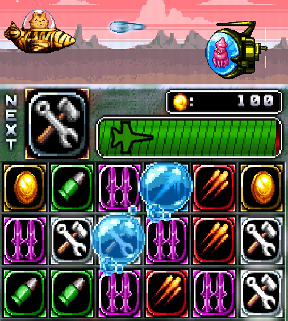 The game itself works on a matching system where you swap tiles and combine four or more like items. You have an array of weapons at your disposal: poison that damages enemies slowly over time, missiles that spread damage over a large area, fireballs that do massive damage, and a freeze ray that will stop the world. (Okay, it only keeps your enemies from firing. It's still useful, right?) Other tiles include wrenches that repair your ship and coins that let you buy upgrades in the shop. The more combos you make, the more likely you are to unlock the nuke, which you can use to obliterate pretty much anything in your path. But be careful of the tricks those fish have in store for you, though. Fish are notorious for fighting dirty.
The game itself works on a matching system where you swap tiles and combine four or more like items. You have an array of weapons at your disposal: poison that damages enemies slowly over time, missiles that spread damage over a large area, fireballs that do massive damage, and a freeze ray that will stop the world. (Okay, it only keeps your enemies from firing. It's still useful, right?) Other tiles include wrenches that repair your ship and coins that let you buy upgrades in the shop. The more combos you make, the more likely you are to unlock the nuke, which you can use to obliterate pretty much anything in your path. But be careful of the tricks those fish have in store for you, though. Fish are notorious for fighting dirty.
Combat Cats has a quirky sense of humor that goes well with its fast pace, and each element fits together nicely to create a cohesive whole. (Where else can you play as Grumpy Cat flying a cardboard airplane?) The upgrade system and survival mode keep the game engaging even when you run out of levels, and the game itself is both well-balanced and adorable, and more entertaining than real catnip.
NOTE: This game was played and reviewed on the LG Optimus L9. Game was available in the North American market at the time of publication, but may not be available in other territories. Please see individual app market pages for purchasing info.
![]() When they came, the Earth changed. Their weapons were deadly, but their ecosystem modifiers were worse. Clear skies turned into clouds of poison. Thousands of species of animals went extinct, and the human race is close. You, though, are a survivor. Always have been. But the surface world is deadly, and you need to find shelter soon. Earth Taken is an action platformer by SeethingSwarm that casts you as the desperate measures that the desperate needs of an alien menace require.
When they came, the Earth changed. Their weapons were deadly, but their ecosystem modifiers were worse. Clear skies turned into clouds of poison. Thousands of species of animals went extinct, and the human race is close. You, though, are a survivor. Always have been. But the surface world is deadly, and you need to find shelter soon. Earth Taken is an action platformer by SeethingSwarm that casts you as the desperate measures that the desperate needs of an alien menace require.
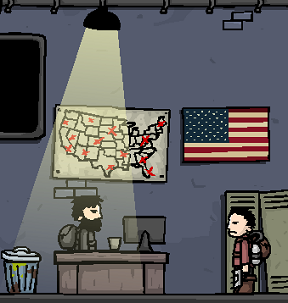 Move with the [arrow] keys and jump/double jump with [S] making your way to the objective or safe-house at the end of each level. Vehicles, exploding barrels, and other shootables (not to mention all the aliens that will find you and will kill you) can be taken care of by firing your gun with [A], reloading when neccesary with [R]. [Spacebar] enters doors, loots dead bodies, and performs a melee attack on enemies. Throughout the landscape, supplies can be collected, including health-packs which can be traded in at outposts for upgrades, or consumed with [E] for a quick recharge. The air in the environment is toxic, so make sure you have enough gas mask filters on hand to avoid the hit to your health. Found survivors will join you as allies, and will be quite useful in a fight. There are eleven levels in all, each one bringing you closer to the truth as to how the invasion can be stopped.
Move with the [arrow] keys and jump/double jump with [S] making your way to the objective or safe-house at the end of each level. Vehicles, exploding barrels, and other shootables (not to mention all the aliens that will find you and will kill you) can be taken care of by firing your gun with [A], reloading when neccesary with [R]. [Spacebar] enters doors, loots dead bodies, and performs a melee attack on enemies. Throughout the landscape, supplies can be collected, including health-packs which can be traded in at outposts for upgrades, or consumed with [E] for a quick recharge. The air in the environment is toxic, so make sure you have enough gas mask filters on hand to avoid the hit to your health. Found survivors will join you as allies, and will be quite useful in a fight. There are eleven levels in all, each one bringing you closer to the truth as to how the invasion can be stopped.
Earth Taken sometimes feels like an action game in the body of a survival horror game: while there is a great deal of running and/or gunning, the emphasis on health and equipment management, limited ammo, and tough enemies certainly suggests the latter. Not to mention there's the influx of vaguely threatening graffiti and the whole "maybe the real monsters... are us" undercurrent to the plot, which is getting a little overdone by now. However, even if Earth Taken is a bit of a mish-mash, it is an incredibly addictive one, and scores points at the very least for going with extraterrestrials as antagonists rather than the undead. The developers use an effective palette of purple and greens to create a landscape that oozes with toxicity, and the fact that the game keeps track of every alien, light, trashcan, or dire crow you blast is very satisfying. The whole thing ends a little abruptly, with the Earth still a little, y'know, taken (sequel please?) but overall, Earth Taken is a solid scifi romp that action fans will be quite taken with.
![]() With the success of recent 72-hour development competitions and game jams, not to mention how there has never once yet been a bandwagon I won't jump on and cling to as if for dear life, I'd like to announce Trickum Dare: The 72,000 Hour Game Jam! I'm certain that the pressures of such a time constraint will bring forth the innovation and creativity these competitions are known for. Or at least we'll find out when the judging period starts in 2022. But if you can't wait that long for gaming excitement, might I suggest these wonderful interactive fiction, puzzle, and arcade hits from the JayIsGames Vault? Be quick, though: the clock is ticking.
With the success of recent 72-hour development competitions and game jams, not to mention how there has never once yet been a bandwagon I won't jump on and cling to as if for dear life, I'd like to announce Trickum Dare: The 72,000 Hour Game Jam! I'm certain that the pressures of such a time constraint will bring forth the innovation and creativity these competitions are known for. Or at least we'll find out when the judging period starts in 2022. But if you can't wait that long for gaming excitement, might I suggest these wonderful interactive fiction, puzzle, and arcade hits from the JayIsGames Vault? Be quick, though: the clock is ticking.
 Slouching Towards Bedlam - Co-Winner of the Casual Gameplay Award for Best Interactive Fiction of 2009, Slouching Towards Bedlam, by Daniel Ravipinto and (the dearly missed) Star Foster, would be an ambitious work in any medium. But placing it in a form where you control the action (or do you?) makes this mesh of science fiction, steampunk, political conspiracy, suspense, and cosmic horror truly memorable. You are but one gear in a larger machine, and yet you are given the power to change the world. Plus, the Triage Personal Analytical Engine, your faithful companion in the game, is the greatest robot buddy character this side of Floyd. A must play for anyone with even a cursory interest in IF.
Slouching Towards Bedlam - Co-Winner of the Casual Gameplay Award for Best Interactive Fiction of 2009, Slouching Towards Bedlam, by Daniel Ravipinto and (the dearly missed) Star Foster, would be an ambitious work in any medium. But placing it in a form where you control the action (or do you?) makes this mesh of science fiction, steampunk, political conspiracy, suspense, and cosmic horror truly memorable. You are but one gear in a larger machine, and yet you are given the power to change the world. Plus, the Triage Personal Analytical Engine, your faithful companion in the game, is the greatest robot buddy character this side of Floyd. A must play for anyone with even a cursory interest in IF. You Are Lucky - I have a personal affection for games where one gets the sense that even if the text was in your language of origin, it would probably not make that much more sense. So until I convince the beleaguered editorial team to make "Untranslated Japanese Game Thursday Doki Doki" a regular feature, I will rest content with pointing you in the direction of You Are Lucky, a 2007 puzzle game by Shuichi Oshida that's one part point-and-click, one part Grow, and thirty parts utter insanity. A feverish dream of the most adorable kind, You Are Lucky will have to clicking things to make cuddly animals with colored-turd hats appear, until all sense of cause and effect is lost to the mists of time. And it will be awesome.
You Are Lucky - I have a personal affection for games where one gets the sense that even if the text was in your language of origin, it would probably not make that much more sense. So until I convince the beleaguered editorial team to make "Untranslated Japanese Game Thursday Doki Doki" a regular feature, I will rest content with pointing you in the direction of You Are Lucky, a 2007 puzzle game by Shuichi Oshida that's one part point-and-click, one part Grow, and thirty parts utter insanity. A feverish dream of the most adorable kind, You Are Lucky will have to clicking things to make cuddly animals with colored-turd hats appear, until all sense of cause and effect is lost to the mists of time. And it will be awesome. MAD: Mutually Assured Destruction - Trying to determine the genres of games created before said genres were codified can be a frustrating task. Take 1980's Missile Command: it debuted in arcades, so presumably it is an "arcade" game. And you're shooting things, so one supposes that makes it a "shooter". But you're shooting to defending multiple resource-supplying targets, so calling it "defense" doesn't seem that far off the map. But under that logic, might Missile Command then be called proto-real- time strategy? Perhaps that's taking things too far, but Nic Daniel and Brian Baum's 2007 remake MAD: Mutually Assured Destruction, blurs the lines further, and the results are glorious. Pumped-up art and music blends perfectly with the addition of upgrade and resources management mechanics, and nuclear armageddon has never felt so awesome.
MAD: Mutually Assured Destruction - Trying to determine the genres of games created before said genres were codified can be a frustrating task. Take 1980's Missile Command: it debuted in arcades, so presumably it is an "arcade" game. And you're shooting things, so one supposes that makes it a "shooter". But you're shooting to defending multiple resource-supplying targets, so calling it "defense" doesn't seem that far off the map. But under that logic, might Missile Command then be called proto-real- time strategy? Perhaps that's taking things too far, but Nic Daniel and Brian Baum's 2007 remake MAD: Mutually Assured Destruction, blurs the lines further, and the results are glorious. Pumped-up art and music blends perfectly with the addition of upgrade and resources management mechanics, and nuclear armageddon has never felt so awesome.
While we welcome any comments about this weekly feature here, we do ask that if you need any help with the individual games, please post your questions on that game's review page. Well, what are you waiting for? Get out there and rediscover some awesome!
![]() Blue Manchu's card battling RPG board game Card Hunter is one of those games that makes me whine, "But I had things I was supposed to do today!" without a trace of genuine regret and is worth every second of its extremely short registration process. Besides, when Felicia Day speaks, I obey. How can you not enjoy a tabletop-themed turn-based strategy game with Cheese Puffs and soda right alongside the action? Play the extensive single-player campaign with your noble DM Gary, or go up against other players in multiplayer to earn more loot. It's beautifully made, fun, and strategic... if only it weren't for those pesky free-to-play problems...
Blue Manchu's card battling RPG board game Card Hunter is one of those games that makes me whine, "But I had things I was supposed to do today!" without a trace of genuine regret and is worth every second of its extremely short registration process. Besides, when Felicia Day speaks, I obey. How can you not enjoy a tabletop-themed turn-based strategy game with Cheese Puffs and soda right alongside the action? Play the extensive single-player campaign with your noble DM Gary, or go up against other players in multiplayer to earn more loot. It's beautifully made, fun, and strategic... if only it weren't for those pesky free-to-play problems...
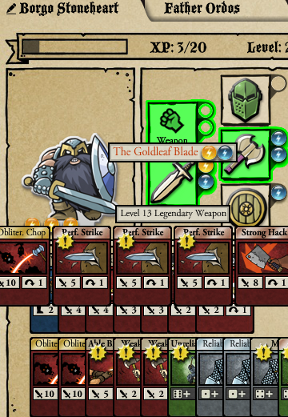 The basics are pretty simple. You and your opponent each have a party of characters and face off on opposite sides of the board. Your characters have hit points, which are self-explanatory, and a set of character-specific cards that represent abilities, spells, and more. You right-click a card to see what it does, and left-click to play it. Each time you play a card is a turn, and then your opponent takes theirs. Once a card is played, it vanishes from that character's inventory, and when both you and your opponent "pass" your turn instead of acting, it begins a new round and distributes cards to characters on all sides. Easy-peasy, right?
The basics are pretty simple. You and your opponent each have a party of characters and face off on opposite sides of the board. Your characters have hit points, which are self-explanatory, and a set of character-specific cards that represent abilities, spells, and more. You right-click a card to see what it does, and left-click to play it. Each time you play a card is a turn, and then your opponent takes theirs. Once a card is played, it vanishes from that character's inventory, and when both you and your opponent "pass" your turn instead of acting, it begins a new round and distributes cards to characters on all sides. Easy-peasy, right?
Well, easy in concept, yes, in play? Not so much. Card Hunter is all about planning ahead, about taking stock of all the cards you have available in a round and figuring out the best order to play them in. You can't treat it like a regular turn-based RPG because, well, it's not. Even movement costs a turn on its own, and since only one character can take an action per turn, it's extremely easy to paint yourself into a corner if you don't develop a strategy and have your heroes work together. Throw in being able to place cards to trigger on terrain when something moves into that square, terrain that impacts movement and line of sight, different damage types, character classes and races, and you have a game with a remarkable amount of strategic depth. When you win, you're granted treasure you can equip to make your party stronger, and even teach them new card moves.
Once you play through the first two battles to learn the ropes, you'll be able to begin to create your own deck with your own heroes, and that's when things get really interesting. At this point, you'll also gain access to the world map, which opens up new areas to adventure in, and quests to undertake. Most quests can only be done once per real world day, and will reset for you to play again the next. As you play, your party will earn experience points and level up to become stronger, and you'll gain new party members to boot. Better equipment can be bought at the armory, where you can also sell off your unneeded loot. Note that although the game is free, you can pay real money for "pizza slices", which can be exchanged for in-game gold at a rate of one slice for five coins, or buy special chests with rare items. Also for purchase is a membership in the Card Hunter Club (which boosts your loot drops in exchange for supporting with a subscription), and special Treasure Hunt Adventures that will give you an epic quality item for successfully completing them.
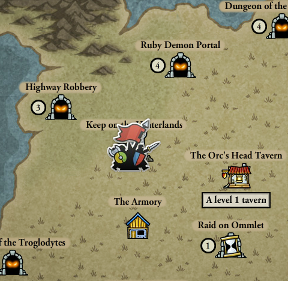 Analysis: If you're a turn-based strategy fan, this really is not the game to sit down to if you have any other priorities in your day. Card Hunter is such a fantastic idea I can't believe someone hasn't thought of it sooner. Mixing satisfyingly complex strategy with the charm and cheek of a fantasy tabletop RPG setting works in an unexpectedly wonderful way. It helps that the presentation is so incredibly polished, with beautiful illustrations and solid writing to take you along, though the audio is a bit of a mixed bag largely because it's so bare bones. (As of this writing, the ambient sound will not turn off even if you lower all the volume sliders under options.)
Analysis: If you're a turn-based strategy fan, this really is not the game to sit down to if you have any other priorities in your day. Card Hunter is such a fantastic idea I can't believe someone hasn't thought of it sooner. Mixing satisfyingly complex strategy with the charm and cheek of a fantasy tabletop RPG setting works in an unexpectedly wonderful way. It helps that the presentation is so incredibly polished, with beautiful illustrations and solid writing to take you along, though the audio is a bit of a mixed bag largely because it's so bare bones. (As of this writing, the ambient sound will not turn off even if you lower all the volume sliders under options.)
Having the more extensive tutorial take place after the initial two battles seems a bit strange. I get that showcasing the flashier battles and abilities is good to draw players in, but if you're like me and more interested in the guts of the mechanics, you'll find the "real" game (which is to say, after you're forced to make your own party) vastly more interesting once it starts being explained to you. Traits, map terrain, blocking directions, racial bonuses and more make for an even deeper experience than the opening battles initially suggest. Though it may initially feel like you're at the whims of the game when it comes to the cards your characters are dealt, knowing how to build their individual decks so they're less likely to wind up with, say, an entire hand of useless movement cards for a round is part of the strategy.
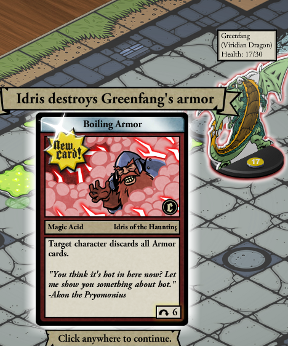 It's unfortunate, then, that Card Hunter's free-to-play model feels like it skews more in favour of those that pay than those that don't. With the ability to straight-up buy chests that are guaranteed better than most anything you'll get, or, heck, even more powerful heroes, it's easy to become a little bitter at the grinding you'll be doing if you don't put out your credit card. You get some pizza during the campaign, but you can't just earn some by playing, and with the "cheapest" microtransaction in their in-game store to buy slices being $10.00USD, players who might otherwise feel inclined to shell out a few bucks to support the site might rightfully balk at the set price. Obviously, you don't need to buy pizza, but, well, the more you play, the more it feels like the grind ramps up to encourage you to do so. When the game shows you what you would have got as loot for paying to join the Card Hunter Club ($10.00USD a month) and chastises you for not doing so? Then it starts getting annoying and downright insulting.
It's unfortunate, then, that Card Hunter's free-to-play model feels like it skews more in favour of those that pay than those that don't. With the ability to straight-up buy chests that are guaranteed better than most anything you'll get, or, heck, even more powerful heroes, it's easy to become a little bitter at the grinding you'll be doing if you don't put out your credit card. You get some pizza during the campaign, but you can't just earn some by playing, and with the "cheapest" microtransaction in their in-game store to buy slices being $10.00USD, players who might otherwise feel inclined to shell out a few bucks to support the site might rightfully balk at the set price. Obviously, you don't need to buy pizza, but, well, the more you play, the more it feels like the grind ramps up to encourage you to do so. When the game shows you what you would have got as loot for paying to join the Card Hunter Club ($10.00USD a month) and chastises you for not doing so? Then it starts getting annoying and downright insulting.
It's not about whether Card Hunter is worth paying for. If it were a paid game, I would have happily plonked down its asking price. I encourage players, whenever possible and they are able, to consider donating to developers and games like this that give them entertainment for free. And if you choose not to pay a penny for Card Hunter, you'll still get entertainment for free, and a lot of it. I just wish its payment model were more unobtrusive then it chose to be, and one that both offered other price tiers and options. In the end, Card Hunter is a gorgeously designed, engagingly strategic game that's well worth checking out and I hope we see even more from in the future, despite its clunky pay model.
![]() Neonball by Retrom is an arcade physics game coming straight from the dystopian future, where the only way to enter Neoncity is by proving you can bounce a ball around a room. Sounds cool, right? You start out with the ball moving along a blue laser; you can launch it with the [arrow] keys or your mouse, and it will only stop if it reaches a blue laser again. Your job is to get it safely to the exit point, avoiding mean orange thingies such as lasers and bombs. There are two challenges for every level: collecting all three stars and the time challenge. Stars are sometimes deliberately placed in the direction opposite the exit, meaning you'll have to bounce your way to them and back without dying once. The time challenge is a (quite short) length of time you have to beat. Luckily, this simply means reaching the end of the level as quickly as possible, without having to stop for the stars. This may sound easy, but wait until you finish the first ten levels or so.
Neonball by Retrom is an arcade physics game coming straight from the dystopian future, where the only way to enter Neoncity is by proving you can bounce a ball around a room. Sounds cool, right? You start out with the ball moving along a blue laser; you can launch it with the [arrow] keys or your mouse, and it will only stop if it reaches a blue laser again. Your job is to get it safely to the exit point, avoiding mean orange thingies such as lasers and bombs. There are two challenges for every level: collecting all three stars and the time challenge. Stars are sometimes deliberately placed in the direction opposite the exit, meaning you'll have to bounce your way to them and back without dying once. The time challenge is a (quite short) length of time you have to beat. Luckily, this simply means reaching the end of the level as quickly as possible, without having to stop for the stars. This may sound easy, but wait until you finish the first ten levels or so.
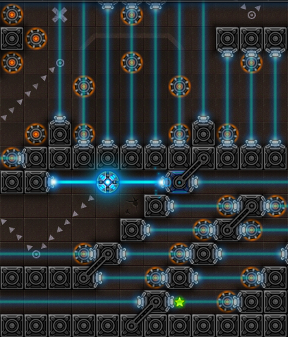 Neonball gleefully ramps up the difficulty early on, putting your reflexes to the test. At times it has a pinball feel to it, what with all the bouncing and the carefully calculated launches, but you'll also have to think ahead and make decisions in a split second unless you want your ball to go boom. If you don't have the patience to replay a level until you get it right, this might not be a game for you, as it does call for a good amount of precision and swift reactions. But Neonball is so well executed – graphics, music, design and mechanics – that it's a joy to play, even if, at times, it could look like it was made specifically to mock your motor skills.
Neonball gleefully ramps up the difficulty early on, putting your reflexes to the test. At times it has a pinball feel to it, what with all the bouncing and the carefully calculated launches, but you'll also have to think ahead and make decisions in a split second unless you want your ball to go boom. If you don't have the patience to replay a level until you get it right, this might not be a game for you, as it does call for a good amount of precision and swift reactions. But Neonball is so well executed – graphics, music, design and mechanics – that it's a joy to play, even if, at times, it could look like it was made specifically to mock your motor skills.
![]() After all the ghouls and murderous undead and dangerous killers that stalked the streets on Friday the 13th, it's time to settle back with some mobile entertainment. It's good that it's mobile because not all of those undead murderers have settled down just yet. You know, keep running and all.
After all the ghouls and murderous undead and dangerous killers that stalked the streets on Friday the 13th, it's time to settle back with some mobile entertainment. It's good that it's mobile because not all of those undead murderers have settled down just yet. You know, keep running and all.
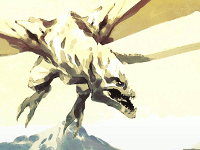 Infinity Blade III announced - You knew it was coming, right? How could Chair Entertainment NOT follow up on the immensely successful on-rails combat series? Alongside Apple's announcement of new iPhone models, Infinity Blade III made an appearance to show off the devices' power. The game is similar to previous Infinity Blade titles, only with more items, more enemies, and more enemy types to deal with. Also, is it just me, or does it look prettier?
Infinity Blade III announced - You knew it was coming, right? How could Chair Entertainment NOT follow up on the immensely successful on-rails combat series? Alongside Apple's announcement of new iPhone models, Infinity Blade III made an appearance to show off the devices' power. The game is similar to previous Infinity Blade titles, only with more items, more enemies, and more enemy types to deal with. Also, is it just me, or does it look prettier?
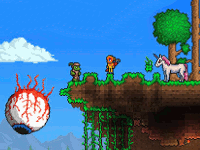 Terraria gives Android some love - Why, it seems like only two weeks ago the mobile port of Terraria landed on iOS. It seems that way because it's true! The surprisingly competent touch screen version of the 2D sandbox game has worked its way to Android devices, bringing with it a reworked item and inventory system along with controls specially suited for buttonless gaming. There's no multiplayer, unfortunately, but it's still Terraria, and we're all right with that.
Terraria gives Android some love - Why, it seems like only two weeks ago the mobile port of Terraria landed on iOS. It seems that way because it's true! The surprisingly competent touch screen version of the 2D sandbox game has worked its way to Android devices, bringing with it a reworked item and inventory system along with controls specially suited for buttonless gaming. There's no multiplayer, unfortunately, but it's still Terraria, and we're all right with that.
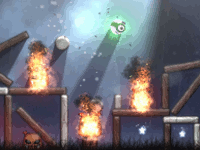 Lums update gets lummier - Lums is the story of a bunch of Lums and a bunch of Vampires. It's a physics puzzle game that takes a unique angle on the Crush the Castle / Angry Birds formula of tossing things to destroy structures. Instead of pigs or snooty royalty, though, you get to shed a little light on some grumpy vampires and watch 'em burn! The late update adds an entirely new episode that features 12 underground levels and five new achievements, all for free. Now get out there and toast some vamps!
Lums update gets lummier - Lums is the story of a bunch of Lums and a bunch of Vampires. It's a physics puzzle game that takes a unique angle on the Crush the Castle / Angry Birds formula of tossing things to destroy structures. Instead of pigs or snooty royalty, though, you get to shed a little light on some grumpy vampires and watch 'em burn! The late update adds an entirely new episode that features 12 underground levels and five new achievements, all for free. Now get out there and toast some vamps!
 Free App of the Week: Pivvot - Each week on the iTunes App Store, Apple drops a single release down to the tasty price of "free". This week, that freebie is Pivvot, an on-rails avoidance game created by Whitaker Trebella. It puts you in control of a small pair of orbs traveling along a fixed path in an abstract world of color and shape. Obstacles are placed along the path, and the only way you can avoid them is by pivoting the large orb around the smaller one. Simple concept, but like Super Hexagon and other "don't touch anything 'cause it's all dangerous" games, the challenge quickly escalates into a true test of reflexes.
Free App of the Week: Pivvot - Each week on the iTunes App Store, Apple drops a single release down to the tasty price of "free". This week, that freebie is Pivvot, an on-rails avoidance game created by Whitaker Trebella. It puts you in control of a small pair of orbs traveling along a fixed path in an abstract world of color and shape. Obstacles are placed along the path, and the only way you can avoid them is by pivoting the large orb around the smaller one. Simple concept, but like Super Hexagon and other "don't touch anything 'cause it's all dangerous" games, the challenge quickly escalates into a true test of reflexes.
![]() Best described as "Kingdom Rush, but in a tower, and with zombies", Firebeast's Zombo Buster is a tower defense game where you're summoning in soldiers to defend elevators from an incoming zombie horde, but you have to pay them first. Basically, just pretend you're in Land of the Dead and you're trying to protect Dennis Hopper because you don't know any better. During each stage, enemies will begin to flood in from the right side of the screen, and you have to click the walkie-talkies to call in any soldiers you can afford to hold them off. The cost of different soldiers vary, as does their strengths and weaknesses, and if you've got the coin, you can even upgrade them to make them more powerful.
Best described as "Kingdom Rush, but in a tower, and with zombies", Firebeast's Zombo Buster is a tower defense game where you're summoning in soldiers to defend elevators from an incoming zombie horde, but you have to pay them first. Basically, just pretend you're in Land of the Dead and you're trying to protect Dennis Hopper because you don't know any better. During each stage, enemies will begin to flood in from the right side of the screen, and you have to click the walkie-talkies to call in any soldiers you can afford to hold them off. The cost of different soldiers vary, as does their strengths and weaknesses, and if you've got the coin, you can even upgrade them to make them more powerful.
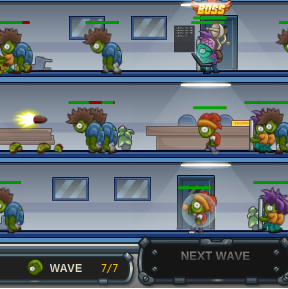 Initially, all you have is one elevator where your soldiers will appear that you have to swap back and forth between different floors to manage each wave of zombies, but you can spend cash to unlock new elevators to place soldiers in as well. Which makes no sense. Because how are zombies getting on higher floors if you have the only elevator access? If they're already up there, then what's the point in defending the lower levels? Haven't we already lost? Who are we paying for use of new elevators, and isn't it in their best interest to give them to us for free? CURSE YOU DENNIS HOPPER! Just make sure to hold the line... how many zombies get through influences the number of gems you receive, which are spent on permanent upgrades to classes between levels. You can also earn gems for completing certain achievements.
Initially, all you have is one elevator where your soldiers will appear that you have to swap back and forth between different floors to manage each wave of zombies, but you can spend cash to unlock new elevators to place soldiers in as well. Which makes no sense. Because how are zombies getting on higher floors if you have the only elevator access? If they're already up there, then what's the point in defending the lower levels? Haven't we already lost? Who are we paying for use of new elevators, and isn't it in their best interest to give them to us for free? CURSE YOU DENNIS HOPPER! Just make sure to hold the line... how many zombies get through influences the number of gems you receive, which are spent on permanent upgrades to classes between levels. You can also earn gems for completing certain achievements.
Zombo Buster has a lot of things going for it. It manages to make the apocalypse adorable, it has a wide variety of enemies with unique abilities, and the multiple soldier tiers with special attacks and strengths allow for a satisfying bit of depth to its strategy. Getting to those tiers is another matter entirely, however, since Zombo Buster's dedication to presenting the classic overwhelming sea of zombie attackers means after the first level or two the difficulty spikes enormously simply because of how many zombies begin swarming you. Since there are a limited number of gems, you can't grind for upgrades, and when the game begins vomiting literally dozens of specially powered undead at you on each floor it quickly turns into the sort of challenge not every player will appreciate. It feels like there's one specific strategy for each stage you're just supposed to figure out, as opposed to being able to develop your own. As a result, Zombo Buster is a game that some players will find quite good, but were it no so punishing, a lot of players could have found great.
![]() Hey kids! You know what time it is? ClickPLAY Time, now with all the good stuff, plus extra kitties. Oh, and some ninjas and other things, too, spun into a wide assortment of clickiness for a puzzle game that will NinjaDoodle your day up, in the bestest sense. At each of 20 stages, the play button is hiding, waiting for you solve the problems presented. Correctly unscramble words, perform backwards mathematics, decipher patterns, negotiate a maze, and complete mini point-and-click puzzles, among other things, and the lovely black triangle in a white circle combo will be revealed, happy to send you on to the next scene as soon as you click it. Do that, quickly, to get the best time and claim your goodies at the end.
Hey kids! You know what time it is? ClickPLAY Time, now with all the good stuff, plus extra kitties. Oh, and some ninjas and other things, too, spun into a wide assortment of clickiness for a puzzle game that will NinjaDoodle your day up, in the bestest sense. At each of 20 stages, the play button is hiding, waiting for you solve the problems presented. Correctly unscramble words, perform backwards mathematics, decipher patterns, negotiate a maze, and complete mini point-and-click puzzles, among other things, and the lovely black triangle in a white circle combo will be revealed, happy to send you on to the next scene as soon as you click it. Do that, quickly, to get the best time and claim your goodies at the end.
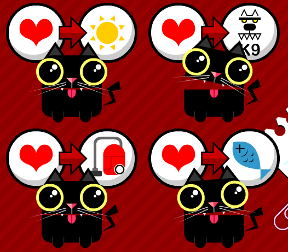 Those familiar with NinjaDoodle's zippy style and, most notably, the rest of the ClickPLAY games, will find very few surprises yet Time does manage to feel just as fresh and fun, even with a subtle nod towards Nitrome-style trivia. Good news for folks who aren't quick in quick action tasks: there are none. So if you don't mind missing out on the rewards intended for faster fingers, you shouldn't be too disappointed. Unless, you know, your competitiveness or obsession for more shurikens gets the best of you. Still, for the most part, there is little in the way of challenge outside of the thinking needed to discover just want you're supposed to do from one level to the next. Of course that's where all the fun lies because ClickPLAY Time isn't out to taunt or stymie. Why do that? Instead, it's upbeat, entertaining and light, and even begs a replay or two. All for the sake of clicking...
Those familiar with NinjaDoodle's zippy style and, most notably, the rest of the ClickPLAY games, will find very few surprises yet Time does manage to feel just as fresh and fun, even with a subtle nod towards Nitrome-style trivia. Good news for folks who aren't quick in quick action tasks: there are none. So if you don't mind missing out on the rewards intended for faster fingers, you shouldn't be too disappointed. Unless, you know, your competitiveness or obsession for more shurikens gets the best of you. Still, for the most part, there is little in the way of challenge outside of the thinking needed to discover just want you're supposed to do from one level to the next. Of course that's where all the fun lies because ClickPLAY Time isn't out to taunt or stymie. Why do that? Instead, it's upbeat, entertaining and light, and even begs a replay or two. All for the sake of clicking...
![]() Strolling through your garden one day in your dapper hat, you come upon a strange teleport device. Naturally you have to try it. Friendly green blob BLYM hops right in to a puzzle platforming world in this enjoyable game from Gameshot. Your goal is to make it to the teleporter on each level. Use the [arrow] keys to move and jump, and hit [R] or click the arrow on the top of the screen to restart a level. Push the down [arrow] while standing on any of the blue blocks to seep down into it. You can move while in a block, but can't jump. Push up to return to your normal form.
Strolling through your garden one day in your dapper hat, you come upon a strange teleport device. Naturally you have to try it. Friendly green blob BLYM hops right in to a puzzle platforming world in this enjoyable game from Gameshot. Your goal is to make it to the teleporter on each level. Use the [arrow] keys to move and jump, and hit [R] or click the arrow on the top of the screen to restart a level. Push the down [arrow] while standing on any of the blue blocks to seep down into it. You can move while in a block, but can't jump. Push up to return to your normal form.
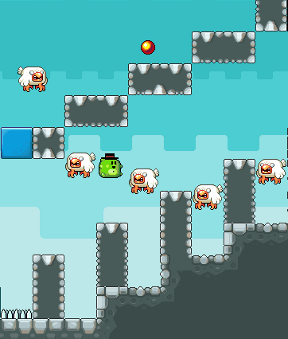 You have to experiment (and die a few times) to figure out exactly what hurts you and what doesn't in which form. When you're in a block you'll be safe from bullets but not lasers, for example, and spikes are sudden death no matter what. Some levels will test your platforming skills, while others are more puzzle based, and the controls work beautifully as you maneuver through monsters, lava, and more. The style reminds me a bit of a Nitrome game, with its bright colors and polished retro look. BLYM gets the balance right between challenging, but not frustratingly hard, and it's got forty levels across four worlds for quite a nice diversion.
You have to experiment (and die a few times) to figure out exactly what hurts you and what doesn't in which form. When you're in a block you'll be safe from bullets but not lasers, for example, and spikes are sudden death no matter what. Some levels will test your platforming skills, while others are more puzzle based, and the controls work beautifully as you maneuver through monsters, lava, and more. The style reminds me a bit of a Nitrome game, with its bright colors and polished retro look. BLYM gets the balance right between challenging, but not frustratingly hard, and it's got forty levels across four worlds for quite a nice diversion.
![]() Zombies and Cheepies and Succubbi, oh my! It's so tough being a landlord in the mythical 21st century. Not only do you have to contend with groups of creatures who can't stand each other, but everyone has demands from the cost of rent (when they actually pay) to ammenities in their apartment. On top of that you have groups of adventurers who have nothing better to do than ransack your building to steal your hard-earned money. Oh, did I forget to mention that you're the Devil? This kooky storyline is the genius behind Petit Depotto's simulation/defense hybrid, Unholy Heights. Be you a hard-nosed landlord forcing large amounts of gold our of your tenants or a more gentle one who gives into their every demand doesn't matter as long as they fight your enemies at your every beck and call. And they will. Because they have to. Because you're the Devil, after all.
Zombies and Cheepies and Succubbi, oh my! It's so tough being a landlord in the mythical 21st century. Not only do you have to contend with groups of creatures who can't stand each other, but everyone has demands from the cost of rent (when they actually pay) to ammenities in their apartment. On top of that you have groups of adventurers who have nothing better to do than ransack your building to steal your hard-earned money. Oh, did I forget to mention that you're the Devil? This kooky storyline is the genius behind Petit Depotto's simulation/defense hybrid, Unholy Heights. Be you a hard-nosed landlord forcing large amounts of gold our of your tenants or a more gentle one who gives into their every demand doesn't matter as long as they fight your enemies at your every beck and call. And they will. Because they have to. Because you're the Devil, after all.
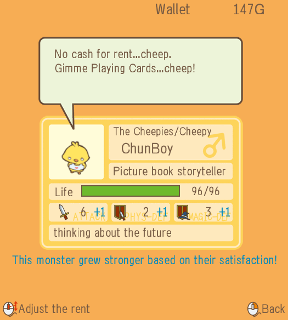 The controls for Unholy Heights are very intuitive. At the simplest, you left click to select something and right click to go back. And, very importantly, you use the scroll button to raise/lower a tenant's rent while their room is selected. There are various buttons along the bottom of the screen, whether you want to open the menu or have two tenants exchange rooms. If you want your click to only be able to select certain types (useful in a crowded fight) or to change the game speed, those buttons exist too! While the game can be played solely with the mouse, these handy buttons are also tied to keyboard shortcuts.
The controls for Unholy Heights are very intuitive. At the simplest, you left click to select something and right click to go back. And, very importantly, you use the scroll button to raise/lower a tenant's rent while their room is selected. There are various buttons along the bottom of the screen, whether you want to open the menu or have two tenants exchange rooms. If you want your click to only be able to select certain types (useful in a crowded fight) or to change the game speed, those buttons exist too! While the game can be played solely with the mouse, these handy buttons are also tied to keyboard shortcuts.
This game is all about the tenants... and as a landlord, shouldn't it always be that way? There are seven groups of creatures and four character types within each group. They will (somewhat) randomly come up to the quest board outside your building that doubles as an ad for open rooms. Depending on what rooms you have available and how much the rent is set at, they will either ask to live at your building or leave. Or, if your residents are well off, they may even become a lover for one of them. There are many benefits to this for you since this increases the number of fighters you have per room, plus, if they're lucky, they may produce a child that will eventually grow up into yet another fighter. You're literally 'raising' an army.
And what is that army used for? Why defending YOU, of course. After accepting a quest on the aforementioned quest board (or about once a game day when no quest is selected), devious, greedy adventurers and heroes come to steal your gold for their own spoils. To keep them at bay, knock on your resident's doors to get them to come out and defend the building, if they're home, of course. After all, a demon's got to work to pay the rent. With units that have a variety of ranges, from melee to a 'super' ranged weapon that flies through enemies to damage all it hits, the real strategy of the defense portion of the game comes in choosing the order you come a-knockin'. Having all your ranged defenders grouped in the back of the line will do no good if they can't hit the enemy.
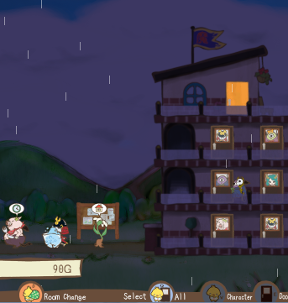 Analysis: For such a unique combination of genres, Petit Depotto got a lot of things right in Unholy Heights. While each aspect, when looked at individually, works well on its own, in order to be successful at the game, the two have to meld together in harmony. Happy residents make happy defenders. Fans of both defense and simulation games will find enjoyment in this experience.
Analysis: For such a unique combination of genres, Petit Depotto got a lot of things right in Unholy Heights. While each aspect, when looked at individually, works well on its own, in order to be successful at the game, the two have to meld together in harmony. Happy residents make happy defenders. Fans of both defense and simulation games will find enjoyment in this experience.
While the overall experience is solid, the game can get a bit 'grindy' in the sense that there are times you're running the game at the fastest speed just waiting for your residents to find mates in the hopes that you'll finally be able to defeat the one quest available to you. But there are certainly enough cuteness in the graphics to keep you entertained as you wait, from the celestial facial expressions to the wide variety of creatures who wander around your place. The details given to your residents' lives, including: job promotions, interacting with the accessories you purchase, or even sneaking away at night to to avoid their large rent debt, give more depth to the experience of the game than you may expect. It's enough to warrant a quote from the creatures themselves: "This room game rocks......!"
![]() Windows:
Windows:
Download the demo
Get the full version
![]() Announcement! Remember Treasure Adventure Game from 2011? Robit Studios has been working on a sequel for well over a year and a half, turning the simple sidescrolling adventure game into something exponentially more engrossing. Treasure Adventure World is set to do everything Treasure Adventure Game did, only with smoother gameplay, HD widescreen mode with hi-res artwork, more treasures, more collectibles, better enemy AI, an enhanced story with multiple endings, and plenty of other extras. In short, yes, you'll want this game. You'll want it bad.
Announcement! Remember Treasure Adventure Game from 2011? Robit Studios has been working on a sequel for well over a year and a half, turning the simple sidescrolling adventure game into something exponentially more engrossing. Treasure Adventure World is set to do everything Treasure Adventure Game did, only with smoother gameplay, HD widescreen mode with hi-res artwork, more treasures, more collectibles, better enemy AI, an enhanced story with multiple endings, and plenty of other extras. In short, yes, you'll want this game. You'll want it bad.
Treasure Adventure World isn't out yet, but the team has opened up pre-orders to help fund development. It's being run with several tiers of contributions, allowing you to get some extra bonuses along with securing your copy of the game. The more that's contributed, the more goals are unlocked, the more neat things the game gets.
Head over to the Treasure Adventure World pre-order site now, see what's new and awesome!
![]() Earth! Air! Fire! Water! Some old guy with a stick! By their power combined, they are... The Keeper of 4 Elements, a strategic defense game from Char Studio! When an evil dark lord sets his sights on the mystical scrolls that reside on a distant island, allowing their owner to wield the power of the four elements, he thinks they'll be easy pickin's. After all, their guardian is some old dude with a funny hat. How hard could it be? Well, when that old dude has the ability to construct magical towers to rain destruction down on you, summon torrents of magical elemental energy, and straight up lightning-bolt your keister, pretty hard indeed. Luckily for you, that's the side you're on!
Earth! Air! Fire! Water! Some old guy with a stick! By their power combined, they are... The Keeper of 4 Elements, a strategic defense game from Char Studio! When an evil dark lord sets his sights on the mystical scrolls that reside on a distant island, allowing their owner to wield the power of the four elements, he thinks they'll be easy pickin's. After all, their guardian is some old dude with a funny hat. How hard could it be? Well, when that old dude has the ability to construct magical towers to rain destruction down on you, summon torrents of magical elemental energy, and straight up lightning-bolt your keister, pretty hard indeed. Luckily for you, that's the side you're on!
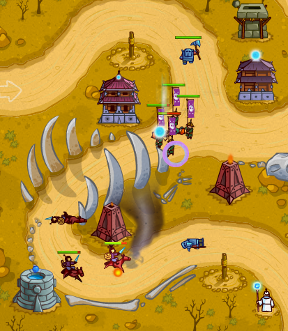 The goal in each stage is to prevent the enemies from reaching the other end of the winding path, since doing so takes health from you, and once all twenty health points are gone it's game over. Along the path you'll find dirt mounds you can click to build one of four different elemental tower types, each with their own strengths and abilities. Once the stage begins, enemies will begin flooding through in waves, and your towers will attack anything within range (as will your monk, stationed at the end of the path), earning cash you can spend to build more or upgrade the ones you've got. (Cash doesn't carry over between levels, so don't be stingy!)
The goal in each stage is to prevent the enemies from reaching the other end of the winding path, since doing so takes health from you, and once all twenty health points are gone it's game over. Along the path you'll find dirt mounds you can click to build one of four different elemental tower types, each with their own strengths and abilities. Once the stage begins, enemies will begin flooding through in waves, and your towers will attack anything within range (as will your monk, stationed at the end of the path), earning cash you can spend to build more or upgrade the ones you've got. (Cash doesn't carry over between levels, so don't be stingy!)
Initially, the enemy forces are a bit of a joke, but each level brings new enemy types to contend with, from shamans who heal those around them to swordsmen who can dash and more. Moreover, many enemies are only weak against specific elements, and deal varying amounts of damage to your health, so getting cocky is a bad idea. Fortunately for you, you'll not only gain access to more powerful tower forms and magical spells, but you'll also earn stars for successfully completing a level that you can spend on permanent upgrades. Each stage has multiple modes of difficulty and thus multiple chances to earn stars, and you can reset spent stars at any time to shuffle your upgrades about as you wish. Make sure to view the Keeperpedia for in-depth information on everything from enemies to spells and towers!
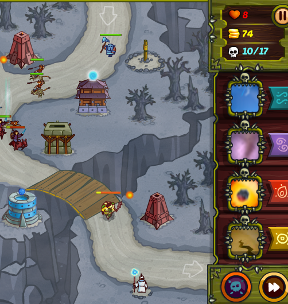 Analysis: Chances are if you're a defense fan, The Keeper of 4 Elements will remind you of both Cursed Treasure and, to an extent, Incursion 2, which is hardly a bad thing. The game looks great, though there are a few issues, such as text descriptions of towers and spells being cut off. Having an enemy's description appear in a small text box at the bottom of the screen is mostly fine, though it is potentially a strain on the eyes. Having a pop-up might have been been better, especially since the in-game text doesn't detail an enemy's elemental weaknesses the way the Keeperpedia does, which can be frustrating when you're dealing with a new type of foe for the first time.
Analysis: Chances are if you're a defense fan, The Keeper of 4 Elements will remind you of both Cursed Treasure and, to an extent, Incursion 2, which is hardly a bad thing. The game looks great, though there are a few issues, such as text descriptions of towers and spells being cut off. Having an enemy's description appear in a small text box at the bottom of the screen is mostly fine, though it is potentially a strain on the eyes. Having a pop-up might have been been better, especially since the in-game text doesn't detail an enemy's elemental weaknesses the way the Keeperpedia does, which can be frustrating when you're dealing with a new type of foe for the first time.
These complaints all largely come down to streamlining the experience, however, and apart from a few rough edges, The Keeper of 4 Elements is largely a very solid and enjoyable defense game. Like Cursed Treasure, the four towers initially seem limiting, but when placed so that they support one another and use their strengths to their best advantage, display a potential for remarkably clever strategy. Which, incidentally, is important since you'll want to replay each level's difficulty tiers to make sure you get the maximum amount of stars for upgrades. It's an extremely addictive little game, if not necessarily original, and enough of a satisfying challenge to keep you hammering away at each level's difficulty tiers until you complete them all. Though it doesn't really bring much new to the genre, there's a lot to be said for doing something very well, and with careful balance and appealing strategy, The Keeper of 4 Elements does just that.
![]() Everyone can relax, Friday the 13th has ended. But then again, you probably weren't worried about it, were you? Didn't think so. Either way, here's a reward for surviving the allegedly unlucky day: three awesome freeware games!
Everyone can relax, Friday the 13th has ended. But then again, you probably weren't worried about it, were you? Didn't think so. Either way, here's a reward for surviving the allegedly unlucky day: three awesome freeware games!
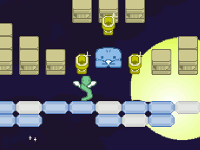 Gemdance (Windows, free) - An extraordinarily creative Breakout game that's both imaginative and challenging. Galatea is a dancer from Zodiac, but she wants a life of her own. The only way to do that is by becoming a god and escaping to another world. To do this, she'll need to work through several dozen levels, each featuring its own zodiac-themed gimmick. Gemini stage, for example, has twin paddles that work in concert, while Leo stage has a lion that fires at your paddle. A shockingly fun game, even if you don't normally go for Breakout types!
Gemdance (Windows, free) - An extraordinarily creative Breakout game that's both imaginative and challenging. Galatea is a dancer from Zodiac, but she wants a life of her own. The only way to do that is by becoming a god and escaping to another world. To do this, she'll need to work through several dozen levels, each featuring its own zodiac-themed gimmick. Gemini stage, for example, has twin paddles that work in concert, while Leo stage has a lion that fires at your paddle. A shockingly fun game, even if you don't normally go for Breakout types!
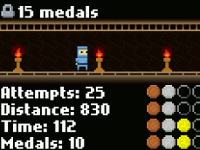 Don't Move (Windows, free) - A smart little game by Steve Richey that's as much a commentary on the video game-player interaction dynamic as it is a game itself. Don't Move gives you one challenge at a time, but all you can do to unlock it is make the numbers read what they need to read by moving around, standing still, and/or dying. It's designed to be infuriating, but there's an ending, and apparently a rewarding finish if you can make it through to completion.
Don't Move (Windows, free) - A smart little game by Steve Richey that's as much a commentary on the video game-player interaction dynamic as it is a game itself. Don't Move gives you one challenge at a time, but all you can do to unlock it is make the numbers read what they need to read by moving around, standing still, and/or dying. It's designed to be infuriating, but there's an ending, and apparently a rewarding finish if you can make it through to completion.
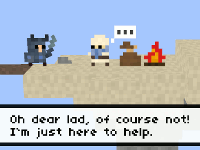 Super Amazing Quest (Windows, free) - A pseudo 3D game that parodies old RPG tropes left and right. You play the role of a knight who is helping a princess by seeking out her stolen vase. Jump through the free-floating landscape as you fight off enemies, gain experience, pick up items, and encounter the odd NPC or two. And we really do mean "odd". It's a little heavy on the text interruptions, but otherwise it's a quick, light and entertaining game on all fronts.
Super Amazing Quest (Windows, free) - A pseudo 3D game that parodies old RPG tropes left and right. You play the role of a knight who is helping a princess by seeking out her stolen vase. Jump through the free-floating landscape as you fight off enemies, gain experience, pick up items, and encounter the odd NPC or two. And we really do mean "odd". It's a little heavy on the text interruptions, but otherwise it's a quick, light and entertaining game on all fronts.
![]() When you think about it, there's something incredibly creepy about the concept of lucid dreaming. I had a lucid dream, once. I was walking down a crowded street, cheerfully informing baffled people that I was dreaming, when I came across one stone-faced little girl who just looked at me and whispered, "I know." Freaky? Sure, but ultimately harmless... except in Script Welder's point-and-click adventure game Deeper Sleep, it's not quite that innocent. Following the events of the original 10th Casual Gameplay Design Competition first place winner, you've become obsessed with the concept of lucid dreaming, even though other people think you're insane. Desperate and questioning your own sanity, you go to the library late at night to see if there are records of anyone else who experienced your all-too-real nightmare... only to find out your nightmare is just beginning. No, YOU'RE A CORNY LINE.
When you think about it, there's something incredibly creepy about the concept of lucid dreaming. I had a lucid dream, once. I was walking down a crowded street, cheerfully informing baffled people that I was dreaming, when I came across one stone-faced little girl who just looked at me and whispered, "I know." Freaky? Sure, but ultimately harmless... except in Script Welder's point-and-click adventure game Deeper Sleep, it's not quite that innocent. Following the events of the original 10th Casual Gameplay Design Competition first place winner, you've become obsessed with the concept of lucid dreaming, even though other people think you're insane. Desperate and questioning your own sanity, you go to the library late at night to see if there are records of anyone else who experienced your all-too-real nightmare... only to find out your nightmare is just beginning. No, YOU'RE A CORNY LINE.
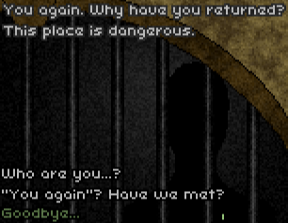 Just click to interact. Your crosshair will expand slightly and turn green if you can interact with something, and mousing over the top of the screen will cause your inventory to drop down. You can combine items you've picked up whenever possible by clicking on first one and then the other. This time, it seems, waking up is going to be a lot harder. Something knows you're there, and all the exits are blocked. You need help, but who can you trust when you're being hunted by something you don't even understand? The question of whether Deeper Sleep is scarier than its predecessor is up for debate, especially if you're one of those people who finds that the more something is explained, the less frightening it actually is. Is it scary? Sure, with a nice balance of well-executed jump scares a more subtle, unnerving frights and chilling scenes that fill you with dread.
Just click to interact. Your crosshair will expand slightly and turn green if you can interact with something, and mousing over the top of the screen will cause your inventory to drop down. You can combine items you've picked up whenever possible by clicking on first one and then the other. This time, it seems, waking up is going to be a lot harder. Something knows you're there, and all the exits are blocked. You need help, but who can you trust when you're being hunted by something you don't even understand? The question of whether Deeper Sleep is scarier than its predecessor is up for debate, especially if you're one of those people who finds that the more something is explained, the less frightening it actually is. Is it scary? Sure, with a nice balance of well-executed jump scares a more subtle, unnerving frights and chilling scenes that fill you with dread.
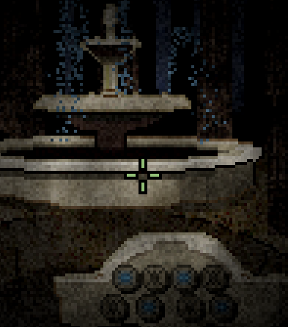 Visually, for the most part the game is great, and a stellar example of how comparatively "simpler" graphics can still be more than effective at frightening players in the hands of someone who knows what they're doing. Small details, like the lights of passing cars sweeping by a window or the way shadows change and dance as you sweep your flashlight across a dark classroom, create an immersive, appropriately dreamlike feel. On the other hand, in some very dark areas, the gloom and filter used can make it hard to tell what you're looking at. Fortunately, despite its setting, Deeper Sleep is mostly very logical, if not that challenging, when it comes to its gameplay. Items are not only frequently always used for their intended real world purpose, but intuitive to boot, which helps take the sting out of the frequent backtracking.
Visually, for the most part the game is great, and a stellar example of how comparatively "simpler" graphics can still be more than effective at frightening players in the hands of someone who knows what they're doing. Small details, like the lights of passing cars sweeping by a window or the way shadows change and dance as you sweep your flashlight across a dark classroom, create an immersive, appropriately dreamlike feel. On the other hand, in some very dark areas, the gloom and filter used can make it hard to tell what you're looking at. Fortunately, despite its setting, Deeper Sleep is mostly very logical, if not that challenging, when it comes to its gameplay. Items are not only frequently always used for their intended real world purpose, but intuitive to boot, which helps take the sting out of the frequent backtracking.
Fair warning... the game ends with a big "To be continued..." at the worst possible time, by which I mean as soon as the game really begins to pick up steam and on a huge cliffhanger. Deeper Sleep is still a chilling, wonderfully creepy game that will make the hair on your arms stand on end, and you'll wind up eager for more. Will you ever escape the darkness that hunts you in your dreams? Will the next installment have that BWUUUUUNNNNN noise from Inception? We'll have to wait to find out.
![]() You may know Lucas Molina from the artsy simulation Avant-Garde, but his latest game Eastward Quest is an entirely different beast in every possible way. Part arcade game, part RPG, you control a stalwart pixel hero rushing East and dealing with monsters along the way. Use the [WASD] or [arrow] keys to move around the field and charge into enemies to kill them and get experience points for leveling up, but since doing so damages you, you need to grab food and hearts to heal. You'll also find coins you can spend on upgrades between levels, and since these are the only things that persist on your character (any levels earned during stages are reset between them, so you start from level one again), you'll want to make good use of them.
You may know Lucas Molina from the artsy simulation Avant-Garde, but his latest game Eastward Quest is an entirely different beast in every possible way. Part arcade game, part RPG, you control a stalwart pixel hero rushing East and dealing with monsters along the way. Use the [WASD] or [arrow] keys to move around the field and charge into enemies to kill them and get experience points for leveling up, but since doing so damages you, you need to grab food and hearts to heal. You'll also find coins you can spend on upgrades between levels, and since these are the only things that persist on your character (any levels earned during stages are reset between them, so you start from level one again), you'll want to make good use of them.
Simple, right? Right! If ever a game belonged in an arcade cabinet somewhere, Eastward Quest fits the bill perfectly. It's addictive in a very casual sort of way, and its difficulty curve continues tossing in just enough new elements in each stage, like moving enemies, status ailments, and pitfalls, to keep you on your toes. After a certain point, grinding definitely becomes a factor as you have to balance being able to dodge the thick-and-fast incoming obstacles with gaining enough levels for when the monsters get stronger and more numerous in comparison to healing items. It makes for a pleasant little bit of strategy in an otherwise straightforward game, and combined with the unique areas, music, and monsters, makes for a pleasant little arcade game to fill your spare time.
Thanks to Javier for sending this one in!
![]() OrangePixel has done it again! The studio known for its nigh-on perfect retro recreations has crafted a top-down arcade RPG similar to the old Gauntlet series. Heroes of Loot puts you in the shoes of an adventurer fighting his way through dungeon floor after dungeon floor, dispatching enemies and grabbing loot left and right. It's just the sort of pick up and play experience that works well on mobile devices, and you'll find yourself quickly hooked by its creative blend of action and RPG elements.
OrangePixel has done it again! The studio known for its nigh-on perfect retro recreations has crafted a top-down arcade RPG similar to the old Gauntlet series. Heroes of Loot puts you in the shoes of an adventurer fighting his way through dungeon floor after dungeon floor, dispatching enemies and grabbing loot left and right. It's just the sort of pick up and play experience that works well on mobile devices, and you'll find yourself quickly hooked by its creative blend of action and RPG elements.
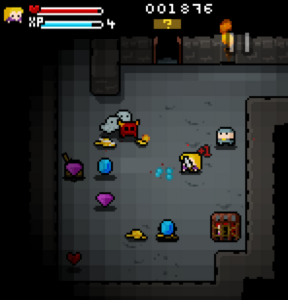 The game begins with a simple choice: who's your hero? The Elf, Warrior, Valkyrie and Wizard are at your service, each with their own stat rating. They're all here for the loot, of course, but let's be honest. so are you. Character in hand, use the virtual analog stick and virtual attack stick to move and fire in any direction. Crawl through dungeon after randomly generated dungeon, your eyes peeled for gold and places to spend it!
The game begins with a simple choice: who's your hero? The Elf, Warrior, Valkyrie and Wizard are at your service, each with their own stat rating. They're all here for the loot, of course, but let's be honest. so are you. Character in hand, use the virtual analog stick and virtual attack stick to move and fire in any direction. Crawl through dungeon after randomly generated dungeon, your eyes peeled for gold and places to spend it!
Heroes of Loot hits the mark when it comes to portable dungeon crawling bliss. Levels are just long enough to give you a taste of adventure, but not so intricate that you'll get lost or feel like you have to take a break. Puzzles are minimal at best, the action is perfectly paced, and shops come along right when you're ready to upgrade. If there's any downside to the game it's that it runs the danger of attracting retro RPG fans who could be disappointed to see the intense, almost shmup-like action take top shelf over character development. But do you know what? For an on-the-go casual dungeon crawler, you can't do much better than Heroes of Loot!
![]() Windows:
Windows:
Download the demo
Get the full version
![]() Mac OS X:
Mac OS X:
Download the demo
Get the full version
NOTE: This game was played and reviewed on the Nexus 4. Game was available in the North American market at the time of publication, but may not be available in other territories. Please see individual app market pages for purchasing info.
![]() A "realistic" moon launch where you control every piece of equipment. A series of suspiciously similar rooms. A card game that will seem more than a little familiar to the older and nerdier amoung us. And a tomb of delights and dangers to protect. Sounds like my kinda party.
A "realistic" moon launch where you control every piece of equipment. A series of suspiciously similar rooms. A card game that will seem more than a little familiar to the older and nerdier amoung us. And a tomb of delights and dangers to protect. Sounds like my kinda party.
 Mission Luna - Flying to the moon! How hard could it be? I've watch all of Firefly so I'm basically a ship captain expert. But Arcadium Playware's simulation is a lot trickier than you'd think, as you struggle to steer, aim solar panels, navigate, control thrusters, oxygen, and much more once you lift off from Earth. The complete lack of instructions is part of the charm, in a way, since figuring out what things do and when to use them is part of the fun, but it will sort of make you feel like Mister Bean trapped in a space shuttle.
Mission Luna - Flying to the moon! How hard could it be? I've watch all of Firefly so I'm basically a ship captain expert. But Arcadium Playware's simulation is a lot trickier than you'd think, as you struggle to steer, aim solar panels, navigate, control thrusters, oxygen, and much more once you lift off from Earth. The complete lack of instructions is part of the charm, in a way, since figuring out what things do and when to use them is part of the fun, but it will sort of make you feel like Mister Bean trapped in a space shuttle. Escape from the Similar Rooms 6 - So do you think Hottategoya is secretly, like, a Batman villain? Because all of this forcing you to escape from a series of nearly identical rooms seems like something that would've happened to Adam West back in the day. Regardless, you know the drill... short, simple yet fun puzzles. Just don't forget to let Commissioner Gordon know where you're going beforehand.
Escape from the Similar Rooms 6 - So do you think Hottategoya is secretly, like, a Batman villain? Because all of this forcing you to escape from a series of nearly identical rooms seems like something that would've happened to Adam West back in the day. Regardless, you know the drill... short, simple yet fun puzzles. Just don't forget to let Commissioner Gordon know where you're going beforehand. Double Twin - Dear reader, I love you, but I would sell you in a heartbeat if someone offered me a standalone Triple Triad game. In the meantime, I guess I'll have to content myself with this card game, originally playable in the paid download version of Evoland. It's essentially a pared down copy of Triple Triad anyway, where you try to fill the board in such a way that you can flip all of your opponent's cards by placing down one with a higher number next to it on the adjacent style. It even has multiplayer! Sadly, no twangly boing-boing music, which I think we can all agree is basically the best part.
Double Twin - Dear reader, I love you, but I would sell you in a heartbeat if someone offered me a standalone Triple Triad game. In the meantime, I guess I'll have to content myself with this card game, originally playable in the paid download version of Evoland. It's essentially a pared down copy of Triple Triad anyway, where you try to fill the board in such a way that you can flip all of your opponent's cards by placing down one with a higher number next to it on the adjacent style. It even has multiplayer! Sadly, no twangly boing-boing music, which I think we can all agree is basically the best part. Treasure Trap - Sometimes you're the hero. Sometimes you're the ill-tempered magic black bug manipulating a temple full of deadly traps trying to lead them to their doom. This action/puzzle game is both ridiculously good looking and has a fantastic premise, though poor explanation of mechanics leaves a lot to be desired. When I pass on to be interred in the giant hollowed out volcano temple I'm building, I can promise you the servants I curse to stay inside and guard me for all eternity will have a firm grasp of the boiling oil and bottomless pits, tell you whut.
Treasure Trap - Sometimes you're the hero. Sometimes you're the ill-tempered magic black bug manipulating a temple full of deadly traps trying to lead them to their doom. This action/puzzle game is both ridiculously good looking and has a fantastic premise, though poor explanation of mechanics leaves a lot to be desired. When I pass on to be interred in the giant hollowed out volcano temple I'm building, I can promise you the servants I curse to stay inside and guard me for all eternity will have a firm grasp of the boiling oil and bottomless pits, tell you whut.
![]() After half a dozen sequels and spin-offs, we still don't know where all that water has gone. We do know how to move it around, though, which is what Disney Mobile's brand new physics puzzle game is all about! Where's My Water? 2 brings Swampy, Allie and Cranky back for more dirt digging and ducky finding, adding an ocean of challenges, items and additions to this free to play sequel.
After half a dozen sequels and spin-offs, we still don't know where all that water has gone. We do know how to move it around, though, which is what Disney Mobile's brand new physics puzzle game is all about! Where's My Water? 2 brings Swampy, Allie and Cranky back for more dirt digging and ducky finding, adding an ocean of challenges, items and additions to this free to play sequel.
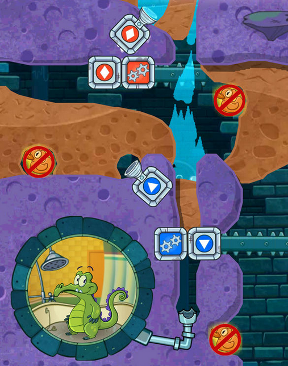 The gameplay in Where's My Water? 2 is the same as the games that came before it. Each level presents you with Swampy's bathtub at the bottom of the screen, with water pockets trapped above. Between you and Swampy's shower are solid rocks, movable blocks, levers, switches, spouts and most importantly, removable dirt. Simply trace your finger along the screen to create a path for the water to travel. Get it all to Swampy to complete the stage, conserving every drop you can along the way!
The gameplay in Where's My Water? 2 is the same as the games that came before it. Each level presents you with Swampy's bathtub at the bottom of the screen, with water pockets trapped above. Between you and Swampy's shower are solid rocks, movable blocks, levers, switches, spouts and most importantly, removable dirt. Simply trace your finger along the screen to create a path for the water to travel. Get it all to Swampy to complete the stage, conserving every drop you can along the way!
Gameplay is structured a little differently in Where's My Water? 2. You now have a map of sorts to travel through, unlocking stages by collecting a certain number of duckies in each level. You also gain access to special challenge stages that do crazy things like turn the world upside-down or force you not to collect ducks. These add a nice change of pace to the series formula, though they do end up feeling like they were thrown in there just to justify the duck-based level locking system.
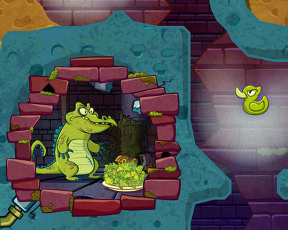 Analysis: While the gameplay of Where's My Water? 2 remains mostly unchanged, the sequel goes down the dark path of freemium monetization in several unfavorable ways. For starters, there's energy to worry about. Just like those cash-in Facebook games, you're limited to the number of things you can do by an energy bar that depletes each time you play a level. You gain more over time, but it's always there threatening to end your fun just when you're starting to get into it. An expensive in-app purchase permanently increases the bar's size, but once you see the price you'll run away in terror.
Analysis: While the gameplay of Where's My Water? 2 remains mostly unchanged, the sequel goes down the dark path of freemium monetization in several unfavorable ways. For starters, there's energy to worry about. Just like those cash-in Facebook games, you're limited to the number of things you can do by an energy bar that depletes each time you play a level. You gain more over time, but it's always there threatening to end your fun just when you're starting to get into it. An expensive in-app purchase permanently increases the bar's size, but once you see the price you'll run away in terror.
It's a bit of a disappointment to see an imaginative and successful series like this go down the path of "everybody's doin' it so we are too". The design went from a pleasant level of creativity to a rubber stamp copy of every other mobile game out there, adopting many of the features that suck the life out of otherwise fantastic games. The items it added are fun but completely unnecessary, shoved in there as an excuse to monetize the product. It's a similar situation as the Plants vs. Zombies sequel selling out, though Where's My Water? 2 doesn't commit the crime quite as harshly.
If you don't mind dealing with an aggressively monetized (and Facebook integrated) game, Where's My Water? 2 still provides a lot of entertainment. It's a free download and gives you quite a lot of things to do without spending any money. Plenty of unique challenges, lots of things to collect, and more alligators than your average swamp party. That's a good thing, by the way.
NOTE: This game was played and reviewed on the iPad 3. Game was available in the North American market at the time of publication, but may not be available in other territories. Please see individual app market pages for purchasing info.
![]() Welcome to the beginning of our coverage on interesting indie funding projects (Kickstarter, IndieGoGo), Steam Greenlight games, and news and previews!
Welcome to the beginning of our coverage on interesting indie funding projects (Kickstarter, IndieGoGo), Steam Greenlight games, and news and previews!
Platform: PC (and Wii U, PS3, PS4, VITA & VITA TV, Xbox 360, Xbox One!)
DRM: Steam
Developer: WayForward
Genre: Action-Adventure/Metroidvania
Planned Release: October 2014
Funding Asked: $400,000.00USD
Funding Ends: October 4th, 2013
WayForward has been in the business a whopping 23 years with over 200 releases under their belt, most recently nostalgia-hammer DuckTales: Remastered, and now they aim to bring the star of their hit iOS game, Shantae: Risky's Revenge, to PCs and consoles everywhere in an entirely new adventure with the planned Kickstarter for Shantae: Half-Genie Hero. Gorgeous visuals? Quirky gameplay? Cheeky characters and story? Classic platforming action with an adventurous Metroidvania flair? Awww yisss, sign me up!
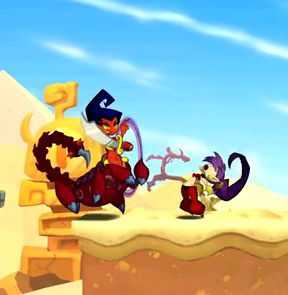 As you'd surmise from the title, the game stars Shantae, who is in fact half-genie, and sets out to stop the arise of an ancient evil that visits her in a dream. Shantae doesn't quite have semi-phenomenal, nearly-cosmic powers, but she does have an impressive arsenal of tricks to go along with her platforming prowess, such as the ability to use her ponytail as a weapon, belly-dance to transform into different beasts with unique powers, upgrades, and more. At the moment, the game is planned for three chapters (no word on how long those are), but the team has some truly ambitious stretch goals planned if their funding really takes off... such as the ability to play as Shantae's arch-nemesis, the pirate maiden Risky Boots, in her very own full campaign with her own unique abilities.
As you'd surmise from the title, the game stars Shantae, who is in fact half-genie, and sets out to stop the arise of an ancient evil that visits her in a dream. Shantae doesn't quite have semi-phenomenal, nearly-cosmic powers, but she does have an impressive arsenal of tricks to go along with her platforming prowess, such as the ability to use her ponytail as a weapon, belly-dance to transform into different beasts with unique powers, upgrades, and more. At the moment, the game is planned for three chapters (no word on how long those are), but the team has some truly ambitious stretch goals planned if their funding really takes off... such as the ability to play as Shantae's arch-nemesis, the pirate maiden Risky Boots, in her very own full campaign with her own unique abilities.
Shantae has been around for a long time, even beyond her iOS hit, having originally had her own adventure way back in 2002 on the Game Boy Color, and WayForward definitely has the talent and expertise to see this project through with their long history. To say the game looks gorgeous is an understatement, and with the constant demand for games to innovate and dazzle, it's easy to forget that classic platforming adventure, done well, can dazzle just as well, and is something we don't see enough of anymore. If that sounds promising to you, then head on over to the official Kickstarter page to learn more and check out a teaser video of the game in action!
JayisGames.com Kickstarter picks are selected based only on personal evaluation and perceived overall quality of the project. We assume no responsibility for failed projects or developer's inability to deliver. Donate with care! Contact dora AT jayisgames DOT com with KICKSTARTER in the subject line if you find a project you think we should know about!
![]() Imagine if Mike Shadow: I Paid For It! was about a guy who accidentally destroyed the world with an ancient weapon and you basically have Denis Novikov and Yuriy Porogoy's Arcane Weapon, an action game about being hardcore and beating up the giant demons you unleashed. Your job is to take out the demon in each fight before it destroys you by clicking the icons at the bottom of the screen to chain together powerful attacks. Each one has a cool down timer, so try not to wind up standing around like a dingdong while you're getting your face beaten in. Landing blows sometimes causes your opponent to drop cash, important to buy new upgrades, equipment, and attacks, or helpful healing items, so make sure you weapon your cursor over them to snatch them up when you see 'em. Since you can only have so many ability slots on your attack bar, make sure you take the time to organise it between fights, dragging the icons of abilities you own to slots to swap them out.
Imagine if Mike Shadow: I Paid For It! was about a guy who accidentally destroyed the world with an ancient weapon and you basically have Denis Novikov and Yuriy Porogoy's Arcane Weapon, an action game about being hardcore and beating up the giant demons you unleashed. Your job is to take out the demon in each fight before it destroys you by clicking the icons at the bottom of the screen to chain together powerful attacks. Each one has a cool down timer, so try not to wind up standing around like a dingdong while you're getting your face beaten in. Landing blows sometimes causes your opponent to drop cash, important to buy new upgrades, equipment, and attacks, or helpful healing items, so make sure you weapon your cursor over them to snatch them up when you see 'em. Since you can only have so many ability slots on your attack bar, make sure you take the time to organise it between fights, dragging the icons of abilities you own to slots to swap them out.
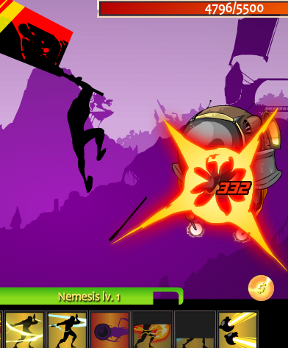 Make no mistake, Arcane Weapon is a gorgeous, addictive little game for all its relative simplicity. The enemies are wonderfully designed and the flashy attacks on both side are fun to watch. Since many attacks provided bonuses to the next move you make, there's a nice element to strategy rather than simply mindlessly punching keys and grinding away... though you'll have to do some of that too. At the same time, however, it doesn't feel like it's as smooth to play as it should be. Having to wait for an attack to finish before you can click on another is a little annoying, when it seems like queuing them up should be relatively simple, even allowing for your enemy to retaliate, and having to waggle your cursor around to pick up items is tedious. But with a gorgeous presentation, tons of upgrades and achievements, and a whole batch of demons to take down, fans of flash and fighting will appreciate Arcane Weapon's style and simplicity as the perfect breaktime beatdown.
Make no mistake, Arcane Weapon is a gorgeous, addictive little game for all its relative simplicity. The enemies are wonderfully designed and the flashy attacks on both side are fun to watch. Since many attacks provided bonuses to the next move you make, there's a nice element to strategy rather than simply mindlessly punching keys and grinding away... though you'll have to do some of that too. At the same time, however, it doesn't feel like it's as smooth to play as it should be. Having to wait for an attack to finish before you can click on another is a little annoying, when it seems like queuing them up should be relatively simple, even allowing for your enemy to retaliate, and having to waggle your cursor around to pick up items is tedious. But with a gorgeous presentation, tons of upgrades and achievements, and a whole batch of demons to take down, fans of flash and fighting will appreciate Arcane Weapon's style and simplicity as the perfect breaktime beatdown.
![]() Hyptosis has served up another installment of his point-and-click adventure series, Kingdom of Liars 3. Following the events of the first and second games (so make sure you've played them!), you barely have time to recover before Captain Whelek sends you off to... "gently"... deal with the Steel Fist Templars. What are the chances that will go smoothly, d'you reckon? Well... as it turns out, solving that is easier than you might think, but with the discovery of a mysterious relic in the woods outside the city, it's unlikely your life is going to get any less complicated, or dangerous, any time soon. Just click around to interact and pick up items, and click on two objects in your inventory to try to combine them.
Hyptosis has served up another installment of his point-and-click adventure series, Kingdom of Liars 3. Following the events of the first and second games (so make sure you've played them!), you barely have time to recover before Captain Whelek sends you off to... "gently"... deal with the Steel Fist Templars. What are the chances that will go smoothly, d'you reckon? Well... as it turns out, solving that is easier than you might think, but with the discovery of a mysterious relic in the woods outside the city, it's unlikely your life is going to get any less complicated, or dangerous, any time soon. Just click around to interact and pick up items, and click on two objects in your inventory to try to combine them.
Though Kingdom of Liars 3 features more of the stunning artwork and intriguing setting we've come to expect from Hyptosis, it's short and easy in a way that makes it feel rushed, especially with puzzles that rely more on backtracking and random conversation options to advance than anything else and repetitive dialogue. The series as a whole just has such a great concept and world ripe for exploring that it really feels like it needs a more meaty game to make the characters and their exchanges more memorable and the puzzles more substantial. It deserves to be explored in greater depth instead of the quick snippets we've been given. Of course if you prefer your adventures bite-sized, then you'll still enjoy Kingdom of Liars 3 for what it has to offer... another beautifully illustrated, short yet tantalizing dip into a dark yet fascinating world with just enough small puzzles to keep you occupied rather than make you sweat, and a few clever references to other games Hyptosis has created that tie the worlds together. You'll have to wait for the fourth chapter to find out more!
Thanks to Celli for sending this one in!
![]() The year is 3518. You and your crew land on a distant planet where traces of intelligent life have been detected, the first time this has occurred. In the remains of a lost civilization, the technology of nearly forgotten creatures asks you the pivotal question: How Smart Are You? A puzzle game by Entertainment Forge, How Smart Are You? is a work where, in order to get some answers, you'll need to provide some first. Use the [arrow keys] to move and [spacebar] to interact with objects. In each room is a puzzle or challenge you must complete before moving on to the next room. Answering questions correctly will raise your IQ point gauge and grant you credits to buy hints and power-ups. Answering incorrectly will lower your point gauge. There is no penalty for skipping a room but every set of five rooms you complete will unlock more of the planet's history. Completing all thirty will allow you access to the ruins' inner sanctum.
The year is 3518. You and your crew land on a distant planet where traces of intelligent life have been detected, the first time this has occurred. In the remains of a lost civilization, the technology of nearly forgotten creatures asks you the pivotal question: How Smart Are You? A puzzle game by Entertainment Forge, How Smart Are You? is a work where, in order to get some answers, you'll need to provide some first. Use the [arrow keys] to move and [spacebar] to interact with objects. In each room is a puzzle or challenge you must complete before moving on to the next room. Answering questions correctly will raise your IQ point gauge and grant you credits to buy hints and power-ups. Answering incorrectly will lower your point gauge. There is no penalty for skipping a room but every set of five rooms you complete will unlock more of the planet's history. Completing all thirty will allow you access to the ruins' inner sanctum.
How Smart Are You? looks a lot like Mystery IQ Test, it plays a lot like Mystery IQ Test, it was made by the same people as Mystery IQ Test, and it was referred to as Mystery IQ Test 2 on the developer's website right up until the moment the game got a different sponsor from the original. So I guess Keiji Inafune isn't the only developer not even trying to fool anyone.
It should be no surprise that it has the same mix of sleek design, engagingly quirky puzzles, and fourth-wall-breaking humor as that game. Admittedly, some of the late-game twists in the story are telegraphed so early that it might take a moment for them to even register as plot twists, but that's a minor quibble. If you're the type who enjoys finding creative solutions, this game might just be your version of free spins no deposit required keep your winnings - a chance to test your wits and come out ahead with a rewarding sense of accomplishment.
How Smart Are You? may not claim to accurately answer the titular question with its challenge but, hey, get a high score and you'll feel like quite the intelligent baked-good indeed.
It should be no surprise that it has the same mix of sleek design, engagingly quirky puzzles, and fourth-wall-breaking humor as that game. Admittedly, some of the late-game twists in the story are telegraphed so early that it might take a moment for them to even register as plot twists, but that's a minor quibble. If you're the type who enjoys finding creative solutions, this game might just be your version of free spins no deposit required keep your winnings - a chance to test your wits and come out ahead with a rewarding sense of accomplishment.
How Smart Are You? may not claim to accurately answer the titular question with its challenge but, hey, get a high score and you'll feel like quite the intelligent baked-good indeed.
![]() Piotr Iwanicki, Jakub Ziembinski, Lukasz Spierewka, Marek Baczynski, Konrad Kacperczyk, Dawid Adamkiewicz, vxd555 and more are behind the surreal first-person shooter game that is Super Hot, where time only moves when you do. ... well, okay, it still moves when you don't, just very, very slowly. With limited ammunition and the odds stacked against you, each level represents a puzzle more than a John Woo action sequence where you're tasked with taking out all the enemies around you without getting killed yourself... easier said than done since a single shot is all it takes, and yes, the movement of your bullets (and those of your foes) is also affected by your unique time-bending status, so you'll need to plan trajectories and learn how to herd your enemies around. Use the mouse to aim and shoot, and [WASD] to move around.
Piotr Iwanicki, Jakub Ziembinski, Lukasz Spierewka, Marek Baczynski, Konrad Kacperczyk, Dawid Adamkiewicz, vxd555 and more are behind the surreal first-person shooter game that is Super Hot, where time only moves when you do. ... well, okay, it still moves when you don't, just very, very slowly. With limited ammunition and the odds stacked against you, each level represents a puzzle more than a John Woo action sequence where you're tasked with taking out all the enemies around you without getting killed yourself... easier said than done since a single shot is all it takes, and yes, the movement of your bullets (and those of your foes) is also affected by your unique time-bending status, so you'll need to plan trajectories and learn how to herd your enemies around. Use the mouse to aim and shoot, and [WASD] to move around.
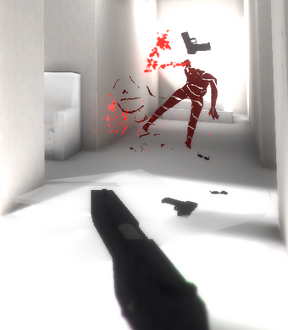 It's a great idea, and Super Hot's formidable team of talents has executed it with an incredible amount of style. Originally created for the 7 Day First Person Shooter challenge, it's since been tweaked and polished, though some things are still a little awkward. The lack of an onscreen ammo counter, for instance, as well as a somewhat unclear "hit box" resulting from your lack of visible torso that makes dodging incoming fire more guesswork than it should be. There's also no level select, so you have to finish the entire game in one sitting, though there's only a handful of stages anyway. Just remember that if your gun does run out of ammo, it's possible to disarm an enemy if you get close enough and take their weapon for yourself, or snatch up a fallen one.
It's a great idea, and Super Hot's formidable team of talents has executed it with an incredible amount of style. Originally created for the 7 Day First Person Shooter challenge, it's since been tweaked and polished, though some things are still a little awkward. The lack of an onscreen ammo counter, for instance, as well as a somewhat unclear "hit box" resulting from your lack of visible torso that makes dodging incoming fire more guesswork than it should be. There's also no level select, so you have to finish the entire game in one sitting, though there's only a handful of stages anyway. Just remember that if your gun does run out of ammo, it's possible to disarm an enemy if you get close enough and take their weapon for yourself, or snatch up a fallen one.
But Super Hot is still not just gorgeous to behold, with its stylized design and stark colours, but brilliantly satisfying to pull off. Watching bullets streak towards you in slow-mo while you ponder how to dodge them before stepping aside to watch a red trail speeding straight for the enemy who was standing behind you feels more challenging and involving than brainless firing. Pity, then, it's such a very short game, and with the ending as baffling as it is, one can only hope the developers get the chance to develop it into a full game and storyline... though I'd honestly just take a whole mess of random levels, because the clever gameplay and concept shines in a way that begs more of it. Super Hot is proof shooters can be far more than mindless, and far swankier than you'd ever expect too.
![]() Quantum Spectre by EdGE and GameGurus, is a puzzle game about keeping dangerous space boogers in check. Well, not literally, but basically. The concept is that you work aboard a station where "space spectres" (is that like GhostFacers?) are about to break free of their containment fields, which is bad for some reason, so you must place a series of mirrors and other reflective objects down on a field to direct a laser to power the containment field in a limited number of moves. If you complete a level in more than the amount of moves allowed, spectres will begin to escape and... do stuff? Everything you do, from dragging mirrors around to rotating them, costs you a move, so make sure you plan things out in advance, since the lack of an undo button means you have to restart the entire level if you make a mistake.
Quantum Spectre by EdGE and GameGurus, is a puzzle game about keeping dangerous space boogers in check. Well, not literally, but basically. The concept is that you work aboard a station where "space spectres" (is that like GhostFacers?) are about to break free of their containment fields, which is bad for some reason, so you must place a series of mirrors and other reflective objects down on a field to direct a laser to power the containment field in a limited number of moves. If you complete a level in more than the amount of moves allowed, spectres will begin to escape and... do stuff? Everything you do, from dragging mirrors around to rotating them, costs you a move, so make sure you plan things out in advance, since the lack of an undo button means you have to restart the entire level if you make a mistake.
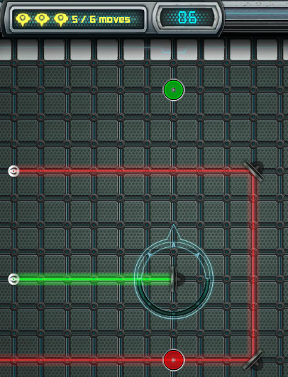 Eventually, you'll need to contend with making sure specific colours are routed to appropriate nodes, or making sure certain nodes are powered by multiple colours, or even blending lasers to get a specific colour of out them. Throw in some other objects like double-sided mirrors and the difficulty ramps up nicely... if somewhat unevenly, with what feels like a very long, gentle slope of levels players might find far too easy. It's designed to be an educational game, which is great, though some minor annoyances like the lack of colour-blind friendly options, the absent undo button, and how ludicrously tiny the light that indicates what colour laser a node is projecting is (which makes separating mixed colours a little more difficult than it needed to be whenever you encounter it ), means the game isn't quite as user-friendly as it possibly could be. For a lot of players, the premise is going to be too familiar, and the perhaps disproportionately flashy opening cutscene and spectre visuals won't be enough to really elevate it. Still, the levels are crafted with care, and the slow inclusion of new elements makes this a solid, beautifully presented little puzzle to cut your teeth on... and now you get to add "spectre containment specialist" to your resume to boot.
Eventually, you'll need to contend with making sure specific colours are routed to appropriate nodes, or making sure certain nodes are powered by multiple colours, or even blending lasers to get a specific colour of out them. Throw in some other objects like double-sided mirrors and the difficulty ramps up nicely... if somewhat unevenly, with what feels like a very long, gentle slope of levels players might find far too easy. It's designed to be an educational game, which is great, though some minor annoyances like the lack of colour-blind friendly options, the absent undo button, and how ludicrously tiny the light that indicates what colour laser a node is projecting is (which makes separating mixed colours a little more difficult than it needed to be whenever you encounter it ), means the game isn't quite as user-friendly as it possibly could be. For a lot of players, the premise is going to be too familiar, and the perhaps disproportionately flashy opening cutscene and spectre visuals won't be enough to really elevate it. Still, the levels are crafted with care, and the slow inclusion of new elements makes this a solid, beautifully presented little puzzle to cut your teeth on... and now you get to add "spectre containment specialist" to your resume to boot.
![]() The most recent Ludum Dare challenged people to make a game in just 48 hours themed around "10 Seconds", and for Morusque that was more than enough time to turn out this quirky little point-and-click puzzle game called Robby. Robby's plan to rob a bank doesn't go over well when a police officer shows up despite the teller's cooperation, and now he has until the copper counts to ten to drop his gun... but since that'll wind you up in prison, what's the point in doing that? Just click around to interact with things when their names appear as you mouse over them, but be warned... each click counts as a second, making the game turn-based, and you don't have long to figure out a way out. You do, however, have a lot of options... and a lot of ways this could go badly for you.
The most recent Ludum Dare challenged people to make a game in just 48 hours themed around "10 Seconds", and for Morusque that was more than enough time to turn out this quirky little point-and-click puzzle game called Robby. Robby's plan to rob a bank doesn't go over well when a police officer shows up despite the teller's cooperation, and now he has until the copper counts to ten to drop his gun... but since that'll wind you up in prison, what's the point in doing that? Just click around to interact with things when their names appear as you mouse over them, but be warned... each click counts as a second, making the game turn-based, and you don't have long to figure out a way out. You do, however, have a lot of options... and a lot of ways this could go badly for you.
Though it is, by design, a very short little game, chances are you'll have to play through it multiple times in order to concoct a scheme that will get you out alive and jail-free. Normally that sort of trial-and-error would be frustrating, but with Robby's surreal, weirdo style and so cheerfully silly to boot, experimenting is more fun than not. You can leave the bank, threaten the tellers, try to break the chandelier, visit stores, and so on, and so forth, and somewhere in there you'll find a way to let Robby go free. I, for one, would love to see further adventures of Robby, and if you've got a sense of humour, a little initiative, and a bit of the ol' MacGuyver in you when it comes to getting out of bad situations, chances are you will too.
![]() I Am Level is a one button arcade platform game from Smiling Bag, available free for Android devices or in your browser. It does away with most control buttons and gives you a rolling character you influence by tilting your mobile device left and right. Tap the screen to activate all of the screen's mechanisms, shooting springboards up, shifting platforms around, or knocking pinball-style flippers in the air. Through a creative combination of luck and skill, it's your job to explore the delightfully unconventional pathways that wind their way in and out of the game's challenging stages.
I Am Level is a one button arcade platform game from Smiling Bag, available free for Android devices or in your browser. It does away with most control buttons and gives you a rolling character you influence by tilting your mobile device left and right. Tap the screen to activate all of the screen's mechanisms, shooting springboards up, shifting platforms around, or knocking pinball-style flippers in the air. Through a creative combination of luck and skill, it's your job to explore the delightfully unconventional pathways that wind their way in and out of the game's challenging stages.
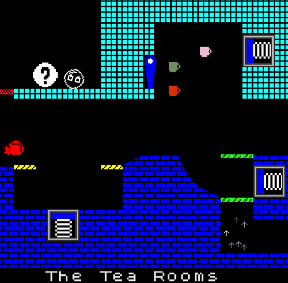 As you roll your way through I Am Level you'll collect stars from each screen. Gather them all and you'll complete that particular area, contributing to your overall score and slowly unlocking new costumes you can adorn yourself with. Save your progress, then jump around the map by visiting checkpoints you've reached, all with a few taps of the screen.
As you roll your way through I Am Level you'll collect stars from each screen. Gather them all and you'll complete that particular area, contributing to your overall score and slowly unlocking new costumes you can adorn yourself with. Save your progress, then jump around the map by visiting checkpoints you've reached, all with a few taps of the screen.
I Am Level has a vaguely VVVVVV-ish feel to it. The stages are laid out in a non-linear fashion, allowing you to traverse rooms and complete challenges almost at your leisure. There's a pattern to where you can go and how you can get there, of course, as dictated by the question blocks you remove by reaching certain milestones. But on the whole you feel as if you've got a world of your own to explore, even though it's fairly small.
I Am Level suffers from a sluggish interface on Androids. The game itself plays just fine, but navigating between menus and starting up each round takes far longer than it should. This serves as a slight deterrent to really getting into the game, but it's not so severe that you won't want to sit through it. Once you get going, I Am Level has this wonderful charm that will keep you challenged and intrigued for hours.
NOTE: This game was played and reviewed on the Nexus 4. Game was available in the North American market at the time of publication, but may not be available in other territories. Please see individual app market pages for purchasing info.
![]() Welcome to the beginning of our coverage on interesting indie funding projects (Kickstarter, IndieGoGo), Steam Greenlight games, and news and previews!
Welcome to the beginning of our coverage on interesting indie funding projects (Kickstarter, IndieGoGo), Steam Greenlight games, and news and previews!
Platform: PC/Mac/Linux
DRM: Steam
Developer: Hailstorm Games
Genre: Action/Adventure/Horror
Planned Release: October/November 2013
Price: Unknown
Steam Greenlight Page
Coming later this year from Hailstorm Games for PC, Mac, and Linux, the indie horror game Claire, currently up for voting over on Steam's Greenlight service, shows a lot of promise. The story follows a girl named Claire, who has spent her entire life being plagued by horrors and nightmares, and now, as an adult, finds herself trapped with her loyal dog in a twisted world full of things that want to do her harm. There, she also encounters people who she can possibly "redeem"... but might have a greater connection to her than she could possibly imagine.
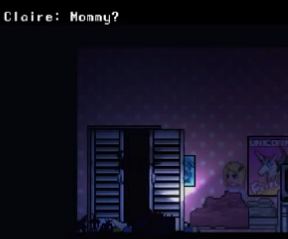 The game itself will be a survival horror adventure with a few twists. You'll play as Claire throughout multiple stages of her life, and in addition to finding items to restore health or caffeine to stay awake, the game is tied to Claire's panic level, which means that the more frightened she gets, the scarier the game gets in response. Throw in the promise of multiple endings and even multiple modes, as well as the possibility for player made levels, and you have a game that looks like something horror fans should be keeping their eye on and give the ol' thumbs up if they'd like to see it on Steam. And why wouldn't you, since the game's other selling point is Claire's trusty constant companion, her German Shepherd, who can help you find things and stay alive? It is a true fact, as classics like Secret of Evermore have proven, that games are approximately ten times better by the inclusion of a stalwart doggy companion.
The game itself will be a survival horror adventure with a few twists. You'll play as Claire throughout multiple stages of her life, and in addition to finding items to restore health or caffeine to stay awake, the game is tied to Claire's panic level, which means that the more frightened she gets, the scarier the game gets in response. Throw in the promise of multiple endings and even multiple modes, as well as the possibility for player made levels, and you have a game that looks like something horror fans should be keeping their eye on and give the ol' thumbs up if they'd like to see it on Steam. And why wouldn't you, since the game's other selling point is Claire's trusty constant companion, her German Shepherd, who can help you find things and stay alive? It is a true fact, as classics like Secret of Evermore have proven, that games are approximately ten times better by the inclusion of a stalwart doggy companion.
Hopefully in the near future we'll see more details begin to appear, such as pricing and a better idea of the gameplay, preferably through video, but in the meantime you can check out the Steam Greenlight page to learn more and give it the thumbs up like Kronk always wanted.
![]() It's finally happened. You've gone beyond the walls of Daymare Town. But what waits for you in the eerie silence of the Sea of Smoke... and beyond? Mateusz Skutnik delivers another creepy-cool yet imaginative point-and-click adventure game with the long awaited Daymare Town 4. After three years, your chance to explore more of the beloved world has arrived. Just click around to navigate and interact, using the changing cursor as your guide. There is a lot to find and gather up, and not all of it is useful, so make sure to make use of places to store items, or keep your eyes peeled for a backpack to allow you to carry even more.
It's finally happened. You've gone beyond the walls of Daymare Town. But what waits for you in the eerie silence of the Sea of Smoke... and beyond? Mateusz Skutnik delivers another creepy-cool yet imaginative point-and-click adventure game with the long awaited Daymare Town 4. After three years, your chance to explore more of the beloved world has arrived. Just click around to navigate and interact, using the changing cursor as your guide. There is a lot to find and gather up, and not all of it is useful, so make sure to make use of places to store items, or keep your eyes peeled for a backpack to allow you to carry even more.
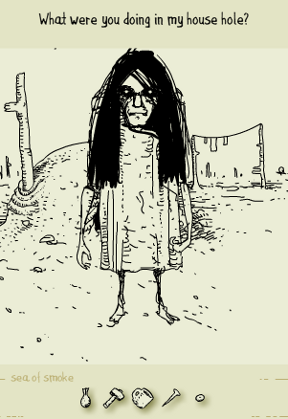 Chances are if you saw this title and started doing a little squirmy happy dance in your seat, you're already familiar with its signature brand of surreal, disorienting environments and odd puzzles. In which case, the biggest difficulty you might encounter is navigation, since it's easy to completely miss a lot of area transitions that aren't visually indicated onscreen unless you sweep your cursor over them. Chances are if you get stuck, it's mostly because you didn't think to try to zoom in on a seemingly innocuous area, or to sweep your cursor along the edges of the screen to see if you could turn around or go another way not indicated. It's a game that needs you to explore every nook and cranny, to keep your eyes open for clues and try everything. It's also, as you might expect, absolutely gorgeous, although perhaps with a more unnerving art style to its denizens than before.
Chances are if you saw this title and started doing a little squirmy happy dance in your seat, you're already familiar with its signature brand of surreal, disorienting environments and odd puzzles. In which case, the biggest difficulty you might encounter is navigation, since it's easy to completely miss a lot of area transitions that aren't visually indicated onscreen unless you sweep your cursor over them. Chances are if you get stuck, it's mostly because you didn't think to try to zoom in on a seemingly innocuous area, or to sweep your cursor along the edges of the screen to see if you could turn around or go another way not indicated. It's a game that needs you to explore every nook and cranny, to keep your eyes open for clues and try everything. It's also, as you might expect, absolutely gorgeous, although perhaps with a more unnerving art style to its denizens than before.
Sensitive players also might want to be warned, however, that there is a brief implication of suicide which might be upsetting to some. There's an overall bleakness to this installment that somehow makes it more unsettling than its predecessors, a grimmer vibe than the Moomin-esque feel it had prior. Daymare Town 4 offers a lot to explore, and continues the series' tradition of red herrings, allowing you to use some items in the places they don't really belong to mislead you. (Although as a general rule, in most cases if you've put an item in the proper place, you won't be able to move it again.) It's a game that sets out to make you feel lost and bewildered and it definitely succeeds. What's waiting for you out there beyond the Resin Gate, Seaweed Fossil Chasm, and beyond? Only one way to find out. It's a massive game well worth your time... and if you enjoy it, consider picking up the fullscreen HD version for $5.00USD to support the developer who's given us so much for so long for free.
Thanks to Jode for sending this one in!
![]() 2010's Amnesia: The Dark Descent by indie developers Frictional Games was an instant hit, a psychological horror adventure game that played on your fears with a haunting story. So it's no surprise, then, that the sequel Amnesia: A Machine for Pigs, this time developed by Dear Esther team The Chinese Room, has some big shoes to fill and expectations looming over it. Our protagonist awakes, dizzy and disoriented, in a dark and silent house, in a bed surrounded by a cage whose door has just been opened. Hearing the phantom laughter and pleas of children, he has no choice but to stumble forth in search of them. But what are all these locks and bars on the doors, dressers, beds and windows? What are the ornate sculpted pig masks that silently watch you from every room? Why do you suffer from disturbing, disjointed memories? Why are there so many hidden passages in this place... and why does it shake and groan around you? There are a lot of questions, but the answers might not be the ones our hero was hoping to find.
2010's Amnesia: The Dark Descent by indie developers Frictional Games was an instant hit, a psychological horror adventure game that played on your fears with a haunting story. So it's no surprise, then, that the sequel Amnesia: A Machine for Pigs, this time developed by Dear Esther team The Chinese Room, has some big shoes to fill and expectations looming over it. Our protagonist awakes, dizzy and disoriented, in a dark and silent house, in a bed surrounded by a cage whose door has just been opened. Hearing the phantom laughter and pleas of children, he has no choice but to stumble forth in search of them. But what are all these locks and bars on the doors, dressers, beds and windows? What are the ornate sculpted pig masks that silently watch you from every room? Why do you suffer from disturbing, disjointed memories? Why are there so many hidden passages in this place... and why does it shake and groan around you? There are a lot of questions, but the answers might not be the ones our hero was hoping to find.
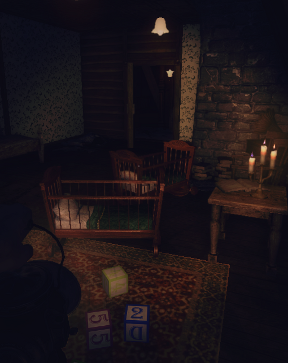 The controls remain essentially unchanged. You use [WASD] to move, left [CTRL] to toggle crouching, and the mouse to look around and interact, clicking and pushing or pulling to manipulate objects and doors around you. To drag heavy objects like crates, you need to click and hold on them, and then use the movement keys to pull it around. Unlike the original game which allowed you to essentially redecorate entire rooms with stacked junk and objects, there is considerably less to fuss with, and things you can interact with tend to be limited to certain containers, chairs, and plot-related objects. Press [M] to view your journal and re-read documents or notes, and make sure you refer to them often for clues as to how to proceed. Once you've found it, [F] will turn on your lantern. You don't have to worry about fuel, but you do have to worry about it making you more easily spotted. Because while this time around there are no health or sanity attributes to worry about, or even an inventory, you're still not safe.
The controls remain essentially unchanged. You use [WASD] to move, left [CTRL] to toggle crouching, and the mouse to look around and interact, clicking and pushing or pulling to manipulate objects and doors around you. To drag heavy objects like crates, you need to click and hold on them, and then use the movement keys to pull it around. Unlike the original game which allowed you to essentially redecorate entire rooms with stacked junk and objects, there is considerably less to fuss with, and things you can interact with tend to be limited to certain containers, chairs, and plot-related objects. Press [M] to view your journal and re-read documents or notes, and make sure you refer to them often for clues as to how to proceed. Once you've found it, [F] will turn on your lantern. You don't have to worry about fuel, but you do have to worry about it making you more easily spotted. Because while this time around there are no health or sanity attributes to worry about, or even an inventory, you're still not safe.
Analysis: In a way, by starting off at a slower boil in a comparatively more mundane setting, A Machine for Pigs could be seen as vastly more unsettling than its predecessor. Trading its stone castle walls for the ornate but more familiar trappings of a house, the game grounds itself in a way that makes its surreal, terrifying events feel too close for comfort. I was motivated by the story and masterful worldcrafting in a way I wasn't by its predecessor. A Machine for Pigs keeps you guessing and dreading for a long time, slowly painting a picture of both your character and the events leading up to the game even if you guess the twist long before it happens. Though it does have ties plot-wise to The Dark Descent to the point where you won't understand much of the latter half if you haven't played the first game, A Machine for Pigs feels like a far grimmer tale of personal obsession, grief, and madness that will unsettle you more than outright terrify you.
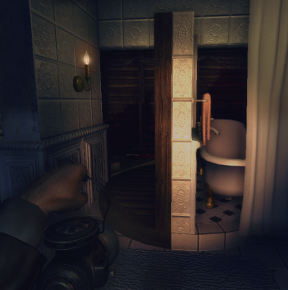 It feels far subtler as well. Loud noises and surprises are to be had, for sure, but A Machine for Pigs frightens far more with the smaller details, like the way the eyes of a mask follow you wherever you go, or turning and finding one sitting silently in a room you just left, or simply discovering an object in a different location than it was before. It makes your skin crawl as you constantly second-guess yourself. Maybe that's always been there. Was it really on the other-side of the room before? Should I just go ahead and void my bowels now or later? It creates an atmosphere of insidious unease and paranoia, playing with your perceptions in ways big and small to craft the sort of atmosphere that makes you question your sanity in ways few games ever manage. Throw in some top notch voice acting and wonderful area design (whoever picked out that painting of the lady with the knife is a monster), and it's an extremely polished title.
It feels far subtler as well. Loud noises and surprises are to be had, for sure, but A Machine for Pigs frightens far more with the smaller details, like the way the eyes of a mask follow you wherever you go, or turning and finding one sitting silently in a room you just left, or simply discovering an object in a different location than it was before. It makes your skin crawl as you constantly second-guess yourself. Maybe that's always been there. Was it really on the other-side of the room before? Should I just go ahead and void my bowels now or later? It creates an atmosphere of insidious unease and paranoia, playing with your perceptions in ways big and small to craft the sort of atmosphere that makes you question your sanity in ways few games ever manage. Throw in some top notch voice acting and wonderful area design (whoever picked out that painting of the lady with the knife is a monster), and it's an extremely polished title.
It's a much more straight-forward adventure experience too... go here, do a thing, go back to see what that thing might have triggered. Though the developers were thoughtful enough to provide me with a spoiler-free walkthrough, I honestly didn't need it and might have just preferred a map instead. Most puzzles are fairly obvious and simply require you to throw switches, bring an item somewhere, or just keep moving forward. Similarly, the lack of an inventory feels like it does little else than draw out the length of frustrating sequences, forcing you to go back and forth to carry items where they're needed one at a time, such as the fuse-generator sequence in the cellar. It feels like you're being lead by the nose rather than actually exploring and discovering through challenge and thought compared to its predecessor. You'll go hours without getting your first whiff of monster, and those few sequences feel almost token and jarringly out of place compared to the rest of the game's pacing. It just doesn't feel like that's the sort of game A Machine for Pigs was destined to be, but they were shoehorned in anyway.
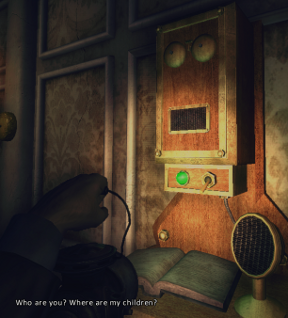 The other potential issue for many players is, well, A Machine For Pigs just doesn't feel very Amnesia-y. Even ignoring the lack of sanity and health meters, it's overall a drastically different game in tone and setting to the point where players expecting more of The Dark Descent's pell-mell blend of adventure and stealth might be a little put off given the namesake attached to it. I mean, don't get me wrong. Taken on its own merits, A Machine for Pigs is an excellent game with brilliantly executed subtle terror and mood that you'd be hard pressed to find anywhere else. But, well. A Machine For Pigs is an incredibly intriguing, immersive, engrossing game... it's just not necessarily scary in the "point a camera at your face and make a YouTube video" sense its predecessor became famous for, which is worth considering if that's what you were hoping for.
The other potential issue for many players is, well, A Machine For Pigs just doesn't feel very Amnesia-y. Even ignoring the lack of sanity and health meters, it's overall a drastically different game in tone and setting to the point where players expecting more of The Dark Descent's pell-mell blend of adventure and stealth might be a little put off given the namesake attached to it. I mean, don't get me wrong. Taken on its own merits, A Machine for Pigs is an excellent game with brilliantly executed subtle terror and mood that you'd be hard pressed to find anywhere else. But, well. A Machine For Pigs is an incredibly intriguing, immersive, engrossing game... it's just not necessarily scary in the "point a camera at your face and make a YouTube video" sense its predecessor became famous for, which is worth considering if that's what you were hoping for.
It feels, in some ways, like it might have been better to leave off the Amnesia title and ties to the original story, mostly because by itself, A Machine for Pigs is so well conceived of a horror story it ain't funny. It's chilling, sad, and disturbing by equal measure, with frights that are more cerebral than they are things leaping out and going BOO while the music goes REEEE. This is the sort of horror game I wish there was more of, for a lot of reasons. I spent around eight hours or so playing it, tracking down every little scrap of paper to provide more story, and as un-Amnesia-like as it was, it was also an experience I loved in a way. Consider it a grosser, more interactive, decidedly darker Dear Esther in gameplay and approach it as its own beast and you'll likely enjoy every bit of it. Just don't expect for it to be something it's not.
![]() Windows:
Windows:
Get the full version (GOG.com)
Get the full version (Steam)
![]() Mac OS X:
Mac OS X:
Get the full version (GOG.com)
Get the full version (Steam)
![]() What's the weekly feature with old games of quality? T-H-E J-i-G V-A-U-L-T! And welcome Vaultkateers, to Anything-Can-Happen day at the clubhouse, where we're featuring some wonderful platform, adventure, and strategy games this week. Forever let us hold the banner high! High! High! High!
What's the weekly feature with old games of quality? T-H-E J-i-G V-A-U-L-T! And welcome Vaultkateers, to Anything-Can-Happen day at the clubhouse, where we're featuring some wonderful platform, adventure, and strategy games this week. Forever let us hold the banner high! High! High! High!
 Hello Worlds! - "Tech Demo" games sometimes get a bad rap, with detractors making the point that it is often the technology and programming skill on display, rather than engaging or entertaining gameplay. Hello Worlds, a 2010 platformer made by students at the University of Washington for their game-design class, is a potent counter-argument. To be sure, the aesthetic is as sparse as a first-year dorm room, but the pure strength of the premise, where multiple screens combine into a single platforming challenge, makes one hope it got an A+. You'll truly be beside yourself with platforming fun.
Hello Worlds! - "Tech Demo" games sometimes get a bad rap, with detractors making the point that it is often the technology and programming skill on display, rather than engaging or entertaining gameplay. Hello Worlds, a 2010 platformer made by students at the University of Washington for their game-design class, is a potent counter-argument. To be sure, the aesthetic is as sparse as a first-year dorm room, but the pure strength of the premise, where multiple screens combine into a single platforming challenge, makes one hope it got an A+. You'll truly be beside yourself with platforming fun. Bow Street Runner - Produced in conjunction with Channel 4's crime series City of Vice, Little Loud's 2008 mystery adventure Bow Street Runner offers players an exciting look into the murky depths of 18th century London. Perhaps the best Live-Action FMV game ever made (or at least a heck of a lot better than Sherlock Holmes: Consulting Detective), Bow Street Runner lets players feel the grime of dried blood under their fingernails as they match wits with a collections of rogues both vile and tragic. High production values and intense atmosphere make it a must play for fans of the dark side of history. And hey! You just might learn something too!
Bow Street Runner - Produced in conjunction with Channel 4's crime series City of Vice, Little Loud's 2008 mystery adventure Bow Street Runner offers players an exciting look into the murky depths of 18th century London. Perhaps the best Live-Action FMV game ever made (or at least a heck of a lot better than Sherlock Holmes: Consulting Detective), Bow Street Runner lets players feel the grime of dried blood under their fingernails as they match wits with a collections of rogues both vile and tragic. High production values and intense atmosphere make it a must play for fans of the dark side of history. And hey! You just might learn something too!  Pandemic 2 - Dark Realm Studios' 2008 disease-based strategy game has a lot to offer: a darkly engaging simulation of the possible spread of a worldwide contagion, a textbook case in how a developer can turn a moderately entertaining game into a true classic of a sequel, and, of course, a demonstration of the hyper-efficacy of whatever Madagascar's equivalent of the Center for Disease Control is. Seriously. One person coughs in Alaska, and those guys will SHUT DOWN EVERYTHING. Quirks in the AI aside, Pandemic 2 is a morbidly fascinating work that allows you to create your own doomsday like no other.
Pandemic 2 - Dark Realm Studios' 2008 disease-based strategy game has a lot to offer: a darkly engaging simulation of the possible spread of a worldwide contagion, a textbook case in how a developer can turn a moderately entertaining game into a true classic of a sequel, and, of course, a demonstration of the hyper-efficacy of whatever Madagascar's equivalent of the Center for Disease Control is. Seriously. One person coughs in Alaska, and those guys will SHUT DOWN EVERYTHING. Quirks in the AI aside, Pandemic 2 is a morbidly fascinating work that allows you to create your own doomsday like no other.
While we welcome any comments about this weekly feature here, we do ask that if you need any help with the individual games, please post your questions on that game's review page. Well, what are you waiting for? Get out there and rediscover some awesome!
![]() Breakfast is served! Toast Time from Force of Habit is an absolutely charming arcade game that's all about bread, breakfast, and more bread. Terry is a toaster that shoots toast. Tap the screen to fire a bread blast through the air, taking out any enemies it happens to touch and propelling Terry in the opposite direction. By strategically tossing toast you can move around the screen to position yourself for the next attack. Above all, keep that alarm clock safe until time runs out!
Breakfast is served! Toast Time from Force of Habit is an absolutely charming arcade game that's all about bread, breakfast, and more bread. Terry is a toaster that shoots toast. Tap the screen to fire a bread blast through the air, taking out any enemies it happens to touch and propelling Terry in the opposite direction. By strategically tossing toast you can move around the screen to position yourself for the next attack. Above all, keep that alarm clock safe until time runs out!
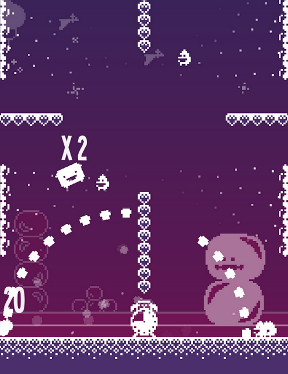 Toast Time feels a bit like Super Crate Box in overall design, though much easier to get into. Each single screen level has a few platforms, some enemy spawners, and that precious alarm clock to protect. Your toast arsenal starts with simple bits of toast and baguettes but moves through over a dozen other unlockables. You switch weapons by collecting crates in-game. The more you gather the more items you unlock, which includes some spiffy outfits you can mix and match and share, a feature that's far more entertaining than it has any right to be.
Toast Time feels a bit like Super Crate Box in overall design, though much easier to get into. Each single screen level has a few platforms, some enemy spawners, and that precious alarm clock to protect. Your toast arsenal starts with simple bits of toast and baguettes but moves through over a dozen other unlockables. You switch weapons by collecting crates in-game. The more you gather the more items you unlock, which includes some spiffy outfits you can mix and match and share, a feature that's far more entertaining than it has any right to be.
The wacky sense of fun that pervades Toast Time cannot be ignored. This is a game steeped in happiness with an extra thick layer of joyful-awesome on top. It's a perfect pick up and play game with plenty of things to keep you coming back for more, the least of which is a survival mode and bonus COFFEE TIME mode. Grab it now and start shooting toast. You won't regret it for a moment!
NOTE: This game was played and reviewed on the Nexus 4. Game was available in the North American market at the time of publication, but may not be available in other territories. Please see individual app market pages for purchasing info.
![]() A long time ago, in a kingdom far, far away, lived a rather hapless population, governed by a king who was pretty snooty but ran a rather tight ship. Then one day things began to fall apart and it was all blamed on the king. Now a mysterious stranger has come to town and challenged the king's right to rule. Can the royal envoy fix things before the general election? Yes rejoice time management fans, because a certain snooty king and an incompetently run kingdom are back for a third time to test our puzzle solving reflexes. Playrix Entertainment is back with Royal Envoy: Campaign for the Crown and the action is faster, more frantic, and much more puzzle driven than ever before!
A long time ago, in a kingdom far, far away, lived a rather hapless population, governed by a king who was pretty snooty but ran a rather tight ship. Then one day things began to fall apart and it was all blamed on the king. Now a mysterious stranger has come to town and challenged the king's right to rule. Can the royal envoy fix things before the general election? Yes rejoice time management fans, because a certain snooty king and an incompetently run kingdom are back for a third time to test our puzzle solving reflexes. Playrix Entertainment is back with Royal Envoy: Campaign for the Crown and the action is faster, more frantic, and much more puzzle driven than ever before!
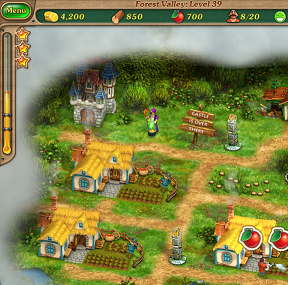 If you've played any of the first two Royal Envoy games the basic gameplay should be pretty familiar: Each level has a set of goals which can be accomplished by constructing housing or buildings to meet the needs of the local residents. Solving a level is a matter of marshaling certain resources such as labor, gold, lumber, and food and applying them to create housing, buildings, or other specialized structures needed by the residents. Everything can be accomplished either by a click of a mouse to set tasks or just a sweep of the cursor to pick up food, gold, or lumber that has been produced.
If you've played any of the first two Royal Envoy games the basic gameplay should be pretty familiar: Each level has a set of goals which can be accomplished by constructing housing or buildings to meet the needs of the local residents. Solving a level is a matter of marshaling certain resources such as labor, gold, lumber, and food and applying them to create housing, buildings, or other specialized structures needed by the residents. Everything can be accomplished either by a click of a mouse to set tasks or just a sweep of the cursor to pick up food, gold, or lumber that has been produced.
Each area of the kingdom has its own particular climate and challenges, whether it is snow, desert, or swamp. There are a small variety of houses to produce rent, buildings to produce goods, and decorations to produce happiness with which to work as you attempt to repair the kingdom and kick out Swindler before he completely ruins everything. Along the way you are helped or hindered by a wide variety of characters including blackmailing pirates, mad hatters, greedy gluttons, helpful elephants, bored druids, and many more. Can you win the election for the king?
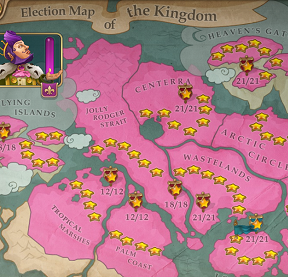 Analysis: Royal Envoy: Campaign for the Crown does something highly unusual in a time management game of the Build-a-Lot type that it started out as. Rather than pile on a ton of new stuff, the game first strips back a lot of the basic gameplay. There are now only three types of housing available, and the buildings such as the sawmills and markets never get any bigger than the beginner's level which offers 50, 100, and 250 of each resource. By stripping the core gameplay back in this way Playrix can add on the new stuff that is unique to each region of the kingdom without overwhelming with useless details, making the gameplay even more thoughtful and puzzle-centric.
Analysis: Royal Envoy: Campaign for the Crown does something highly unusual in a time management game of the Build-a-Lot type that it started out as. Rather than pile on a ton of new stuff, the game first strips back a lot of the basic gameplay. There are now only three types of housing available, and the buildings such as the sawmills and markets never get any bigger than the beginner's level which offers 50, 100, and 250 of each resource. By stripping the core gameplay back in this way Playrix can add on the new stuff that is unique to each region of the kingdom without overwhelming with useless details, making the gameplay even more thoughtful and puzzle-centric.
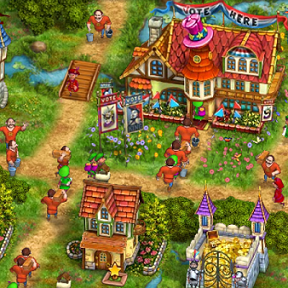 Getting used to the more basic gameplay allows you, the player, to enjoy the new stuff even more. The mad hatters and their amazing magical tunnels, the bribable (and helpful) elephants, and all of the other new characters and challenges. Especially fun in the dark and the fog levels are the drunken pirates and the druids, who will light up bonfires to illuminate an area, but only for money and only for a limited time. If you want the light to continue, the gold must continue to flow. It's a very old lesson but a good one: Once you pay the danegeld, baby, you never get rid of the Dane!
Getting used to the more basic gameplay allows you, the player, to enjoy the new stuff even more. The mad hatters and their amazing magical tunnels, the bribable (and helpful) elephants, and all of the other new characters and challenges. Especially fun in the dark and the fog levels are the drunken pirates and the druids, who will light up bonfires to illuminate an area, but only for money and only for a limited time. If you want the light to continue, the gold must continue to flow. It's a very old lesson but a good one: Once you pay the danegeld, baby, you never get rid of the Dane!
Royal Envoy: Campaign for the Crown is packed with a ton of gameplay. With 63 regular adventure levels, and another 63 expert adventure levels (reachable if you can three-star all of the regular adventure levels), you are looking at hours and hours of fun, frantic time management gameplay. Playrix proves that less is more with this third entry into the Royal Envoy series. For fans of the genre, this is unique and challenging entertainment and the answer to the eternal question: what do you do with a drunken sailor? In this game, you pay him. Lots.
Note: Royal Envoy 3 is currently only available in a Collector's Edition, which includes bonus gameplay (30 challenge levels), wallpapers, a screensaver, the soundtrack, and a built-in strategy guilde. Remember that Big Fish Game Club Members pay only $13.99 for Collector's Editions, and collector's editions count 3 card punches of 6 total needed for a free game.
![]() Windows:
Windows:
Download the demo
Order the full version
![]() Mac OS X:
Mac OS X:
Not available.
Try Boot Camp or Parallels or CrossOver Games.
![]() Welcome to the beginning of our coverage on interesting indie funding projects (Kickstarter, IndieGoGo), Steam Greenlight games, and news and previews!
Welcome to the beginning of our coverage on interesting indie funding projects (Kickstarter, IndieGoGo), Steam Greenlight games, and news and previews!
Platform: PC/iOS
DRM: Unknown
Developer: Long Story Team
Genre: Adventure/Visual Novel/Simulation/Episodic
Planned Release: Fall 2013
Price: Unknown
Official Website
No matter how much we like to deny it and enjoy rolling our eyes with jaded disdain whenever they're around doing what they do, all of us were teenagers once. Chances are, for you, that was a weird time. At once both simple and very complicated, it's a time when you're expected to balance homework and chores (and maybe a part time job) with figuring out the person you're going to be (and how to get there), while just getting by day to day can feel like swimming upstream. The team behind the upcoming episodic indie adventure game Long Story know what it's like, and they're out to create a game that realistically captures both the good and the bad and everything in between.
 As a young woman returning home after a year in France, you come back to school only to discover that the previous owner of your new locker disappeared under mysterious circumstances. Of course, uncovering the truth might have to take a backseat to social anxiety, dating, bullying, even sexual identity, and more. Despite unfortunately only offering a visually unchangeable female protagonist, Long Story promises to offer five love interests, two of which are female (and one they're being coy about), which is a refreshing change. It's also a relief to see male romantic interests that represent more than the typical "hot while male" usually featured in these types of games... Marcel, for instance, has just immigrated from Dubai and is struggling to readjust but potentially alienating everyone in the process, while rugby playing and huskily-built Colin is also an affable YouTube gaming sensation. It shows a real effort to represent what could be real people instead of idealised stereotypes, a rare move when it comes to dating games.
As a young woman returning home after a year in France, you come back to school only to discover that the previous owner of your new locker disappeared under mysterious circumstances. Of course, uncovering the truth might have to take a backseat to social anxiety, dating, bullying, even sexual identity, and more. Despite unfortunately only offering a visually unchangeable female protagonist, Long Story promises to offer five love interests, two of which are female (and one they're being coy about), which is a refreshing change. It's also a relief to see male romantic interests that represent more than the typical "hot while male" usually featured in these types of games... Marcel, for instance, has just immigrated from Dubai and is struggling to readjust but potentially alienating everyone in the process, while rugby playing and huskily-built Colin is also an affable YouTube gaming sensation. It shows a real effort to represent what could be real people instead of idealised stereotypes, a rare move when it comes to dating games.
Long Story represents an effort by its team to create a game and a world people can relate to, with events that have actually happened to them, and even going so far as to do things like actually speak with people who have gone through international immigration to make sure Marcel is a character who rings true. It's impressive to see developers so determined to create a game of this type that doesn't fall back on simple tropes and over-the-top drama. (And hopefully someone, somewhere, is making something similar for guys, as well as people who might not identify as either gender!) Though greater details are scarce, there's a Kickstarter on the way, and you can hit up the official website for in-depth character profiles and an extensive developer blog to learn more.
![]() A Ludum Dare veteran, zillix brings their pixelated styles to the competition's 27th theme of 10 Seconds. In their post-competition version of their entry, exposure, you are a figure traveling through the land of SOL who is tasked with collecting orbs. You come to find that these people are in a terrible battle against the people of NYX, who happen to have also left orbs across the land. What are these orbs for? And, hey! what's with that giant golem in the background?
A Ludum Dare veteran, zillix brings their pixelated styles to the competition's 27th theme of 10 Seconds. In their post-competition version of their entry, exposure, you are a figure traveling through the land of SOL who is tasked with collecting orbs. You come to find that these people are in a terrible battle against the people of NYX, who happen to have also left orbs across the land. What are these orbs for? And, hey! what's with that giant golem in the background?
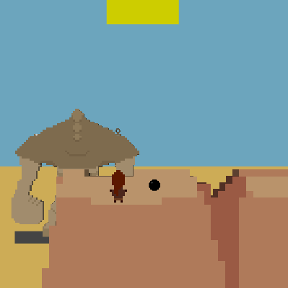 Use the [arrow] keys to move and [spacebar] to jump. exposure is in a psuedo-3D world, so [up]/[down] will move you depthwise on the land (except when climbing) and [left]/[right] moves you lengthwise. Considering the 48-hour limit on the basic development of the game, the story is surprisingly intriguing in its simplicity. The entire game can be played through in less than 10 minutes, meaning the multiple playthroughs necessary to experience all the endings is possible in one break-sized sitting. Quick! This NYX orb can only handle 10 seconds of sun exposure before purifying into a SOL orb. Will you stand in the sunlight to let it do just that, or are you going to save it?
Use the [arrow] keys to move and [spacebar] to jump. exposure is in a psuedo-3D world, so [up]/[down] will move you depthwise on the land (except when climbing) and [left]/[right] moves you lengthwise. Considering the 48-hour limit on the basic development of the game, the story is surprisingly intriguing in its simplicity. The entire game can be played through in less than 10 minutes, meaning the multiple playthroughs necessary to experience all the endings is possible in one break-sized sitting. Quick! This NYX orb can only handle 10 seconds of sun exposure before purifying into a SOL orb. Will you stand in the sunlight to let it do just that, or are you going to save it?
![]() Pavel Hilmon, Konstantin Gudym, and Oleksandr Kremenchuk's Lucky Crab is the sort of simple but sweet physics puzzle coffee breaks were made for. As a crab with a hankering for pearls and the ability to create a magical floating bubble around itself with just a click, you're after three of the shiny white treasures on each level, using objects in the environment to propel yourself around and avoid hazards. Just click to interact! Clicking on the crab will create a bubble that will cause it to float upwards until it hits something, and clicking the crab again will pop it. Other items, like weird... anemone... urn... thingies will propel you forward with a burst of air when clicked if you're in front of them, while spiny urchins should be avoided at all costs.
Pavel Hilmon, Konstantin Gudym, and Oleksandr Kremenchuk's Lucky Crab is the sort of simple but sweet physics puzzle coffee breaks were made for. As a crab with a hankering for pearls and the ability to create a magical floating bubble around itself with just a click, you're after three of the shiny white treasures on each level, using objects in the environment to propel yourself around and avoid hazards. Just click to interact! Clicking on the crab will create a bubble that will cause it to float upwards until it hits something, and clicking the crab again will pop it. Other items, like weird... anemone... urn... thingies will propel you forward with a burst of air when clicked if you're in front of them, while spiny urchins should be avoided at all costs.
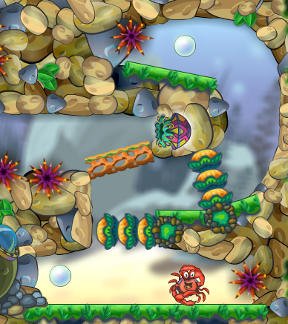 Though it isn't anything we haven't seen before in one incarnation or another, Lucky Crab's sunny presentation and carefully crafted levels make it just the sort of lightly challenging and fun diversion the genre is best at. Largely, the physics themselves are reliable without being too demanding, making this one unlikely to frustrate kids, and the new obstacles and objects added as you progress spice things up with a bit of variety. Lucky Crab's biggest problem, however, might be that the timing is a bit too finicky in places, making you wish you could hit a key to en-bubble your crab instead of having to scramble click on it.
Though it isn't anything we haven't seen before in one incarnation or another, Lucky Crab's sunny presentation and carefully crafted levels make it just the sort of lightly challenging and fun diversion the genre is best at. Largely, the physics themselves are reliable without being too demanding, making this one unlikely to frustrate kids, and the new obstacles and objects added as you progress spice things up with a bit of variety. Lucky Crab's biggest problem, however, might be that the timing is a bit too finicky in places, making you wish you could hit a key to en-bubble your crab instead of having to scramble click on it.
Fortunately, since it lacks a timer to pressure you, Lucky Crab allows you go at your own pace, with no restrictions like limited bubbles to really annoy. It won't be the sort of game you'll come back to again and again, but it's crafted with care and makes for simple fun with a gentle difficulty curve that's just the ticket when you want entertainment without the teeth.
![]() Don't you love it when an "old" game gets a surprise update? Kinda makes you glad you left it sitting on your mobile device all this time. It wasn't because you couldn't beat that one level with the conveyor belt, no sir. It was because you were waiting. Waiting for the magical update. From the future.
Don't you love it when an "old" game gets a surprise update? Kinda makes you glad you left it sitting on your mobile device all this time. It wasn't because you couldn't beat that one level with the conveyor belt, no sir. It was because you were waiting. Waiting for the magical update. From the future.
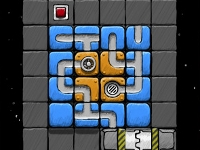 Aqueduct gets a tidy update - It was 2010 when Kieffer Bros stylish sliding block puzzle game hit iOS devices. Many successful updates and a lot of scratched heads later, the team has rolled out another set of 30 free puzzles, new colorful backgrounds, and support for 4" Retina screens. If you never gave Aqueduct a try, it offers some seriously challenging levels that require planning, strategy, trial and error, and a touch of luck. It's also one of our favorite mobile puzzle games, even three years after its release!
Aqueduct gets a tidy update - It was 2010 when Kieffer Bros stylish sliding block puzzle game hit iOS devices. Many successful updates and a lot of scratched heads later, the team has rolled out another set of 30 free puzzles, new colorful backgrounds, and support for 4" Retina screens. If you never gave Aqueduct a try, it offers some seriously challenging levels that require planning, strategy, trial and error, and a touch of luck. It's also one of our favorite mobile puzzle games, even three years after its release!
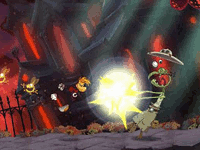 Rayman rumor - A tiny little rumor has been floating around that Ubisoft is about to announce a new Rayman running game. A direct sequel to Rayman Jungle Run, what could be titled Rayman Fiesta Run was apparently leaked via an image pulled from Ubisoft's website showing the logo. Vicious speculation or kernel of truth? We don't have long to wait to find out, the announcement is rumored to hit this week!
Rayman rumor - A tiny little rumor has been floating around that Ubisoft is about to announce a new Rayman running game. A direct sequel to Rayman Jungle Run, what could be titled Rayman Fiesta Run was apparently leaked via an image pulled from Ubisoft's website showing the logo. Vicious speculation or kernel of truth? We don't have long to wait to find out, the announcement is rumored to hit this week!
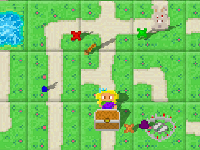 SwapQuest exchanges pipes for swords - Another puzzle/RPG hybrid is on its way to mobile devices, but this one's not quite what you think it is. SwapQuest from Rebusmind puts you in a field of tiles and challenges you to swap paths around in order to progress forward. Characters battle monsters and pick up treasure as they encounter them, giving it a sort of Pipe Dream feeling. The layer of 8-bit fantasy artwork, branching paths, hidden loot and dozens of items and enemies makes it all the more appealing! Look for SwapQuest later this year on iOS.
SwapQuest exchanges pipes for swords - Another puzzle/RPG hybrid is on its way to mobile devices, but this one's not quite what you think it is. SwapQuest from Rebusmind puts you in a field of tiles and challenges you to swap paths around in order to progress forward. Characters battle monsters and pick up treasure as they encounter them, giving it a sort of Pipe Dream feeling. The layer of 8-bit fantasy artwork, branching paths, hidden loot and dozens of items and enemies makes it all the more appealing! Look for SwapQuest later this year on iOS.
![]() If there's one thing that Ludum Dare 27 has taught us, it's that you can do a lot in ten seconds. The Value of Time, however, is all about the things you can't do in that time. At least, not all by yourself. The object of the game is simple: click the End button. You have ten seconds from when you click Start. The first several levels are easy, and the most challenge you'll have is figuring out how to interact with the various buttons to remove obstacles. And then come the levels that are impossible to complete in ten seconds. What are you to do? Cooperate with yourself, of course! When time runs out and you click Start again, your old cursor will repeat all its previous actions, leaving you free to take care of whatever else in the level needs attention. Some of the levels even place limits on the number of past selves you can use, ramping up the challenge.
If there's one thing that Ludum Dare 27 has taught us, it's that you can do a lot in ten seconds. The Value of Time, however, is all about the things you can't do in that time. At least, not all by yourself. The object of the game is simple: click the End button. You have ten seconds from when you click Start. The first several levels are easy, and the most challenge you'll have is figuring out how to interact with the various buttons to remove obstacles. And then come the levels that are impossible to complete in ten seconds. What are you to do? Cooperate with yourself, of course! When time runs out and you click Start again, your old cursor will repeat all its previous actions, leaving you free to take care of whatever else in the level needs attention. Some of the levels even place limits on the number of past selves you can use, ramping up the challenge.
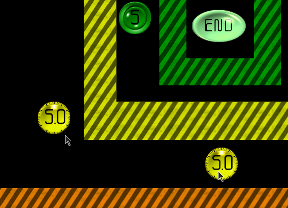 It's fitting that Infernet89 used a 48-hour challenge to create a game with this specific message. Even the one major missing feature — the lack of a save-game function — underscores the point that in the real world, you only have one life, so use it well. The Value of Time is a simple, deep puzzle that manages to pack a lot into a seemingly small package. Kind of like a certain time machine. (Huh, maybe that's where the idea came from...)
It's fitting that Infernet89 used a 48-hour challenge to create a game with this specific message. Even the one major missing feature — the lack of a save-game function — underscores the point that in the real world, you only have one life, so use it well. The Value of Time is a simple, deep puzzle that manages to pack a lot into a seemingly small package. Kind of like a certain time machine. (Huh, maybe that's where the idea came from...)
![]() They've turned, and they're coming straight for us! We survivors number only so many, we can't let the zombies take us down. Thank goodness for the local mercenaries, aircraft and purchasable turrets to help us out! In Yuriy Kurenkov (of Shameless Clone fame) and Denis Procenko's tower defense game, Zombie World, you must control the resources available to fend off the waves of decomposing monsters. Be they large and slow or lithe and quick, the choice of defenses is up to you. Should any zombies break through, the loss of survivors rests on your shoulders alone.
They've turned, and they're coming straight for us! We survivors number only so many, we can't let the zombies take us down. Thank goodness for the local mercenaries, aircraft and purchasable turrets to help us out! In Yuriy Kurenkov (of Shameless Clone fame) and Denis Procenko's tower defense game, Zombie World, you must control the resources available to fend off the waves of decomposing monsters. Be they large and slow or lithe and quick, the choice of defenses is up to you. Should any zombies break through, the loss of survivors rests on your shoulders alone.
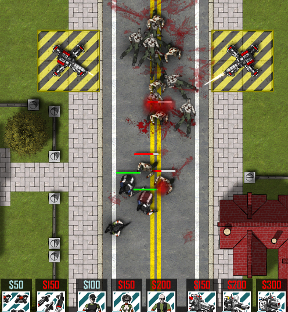 In this mouse-controlled game, you are given three varieties of defenses from which to choose. You have the classic 'towers' in the form of turrets that can only be placed in the designated yellow spaces, gun-toting soldiers who are protected by a pair of riot police and the short-term attacks in the form of Personnel Mines which are placed on the streets and an Airstrike that sweeps over a wide area of effect. While this all may seem overwhelming to handle, Zombie World does a great job of introducing each element individually before plunging you in the deep end with all options open in a large playing field.
In this mouse-controlled game, you are given three varieties of defenses from which to choose. You have the classic 'towers' in the form of turrets that can only be placed in the designated yellow spaces, gun-toting soldiers who are protected by a pair of riot police and the short-term attacks in the form of Personnel Mines which are placed on the streets and an Airstrike that sweeps over a wide area of effect. While this all may seem overwhelming to handle, Zombie World does a great job of introducing each element individually before plunging you in the deep end with all options open in a large playing field.
If you're looking for a good time decimating a couple hundred (thousand?) zombies, then this game will satisfy you. Sure, there are a few surface issues, like the incorrect English in the largely word-only instructions or how you still have to wait through the cool down time when placing units before you even start the level, but as a whole, Zombie World is an entertaining game. It's got a great pick-up-and-go quality that allows you to play it five minutes at a time or all in one sitting. And no matter how time crunched we are throughout the day, I think we can all use a little zombie killing time.
![]() The wind at your hair. The trees by your sides. The grass at your heels. And the pitter patter of little badger cub feet as they struggle to keep pace. Shelter from pid developer Might and Delight puts you in the fur of a mother badger as she protects and feeds her young. It's a subtle and quiet game that relies on atmosphere and emotion rather than puzzles or action. It's soothing nature setting will encourage you to sit back and enjoy the ride. Just don't relax too much, as there are dangers in the forest you and your cubs must guard against.
The wind at your hair. The trees by your sides. The grass at your heels. And the pitter patter of little badger cub feet as they struggle to keep pace. Shelter from pid developer Might and Delight puts you in the fur of a mother badger as she protects and feeds her young. It's a subtle and quiet game that relies on atmosphere and emotion rather than puzzles or action. It's soothing nature setting will encourage you to sit back and enjoy the ride. Just don't relax too much, as there are dangers in the forest you and your cubs must guard against.
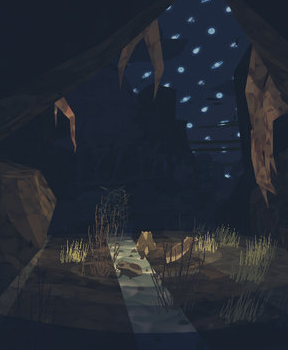 Control the mother badger using the [WASD] keys with the mouse operating the camera. You have a few basic commands at your disposal, including a dash and a quick grab which are activated by [shift] and a left click respectively. Use these to knock fruit out of trees, snatch frogs, stalk a fox or two, and hunt for other edibles as you keep your cubs well-fed and happy.
Control the mother badger using the [WASD] keys with the mouse operating the camera. You have a few basic commands at your disposal, including a dash and a quick grab which are activated by [shift] and a left click respectively. Use these to knock fruit out of trees, snatch frogs, stalk a fox or two, and hunt for other edibles as you keep your cubs well-fed and happy.
Your biggest concern in Shelter will be things like river rapids and the great eagle floating above the plains. Keeping your cubs safe is your primary objective, and you'll quickly learn to stalk the tall grasses and hide under every overhang you can find. Shelter keeps everything straightforward and realistic, never resorting to standard video game tricks just to jazz things up (i.e. no combo charging super dash power-up).
Might and Delight has created an amazing atmosphere of danger and intrigue with Shelter. You'll feel a definite bond with your cubs, getting worried if they don't answer your yelp and cringing whenever one of them is unsafe. Don't be surprised if you get a little too attached to this game. Take things slow, always be careful, and think like a badger and you'll do just fine.
![]() Windows:
Windows:
Get the full version
Get the full version (via GOG)
![]() Mac OS X:
Mac OS X:
Get the full version
Get the full version (via GOG)
![]() Puzzle games, especially those of the logic variety, always seem to default to using numbers to provide challenge. But what if you don't like numbers? What if you spend your days scrawling anti-mathematical propaganda on walls as you fight Big Brother's oppressive numerical order? If that sounds like you, we first of all would like to salute you for living in a dystopian sci-fi novel. Then we'd like to show you FlowDoku, a free sudoku game by HapaFive for mobile devices that uses shapes instead of numbers.
Puzzle games, especially those of the logic variety, always seem to default to using numbers to provide challenge. But what if you don't like numbers? What if you spend your days scrawling anti-mathematical propaganda on walls as you fight Big Brother's oppressive numerical order? If that sounds like you, we first of all would like to salute you for living in a dystopian sci-fi novel. Then we'd like to show you FlowDoku, a free sudoku game by HapaFive for mobile devices that uses shapes instead of numbers.
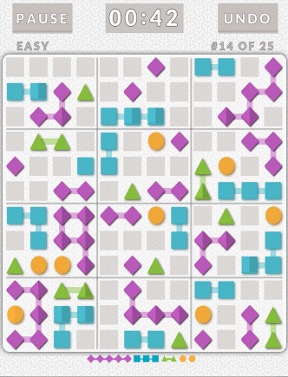 FlowDoku plays just about like your standard sudoku variety. You are presented a grid of empty spaces, some of which are filled with squares, triangles, circles, and maybe more! Tap any cell to place a square, tap a gain for a triangle, and tap yet again for a circle. Each row, column and sub-section of the grid can only contain a certain number of instances of each shape, as outlined by the key at the bottom of the screen. Using logic, it's your job to fill the grid... for great justice!
FlowDoku plays just about like your standard sudoku variety. You are presented a grid of empty spaces, some of which are filled with squares, triangles, circles, and maybe more! Tap any cell to place a square, tap a gain for a triangle, and tap yet again for a circle. Each row, column and sub-section of the grid can only contain a certain number of instances of each shape, as outlined by the key at the bottom of the screen. Using logic, it's your job to fill the grid... for great justice!
FlowDoku's deviation from standard sudoku is that shapes must be grouped together in their little sub-zones. Squares and triangles like to be adjacent to each other, while circles couldn't care less. This adds an extra layer of logic to the experience, making puzzles solvable without introducing those wretched numbers.
FlowDoku looks smart and has a flawless interface that never gets in your way. The free download contains 250 free puzzles across five levels of difficulty, with some moderate in-app purchases to unlock more levels.
NOTE: This game was played and reviewed on the Nexus 4. Game was available in the North American market at the time of publication, but may not be available in other territories. Please see individual app market pages for purchasing info.
![]() Traffic jam. Meeting at work. Alien abduction. There are a lot of reasons people or animals run behind schedule. Whatever the reason, in "10 Seconds Left, Mr. Pink Rabbit!" from Lightmare Studio, Mr. Pink Rabbit arrives at the store just ten seconds before closing time. Can he get his shopping done? Made in just 72 hours for the Ludum Dare 10 second themed jam, the indie team that brought us Beware Planet Earth has again proven they've got the knack for game making as well as a wacky sense of humor.
Traffic jam. Meeting at work. Alien abduction. There are a lot of reasons people or animals run behind schedule. Whatever the reason, in "10 Seconds Left, Mr. Pink Rabbit!" from Lightmare Studio, Mr. Pink Rabbit arrives at the store just ten seconds before closing time. Can he get his shopping done? Made in just 72 hours for the Ludum Dare 10 second themed jam, the indie team that brought us Beware Planet Earth has again proven they've got the knack for game making as well as a wacky sense of humor.
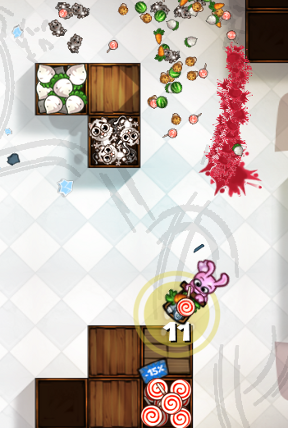 Your goal is to complete the rabbit's shopping list seen in the bottom left hand of the screen, and make it to the checkout in ten seconds or less. Click or scroll the mouse wheel to select a button on the left side of the screen, then click to place a waypoint. Each color represents a movement speed, and the arrow button lets you click and drag an already placed waypoint for precision placement. Right clicking deletes the last placed waypoint. Create a path for Mr. Pink Rabbit to complete all his shopping needs, making sure he lingers long enough near each item to collect as many of them as he needs. Once you've laid out a path, you can test it at any time by clicking the play button, then make adjustments as needed, until you can get to the checkout lane in one piece within the time limit.
Your goal is to complete the rabbit's shopping list seen in the bottom left hand of the screen, and make it to the checkout in ten seconds or less. Click or scroll the mouse wheel to select a button on the left side of the screen, then click to place a waypoint. Each color represents a movement speed, and the arrow button lets you click and drag an already placed waypoint for precision placement. Right clicking deletes the last placed waypoint. Create a path for Mr. Pink Rabbit to complete all his shopping needs, making sure he lingers long enough near each item to collect as many of them as he needs. Once you've laid out a path, you can test it at any time by clicking the play button, then make adjustments as needed, until you can get to the checkout lane in one piece within the time limit.
You'll have a lot of trial and error in the beginning as you figure out how much momentum each speed gives you, and what it takes to swing around a corner without crashing and burning. As you might expect from a game made in three days, there are some shortcomings. The only variation between levels are the items on the shopping list and where they are placed in the store. It would be great to see this expanded on by changing the layout of the store, and adding challenges such as narrower aisles. The addition of a save button would also be welcome. As it stands, the gameplay does get repetitive fairly quickly. But watching the rabbit weave amongst the bins picking up everything from kittens to your grandma keeps things amusing. The artwork is bright and wonderfully cartoonish, and the music is fun. "10 Seconds Left, Mr. Pink Rabbit!" is remarkably polished for the time-frame in which it was developed, and is definitely worth the short download time to check out.
![]() Windows:
Windows:
Get the full version
![]() Mac OS X:
Mac OS X:
Not available.
Try Boot Camp or Parallels or CrossOver Games.
![]() It is the future. After years of providing entertainment to the slavering masses, but replaced by new technology, the world's population of televisions have been launched into space. Embittered by how quickly humanity discarded them, these TVs desired revenge, and began to evolve into a new strike force of Cathode Raybots. Now comes humanity's reckoning as the Raybots descend upon Earth for the final battle. Cathode Raybots, an action shooter by Tom Fulp and the Newgrounds crew, has players providing the last line of defense against the insidious transmitting menace... or joining their nefarious cause.
It is the future. After years of providing entertainment to the slavering masses, but replaced by new technology, the world's population of televisions have been launched into space. Embittered by how quickly humanity discarded them, these TVs desired revenge, and began to evolve into a new strike force of Cathode Raybots. Now comes humanity's reckoning as the Raybots descend upon Earth for the final battle. Cathode Raybots, an action shooter by Tom Fulp and the Newgrounds crew, has players providing the last line of defense against the insidious transmitting menace... or joining their nefarious cause.
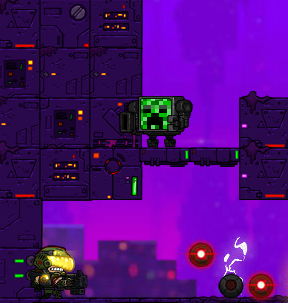 Cathode Raybots plays as a rush of boss battles against robots designed by the authors, or by the community at large. As a human, you will use the [arrow keys] to run and jump. You have a long-range primary weapon, fired with [A/Z] and a short-range secondary weapon fired with [S/X]. Your adversaries have an impressive selection of weapons and tactics to use, though the limits of their cathode minds mean that they follow certain patterns in their attacks. Choosing to fight on the side of the Raybots means that you are given the chance to set up a battleground and patterns of attack for a Raybot to follow, using a quite well-designed editor. You can then submit these boss battles to the community though you must prove your Raybot can be beaten, by defeating it yourself first.
Cathode Raybots plays as a rush of boss battles against robots designed by the authors, or by the community at large. As a human, you will use the [arrow keys] to run and jump. You have a long-range primary weapon, fired with [A/Z] and a short-range secondary weapon fired with [S/X]. Your adversaries have an impressive selection of weapons and tactics to use, though the limits of their cathode minds mean that they follow certain patterns in their attacks. Choosing to fight on the side of the Raybots means that you are given the chance to set up a battleground and patterns of attack for a Raybot to follow, using a quite well-designed editor. You can then submit these boss battles to the community though you must prove your Raybot can be beaten, by defeating it yourself first.
Presented in the slam-bang over-the-top Newgrounds style, Cathode Raybots can definitely be a little overwhelming, a problem not helped by some general glitchiness in the level editor upon first release. However, now that those issues have been mostly settled, one has to appreciate Cathode Raybots as both a well-designed collection of one-on-one fights by the developers, as well as a platform for others to show their creativity. Like in every collection of user-generated content, Sturgeon's Law is definitely in play, and yet there are definitely those who have used the confines of the necessarily-basic engine to great cleverness. Non epileptic fans of running and/or gunning should definitely give it a couple rounds.
![]() Trolls and kittens and robots HOORAY! It's like an internet geek's paradise in this edition of Mobile Monday. If only we could have worked in some meme references, too. But, you know, ain't nobody got time for that.
Trolls and kittens and robots HOORAY! It's like an internet geek's paradise in this edition of Mobile Monday. If only we could have worked in some meme references, too. But, you know, ain't nobody got time for that.
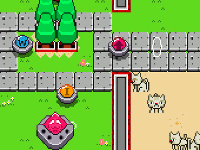 The End is Meow (Windows, free) - Delightfully chaotic controls plus kittens equals lots of frantic fun. Your job is to locate and deliver intelligent life forms to the cats that are getting ready to attack Earth. Naturally, intelligent life means other cats, so you get to herd them towards the goal by maneuvering four pods around, each with a single "push" beam facing in one direction. If you have four hands this isn't a problem, otherwise you'll switch between four control key sets to move them one or two at a time. Give it a try, you'll see how crazy it can be!
The End is Meow (Windows, free) - Delightfully chaotic controls plus kittens equals lots of frantic fun. Your job is to locate and deliver intelligent life forms to the cats that are getting ready to attack Earth. Naturally, intelligent life means other cats, so you get to herd them towards the goal by maneuvering four pods around, each with a single "push" beam facing in one direction. If you have four hands this isn't a problem, otherwise you'll switch between four control key sets to move them one or two at a time. Give it a try, you'll see how crazy it can be!
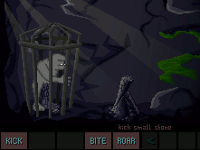 Troll Song - Verse One (Windows, free) - A demo for a planned episodic series of comedic point and click adventure games starring trolls, those creatures who are too often shown as mindless oafs. You play as Clod, a troll trapped in a cage with little more than a depressed disposition and an impressive ability to roar. It'll only take about 15 minutes to complete, but the puzzles are entertaining and you'll feel good about yourself for helping to raise awareness of troll rights around the world.
Troll Song - Verse One (Windows, free) - A demo for a planned episodic series of comedic point and click adventure games starring trolls, those creatures who are too often shown as mindless oafs. You play as Clod, a troll trapped in a cage with little more than a depressed disposition and an impressive ability to roar. It'll only take about 15 minutes to complete, but the puzzles are entertaining and you'll feel good about yourself for helping to raise awareness of troll rights around the world.
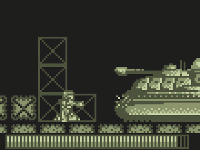 Zerox Residuum (Windows, free) - A sidescrolling arcade game made to tug at your nostalgia muscles. A robotic race known as the Zerox have taken over the Earth, turning it into a wasteland. You have to win the world back by defeating the robots one shot at a time! A simple game with a straightforward premise, it scores big points by baiting the hook with lovely Game Boy-style visuals and music.
Zerox Residuum (Windows, free) - A sidescrolling arcade game made to tug at your nostalgia muscles. A robotic race known as the Zerox have taken over the Earth, turning it into a wasteland. You have to win the world back by defeating the robots one shot at a time! A simple game with a straightforward premise, it scores big points by baiting the hook with lovely Game Boy-style visuals and music.
![]() Owl Cave's free indie point-and-click adventure game Sepulchre is a horror story of sorts without blood, violence, or jump scares. As the game begins, you, Dr. Lang, are wiling away the time in your train car when the desire for a drink hits you, and... well... to say any more would really be spoiling it, since the game is a mere fifteen minutes to half an hour long. Left-click to interact, and right-click to examine, while mousing over the top-screen brings down your inventory. The game's few puzzles are typically straight-forward affairs that require you to just use or examine your inventory, and the biggest issue is the backtracking, which is mainly only frustrating across such a small space given how slow our hero moves. Plus, I'm just going to go ahead and point out right now that Dr. Lang looks far too much like Yahtzee Croshaw because if I can't unsee it, then neither can you.
Owl Cave's free indie point-and-click adventure game Sepulchre is a horror story of sorts without blood, violence, or jump scares. As the game begins, you, Dr. Lang, are wiling away the time in your train car when the desire for a drink hits you, and... well... to say any more would really be spoiling it, since the game is a mere fifteen minutes to half an hour long. Left-click to interact, and right-click to examine, while mousing over the top-screen brings down your inventory. The game's few puzzles are typically straight-forward affairs that require you to just use or examine your inventory, and the biggest issue is the backtracking, which is mainly only frustrating across such a small space given how slow our hero moves. Plus, I'm just going to go ahead and point out right now that Dr. Lang looks far too much like Yahtzee Croshaw because if I can't unsee it, then neither can you.
Largely, Sepulchre is maybe more eerie than scary, the sort of thing that feels like it would have fit perfectly on ye olde black and white Twilight Zone. It's suggestive of its means and concepts more than anything else, and as a result, it's a strange sort of blend of at once being a bit too obvious in its big twist by being heavy-handed with its clues, and also potentially far too vague and symbolic for players that tend to prefer more plainly stated stories and resolutions. Still, Sepulchre is, for what it's intended to be, incredibly well executed, with a gorgeous visual style, and the voice acting is largely well done despite the recording quality being hit or miss. Sepulchre is worth a look despite its comparative simplicity and brevity for taking an approach to horror seldom entertained by any sort of media these days, and if you like dreamy, melancholy moods, this might be right up your alley.
![]() Windows:
Windows:
Get the free full version
![]() Mac OS X:
Mac OS X:
Not available.
Try Boot Camp or Parallels or CrossOver Games.
![]() Welcome to the beginning of our coverage on interesting indie funding projects (Kickstarter, IndieGoGo), Steam Greenlight games, and news and previews!
Welcome to the beginning of our coverage on interesting indie funding projects (Kickstarter, IndieGoGo), Steam Greenlight games, and news and previews!
Platform: PC/Mac/Android/iOS/Ouya
DRM: No
Developer: Luc Bernard
Genre: Action/Adventure/Platform
Planned Release: August 2014
Funding Required: $125,000.00USD (Flexible Funding)
Funding Ends: October 17th, 2013
When I first learned about the IndieGoGo campaign for Luc Bernard's Imagination is the Only Escape, an action adventure about a young Jewish boy named Samuel during the Holocaust, I made my Marge Simpson noise. You know the one. Mmmmmrrrrnnn. Not because I believe games about the Holocaust shouldn't be made, necessarily, but because I believe a game about the Holocaust would be incredibly difficult to do properly, and I could already hear the ominous, angry wasp-like hum of people bridling at the thought of it. This is, of course, more than understandable when dealing with an event like this, and even more so since the knee-jerk reaction to the concept of a videogame is something that's "for fun". But Luc wants to focus on creating a game that doesn't glorify the perceived fun and glory of war, and instead deals with the human element in these atrocities, hoping to touch players in the same way films and books have. Tough row to hoe? To say the least.
 Imagination is the Only Escape follows Samuel as he's smuggled out to Southern France during the mass arrest of Jewish people in Paris that took place during July in 1942, during which time his mother is shot and killed. Passed off as a Christian orphan when he arrives at a tiny village, Samuel meets a talking fox who promises him that by helping her, he can see his mother again. Heavy stuff? Sure, with a bit of a whiff of Pan's Labyrinth and Ni No Kuni about it to boot. At the moment, information on the actual gameplay is frustratingly vague, since "educational action adventure" is a big umbrella that doesn't really tell you a whole lot, and the project pitch video actually calls it an "interactive experience" which is even vaguer. When dealing with topics like this, you're inviting a myriad of opinions on how or even whether it should be done, and of course the question of who is going to be involved with crafting the game matters when the overall authenticity and heart of the game could be impacted by, say, whether actual Holocaust survivors or their families were consulted on their experiences.
Imagination is the Only Escape follows Samuel as he's smuggled out to Southern France during the mass arrest of Jewish people in Paris that took place during July in 1942, during which time his mother is shot and killed. Passed off as a Christian orphan when he arrives at a tiny village, Samuel meets a talking fox who promises him that by helping her, he can see his mother again. Heavy stuff? Sure, with a bit of a whiff of Pan's Labyrinth and Ni No Kuni about it to boot. At the moment, information on the actual gameplay is frustratingly vague, since "educational action adventure" is a big umbrella that doesn't really tell you a whole lot, and the project pitch video actually calls it an "interactive experience" which is even vaguer. When dealing with topics like this, you're inviting a myriad of opinions on how or even whether it should be done, and of course the question of who is going to be involved with crafting the game matters when the overall authenticity and heart of the game could be impacted by, say, whether actual Holocaust survivors or their families were consulted on their experiences.
Apparently, Samuel will be helping Renard restore peace to the surrounding forest, as his imagination takes hold and crafts a world around him presumably drawing on his real world experiences for symbolism. If the artwork is anything to go by, the game has both a stunning and yet eerily surreal look that would fit its concept. Whether that concept is one players will embrace is another thing entirely. It's true that by being an interactive medium that forces players to take consequences for their actions and live through the characters they play as, games have the potential to make you feel extraordinary things and immerse yourself in another perspective in the way few other things can offer. Luc claims he wants to change the industry and make people realise games can be used for more than just "child's entertainment", and hopefully in the near future we'll get a better idea of how Imagination is the Only Escape could go about that. (As well as a breakdown of how the funding would be used.) If it sounds interesting to you, check out the official IndieGoGo page!
JayisGames.com IndieGoGo picks are selected based only on personal evaluation and perceived overall quality of the project. We assume no responsibility for failed projects or developer's inability to deliver. Donate with care! Contact dora AT jayisgames DOT com with IndieGoGo in the subject line if you find a project you think we should know about!
![]() Play Chocolate's Bloodbath Avenue is the sort of zombie game old school arcade cabinets were made for... a vertical-scrolling action game that has you smash through waves of the undead on your way to a safe house on the other side of the city. You can choose to play as one of two characters, each with their own stats and unique skills, and the more zombies you dirtnap, the more skillpoints you'll earn to upgrade them, as well as cash to spend on new equipment in the store.
Play Chocolate's Bloodbath Avenue is the sort of zombie game old school arcade cabinets were made for... a vertical-scrolling action game that has you smash through waves of the undead on your way to a safe house on the other side of the city. You can choose to play as one of two characters, each with their own stats and unique skills, and the more zombies you dirtnap, the more skillpoints you'll earn to upgrade them, as well as cash to spend on new equipment in the store.
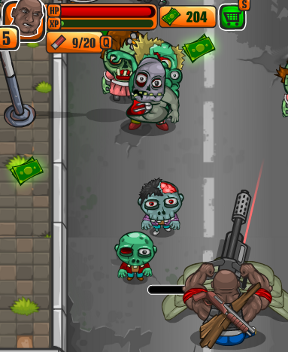 Bloodbath Avenue plays like a simplified, zombified Band of Heroes, or if you're like me and old and awesome, Pocky and Rocky. You use the mouse to direct your character around the scrolling playfield, and click to attack. [1], [2], and [3] activates your special abilities when available, [Q] switches between weapons, and pressing the [spacebar] will allow you to both pick up medkits and ammo, as well as pick up barrels to be tossed by clicking on the screen. If you die, you'll have to restart the stage over again (or replay others) but don't worry... you'll keep any cash or levels earned, as well as items bought.
Bloodbath Avenue plays like a simplified, zombified Band of Heroes, or if you're like me and old and awesome, Pocky and Rocky. You use the mouse to direct your character around the scrolling playfield, and click to attack. [1], [2], and [3] activates your special abilities when available, [Q] switches between weapons, and pressing the [spacebar] will allow you to both pick up medkits and ammo, as well as pick up barrels to be tossed by clicking on the screen. If you die, you'll have to restart the stage over again (or replay others) but don't worry... you'll keep any cash or levels earned, as well as items bought.
Though the stages themselves need more variation between them to really keep things fresh, the different objective at the end of each one is a nice touch. Drive a car through a crowd of zombies, fend off an enormous wave with a mounted machine gun... it sort of underlines the simple yet giddily over-the-top arcade style the game is about, especially when combined with the quirky, cartoonish style. The biggest problem with the game, however, is that movement feels so slow and sluggish compared to how fast enemies can swarm or attack, which makes navigating obstacles while trying to fend off a bunch of flesh-eaters and zombie cats a guaranteed way to lose some health. Cash is doled out so stingily in comparison to the prices for items that you're forced to grind after a certain point to be able to survive the sheer number of swarms the game throws at you. I would up replaying the first stage, Dark Alley, over and over just to get the huge cash and EXP bonuses repeatedly since it was so short. Bloodbath Avenue is still a lot of fun, and even a great idea. It's just sorely in need of some tweaking to make it feel like it's challenging you rather than forcing you to grind.
![]() There are 49 rooms, and 49 treasure chests, and for the most obvious reason in the world, you have to open them all. It's a good thing the laws of physics flexible around here. In the platform game Pivot by PodBot, you play as a little person with a huge head. You're not super fast, you're not super strong, and you can't fly. But you can rotate the world around you, so long as you're in a corner. As superpowers go, it's a pretty useful one to have.
There are 49 rooms, and 49 treasure chests, and for the most obvious reason in the world, you have to open them all. It's a good thing the laws of physics flexible around here. In the platform game Pivot by PodBot, you play as a little person with a huge head. You're not super fast, you're not super strong, and you can't fly. But you can rotate the world around you, so long as you're in a corner. As superpowers go, it's a pretty useful one to have.
You can navigate using the [arrow] keys, and press [C] while in a corner to tilt the world to your own devices. If that sounds similar to Fez, that's because it is. But it has its own class of charm that makes it an excellent platformer The art is pixellatedly gorgeous, the mechanics are smooth as butter, and the challenges are just enough to keep you playing. Now where was that 48th chest again?
![]() I said to myself, "Self, what would your ideal day be?" And obviously the answer was to fill the world with ponies, frolic with some frustrating fairies, get trapped in a cycle of suspiciously similar rooms, and then mow down the living dead with the tremendous power of my keyboard! And since this is my feature and nobody puts Dora in the corner, that's exactly what we're gonna do!
I said to myself, "Self, what would your ideal day be?" And obviously the answer was to fill the world with ponies, frolic with some frustrating fairies, get trapped in a cycle of suspiciously similar rooms, and then mow down the living dead with the tremendous power of my keyboard! And since this is my feature and nobody puts Dora in the corner, that's exactly what we're gonna do!
 Pony Creator V3 - General Zoi has updated his My Little Pony: Friendship is Magic webtoy to version three, bringing with it the ability to turn your pony's head, poseable wings and tails, and other tweaks and additions... albeit at the cost of some of the content options from the original Pony Creator. Though it says it offers more "show accurate" poses, and it honestly does, some of those poses don't... uh... translate well, or as smoothly as you might hope, to a lot of pony physiques, leaving you with something akin to a bunch of sausages stuffed into a bumpy glove. But with a cleaner presentation and a helpful... help function, making your own pony is easier than before!... in the game, I mean. Don't actually try to make a real My Little Pony. That would get you a jacket that gives special hugs.
Pony Creator V3 - General Zoi has updated his My Little Pony: Friendship is Magic webtoy to version three, bringing with it the ability to turn your pony's head, poseable wings and tails, and other tweaks and additions... albeit at the cost of some of the content options from the original Pony Creator. Though it says it offers more "show accurate" poses, and it honestly does, some of those poses don't... uh... translate well, or as smoothly as you might hope, to a lot of pony physiques, leaving you with something akin to a bunch of sausages stuffed into a bumpy glove. But with a cleaner presentation and a helpful... help function, making your own pony is easier than before!... in the game, I mean. Don't actually try to make a real My Little Pony. That would get you a jacket that gives special hugs. Escape from the Similar Rooms 5 -Hottategoya's simple little escape games tend to be a bit too short and simple at times, but then again, sometimes all you want is for someone to trap you somewhere just a little. This one features slightly more challenging puzzles than usual, as you go back and forth between a series of seemingly identical rooms trying to find clues to solve the puzzles that connect them. It probably won't hold you for long, but it's cleanly presented and a satisfying little diversion for you escape fanatics to start your day with.
Escape from the Similar Rooms 5 -Hottategoya's simple little escape games tend to be a bit too short and simple at times, but then again, sometimes all you want is for someone to trap you somewhere just a little. This one features slightly more challenging puzzles than usual, as you go back and forth between a series of seemingly identical rooms trying to find clues to solve the puzzles that connect them. It probably won't hold you for long, but it's cleanly presented and a satisfying little diversion for you escape fanatics to start your day with. Hoshi Saga 9 - A Hoshi Saga game in a Link Dump Friday? Say it ain't so! And yet this latest installment of the popular point-and-click puzzle game series, which is actually a collaboration between multiple different developers, just isn't quite as top notch as the others. In addition to lacking an English translation beyond the menu, meaning hints are unreadable for non-Japanese players, many of the puzzles are just too abstract and random, dependent on trial-and-error or brute force in a way that lacks the pleasing elegance and brilliant design of its predecessors. If you're up for a challenge and want to experience a creative collaboration, it's still worth checking out, however, and if it ever gets translated we may revisit it in the future.
Hoshi Saga 9 - A Hoshi Saga game in a Link Dump Friday? Say it ain't so! And yet this latest installment of the popular point-and-click puzzle game series, which is actually a collaboration between multiple different developers, just isn't quite as top notch as the others. In addition to lacking an English translation beyond the menu, meaning hints are unreadable for non-Japanese players, many of the puzzles are just too abstract and random, dependent on trial-and-error or brute force in a way that lacks the pleasing elegance and brilliant design of its predecessors. If you're up for a challenge and want to experience a creative collaboration, it's still worth checking out, however, and if it ever gets translated we may revisit it in the future. Typocalypse 3D - When the zombies invade, I hope you have a high WPM, or else a few good temps on your side. Andreas Grech serves up an undead apocalypse where all you need is a keyboard, typing the words above incoming zombies' heads as fast as possible to take them out. It's not really an original idea, nor is it 100% complete, but gosh is it fun for a simple addictive arcade typing game. This must be what our parents meant when they told us to use our words when we were little!
Typocalypse 3D - When the zombies invade, I hope you have a high WPM, or else a few good temps on your side. Andreas Grech serves up an undead apocalypse where all you need is a keyboard, typing the words above incoming zombies' heads as fast as possible to take them out. It's not really an original idea, nor is it 100% complete, but gosh is it fun for a simple addictive arcade typing game. This must be what our parents meant when they told us to use our words when we were little!
![]() In jo99's freaky yet stylish point-and-click adventure/escape game Humanoid 47, you're helping a human guinea pig escape from the mad scientist who has been experimenting on him and other poor saps for quite some time. Minus the top of your head, you seize the opportunity to run one day, but now find yourself trapped in a bizarre maze of labs and failed experiments. Click around to interact, and use the arrows at the bottom of the screen to back away from things or turn around. Like The Queen of Snakes, there's no changing cursor, so you'll have to search everywhere and everything, and keep an eye out for clues hidden around the labs that will help you solve puzzles.
In jo99's freaky yet stylish point-and-click adventure/escape game Humanoid 47, you're helping a human guinea pig escape from the mad scientist who has been experimenting on him and other poor saps for quite some time. Minus the top of your head, you seize the opportunity to run one day, but now find yourself trapped in a bizarre maze of labs and failed experiments. Click around to interact, and use the arrows at the bottom of the screen to back away from things or turn around. Like The Queen of Snakes, there's no changing cursor, so you'll have to search everywhere and everything, and keep an eye out for clues hidden around the labs that will help you solve puzzles.
SEE ALSO: The Queen of Snakes
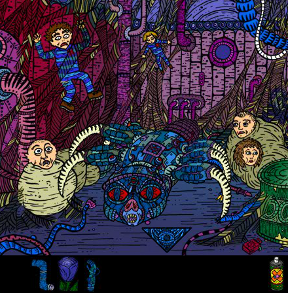 The biggest challenging in Humanoid 47 comes from figuring out what in the cluttered areas is actually useful or worth interacting with, so without a changing cursor for guidance you're unfortunately left to click your way around anything and everything to make sure you don't miss items or clues. To cut down on this, you'll probably want to explore everywhere you can first, since most required items and their uses tend to be abundantly clear when you see them, making it easier to go back and pick out what you need from the chaos of the labs. As in The Queen of Snakes, not only is the artwork beautiful and strikingly stylized, if potentially more disturbing this time around, the reliance on spotting puzzle-solving clues on bits of paper or scenery is back, forcing you to pay careful attention to your surroundings or anything that looks out of place. In a lot of ways, it feels like a cartoon from the late 70s, all creepy-freaky imagery and appealingly oddball design filled with colour. It's not particularly long, but it is particularly weird, and I mean that in the fondest way possible.
The biggest challenging in Humanoid 47 comes from figuring out what in the cluttered areas is actually useful or worth interacting with, so without a changing cursor for guidance you're unfortunately left to click your way around anything and everything to make sure you don't miss items or clues. To cut down on this, you'll probably want to explore everywhere you can first, since most required items and their uses tend to be abundantly clear when you see them, making it easier to go back and pick out what you need from the chaos of the labs. As in The Queen of Snakes, not only is the artwork beautiful and strikingly stylized, if potentially more disturbing this time around, the reliance on spotting puzzle-solving clues on bits of paper or scenery is back, forcing you to pay careful attention to your surroundings or anything that looks out of place. In a lot of ways, it feels like a cartoon from the late 70s, all creepy-freaky imagery and appealingly oddball design filled with colour. It's not particularly long, but it is particularly weird, and I mean that in the fondest way possible.
![]() Ocotober 18th, 1897. The city of Antrim in the country of Galicia. For the past five years the country has been torn in violent conflict between two ideologically and economically divided communities. On the precipice of a ceasefire, a high school, one of the few institutions to not segregate the two communities, has been vandalized. The uneasy peace has been made even more uneasy, but a benefit gala is planned to raise money for repairs. Rich and poor, influential and ambitious, they have gathered under one roof. You are an agent of death. The books of fate must be balanced, and one of these people must die. It is your choice; a choice that will change history. But how much should you meddle with mortal affairs? Perhaps a random choice is the fairest? What other effects could your involvement have? These are the questions you must consider in Postmortem, an adventure game by Jakub Kasztalski, a graduate student of Comparative Ethnic Conflict.
Ocotober 18th, 1897. The city of Antrim in the country of Galicia. For the past five years the country has been torn in violent conflict between two ideologically and economically divided communities. On the precipice of a ceasefire, a high school, one of the few institutions to not segregate the two communities, has been vandalized. The uneasy peace has been made even more uneasy, but a benefit gala is planned to raise money for repairs. Rich and poor, influential and ambitious, they have gathered under one roof. You are an agent of death. The books of fate must be balanced, and one of these people must die. It is your choice; a choice that will change history. But how much should you meddle with mortal affairs? Perhaps a random choice is the fairest? What other effects could your involvement have? These are the questions you must consider in Postmortem, an adventure game by Jakub Kasztalski, a graduate student of Comparative Ethnic Conflict.
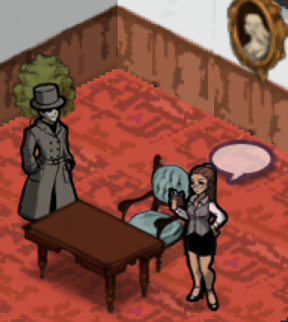 Move with the [WASD] or [arrow] keys and use [E] to open doors, examine materials, select a people to converse with. During conversation, use the [1]-[9] keys to select the desired option you wish to say. [Q] or [N] will bring up your notebook, where you can review information that you've discovered. When you have made a decision as to who you will target with death, you will press [Tab] and then confirm your selection. How you make your choice is up to you, but you will receive a summary of the effects of that person's death and the future of the country of Galicia.
Move with the [WASD] or [arrow] keys and use [E] to open doors, examine materials, select a people to converse with. During conversation, use the [1]-[9] keys to select the desired option you wish to say. [Q] or [N] will bring up your notebook, where you can review information that you've discovered. When you have made a decision as to who you will target with death, you will press [Tab] and then confirm your selection. How you make your choice is up to you, but you will receive a summary of the effects of that person's death and the future of the country of Galicia.
Analysis You will probably know right away if Postmortem is the game for you. There are a lot of words, the plotting is dense, and the relationships between the characters complex. It is, in short, a game of intrigue. And if intrigue intrigues you, then this will certainly intrigue you too. There is much of The Last Express and The Walking Dead in this game, in nuance as much as in gameplay.
Any game that seeks to tackle the deep questions of philosophy and politics must have writing that can do the subjects justice, and, fortunately, Postmortem excels in that sphere. If you can accept that characters would be so quick to offer their views to a total stranger, then you will find their characterizations and dialogue realistic and thought-provoking. Galicia is at a time and in a place very much apart from the world we live in, and yet the topics that concern its inhabitants are universal, as are their flaws and prejudices. What's more, it is not a work where you must patiently wait while characters expound on their beliefs or which the author seems to be leading to a particular point: you can argue and challenge, and though they will offer arguments in return and call you out on inconsistency, you can effect great change in Galicia's future with a proper word at a proper time. It just might not be the change you expect.
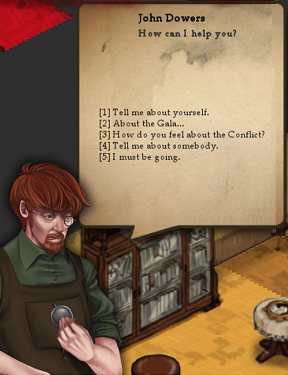 The cost of a such a fully-realized world is a large amount of background information to get through, and enough text that sometimes the "visual" is pushed out of this visual novel. (Presumably Kasztalski's professors weren't patronizing, but darn well expected that the assigned reading would be finished by each class.) The game has great replay value. However while each go through can be as long or as short as you wish it to be, most people can only talk about politics, even fictional politics, for so long before they need to take a break with pictures of cats falling asleep.
The cost of a such a fully-realized world is a large amount of background information to get through, and enough text that sometimes the "visual" is pushed out of this visual novel. (Presumably Kasztalski's professors weren't patronizing, but darn well expected that the assigned reading would be finished by each class.) The game has great replay value. However while each go through can be as long or as short as you wish it to be, most people can only talk about politics, even fictional politics, for so long before they need to take a break with pictures of cats falling asleep.
As a side note: one aspect that feels like a missed opportunity is the way Postmortem handles player customization. Your avatar of death can appear as either male or female, but the changes to gameplay and dialogue are cosmetic. For many games, this would be sufficient, but as Postmortem specifically considers the evolving role of women in Galician society as a plot point, with both feminists and chauvinists amongst the characters, one would think that quite different conversations might be had. A minor quibble, but it seems a curious omission in a game that takes its depth of interaction quite seriously.
Postmortem is available as both a free download and in an extended cut at donation levels ranging from "Poor College Student" to "I <3 Indie Devs". Those interested in an exploration of how games can approach political questions with maturity and insight should definitely give it a play as soon as they can. After all, no one can confidently say that they'll still be living tomorrow.
![]() Windows:
Windows:
Download the free full version and order the extended cut
![]() Mac OS X:
Mac OS X:
Not available.
Try Boot Camp or Parallels or CrossOver Games.
![]() SmartCode's Cheeez Huntr is the sort of simple physics puzzling lazy downtime was made for. As a mouse with a hankering for cheese in a house where safe food storage apparently consists of stacking it out in the open on top of a dirty fridge, you've got a handful of shots to try to knock down all the cheese pieces in each level just by clicking at them. You can click and drag anywhere onscreen to rotate the entire level, letting you plan your angle just right. Though it starts out simple, the addition of immovable objects and other obstacles like blocks you can't let fall off quickly makes things tricky, and if you want all three stars, you need to use as few shots as possible to get all that golden goodness.
SmartCode's Cheeez Huntr is the sort of simple physics puzzling lazy downtime was made for. As a mouse with a hankering for cheese in a house where safe food storage apparently consists of stacking it out in the open on top of a dirty fridge, you've got a handful of shots to try to knock down all the cheese pieces in each level just by clicking at them. You can click and drag anywhere onscreen to rotate the entire level, letting you plan your angle just right. Though it starts out simple, the addition of immovable objects and other obstacles like blocks you can't let fall off quickly makes things tricky, and if you want all three stars, you need to use as few shots as possible to get all that golden goodness.
The lack of any real bells and whistles means Cheeez Huntr might be best suited for really casual players or kids, though its catchy style, simple gameplay, and light twists like different shapes of cheese and objects are nice touches. Unfortunately, while sixty levels is a fair chunk indeed, if you want to play the rest, you'll need to get the Android version of the game which is not free, and having those extra unavailable 120 levels sort of mocking you from the level select screen in the browser version seems a little tacky. There also seems to be a little odd bugginess, with objects occasionally and unpredictably remaining fixed in midair with nothing to support them. Still, this is the sort of simple little game that browser gaming was made for, and though it might need a bit more depth or complexity to really bring in a wider audience, truly casual, sometimes-gamers and kids will get a kick out of it.
![]() Welcome to the beginning of our coverage on interesting indie funding projects (Kickstarter, IndieGoGo), Steam Greenlight games, and news and previews!
Welcome to the beginning of our coverage on interesting indie funding projects (Kickstarter, IndieGoGo), Steam Greenlight games, and news and previews!
Platform: PC/Mac
DRM: Steam
Developer: Brace Yourself Games
Genre: Roguelike/Rhythm Adventure/Awesomesauce
Planned Release: Unknown/Early Access Late 2013
Price: $14.99USD ($13.99USD if preordered)
Official Website
There are no words for how badly I want to play the upcoming roguelike/rhythm game Crypt of the NecroDancer, and if the soul of a funky fresh dancer lives within you, or if you just refuse to admit your random thrashing looks nothing like dancing, then chances are you'll feel the same. From Brace Yourself Games comes a tale of a gutsy young woman whose beating heart is stolen when she accidentally falls into the tomb of an ancient wizard and awakens him. Now, she ventures forth into the (procedurally generated) crypt to recover it, facing off against dragons, zombies, skeletons and much more, gathering weapons and upgrades... through the magic of dance!
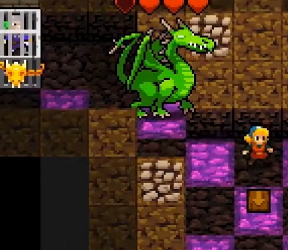 See, Crypt of the NecroDancer's gimmick is that you can play it with either your keyboard or a dance pad, turning the turn-based classic roguelike gameplay into a test of strategy, timing, and of course, rhythm. Rather than being able to hem and haw until you choose the perfect mode of attack for any situation, you'll be forced to act within a certain amount of time. Each beat of the music is a turn, and nailing the music allows you to rack up multipliers. Typically, time limits, even musical ones, are the sort of thing that tends to make a lot of players begin the Hedging Noise Symphony, but Crypt of the NecroDancer promises to be accessible to players of any skill level rather than the typical punishing difficulty usually associated with roguelikes. Throw in the ability to use your own Dance Dance Revolution pad and MP3s if you like and I'm sold. Yes, I'm going to be slaying monsters to Don't Stop Believin' and Smile, Smile, Smile... and I'm not sorry..
See, Crypt of the NecroDancer's gimmick is that you can play it with either your keyboard or a dance pad, turning the turn-based classic roguelike gameplay into a test of strategy, timing, and of course, rhythm. Rather than being able to hem and haw until you choose the perfect mode of attack for any situation, you'll be forced to act within a certain amount of time. Each beat of the music is a turn, and nailing the music allows you to rack up multipliers. Typically, time limits, even musical ones, are the sort of thing that tends to make a lot of players begin the Hedging Noise Symphony, but Crypt of the NecroDancer promises to be accessible to players of any skill level rather than the typical punishing difficulty usually associated with roguelikes. Throw in the ability to use your own Dance Dance Revolution pad and MP3s if you like and I'm sold. Yes, I'm going to be slaying monsters to Don't Stop Believin' and Smile, Smile, Smile... and I'm not sorry..
It doesn't hurt that the game looks gorgeous as well, with a colourful pixel style, and the game's own soundtrack is downright awesome enough that you might not find yourself immediately reaching for those MP3s off the bat. Interestingly, the developers are "developing the game publicly", so you can follow along in the forums instead of just peering in their windows under the cover of night like usual. Crypt of the NecroDancer will hit Steam in Early Access sometime later this year, and you can pre-order the game for $13.99USD (a 10% discount) to help it along. Check out the official website for trailers, screenshots, and even more information!
![]() October 27, 1888. The Wyoming Territories. You wake up fairly certain you've been stolen from while you were knocked out, and decide your best course of action is to go after the thief. Which is, of course, exactly what he wants you to do. And thus the Worldgate series continues with Worldgate 3: Exodus from developer William Buchanan. The third installment of this puzzle-oriented point-and-click adventure game picks up right were the last one left off. This time, instead of leisurely continuing with your scientific pursuits, you are forced to do the bidding of a man named Victor.
October 27, 1888. The Wyoming Territories. You wake up fairly certain you've been stolen from while you were knocked out, and decide your best course of action is to go after the thief. Which is, of course, exactly what he wants you to do. And thus the Worldgate series continues with Worldgate 3: Exodus from developer William Buchanan. The third installment of this puzzle-oriented point-and-click adventure game picks up right were the last one left off. This time, instead of leisurely continuing with your scientific pursuits, you are forced to do the bidding of a man named Victor.
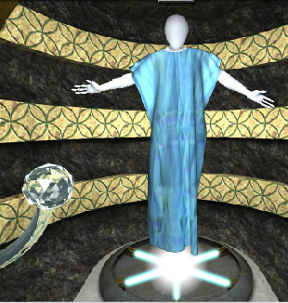 As before, you can personalize your navigation in the menu by choosing to use the [arrow] keys or the mouse to move, as well as toggle on or off navigational arrows. Interacting with the world is done with the mouse. Click on objects for a closer look, or to pick them up for your inventory. Further examine inventory items by hovering over their picture and clicking on the magnifying glass that appears in the bottom corner. You can combine objects by dragging them onto each other while in examination mode. There's also a save game feature, so you can come back to the game later when your brain stops hurting. Play with the sound on if you can, because there are sometimes audio cues to let you know when you've gotten something right.
As before, you can personalize your navigation in the menu by choosing to use the [arrow] keys or the mouse to move, as well as toggle on or off navigational arrows. Interacting with the world is done with the mouse. Click on objects for a closer look, or to pick them up for your inventory. Further examine inventory items by hovering over their picture and clicking on the magnifying glass that appears in the bottom corner. You can combine objects by dragging them onto each other while in examination mode. There's also a save game feature, so you can come back to the game later when your brain stops hurting. Play with the sound on if you can, because there are sometimes audio cues to let you know when you've gotten something right.
Worldgate 3 lives up to the reputation of its predecessors. The art is as lovely and alien as before, and the worlds to explore ever mysterious. To make things even more exciting, some of your many questions will be answered as you delve into these new universes.The puzzles are quite challenging, as is to be expected from this series. There were one or two that seemed extra hard this time around, but nothing our crack team of walkthrough writers couldn't handle. The feeling of being trapped this time around gives this installment a new sense of urgency. If you don't find what Victor is looking for in the pocket universes, he will leave you to die. What a jerk! At the same time who wants to help a guy who is willing to lock you in a cell? Surely you'll find a way to escape instead, right? Pull out your thinking cap (you'll need it) and play the game, so you can hurry up and wait for part four.
![]() Here's something you don't see every day: a mobile real-time strategy game that looks fantastic, isn't impossible to wrap your head around, and can provide instant entertainment. Robotic Planet from FearlessBits manages to squeeze all of the complexity and strategy of a full-blown RTS game into a surprisingly playable touch screen game that has the ability to hook even casual players.
Here's something you don't see every day: a mobile real-time strategy game that looks fantastic, isn't impossible to wrap your head around, and can provide instant entertainment. Robotic Planet from FearlessBits manages to squeeze all of the complexity and strategy of a full-blown RTS game into a surprisingly playable touch screen game that has the ability to hook even casual players.
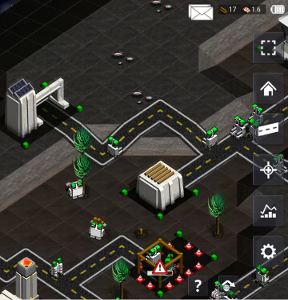 Your robots just landed on a new planet filled with empty space and valuable resources. In order to collect and expand, they have to start setting up factories, harvesting stations, road and other facilities. You start by harvesting basic materials to create cement and metal, two necessary ingredients for your survival. You eventually expand out to include wood, oil and crystal, which allows for more prolific expansion by way of better facilities. All buildings must be connected by roads, which is a strangely fun feature that lets you shape the path your robots take as they go about their business.
Your robots just landed on a new planet filled with empty space and valuable resources. In order to collect and expand, they have to start setting up factories, harvesting stations, road and other facilities. You start by harvesting basic materials to create cement and metal, two necessary ingredients for your survival. You eventually expand out to include wood, oil and crystal, which allows for more prolific expansion by way of better facilities. All buildings must be connected by roads, which is a strangely fun feature that lets you shape the path your robots take as they go about their business.
The interface in Robotic Planet is extremely easy to use. The icons may look small on a phone-sized device, but you'll never have trouble tapping precisely what you need. Information about production, resource gathering and overall load are all available, but much of the time you can get by without crunching stats or worrying about the minutiae of your robot minions. Just be efficient and make sure you build what needs to be built.
The numbers behind Robotic Planet are pretty sweet to look at: 21 different maps that allow for solo play vs. computer enemies or multiplayer battles via Bluetooth or Wi-Fi, more than half a dozen robots with their own abilities, 20 buildings to create, and a map generator to create randomized terrain. The free version includes most of the above with three scenarios to complete along with a nice tutorial stage. It's all you'll need to realize how easy it is to get hooked on this game, even if you never were much for real-time strategy titles.
NOTE: This game was played and reviewed on the Nexus 4. Game was available in the North American market at the time of publication, but may not be available in other territories. Please see individual app market pages for purchasing info.
![]() You may ponder the meaning of the name Amajeto, since it's a word unfound in the dictionary or Google translate. Yet if you had doubts that Lily Temple might be some rowdy bar filled with pugilistic sailors or a dank woods haunted by some uncommonly thin murderer, they're soon assuaged as you enter this lovely, serene scene, the setting for Amajeto's second escape-the-room creation. You are indeed inside a small clay-walled temple where the focus is centered on collecting and arranging seven lilies in order to earn your enlightenment, or, er, freedom.
You may ponder the meaning of the name Amajeto, since it's a word unfound in the dictionary or Google translate. Yet if you had doubts that Lily Temple might be some rowdy bar filled with pugilistic sailors or a dank woods haunted by some uncommonly thin murderer, they're soon assuaged as you enter this lovely, serene scene, the setting for Amajeto's second escape-the-room creation. You are indeed inside a small clay-walled temple where the focus is centered on collecting and arranging seven lilies in order to earn your enlightenment, or, er, freedom.
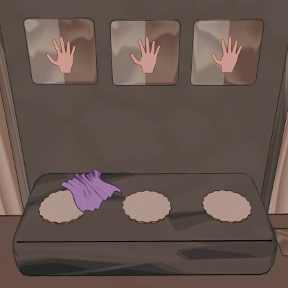 The navigation and gameplay are the standard escape game methods—point-and-click to move about the room and seek out interactive areas. Inventory can be examined in detail by clicking the lower right corner of the item's box; highlight items to use on stage or to combine with another item that's opened in the detail screen. A changing cursor helps this process although it doesn't replace a precise and studied exploration of every area and object in the room.
The navigation and gameplay are the standard escape game methods—point-and-click to move about the room and seek out interactive areas. Inventory can be examined in detail by clicking the lower right corner of the item's box; highlight items to use on stage or to combine with another item that's opened in the detail screen. A changing cursor helps this process although it doesn't replace a precise and studied exploration of every area and object in the room.
Despite a rather TomaTea flavor that hints at more than mere imitation, the lack of "I have no clue" messages and the jazzy smooth instrumentals as well as a certain ineffable style marks a departure between the works of the two monikers. Some familiar puzzles make their reappearance here as well, such as color patterns and clicky corners. For the most part, these puzzles pose little challenge with clues that present obvious solutions once you connect them to their corresponding device. A few hiccups might slow you down, though (a slight spoiler ahead): in one corner of the room is an obscured active area because there's little indication you should click there unless you scrutinize the scene with the changing cursor; in another area is a puzzle that has no sound or visual effects so may look inoperable until you work out how to play it. These are small matters in light of the contentment that comes from a beautifully-designed and perfectly relaxing escape game, which seems to be an apt definition for Amajeto as well as the pretty Lily Temple.
![]() Red Barrels' indie horror action adventure game Outlast is proof that the universe loves you and wants you to be happy. ... oh, sorry, I was reading the wrong thing. Outlast is proof that the universe wants you sleeping with all the lights on and physically recoiling from your computer and mashing the escape key at every opportunity while you shriek in incoherent fear and disgust. As a
Red Barrels' indie horror action adventure game Outlast is proof that the universe loves you and wants you to be happy. ... oh, sorry, I was reading the wrong thing. Outlast is proof that the universe wants you sleeping with all the lights on and physically recoiling from your computer and mashing the escape key at every opportunity while you shriek in incoherent fear and disgust. As a dumb gutsy investigative reporter, you drive alone up to the abandoned Mount Massive Asylum because you're stupid determined to uncover the truth behind years of lies and cover-ups. Upon arrival, however, the gates swing shut behind you, and once you're inside, you discover that the secrets inside are dangerous, and you have no way to fight back. I mean, unless you want to go ahead and evolve some lizard-like ability that lets you drop a limb when threatened by a predator. But no, it's all cowering and frenzied terror from here on out.
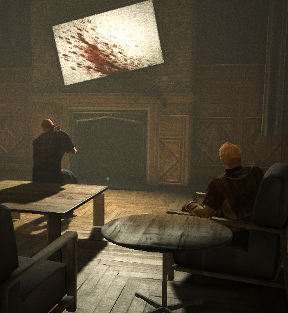 Most of the game's controls are fairly standard. [WASD] is movement, left [shift] is run, [spacebar] is jump and [CTRL] is crouch. You can click to interact with things, but left-clicking brings up your camcorder, which allows you to record video evidence. While in this mode, pressing [F] toggles Night Vision, which is the only way to can see in the dark, thus proving the development team lives on tears of misery because everyone knows night vision is scarier than normal vision. Night Vision consumes battery power, however, so you'll want to use it sparingly, since battery replacements are scarce. The game works on a sort of checkpoint system, so even if you manually save and quit your game, it'll boot you back to the last one you triggered when you load it back up... or if you meet an unfortunate end. Most enemies won't instantly kill you, however, and while you'll take damage, if you can run away and hide you'll be able to recover.
Most of the game's controls are fairly standard. [WASD] is movement, left [shift] is run, [spacebar] is jump and [CTRL] is crouch. You can click to interact with things, but left-clicking brings up your camcorder, which allows you to record video evidence. While in this mode, pressing [F] toggles Night Vision, which is the only way to can see in the dark, thus proving the development team lives on tears of misery because everyone knows night vision is scarier than normal vision. Night Vision consumes battery power, however, so you'll want to use it sparingly, since battery replacements are scarce. The game works on a sort of checkpoint system, so even if you manually save and quit your game, it'll boot you back to the last one you triggered when you load it back up... or if you meet an unfortunate end. Most enemies won't instantly kill you, however, and while you'll take damage, if you can run away and hide you'll be able to recover.
After cheerfully blundering around the building for a few minutes once you find your way inside, you'll quickly realise that is not strawberry jam smeared everywhere and you are in serious danger. Unarmed, your only recourse is to run and hide if you want to stay alive and spread the truth. Which I guess proves our hero is braver than I am because I would have been back out the window and over that enormous gate like Mario on a jet-powered pogostick at the first sight of red. See, these aren't any ordinary men. There's something deep within the mountain that's changed them, and they can't be stopped. As a result, you need to hide whenever they're around. You can try to run out sneak by, but if you're cornered, certain objects such as lockers or beds can be hidden in or under until danger passes by. Of course, just because you're hidden doesn't mean you're safe, and if enemies suspect you're around, they may randomly search hiding places in the area, so don't stay put for too long. Here is where you'll find your Night Vision to be the most valuable, allowing you to see enemies in the cover of darkness without them seeing you to an extent, but remember... they can still hear you, so try to avoid making a lot of noise, and always open doors slowly to peek before barging in. At the same time, however, you'll also be forced to run for your life when hiding isn't possible, and you'll need to use the layout of the building to your advantage, avoiding obstacles and keeping an eye out over your shoulder.
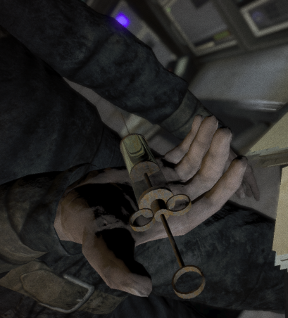 Analysis: It's sort of trendy to sneer at jump scares these days, but, you know, I'll argue that there is a tremendous difference between a junk jump scare and one executed well, and Outlast definitely falls into the latter category. This is a game that thrives on instilling blind panic and repulsed terror, and by masterfully weaving it into an atmosphere that feels heavy with dread and danger, Outlast stands head and shoulders above other games that seek to merely startle, largely because though the big scares come frequently, it's often when they're least expected. In a way, the game's absolute dedication to outrageous grossness is a little unfortunate, since the sheer amount of it just turns into background noise after a while. Oh, torso in a toilet? Guts on the floor? Heads lined up on shelves like canned goods? Meh!
Analysis: It's sort of trendy to sneer at jump scares these days, but, you know, I'll argue that there is a tremendous difference between a junk jump scare and one executed well, and Outlast definitely falls into the latter category. This is a game that thrives on instilling blind panic and repulsed terror, and by masterfully weaving it into an atmosphere that feels heavy with dread and danger, Outlast stands head and shoulders above other games that seek to merely startle, largely because though the big scares come frequently, it's often when they're least expected. In a way, the game's absolute dedication to outrageous grossness is a little unfortunate, since the sheer amount of it just turns into background noise after a while. Oh, torso in a toilet? Guts on the floor? Heads lined up on shelves like canned goods? Meh!
At the same time, however, it's when Outlast marries that gore and violence with nudity and sexuality that some people might find it too much to take, so caveat emptor. I will say that for me the terror of popping up through a hole in the floor to find myself face-to-face with an unexpected inmate far eclipsed the horror of what his friend was doing in the background... largely because I was too frightened to notice what was going on. It was only when the other inmate panicked and called me a pervert for showing up uninvited that I put the pieces together... and realised that the screenshot I'd taken for this review below needed some editing because the background contained, uh, an unexpected surprise. It was almost more gross than disturbing for the way it was handled, with a sort of perversely dark and humorous tone on the heel of the jump scare, and once I finished gaping as my brain put two and two together, the laugh that burst out of me was more simple shock than horror. "I can't believe they did that!" versus "Ugh, they shouldn't have done that!"
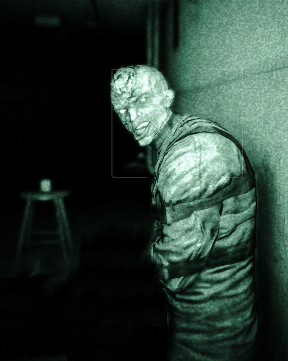 Of course, it's not all torsos and guts being flung at your face. A lot of the game's more frightening moments are the more restrained ones. A door shutting behind you when you enter a room. Someone flashing by at the end of the hallway. A person storming by below you in a rage while you cower in an air duct. It's an atmosphere of genuine dread that never lets you feel like you're safe. Intense? Uh, yes. The ever-present boot of tension on the back of your neck makes it the sort of game that makes you jittery for the longer you play, and I found myself needing to take breaks from it. "Nope," I would say, quite calmly as I instantly closed the program upon hearing a nearby sound I couldn't place, "nope nope nope."
Of course, it's not all torsos and guts being flung at your face. A lot of the game's more frightening moments are the more restrained ones. A door shutting behind you when you enter a room. Someone flashing by at the end of the hallway. A person storming by below you in a rage while you cower in an air duct. It's an atmosphere of genuine dread that never lets you feel like you're safe. Intense? Uh, yes. The ever-present boot of tension on the back of your neck makes it the sort of game that makes you jittery for the longer you play, and I found myself needing to take breaks from it. "Nope," I would say, quite calmly as I instantly closed the program upon hearing a nearby sound I couldn't place, "nope nope nope."
Perversely, it's also a gorgeous game in a lot of ways, with stunning environmental design, expressive characters, and brilliant use of lighting. Though the lion's share of the game is left to slumming around indoors, the few outside sequences are downright jaw-dropping in their beauty, especially in regards to the architecture of the Asylum itself. In a way, it feels like almost as much of a character as the inmates themselves, all of whom are drastically different. From brute berserkers to the soft insidiousness of a crazed preacher, the cast varies dramatically. One of the most unsettling sequences is an exploration of an area filled with non-hostile yet still threatening inmates, seeing them cower and moan and berate their illusions, all while two shadowed men discuss in quiet tones exactly what they plan on doing with you.
There isn't a lot of puzzle-solving apart from finding keys and knowing how to get away, making it a decided action adventure... and a harrowing one at that. There are multiple times when you'll be forced to literally run for your life. Not just find a bed to duck under, but run, vaulting over obstacles, slamming doors behind you to slow down your pursuers, even glancing over your shoulder to see how much closer they're getting. All of this is beautifully conveyed through the game's devotion to giving our hero a real physical form, seeing his hand grab a door jamb, or his shadow bobbling wildly with your movements in a way that fully engrosses you in the experience. It made me wish the game did challenge me more on an intellectual level to break things up a bit, but Outlast is solely devoted to the grotesque spectacle of its setting and plot, driving you from place to place to terrify you more... not that that's a bad thing. Speaking of plot, Outlast's takes a while to get really going, but once it does, it takes a satisfying turn from what seems like your typical slasher/maniac fare into something more otherworldly. Still, it's mostly relegated to a supporting role, riding sidecar to the game rather than feeling like an integrated, important part.
In a lot of ways, from its sheer dedication to seeing how much grotesqueness you can take to its unrelenting tension, Outlast is a hard game to take at times. The whole experience can sort of feel like an infinitely more traumatic theme park Halloween horror house, wheeling you from shocking terror to terror without letting you catch your breath. You need a strong constitution and steady nerves to really appreciate it, but Outlast is relentlessly horrifying in almost every possible way. Few games really manage atmosphere that manages to feel as menacing as Outlast, and you'll dread every closed door and darkened corner. It's a game that can go from a slow, whimpering creep down a dark hallway to a panic-fueled sprint for your life, and Outlast pulls no punches in either regard. It'll see how much you think you can take, and then force you to take a little more. For fans of blood-spattered atrocity style horror and vicious action, Outlast will be a rare treat that will keep you up at night in more ways than one.
![]() Windows:
Windows:
Get the full version
![]() Mac OS X:
Mac OS X:
Not available.
Try Boot Camp or Parallels or CrossOver Games.
![]() Everybody knows the Moon is made of cheese, one of the most precious and delicious things we know. So it's no wonder we want to protect it from all sorts of alien invasions. In That's My Moon, a thrilling space shooter, you're in charge of blasting the baddies right out of your orbit. That's one small step for man, one giant leap for cheese preservation.
Everybody knows the Moon is made of cheese, one of the most precious and delicious things we know. So it's no wonder we want to protect it from all sorts of alien invasions. In That's My Moon, a thrilling space shooter, you're in charge of blasting the baddies right out of your orbit. That's one small step for man, one giant leap for cheese preservation.
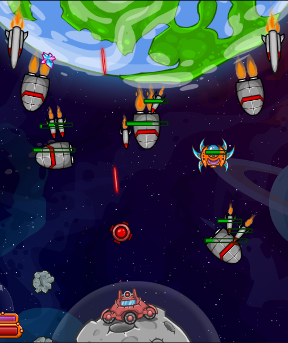 This is a defence game, meaning that you stay on the Moon and are only able to move from side to side. The gameplay is mostly mouse-driven: your space cannon thingy shoots automatically wherever you point your cursor. Use the left click to pick up coins, weapons and power-ups. This is a bit of a pain at the beginning, since your cursor has a rather small scope, but a few upgrades will fix that. Finally, press the [spacebar] to launch an anti-gravity shield and push the enemies away for a while. There are two bars to be filled, the energy bar and your cannon's health. These can be replenished by picking up power-ups which randomly fly across the screen. The weapons system is peculiar in that you don't choose which one you want to use before you start playing. Instead, you start with the weakest one, and then others (again, randomly) float in during the level, and you can choose whether you want to pick them up. This allows a change of tactics mid-level as well as more versatility in the gameplay. Each of your assets, from weapons to coin combos, can be upgraded twice, and the upgrades dramatically affect the outcome.
This is a defence game, meaning that you stay on the Moon and are only able to move from side to side. The gameplay is mostly mouse-driven: your space cannon thingy shoots automatically wherever you point your cursor. Use the left click to pick up coins, weapons and power-ups. This is a bit of a pain at the beginning, since your cursor has a rather small scope, but a few upgrades will fix that. Finally, press the [spacebar] to launch an anti-gravity shield and push the enemies away for a while. There are two bars to be filled, the energy bar and your cannon's health. These can be replenished by picking up power-ups which randomly fly across the screen. The weapons system is peculiar in that you don't choose which one you want to use before you start playing. Instead, you start with the weakest one, and then others (again, randomly) float in during the level, and you can choose whether you want to pick them up. This allows a change of tactics mid-level as well as more versatility in the gameplay. Each of your assets, from weapons to coin combos, can be upgraded twice, and the upgrades dramatically affect the outcome.
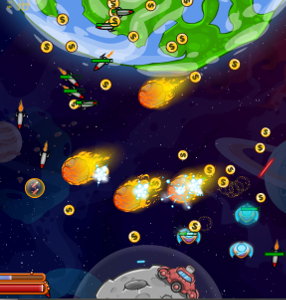 With only fifteen levels, That's My Moon can seem short, but this actually allows the game to stay fresh and avoid becoming repetitive. The flurry of space rockets, lasers and meteors keeps things dynamic and gives the game that old school arcade feeling. Difficulty might seem uneven in places, but replaying a level or two to get more money for upgrades doesn't pose a problem. However, if you do this, you might run out of upgrades to buy a few levels before the end. A few more options wouldn't have gone amiss, but That's My Moon certainly seems complete even without them. This is a highly addictive shooter, what with its bright, colourful graphics and smooth mechanics – there was a gleeful glint in my eyes when I caused a brilliant meteor shower to sweep my enemies off the screen. After all, we have but one Moon, and we intend to keep it.
With only fifteen levels, That's My Moon can seem short, but this actually allows the game to stay fresh and avoid becoming repetitive. The flurry of space rockets, lasers and meteors keeps things dynamic and gives the game that old school arcade feeling. Difficulty might seem uneven in places, but replaying a level or two to get more money for upgrades doesn't pose a problem. However, if you do this, you might run out of upgrades to buy a few levels before the end. A few more options wouldn't have gone amiss, but That's My Moon certainly seems complete even without them. This is a highly addictive shooter, what with its bright, colourful graphics and smooth mechanics – there was a gleeful glint in my eyes when I caused a brilliant meteor shower to sweep my enemies off the screen. After all, we have but one Moon, and we intend to keep it.
![]() What do you do with a Brawlin' Sailor? What do you do with a Brawlin' Sailor? What do you do in a Brawlin' Sailor? Well, considering that it's Major Bueno's latest action game, you should play it! After a buff seadog finds a note from a captured damsel stuck in the lighthouse of a secret island, he'll be brawling his way to save her, no matter how many mooks need pummeling.
What do you do with a Brawlin' Sailor? What do you do with a Brawlin' Sailor? What do you do in a Brawlin' Sailor? Well, considering that it's Major Bueno's latest action game, you should play it! After a buff seadog finds a note from a captured damsel stuck in the lighthouse of a secret island, he'll be brawling his way to save her, no matter how many mooks need pummeling.
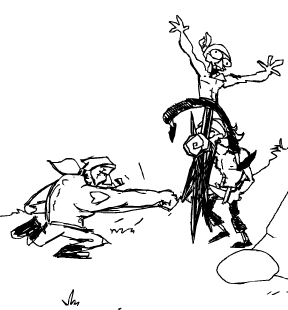 Move and jump with the [arrow] keys and attack with [A], battling your way through sailors, barrels, bosses, werewolves, and more, up to the top of the lighthouse. But watch out once you get there, because the real adventure hasn't even started! Major Bueno has become one of the most intriguing browser game experimenters this side of Gregory Weir, with each one of their games-a-month proving as consistently entertaining as they are unique. Brawlin' Sailor's sketchy style and expressive animation calls to mind an interactive cartoon, and it's short run-time makes it an easy choice for a game-break... no matter how er-ly in the morning it is?
Move and jump with the [arrow] keys and attack with [A], battling your way through sailors, barrels, bosses, werewolves, and more, up to the top of the lighthouse. But watch out once you get there, because the real adventure hasn't even started! Major Bueno has become one of the most intriguing browser game experimenters this side of Gregory Weir, with each one of their games-a-month proving as consistently entertaining as they are unique. Brawlin' Sailor's sketchy style and expressive animation calls to mind an interactive cartoon, and it's short run-time makes it an easy choice for a game-break... no matter how er-ly in the morning it is?
![]() 868-HACK is an unusual sort of puzzle hacking game that feels a bit like an old school roguelike. Created by Michael Brough, author of Corrypt and Zaga-33, the game puts you in the happy shoes of a happy computer hacker bent on stealing precious data in the night. By swiping across grids filled with siphons, resources and enemies, you can walk away with all the data while setting an impressive score for your run.
868-HACK is an unusual sort of puzzle hacking game that feels a bit like an old school roguelike. Created by Michael Brough, author of Corrypt and Zaga-33, the game puts you in the happy shoes of a happy computer hacker bent on stealing precious data in the night. By swiping across grids filled with siphons, resources and enemies, you can walk away with all the data while setting an impressive score for your run.
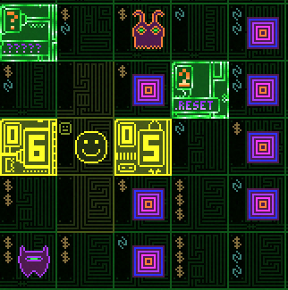 868-HACK is set up on a grid, with each square holding credits, energy, or prog blocks. Swipe the screen to move in a direction, shifting over one block at a time and moving the screen forward by one turn. Enemies spawn and give chase, but you can swipe towards them to give a quick binary blast of death. The goal is to siphon data from cells on the grid to pick up points, resources, and new abilities. Grab a siphon, tap it in the menu to activate it, and you'll automatically gather resources indicated on the tiles.
868-HACK is set up on a grid, with each square holding credits, energy, or prog blocks. Swipe the screen to move in a direction, shifting over one block at a time and moving the screen forward by one turn. Enemies spawn and give chase, but you can swipe towards them to give a quick binary blast of death. The goal is to siphon data from cells on the grid to pick up points, resources, and new abilities. Grab a siphon, tap it in the menu to activate it, and you'll automatically gather resources indicated on the tiles.
If you're adjacent to one of the progs when you siphon, the fun really begins. Prog blocks activate groups of enemies, the number of which is displayed on their face. They also give you new abilities and data, though, making them worth seeking out. Some of these powers are as simple as letting you move without the enemy seeing you, waiting one turn, or spying on prog cells that are hidden. Others let you destroy groups of enemies or heal yourself. They all cost resources to use, of course, so you have to strike an uneasy balance between sticking your neck out for more siphons and just staying alive to see another stage.
868-HACK makes a complex economy out of a few simple numbers. The grid is only 6x6, dangerous prog squares spawn just half a dozen or so enemies, and siphoning data rewards you with merely a handful of credits and energy. The catch is that when you tug at one string, the whole web moves. Gain some resources and enemies appear. Fight one foe and another one walks up behind you. Go for a prog block but end up surrounding yourself with bad guys. It's laughably easy to paint yourself in a corner, but once you get rolling, 868-HACK will quickly become your new favorite game. Especially once you start going for score streaks and survival runs!
NOTE: This game was played and reviewed on the ipad 3. Game was available in the North American market at the time of publication, but may not be available in other territories. Please see individual app market pages for purchasing info.
![]() Welcome to the beginning of our coverage on interesting indie funding projects (Kickstarter, IndieGoGo), Steam Greenlight games, and news and previews!
Welcome to the beginning of our coverage on interesting indie funding projects (Kickstarter, IndieGoGo), Steam Greenlight games, and news and previews!
Platform: PC/Mac
DRM: No
Developer: Failbetter Games
Genre: Roguelike Adventure
Planned Release: Q1 2014
Funding Ends: October 3rd, 2013
In the world of "free to play" games, few are as immediately recommenable as Failbetter Games' Fallen London (originally Echo Bazaar. Part interactive fiction, part surreal steampunkish horror mystery adventure RPG, it offers players a unique and immediately engrossing world with tons of style, charm, and stories without constantly badgering you for money. So would you be interested in a roguelike RPG adventure set in the same world but with gameplay inspired by FTL: Faster Than Light, Don't Starve, and more? Then perhaps you should check out the Kickstarter for Sunless Sea, for PC and Mac planned to release in 2014.
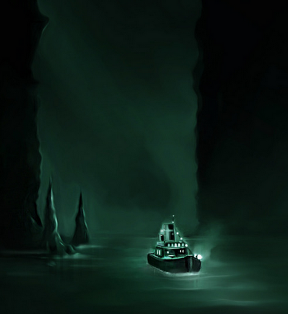 The game puts you in charge of a steamship, complete with crew, exploring the depths of the Unterzee, a "sunless sea" deep beneath the earth filled with treasure, adventure, and danger. There are multiple reasons your character, who you'll create from scratch and can look like or be anything (male, female, or neither!), and as such you have multiple potential endgames to reach... if you survive. You'll have to manage your ship carefully, taking care of the people who make up your crew and maintaining supplies, as well as handling combat, learning new skills and abilities as you grow. But it's not just the risk of starvation, madness, or enemies... Sunless Sea's focus on story and consequences means that every single choice you make can have a myriad of influences on the game itself, and the options available change depending on how your character is structured. Romance? Ghost ships? Giant crabs and crewmates driven mad by hunger and terror? Awwww yissss. Of course, once you die, that's it. You'll have to start all over with a new crew, ship, and captain... but perhaps you'll be connected to your old character's legacy in an unexpected way...
The game puts you in charge of a steamship, complete with crew, exploring the depths of the Unterzee, a "sunless sea" deep beneath the earth filled with treasure, adventure, and danger. There are multiple reasons your character, who you'll create from scratch and can look like or be anything (male, female, or neither!), and as such you have multiple potential endgames to reach... if you survive. You'll have to manage your ship carefully, taking care of the people who make up your crew and maintaining supplies, as well as handling combat, learning new skills and abilities as you grow. But it's not just the risk of starvation, madness, or enemies... Sunless Sea's focus on story and consequences means that every single choice you make can have a myriad of influences on the game itself, and the options available change depending on how your character is structured. Romance? Ghost ships? Giant crabs and crewmates driven mad by hunger and terror? Awwww yissss. Of course, once you die, that's it. You'll have to start all over with a new crew, ship, and captain... but perhaps you'll be connected to your old character's legacy in an unexpected way...
Failbetter Games is an exceptionally talented and creative crew, whose dedication to their flagship title, Fallen London, has been remarkable to see as they continually work to add new content to an already engrossing way and deliver the best possible experience for players in a way that incorporates their feedback. They definitely seem to have both the ability and the resolve to take on this project, and their planned/possible expansions could add a lot more to an already ambitiously awesome looking project. It is, however, worth mentioning that they cancelled BELOW, another Kickstarter/Fallen London project in late 2012 when it was clear the game would not reach its funding goal, but in that case all pledges were cancelled and no backers were charged money for it as well.
You can donate whatever you like to help fund the game, which is asking for roughly $93000.00USD, and a donation of $16.00USD gets you a DRM free copy of the game when it releases next year for the platform of your choice and any expansions free of charge. If you want to find out if this is a world you want to explore, trying the free online game (registration required) the game is based on, Fallen London, is a great place to start. If you want to know more, head on over to the official Kickstarter page!
JayisGames.com Kickstarter picks are selected based only on personal evaluation and perceived overall quality of the project. We assume no responsibility for failed projects or developer's inability to deliver. Donate with care! Contact dora AT jayisgames DOT com with KICKSTARTER in the subject line if you find a project you think we should know about!
![]() Do you remember the golden age of 2009, when in between chasing hoops with sticks and sipping tea with your pinky extended, you had your monocle pop out in astonishment at Alishah Novin's quirky online multiplayer webtoy/puzzle game? Well, though the original version was sadly taken offline in 2010 due to both being unable to handle the traffic as well as other problems like trolling and some persistent bugs, Broken Picture Telephone is now back online!
Do you remember the golden age of 2009, when in between chasing hoops with sticks and sipping tea with your pinky extended, you had your monocle pop out in astonishment at Alishah Novin's quirky online multiplayer webtoy/puzzle game? Well, though the original version was sadly taken offline in 2010 due to both being unable to handle the traffic as well as other problems like trolling and some persistent bugs, Broken Picture Telephone is now back online!
 You'll need a free account to play, but if you enjoy showcasing off your amazing (or questionable) artistic skills, you'll probably overlook that. The premise is simple. Someone writes out a phrase (essentially an idea for a drawing), and someone else has to draw it. Then someone else looks at that drawing and describes what they think is happening in it, and someone else uses that description to draw their picture... and so on... and so on... and so on! You won't know what the other submissions or original objective was until you're done. The object isn't to win, but to entertain, and you can spend a lot of time just browsing through the archives of completed games and laughing at the results. Of course, at the same time, you're sort of relying on the community to police itself, and that means you can run into people deliberately ruining games, whether by ignoring the rules or posting inappropriate content without flagging it, so parents and players beware.
You'll need a free account to play, but if you enjoy showcasing off your amazing (or questionable) artistic skills, you'll probably overlook that. The premise is simple. Someone writes out a phrase (essentially an idea for a drawing), and someone else has to draw it. Then someone else looks at that drawing and describes what they think is happening in it, and someone else uses that description to draw their picture... and so on... and so on... and so on! You won't know what the other submissions or original objective was until you're done. The object isn't to win, but to entertain, and you can spend a lot of time just browsing through the archives of completed games and laughing at the results. Of course, at the same time, you're sort of relying on the community to police itself, and that means you can run into people deliberately ruining games, whether by ignoring the rules or posting inappropriate content without flagging it, so parents and players beware.
At the moment, playing is both easy and fun, though it seems like you have to wait an oddly long time to join another game once you've finished with one, though completed games show up fast for viewing. You also have to cross your fingers and hope for people to put in the effort, since the best results come from the most deliberately elaborate drawings and descriptions. With luck, this incarnation will have ironed out all of its kinks and stay around a bit longer, because the shock and amusement of finding out the description you thought you were recreating faithfully with your drawing isn't even in the same galaxy of what it started life as is a lot of fun.
![]() Orteil's quirky webtoy Cookie Clicker has recently gotten an upgrade, going from a simple but cute diversion to a... well, still simple and cute diversion, but with a shinier interface and some upgrades and achievements. Or is it?!... well, yes, mostly, but with a few twists that make playing now less of a grind and more engrossing. You still begin with a single cookie you click on to generate more, and as your cookies build up, you can spend them on things to make more cookies for you, or on upgrades to produce those cookies even faster. This time around, you can even sell facilities back.
Orteil's quirky webtoy Cookie Clicker has recently gotten an upgrade, going from a simple but cute diversion to a... well, still simple and cute diversion, but with a shinier interface and some upgrades and achievements. Or is it?!... well, yes, mostly, but with a few twists that make playing now less of a grind and more engrossing. You still begin with a single cookie you click on to generate more, and as your cookies build up, you can spend them on things to make more cookies for you, or on upgrades to produce those cookies even faster. This time around, you can even sell facilities back.
If you played the original Cookie Clicker featured in a recent Link Dump Friday, the most immediate difference is going to be both the significant visual and user interface overhaul, as well as the fact that the game now runs smoothly in its own tab. To be honest, it looks great and now feels like a much more fully fleshed project that compels you to spend time with it in a way that the bare-bones original just didn't. It's weird, silly, and the vague yet freaky storyline that emerges through the sparse text as your cookies pile up and your success grows is a clever touch. On the other hand, it's still not quite as involving on a gameplay level compared to similar, yet more elaborate games like A Dark Room or Candy Box!, which does sort of relegate it to something you glance at from time to time rather than something you have a lot to do with as a player. The text, unfortunately, rarely has any actual impact on the game itself, making it pointless beyond a laugh... even if the game informs you that your cookie factory workers go on strike over wages, for instance, your factories still generate cookies in exactly the same way.
That isn't, incidentally, a strike against it, just an acknowledgement that Cookie Clicker isn't the same beast as its inspiration, and shouldn't be expected to be. It has a few surprises in store, an a ton of personality that, combined with a sly sense of humour and a unique style, make it a definite charmer. It progresses much faster than it did before, and is well worth keeping a tab open for if you're a fan of surreal, dark humour, and have always suspected your cookies would bring all the people to the yard.
Thanks to Sara and Alex for sending this one in!
![]() Hear that? The circus barker is calling to you: "Come Solve the Show!" See the rollicking clowns, the silly monkey and the prancing show horse—once you find and fit together the multitudes of uniquely-shaped pieces to complete the scene in this playful jigsaw puzzle from the wonderful imagination of Plexus. Click on and drag pieces to move them around, fitting them in place by using the [arrow] keys to rotate left or right. The first in a series of circus-themed puzzles, this is a wee bit easier (taking about 15-20 minutes to solve) than some other Plexus designs, yet it's not without its tricks. At first, switching between the mouse and keyboard may feel a bit clunky, but it's soon second-nature as you're caught up in the enjoyment of watching the picture unfold. No ticket needed, just come on in and grab a seat for some fun!
Hear that? The circus barker is calling to you: "Come Solve the Show!" See the rollicking clowns, the silly monkey and the prancing show horse—once you find and fit together the multitudes of uniquely-shaped pieces to complete the scene in this playful jigsaw puzzle from the wonderful imagination of Plexus. Click on and drag pieces to move them around, fitting them in place by using the [arrow] keys to rotate left or right. The first in a series of circus-themed puzzles, this is a wee bit easier (taking about 15-20 minutes to solve) than some other Plexus designs, yet it's not without its tricks. At first, switching between the mouse and keyboard may feel a bit clunky, but it's soon second-nature as you're caught up in the enjoyment of watching the picture unfold. No ticket needed, just come on in and grab a seat for some fun!
![]() This week, Nintendo announced the release of a new addition to their line of handhelds: the 2DS, which has all the features of the 3DS, minus the 3D. We here at the Vault have decided to go one step further, and convert to 1DS format. So, if next week, if you see a line shoot across your computer monitor that makes you want to play favorites from the JayIsGames archives, that's what that is. This week though, we've got puzzle, adventure, and platforming favorites that have quality in all sorts of dimensions.
This week, Nintendo announced the release of a new addition to their line of handhelds: the 2DS, which has all the features of the 3DS, minus the 3D. We here at the Vault have decided to go one step further, and convert to 1DS format. So, if next week, if you see a line shoot across your computer monitor that makes you want to play favorites from the JayIsGames archives, that's what that is. This week though, we've got puzzle, adventure, and platforming favorites that have quality in all sorts of dimensions.
 Z-Rox - One of the best things about discussing new games with the JiG crew is how it can remind you of forgotten favorites. Case in point: while talking about Pictune, SonicLover remarked how it reminded one of "that game where a picture scrolled past a narrow horizontal slit and you had to guess what it was". A little detective work by Trinn revealed it to be Z-Rox, the 2008 puzzle game by Marco Arsenault. And non-indicative name aside (it's a play on "Xerox", right?), yeah, it's still awesome! Trippy visuals and music make it the perfect dose of zen for a coffee break, and an experience that no one has yet made a perfect copy of.
Z-Rox - One of the best things about discussing new games with the JiG crew is how it can remind you of forgotten favorites. Case in point: while talking about Pictune, SonicLover remarked how it reminded one of "that game where a picture scrolled past a narrow horizontal slit and you had to guess what it was". A little detective work by Trinn revealed it to be Z-Rox, the 2008 puzzle game by Marco Arsenault. And non-indicative name aside (it's a play on "Xerox", right?), yeah, it's still awesome! Trippy visuals and music make it the perfect dose of zen for a coffee break, and an experience that no one has yet made a perfect copy of. Zap Dramatics: Ambition Series - What can be said about Zap Dramatic's Ambition series, that hasn't already been said by those two snarky gents on the YouTubes? Then again, while Ambition may be the flash-gaming equivalent of "Trapped in the Closet", entertainment is entertainment, even when it's the unintentional kind, and the series has no lack of that. Starting with a suicide bomber falling into a mattress truck, and expanding into a complex (and insane) web of crosses and double-crosses, it's not certain whether this adventure teaches all the negotiating skills it professed to. Still, it has the appeal of the best trashy airport-novels and was undeniably a leap forward in browser story-telling when it started back in 2000. So update to Flash 4, make sure your CPU clocks in at 200 mhz, and give it a go!
Zap Dramatics: Ambition Series - What can be said about Zap Dramatic's Ambition series, that hasn't already been said by those two snarky gents on the YouTubes? Then again, while Ambition may be the flash-gaming equivalent of "Trapped in the Closet", entertainment is entertainment, even when it's the unintentional kind, and the series has no lack of that. Starting with a suicide bomber falling into a mattress truck, and expanding into a complex (and insane) web of crosses and double-crosses, it's not certain whether this adventure teaches all the negotiating skills it professed to. Still, it has the appeal of the best trashy airport-novels and was undeniably a leap forward in browser story-telling when it started back in 2000. So update to Flash 4, make sure your CPU clocks in at 200 mhz, and give it a go! Insidia - I have to say, if, when we first set foot on another planet, there aren't eldritch ruins to explore and unlock and large numbers of mysterious artifacts to collect, I have to say I'll be a little disappointed. And then I'd console myself by unwrapping some astronaut ice cream and loading up Insidia, the 2010 platformer by Woblyware, which'll give me all that and more. A perfect distillation of the Metroidvania concept, Insidia gives all the thrills of exploration and all the disquieting encounters with techno-organic hybrids that players could hope for, all without waiting the seven months going to actual Mars would take.
Insidia - I have to say, if, when we first set foot on another planet, there aren't eldritch ruins to explore and unlock and large numbers of mysterious artifacts to collect, I have to say I'll be a little disappointed. And then I'd console myself by unwrapping some astronaut ice cream and loading up Insidia, the 2010 platformer by Woblyware, which'll give me all that and more. A perfect distillation of the Metroidvania concept, Insidia gives all the thrills of exploration and all the disquieting encounters with techno-organic hybrids that players could hope for, all without waiting the seven months going to actual Mars would take.
While we welcome any comments about this weekly feature here, we do ask that if you need any help with the individual games, please post your questions on that game's review page. Well, what are you waiting for? Get out there and rediscover some awesome!
![]() One fish, two fish, red fish... Demon fish? Yes, in the survival game, Escape From the Fishing Community Island, bloodthirsty barracudas and murderous marlins have decided to rebel against the fishing village where you happen to be taking your holiday. All the villagers have run off in their boats, leaving you to fend for yourself and try to find an escape. You'll move with [WASD] or [arrow] keys, shoot and search houses with the mouse; your goal is to look for a boat, which is your only ticket off the island, while staying away from the hellfish.
One fish, two fish, red fish... Demon fish? Yes, in the survival game, Escape From the Fishing Community Island, bloodthirsty barracudas and murderous marlins have decided to rebel against the fishing village where you happen to be taking your holiday. All the villagers have run off in their boats, leaving you to fend for yourself and try to find an escape. You'll move with [WASD] or [arrow] keys, shoot and search houses with the mouse; your goal is to look for a boat, which is your only ticket off the island, while staying away from the hellfish.
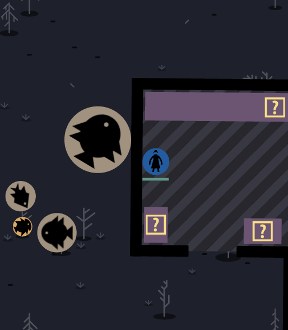 At the start, you get to choose two out of three weapons (harpoon, hooks or net), the size of the island and the difficulty mode. You are then dropped in the middle of the place with a map and the fish of all shapes and sizes swarming around. Before locating the boat, you have to find some fuel, the boat keys and your wife, which means that rifling through houses is necessary. The villagers have left all sorts of goodies behind, from health-restoring pigs' legs to small children who can help repair your net. Any kind of help is certainly welcome, since it's impossible to finish the game without frequent clashes with vicious fish, some of which are three times your size, so it's best to choose your battles carefully. Easily the best aspect of the game is the atmosphere, a minimalistic nightmare of dead trees and eerie pale fish intent on murder. There's something profoundly disturbing about fish behaving so freely on dry land, even more so when you're surrounded by them on a small island. This game knows claustrophobia and uses it well, mixing it with a bleak environment and creating a chilling effect which will make you look at fish a little differently.
At the start, you get to choose two out of three weapons (harpoon, hooks or net), the size of the island and the difficulty mode. You are then dropped in the middle of the place with a map and the fish of all shapes and sizes swarming around. Before locating the boat, you have to find some fuel, the boat keys and your wife, which means that rifling through houses is necessary. The villagers have left all sorts of goodies behind, from health-restoring pigs' legs to small children who can help repair your net. Any kind of help is certainly welcome, since it's impossible to finish the game without frequent clashes with vicious fish, some of which are three times your size, so it's best to choose your battles carefully. Easily the best aspect of the game is the atmosphere, a minimalistic nightmare of dead trees and eerie pale fish intent on murder. There's something profoundly disturbing about fish behaving so freely on dry land, even more so when you're surrounded by them on a small island. This game knows claustrophobia and uses it well, mixing it with a bleak environment and creating a chilling effect which will make you look at fish a little differently.
![]() Mass, propulsion, physics and gravitational pull... it sounds like the start of a nerdy "yo mamma" joke, but it's actually Impulse, from EdGE (The Educational Gaming Environments group) and GameGurus. All you need to do to play is to click. You goal is to get the green ball safely into ye olde mystical portal in each stage in succession, but standing in your way are other coloured balls, and colliding with them means game over, forcing you to begin the level anew. Whenever you click, however, you generate a pulse of energy that moves everything around it fast or slow depending on where it was in relation to your click, and allows you to clear paths or send your green ball along its way. Each click uses up five percent of your energy, however, and if you use it all up before you reach the portal, you'll have to start again.
Mass, propulsion, physics and gravitational pull... it sounds like the start of a nerdy "yo mamma" joke, but it's actually Impulse, from EdGE (The Educational Gaming Environments group) and GameGurus. All you need to do to play is to click. You goal is to get the green ball safely into ye olde mystical portal in each stage in succession, but standing in your way are other coloured balls, and colliding with them means game over, forcing you to begin the level anew. Whenever you click, however, you generate a pulse of energy that moves everything around it fast or slow depending on where it was in relation to your click, and allows you to clear paths or send your green ball along its way. Each click uses up five percent of your energy, however, and if you use it all up before you reach the portal, you'll have to start again.
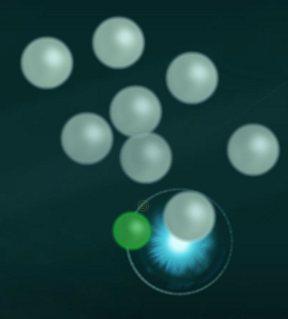 But hey, a little patient clicking and timing and you're golden, right? Well, not quite. See, as the game progresses, so do the number and variety of obstacles you have to contend with. The huge white balls that draw you in with their gravitational field, for instance, or colours with different charges that will repel and attract others, making the playing field a bit more like a minefield. The game is designed around Newton's Laws of Motion, but you don't need to panic if you slept through that particular chapter in school. You do, however, have to be the sort of player for whom patience comes as naturally as reflexes, and observation is just as important if you want to make it through the game's beefy seventy levels. It's not just about blindly blasting your way through each area, it's about making use of each object's unique properties in a way that fits with your strategy of not being blown up... which is a pretty important strategy to have. Just remember... you can use your pulse to move and otherwise impact "enemy" balls as well, which can help you clear a path and manipulate the screen.
But hey, a little patient clicking and timing and you're golden, right? Well, not quite. See, as the game progresses, so do the number and variety of obstacles you have to contend with. The huge white balls that draw you in with their gravitational field, for instance, or colours with different charges that will repel and attract others, making the playing field a bit more like a minefield. The game is designed around Newton's Laws of Motion, but you don't need to panic if you slept through that particular chapter in school. You do, however, have to be the sort of player for whom patience comes as naturally as reflexes, and observation is just as important if you want to make it through the game's beefy seventy levels. It's not just about blindly blasting your way through each area, it's about making use of each object's unique properties in a way that fits with your strategy of not being blown up... which is a pretty important strategy to have. Just remember... you can use your pulse to move and otherwise impact "enemy" balls as well, which can help you clear a path and manipulate the screen.
The frustrating thing, however, is that only saves your level progression when you pass a checkpoint that introduces a new element, and movement does not reset unless you're destroyed. What this means is that if your ball was zipping through the portal like a rocket, there's a very good chance it's going to rebound off the wall or just run straight into another ball that spawns as part of the next stage, forcing a game over and a potential table flip. For some players who might otherwise enjoy the clever implementation of physics, it might be a bit too unforgiving and finicky as a result. Especially in later levels, where the sheer number of balls (stop that snickering) onscreen combined with the variety of different rules affecting them at that point make for an absolutely harrowing experience already.
In a lot of ways, Impulse (no relation, ironically) is a simple game. The controls are as basic as you can get, and the objective never varies. Instead, the game focuses on the introduction of new elements and forces in a way that continually makes you adapt to an ever-fluctuating set of rules. As an added challenge, though the concepts of each level remain the same (number and type of balls stop laughing you philistine), the placement of balls and the portal is always randomised. Relaxing? Ahahahaha... no, despite the lovely style and mellow atmosphere. But certainly deeper than your average avoidance/physics puzzle game by far.
![]() What's a gamer to do when there's more than one game to play? Head to a reputable forum and start a debate, that's what! Let your inner fanboy/girl out and blindly support whatever faction you like for whatever reason. It's the internet, after all.
What's a gamer to do when there's more than one game to play? Head to a reputable forum and start a debate, that's what! Let your inner fanboy/girl out and blindly support whatever faction you like for whatever reason. It's the internet, after all.
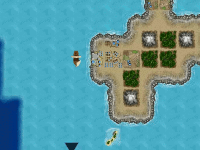 Be a pirate for cheap! - The Trese Brothers' delightfully complex retro strategy RPG Age of Pirates RPG is on sale for a few days. Sail your ship on the great seas of Laanbrakar during the age of sail, raiding, plundering and trading in search of riches, fame or infamy. Your fate is in your own hands, will you turn your broadsides against the enemy in the wars of the nations, pirate and maurade for your own gain, or haul great loads of cargo across the dangerous seas to turn a profit as a merchant. The team behind Star Traders rarely does discounts, go get to pirating while the pirating is good! (Android)
Be a pirate for cheap! - The Trese Brothers' delightfully complex retro strategy RPG Age of Pirates RPG is on sale for a few days. Sail your ship on the great seas of Laanbrakar during the age of sail, raiding, plundering and trading in search of riches, fame or infamy. Your fate is in your own hands, will you turn your broadsides against the enemy in the wars of the nations, pirate and maurade for your own gain, or haul great loads of cargo across the dangerous seas to turn a profit as a merchant. The team behind Star Traders rarely does discounts, go get to pirating while the pirating is good! (Android)
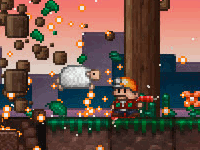 The great debate: Terraria vs. Junk Jack X - Two amazing sandbox games hit iOS this past week. Terraria is a mobile port of the full-blown PC game, while Junk Jack X is a sequel to the 2011 mobile release. The biggest question on everyone's mind: who would in in a fight, Superman or Goku? Just next to that, though, is which mobile sandbox game edges out the other. We don't want to influence you too much, but you can check out our Terraria (mobile) review and Junk Jack X review and decide for yourself. Or you can just buy Terraria on PC and Junk Jack X for mobile.
The great debate: Terraria vs. Junk Jack X - Two amazing sandbox games hit iOS this past week. Terraria is a mobile port of the full-blown PC game, while Junk Jack X is a sequel to the 2011 mobile release. The biggest question on everyone's mind: who would in in a fight, Superman or Goku? Just next to that, though, is which mobile sandbox game edges out the other. We don't want to influence you too much, but you can check out our Terraria (mobile) review and Junk Jack X review and decide for yourself. Or you can just buy Terraria on PC and Junk Jack X for mobile.
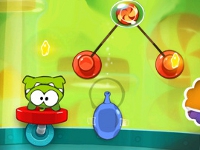 Free App of the Week: Cut the Rope - Each week on the iTunes App Store, Apple drops a single release down to the tasty price of "free". This week, that freebie is Cut the Rope, ZeptoLab's original rope slicing candy feeding arcade game. Way before there was Time Travel or Experiments, it was just you and Nom waiting for some candy. Grab it now while it's free for the first time in forever!
Free App of the Week: Cut the Rope - Each week on the iTunes App Store, Apple drops a single release down to the tasty price of "free". This week, that freebie is Cut the Rope, ZeptoLab's original rope slicing candy feeding arcade game. Way before there was Time Travel or Experiments, it was just you and Nom waiting for some candy. Grab it now while it's free for the first time in forever!
![]() Tommy Tuovinen's Lime Rick is one of those great little puzzle games that takes you by surprise with its simplicity. Using [WASD] or the [arrow] keys, guide your stone-faced little green avatar to the delicious red apple in each level. The catch? You can't jump or get over obstacles higher than one square, and if there's nothing to support you, you'll fall straight down. As you go, however, you extrude (ew) segments of your body behind you that you can stand on, enabling you to plan your path in a way that uses your own body in a gradually growing series of platforms to navigate the level and meet your goal. You can hit [R] to reload if you get stuck since you can't double-back on yourself and you can only go straight up for so many moves, or just [Z] to undo as many previous moves as you like.
Tommy Tuovinen's Lime Rick is one of those great little puzzle games that takes you by surprise with its simplicity. Using [WASD] or the [arrow] keys, guide your stone-faced little green avatar to the delicious red apple in each level. The catch? You can't jump or get over obstacles higher than one square, and if there's nothing to support you, you'll fall straight down. As you go, however, you extrude (ew) segments of your body behind you that you can stand on, enabling you to plan your path in a way that uses your own body in a gradually growing series of platforms to navigate the level and meet your goal. You can hit [R] to reload if you get stuck since you can't double-back on yourself and you can only go straight up for so many moves, or just [Z] to undo as many previous moves as you like.
With 38 levels, you may expect Lime Rick's concept to get old far before the game is over, but for those of us who enjoy a clever yet uncluttered mechanic and the simple pleasure of logical planning, this is a rare treat. It's not a game you can just bulldoze through, especially given how big a part planning a course will mean in winning most stages. Once the game start throwing in simple little twists that add to the difficulty like blocks you can push, you'll realise this is definitely not going to be as easy as it looks. It doesn't have a lot of bells and whistles, but then, Lime Rick is proof that you don't need any if you've got the brains to back it up.
![]() Shane Here's Dungeonfield is a sandbox-style RPG action adventure game that might feel a bit familiar if you've ever played Terraria. Plunked into a 2D, side-scrolling world randomly generated and populated with dangerous dungeons, and you'll need to smash, stab, dig, and otherwise destroy your environment to gather the supplies you'll need to craft and survive day-to-day. Turns out in a great battle, the kingdom was destroyed and all its people carted off to dungeons, and only you can save them. Right after you replant these tulips. And chase that kitty. And build a giant stone sign saying BUTTLORD and wait until your husband notices because that's how you show you care.
Shane Here's Dungeonfield is a sandbox-style RPG action adventure game that might feel a bit familiar if you've ever played Terraria. Plunked into a 2D, side-scrolling world randomly generated and populated with dangerous dungeons, and you'll need to smash, stab, dig, and otherwise destroy your environment to gather the supplies you'll need to craft and survive day-to-day. Turns out in a great battle, the kingdom was destroyed and all its people carted off to dungeons, and only you can save them. Right after you replant these tulips. And chase that kitty. And build a giant stone sign saying BUTTLORD and wait until your husband notices because that's how you show you care.
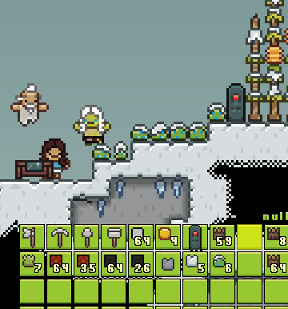 You can generate any size world you want, and choose to play to rescue and rebuild, or simply enjoy creative mode. If you've never played a game like this, you might want to run through the tutorial to learn the basics first. You move with [WASD], use [1] and [2] to cycle between available items, and click on most things to interact by hitting them. If the object, anything from the ground to trees and more, can be destroyed, you can pick up the remains by walking over it and using them as ingredients to craft other helpful items. Though you start out with just the basics, as you explore and find new materials, you can make a wide variety of items, from simple decorations to bling out the fortress I'm sure you plan on building, to tunnels you can link up to travel instantly anywhere in your newly generated world. Die? Don't worry. You'll just respawn at your last save/load point.
You can generate any size world you want, and choose to play to rescue and rebuild, or simply enjoy creative mode. If you've never played a game like this, you might want to run through the tutorial to learn the basics first. You move with [WASD], use [1] and [2] to cycle between available items, and click on most things to interact by hitting them. If the object, anything from the ground to trees and more, can be destroyed, you can pick up the remains by walking over it and using them as ingredients to craft other helpful items. Though you start out with just the basics, as you explore and find new materials, you can make a wide variety of items, from simple decorations to bling out the fortress I'm sure you plan on building, to tunnels you can link up to travel instantly anywhere in your newly generated world. Die? Don't worry. You'll just respawn at your last save/load point.
As fun and cute as Dungeonfield is, however, definitely has its frustrating... kinks. Destroying a tree base with anything other than an axe will render the rest of the tree magically untouchable, floating in midair, for instance, and you can traverse enormous bodies of water simply by running across the surface and holding down the jump key like a mad rabbit. More annoyingly, however, Swapping between items with [1] and [2] gets tedious when you have a lot of inventory to cycle through, and although the game tells you that you can use the mouse scrollwheel to cycle through items (which is true), it also makes the entire page scroll up and down, rendering it somewhat useless. Still, though the game could use a bit more polish and user-friendliness, it's still a fun little browser sandbox gem with enormous potential. The graphics are adorable, even when those same adorable monsters are chewing your face off, and exploring and saving people will keep you busy for quite some time. It's a simplified sandbox with a goal (namely, the rescuing of trapped folks), which is nice and casual, perfect for an afternoon, and if you don't want the added pressure of saving the kingdom, Creative Mode will let you explore with few real dangers through the addition of a whopping ten thousand hitpoints. Smashing, bashing, block-building adventuring in your browser? That's awwright by me.
![]() It's a beautiful sunny day as three cats head out for a walk along the seashore. When they see a large ship in the water, they do what naturally any creature made of curiosity would do: sneak on board to see what it's all about. This, of course, leads to being stuck behind a host of locked doors and a very pressing need to Escape from the Passenger Ship. Which also means you'll join the feline trio, solving codes and putting items to creative uses in this very ameowsing escape adventure by Choko Chai.
It's a beautiful sunny day as three cats head out for a walk along the seashore. When they see a large ship in the water, they do what naturally any creature made of curiosity would do: sneak on board to see what it's all about. This, of course, leads to being stuck behind a host of locked doors and a very pressing need to Escape from the Passenger Ship. Which also means you'll join the feline trio, solving codes and putting items to creative uses in this very ameowsing escape adventure by Choko Chai.
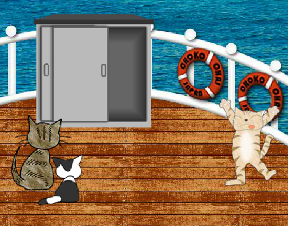 Choose your language preference—English or Japanese—before starting the voyage, then enjoy the opening story as our adorable hosts find their way into yet another sticky situation (they do tend to get into troublesome circumstances quite often, don't they?) Then click around the room to explore, following either a changing cursor or directional arrows to look around corners, into crevices, and travel along corridors. Items you pick up can be examined with the "About" button or highlighted and used with a click. Don't forget the three cats, who also want to help out here and there: where needed, click on the kitty snuggled in the lower left corner to send the characters on stage and then click on each to put them to action.
Choose your language preference—English or Japanese—before starting the voyage, then enjoy the opening story as our adorable hosts find their way into yet another sticky situation (they do tend to get into troublesome circumstances quite often, don't they?) Then click around the room to explore, following either a changing cursor or directional arrows to look around corners, into crevices, and travel along corridors. Items you pick up can be examined with the "About" button or highlighted and used with a click. Don't forget the three cats, who also want to help out here and there: where needed, click on the kitty snuggled in the lower left corner to send the characters on stage and then click on each to put them to action.
Although most puzzles are straight-forward, one measurements task might leave some players fumbling. This may be due, in part, to a frustrating pixel hunt moment where it's possible to miss a needed item. Ergo, when stuck, just recall the old escaper's adage about looking around every bend and don't let the lack of depth in the 2D design fool you. Despite those occasional toe stubs in navigation, it's too hard to not smile at the three cats' charm and personality. With the cats' entertaining antics and the numerous areas on ship to explore, this seafaring adventure hits the mark in fun and merits an enthusiastic recommendation from yours truly.
![]() With the Minecraft and Terraria and other sandbox games going strong, Junk Jack X from Pixbits arrives with a lot of great ideas in tow. It's a sequel to the 2011 Junk Jack release that adds a number of new features and improvements, including multiplayer support for both online and offline play, creative and adventure modes, Retina graphics, and thousands of items to find, treasures to uncover, and objects to be built. It's one of the most full-featured sandbox games on any mobile device and will easily keep you glued to your iOS device for hours on end.
With the Minecraft and Terraria and other sandbox games going strong, Junk Jack X from Pixbits arrives with a lot of great ideas in tow. It's a sequel to the 2011 Junk Jack release that adds a number of new features and improvements, including multiplayer support for both online and offline play, creative and adventure modes, Retina graphics, and thousands of items to find, treasures to uncover, and objects to be built. It's one of the most full-featured sandbox games on any mobile device and will easily keep you glued to your iOS device for hours on end.
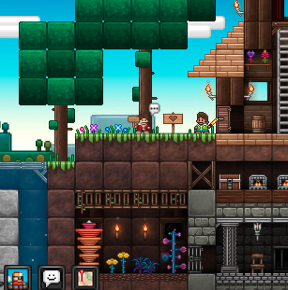 The basic idea behind Junk Jack X will be familiar to just about everyone now. You're dropped in a unique 2D world made out of breakable blocks, complete with individual biomes, living creatures, monsters, underground caverns, and plenty of treasures to find. Tap the screen to control your character, then tap to hit/harvest nearby blocks. Placing blocks is done in much the same fashion. Inventory and item management are handled with similar simplicity, allowing you to see and make use of all of the various materials you've picked up during your adventures. By building crafting structures you can eventually make weapons, armor, and more complex items, all of which come in handy when it gets dark and the enemies come a-knockin'.
The basic idea behind Junk Jack X will be familiar to just about everyone now. You're dropped in a unique 2D world made out of breakable blocks, complete with individual biomes, living creatures, monsters, underground caverns, and plenty of treasures to find. Tap the screen to control your character, then tap to hit/harvest nearby blocks. Placing blocks is done in much the same fashion. Inventory and item management are handled with similar simplicity, allowing you to see and make use of all of the various materials you've picked up during your adventures. By building crafting structures you can eventually make weapons, armor, and more complex items, all of which come in handy when it gets dark and the enemies come a-knockin'.
Analysis: There's a very big debate amongst iOS users as to which game is superior: the mobile port of Terraria, or Junk Jack X. On the surface, both games are 2D sidescrollers and both involve copious amounts of digging, block breaking, crafting, and creation. When you get down to the details, however, a few features help Junk Jack X pull ahead by a few pixels. The most obvious of these is multiplayer: Junk Jack's got it, Terraria doesn't. In a sandbox world where gathering resources and working on buildings is just as important as adventuring, having other people around to work with can make or break the experience. Junk Jack X uses Game Center to quite seamlessly integrate games with your friends, and you can even join in four player local games!
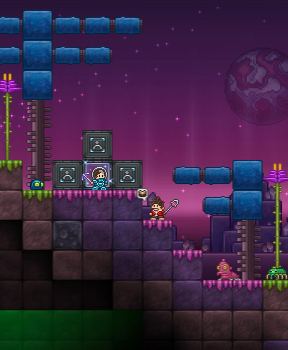 One other piece of information that floats to the top is that Terraria was originally a PC game ported to the mobile platform. Despite having some awesome controls on a touch screen, you can still get a slight whiff of the keyboard and mouse world the game grew up in. Junk Jack X has always been a portable game, built from the ground up for touch-based digging. Even if Terraria does get its own multiplayer mode in the future, Junk Jack X just barely edges it out. If the two were competing on the PC platform, however, we think the results might be reversed.
One other piece of information that floats to the top is that Terraria was originally a PC game ported to the mobile platform. Despite having some awesome controls on a touch screen, you can still get a slight whiff of the keyboard and mouse world the game grew up in. Junk Jack X has always been a portable game, built from the ground up for touch-based digging. Even if Terraria does get its own multiplayer mode in the future, Junk Jack X just barely edges it out. If the two were competing on the PC platform, however, we think the results might be reversed.
Debates and such aside, Junk Jack X really is a full-featured and capable sandbox game. It's packed with gorgeous artwork and thoroughly tested controls, gameplay mechanics, and crafting recipes. If ever you wanted to lose yourself in a world of digging and building, this is the game to do it in!
NOTE: This game was played and reviewed on the iPad 3. Game was available in the North American market at the time of publication, but may not be available in other territories. Please see individual app market pages for purchasing info.
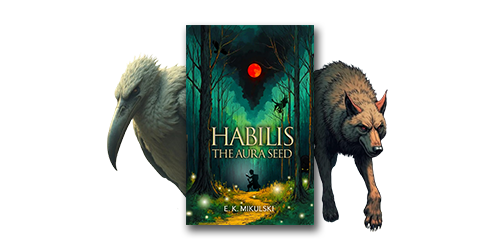



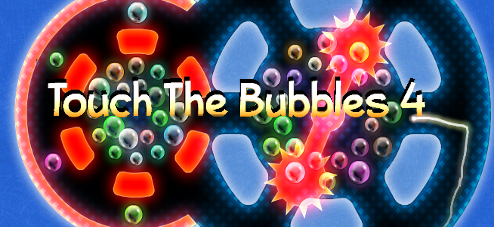

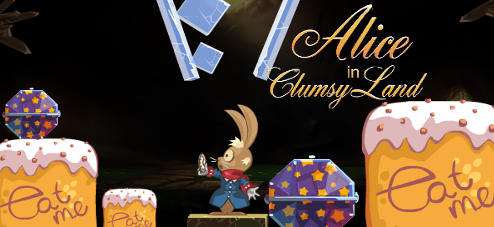
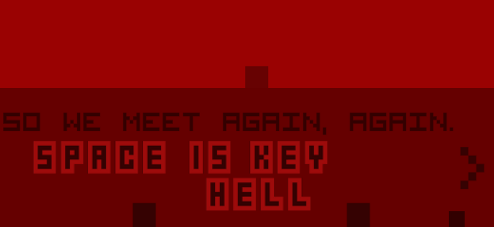
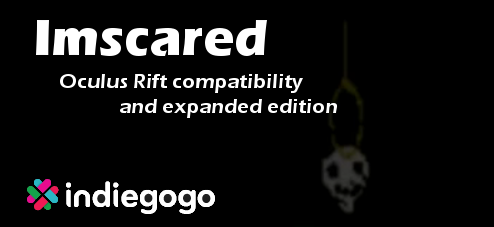

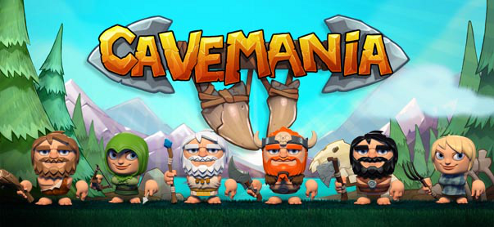
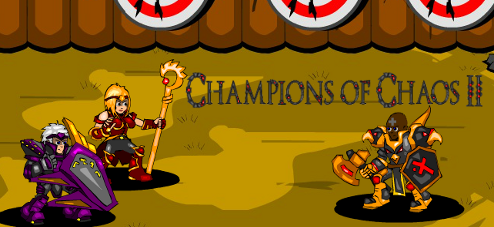
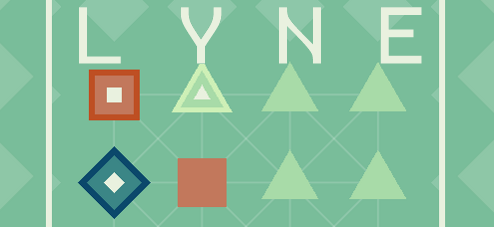

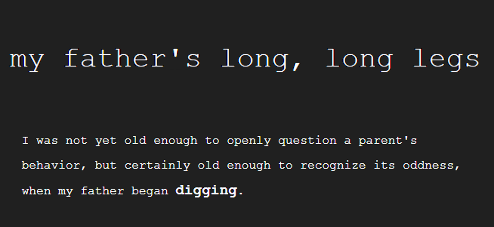
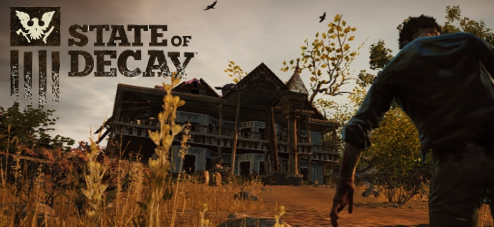
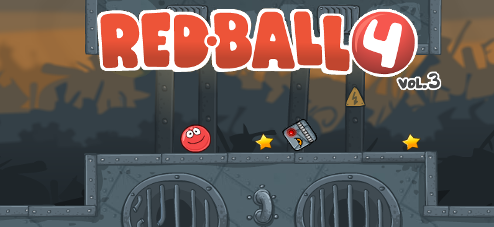
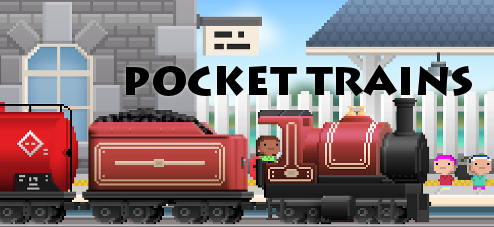
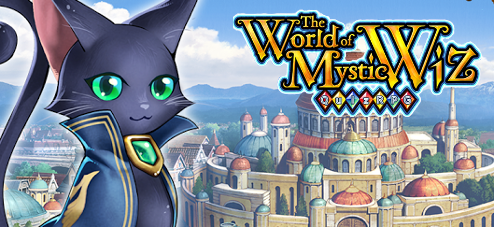
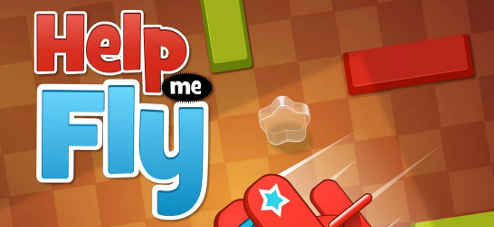
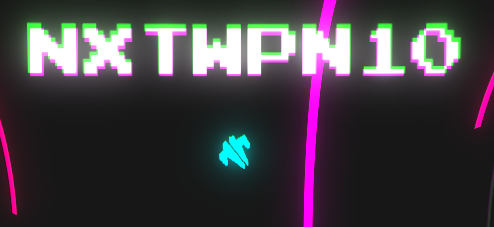
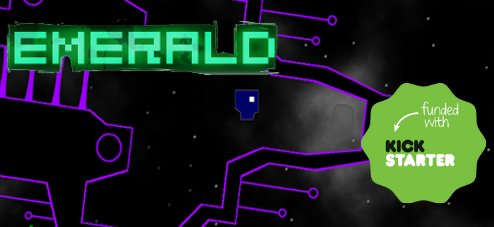
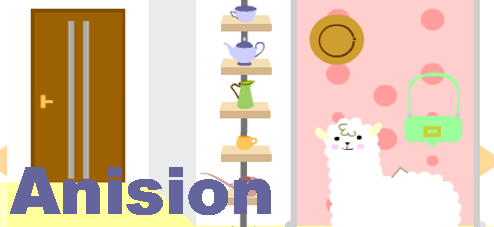
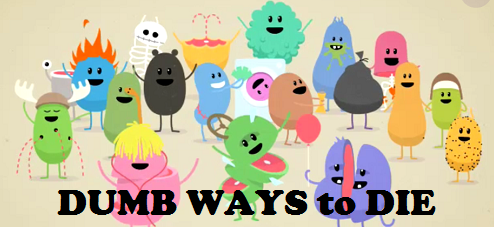

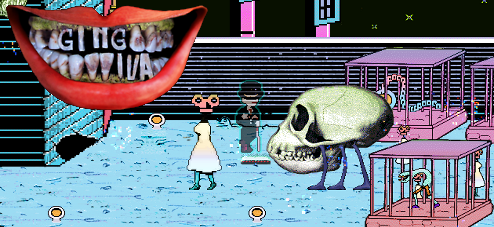
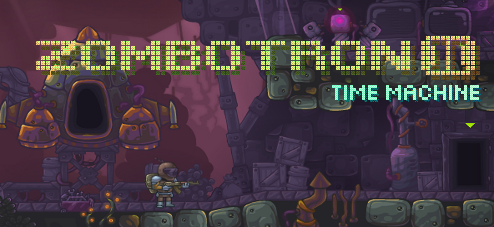
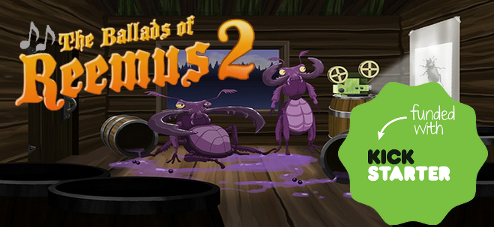
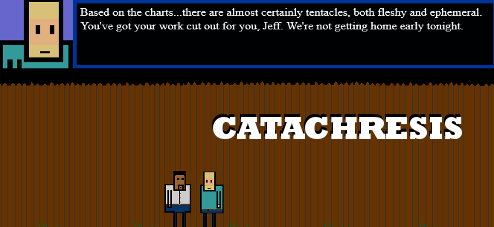
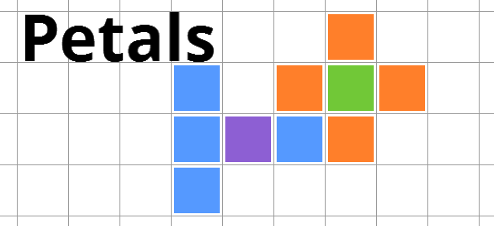
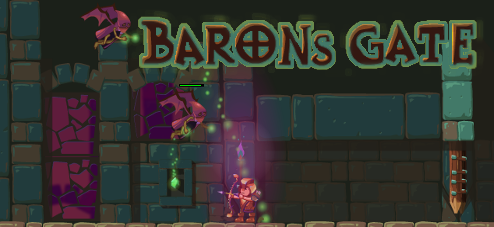
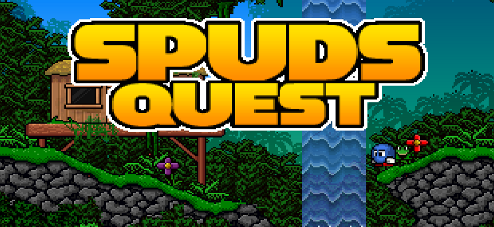
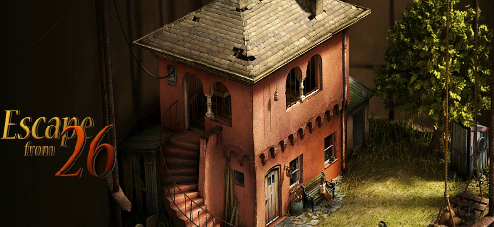
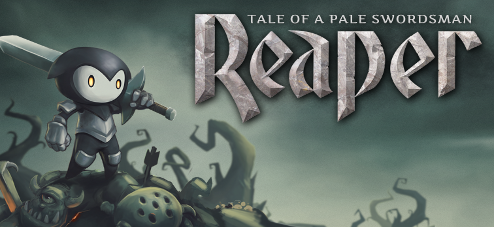

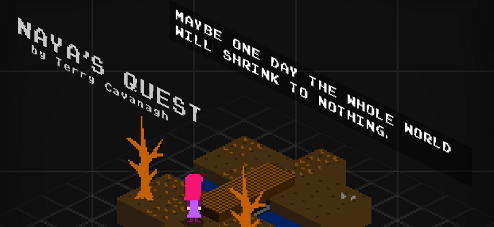
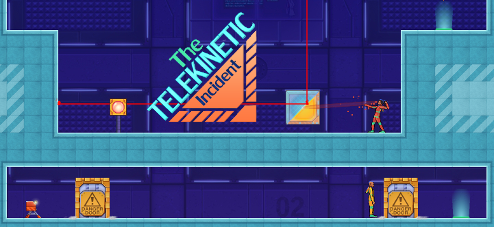

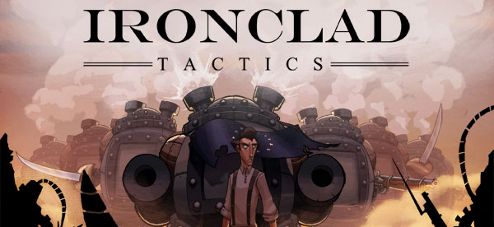
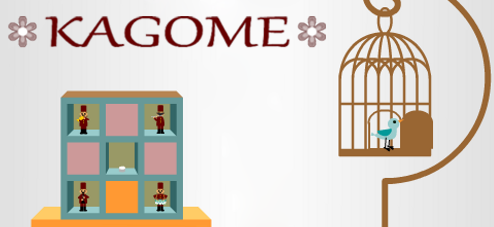
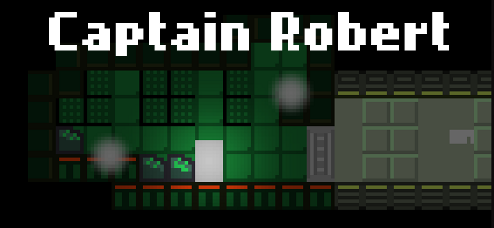
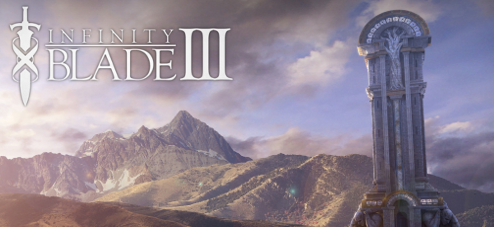
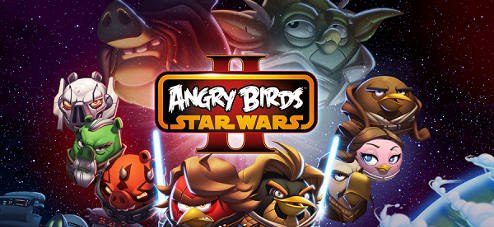
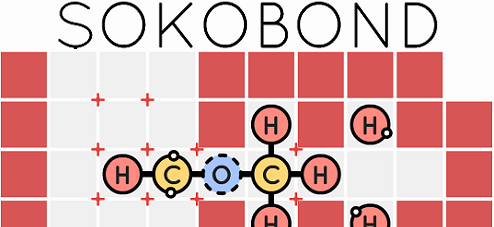
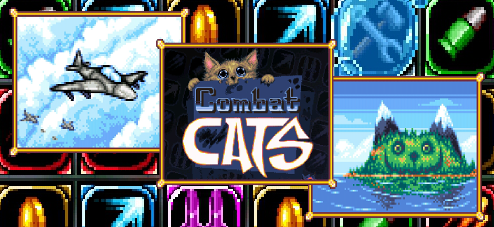
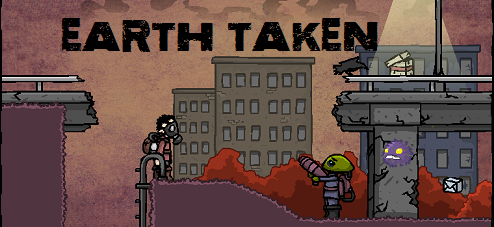
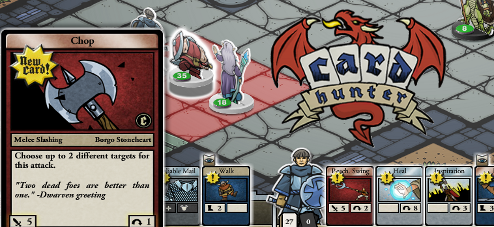
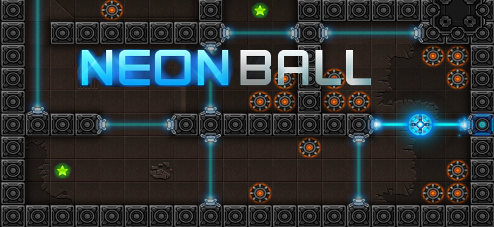
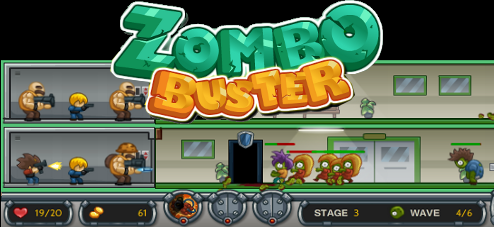
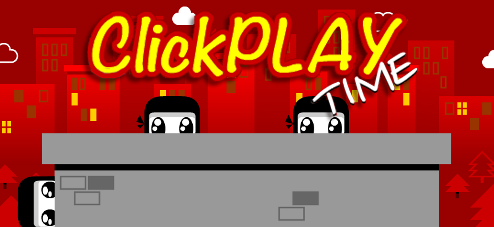
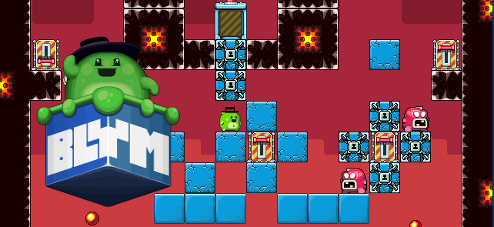
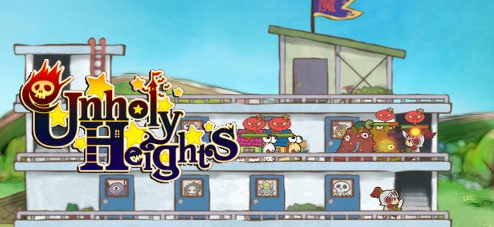

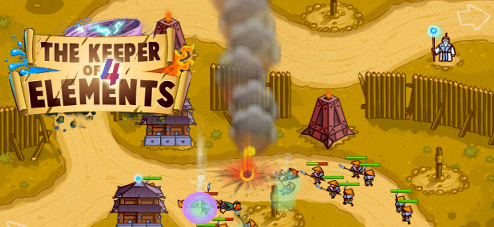
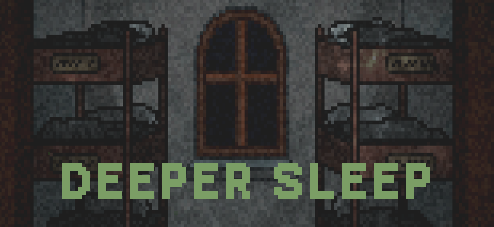
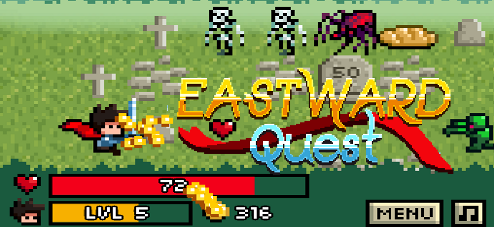
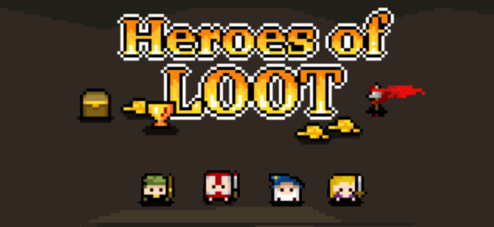
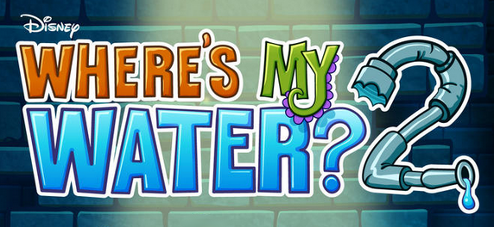
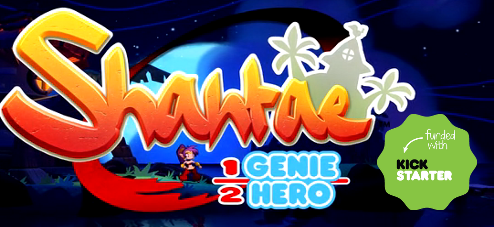
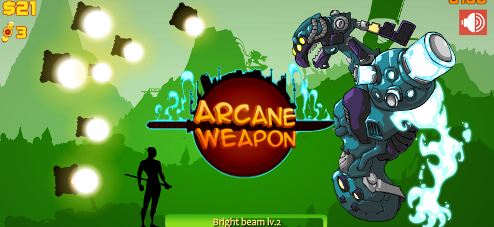
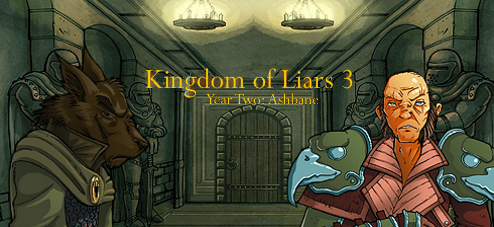
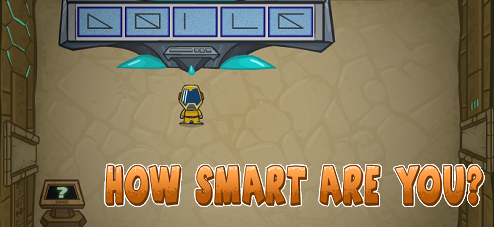

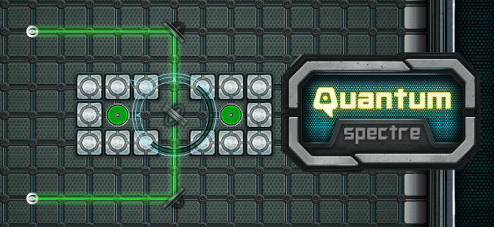
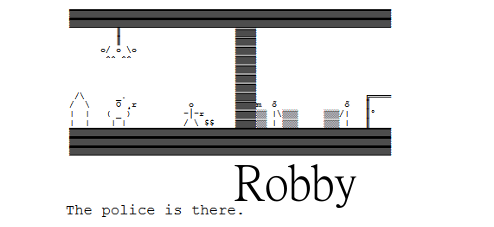
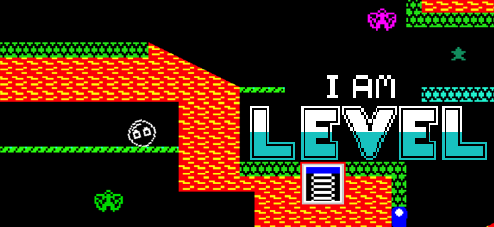
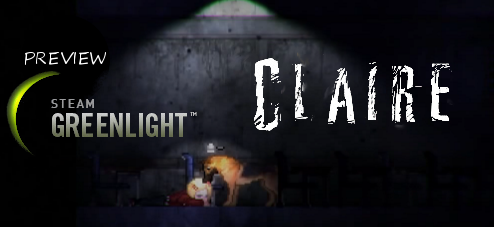
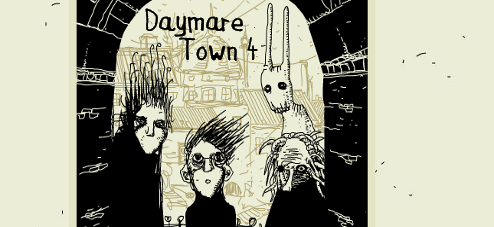
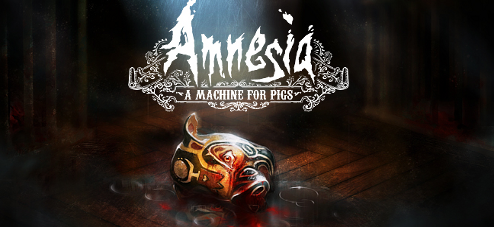
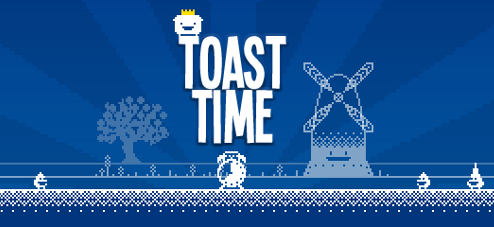
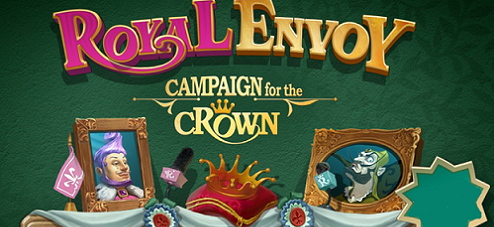

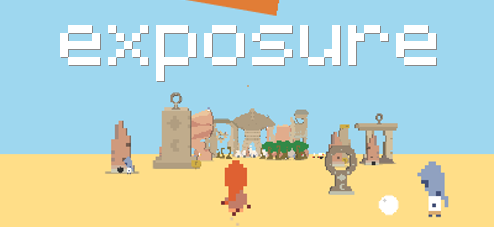
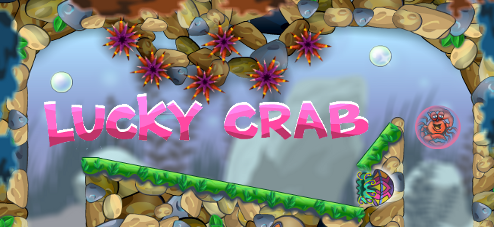
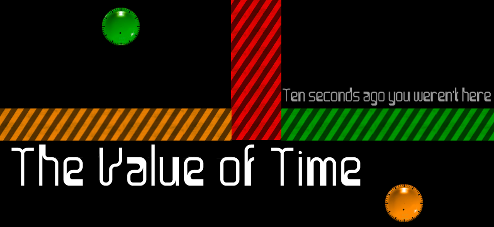
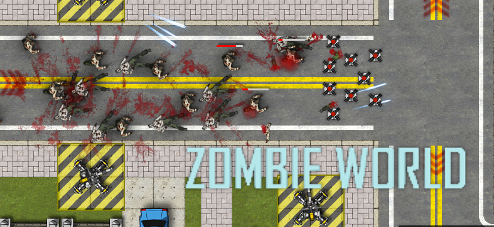
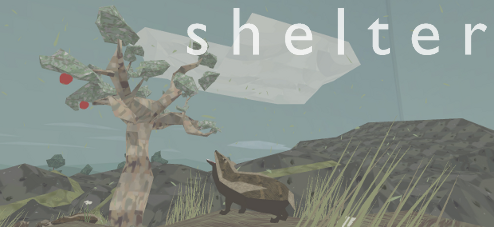
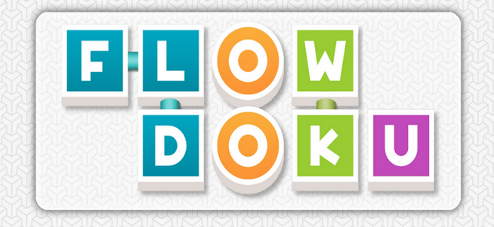
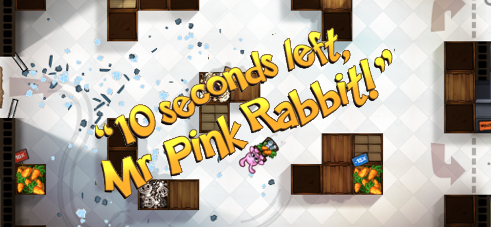
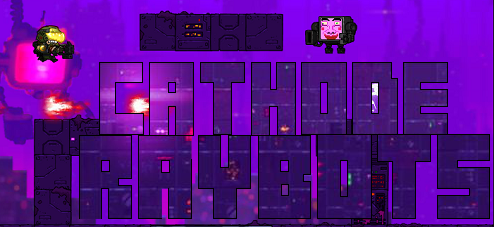
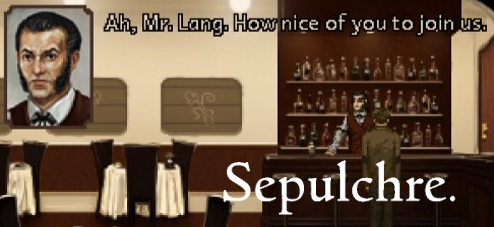
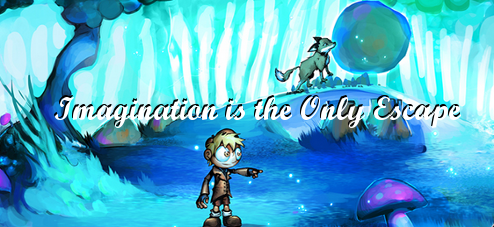
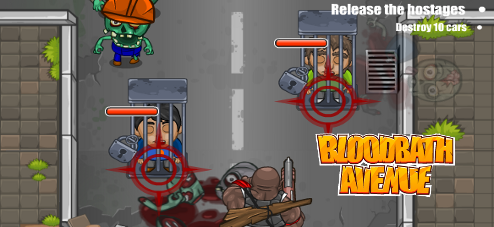
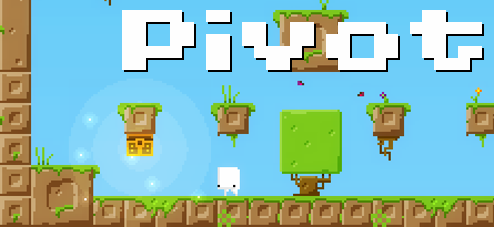
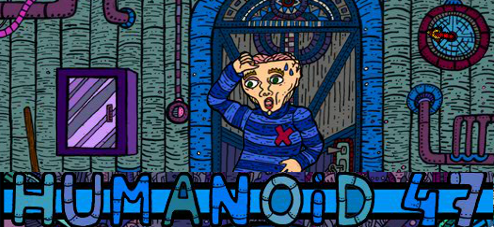
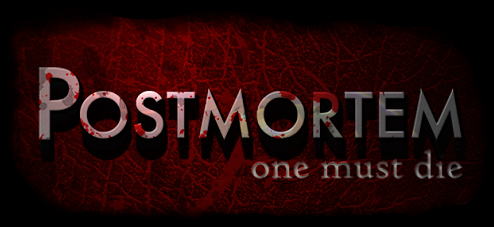
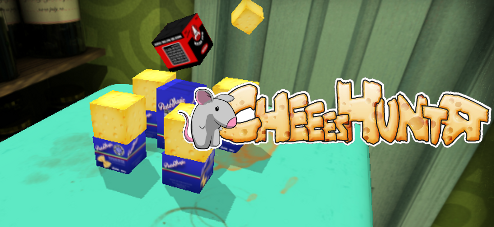
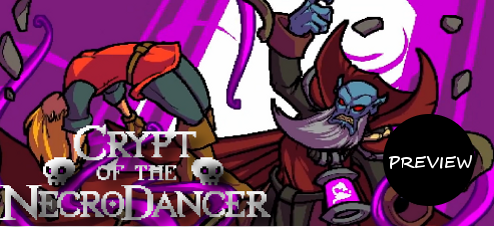
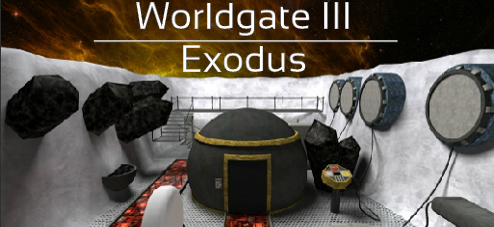
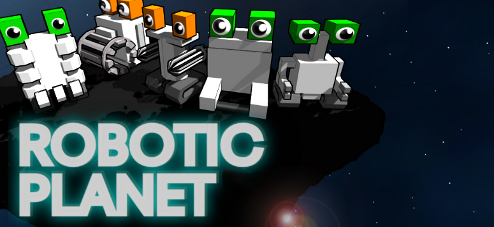
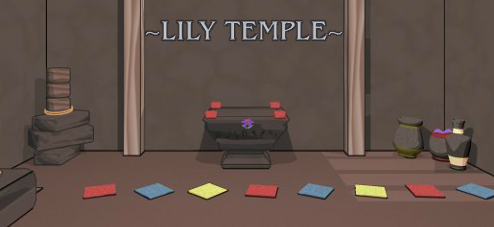
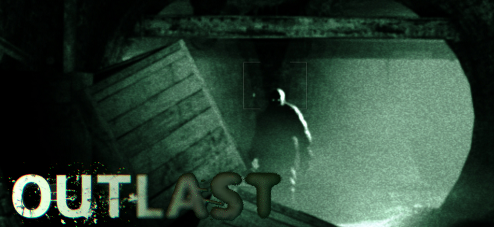
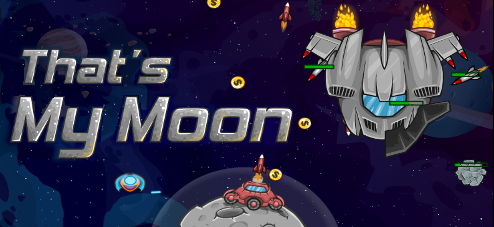
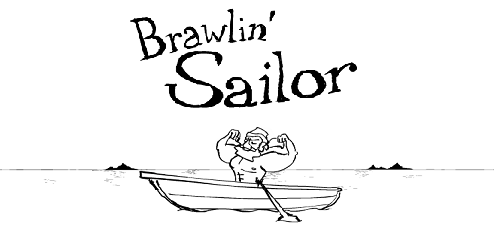
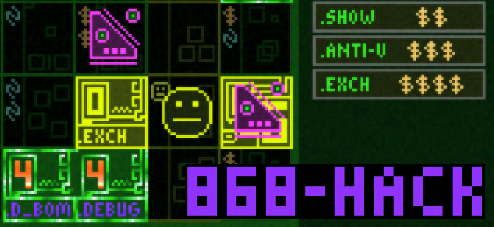
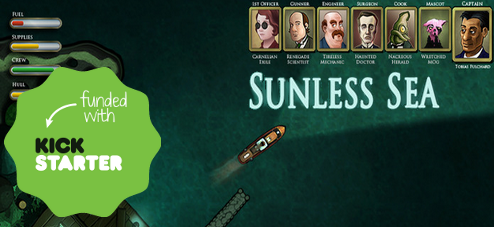
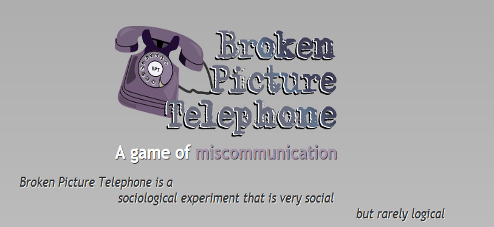
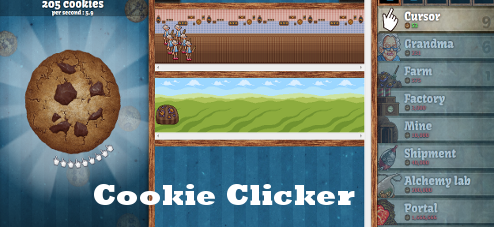

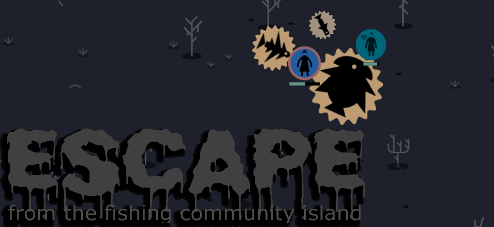
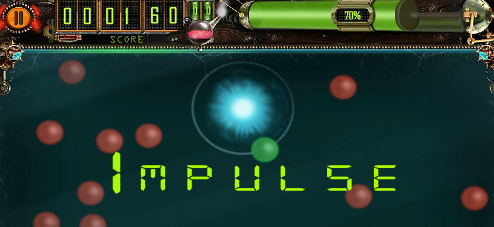
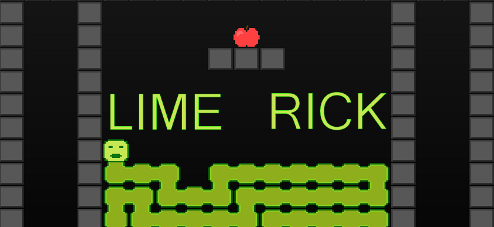
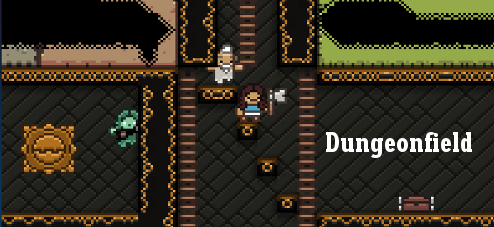

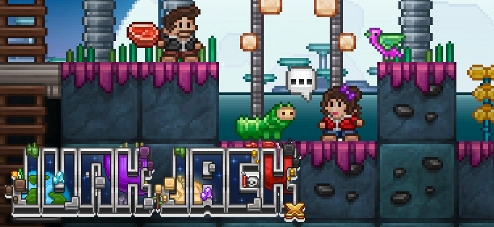

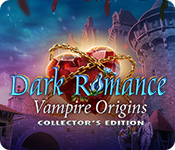
Recent Comments